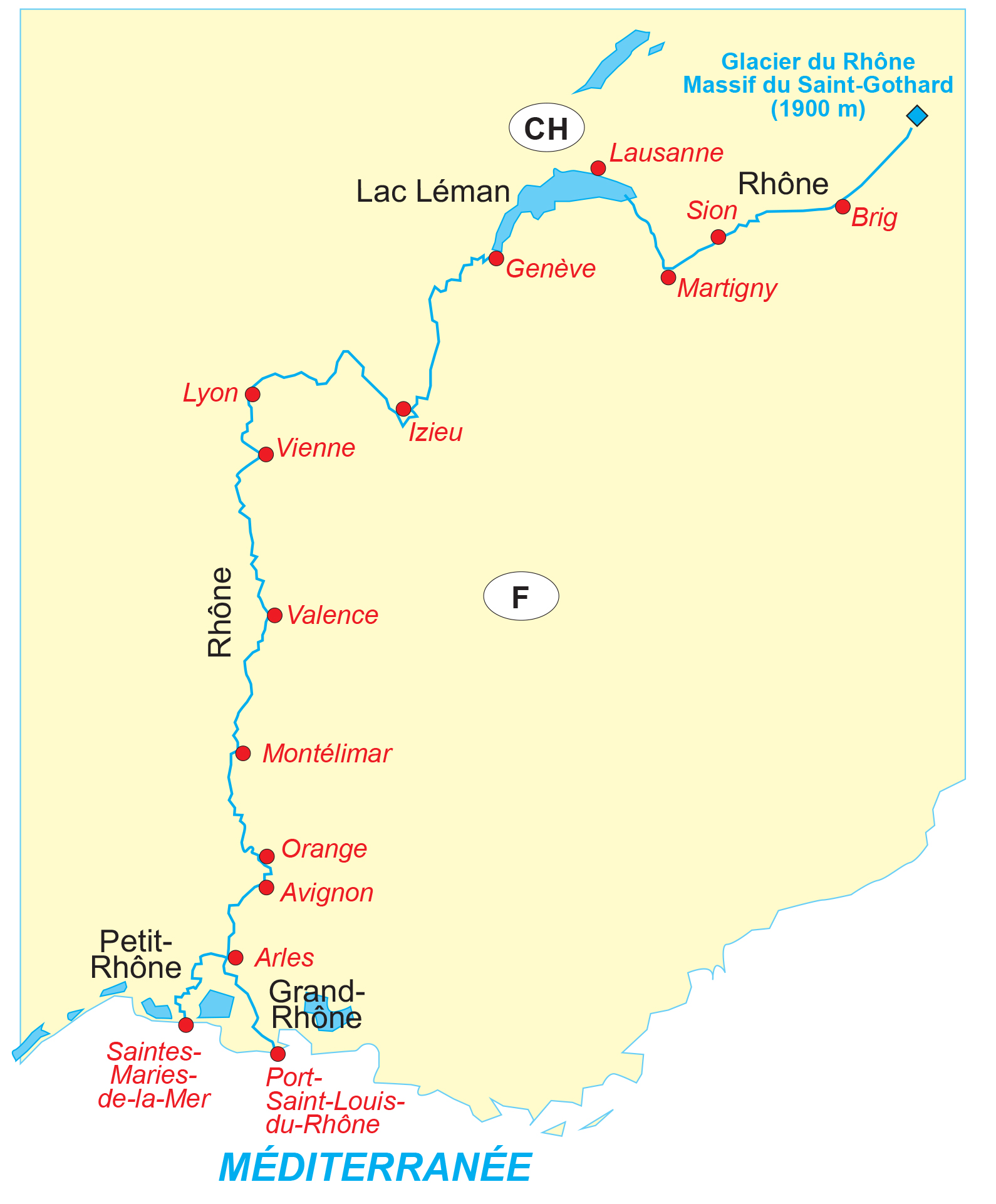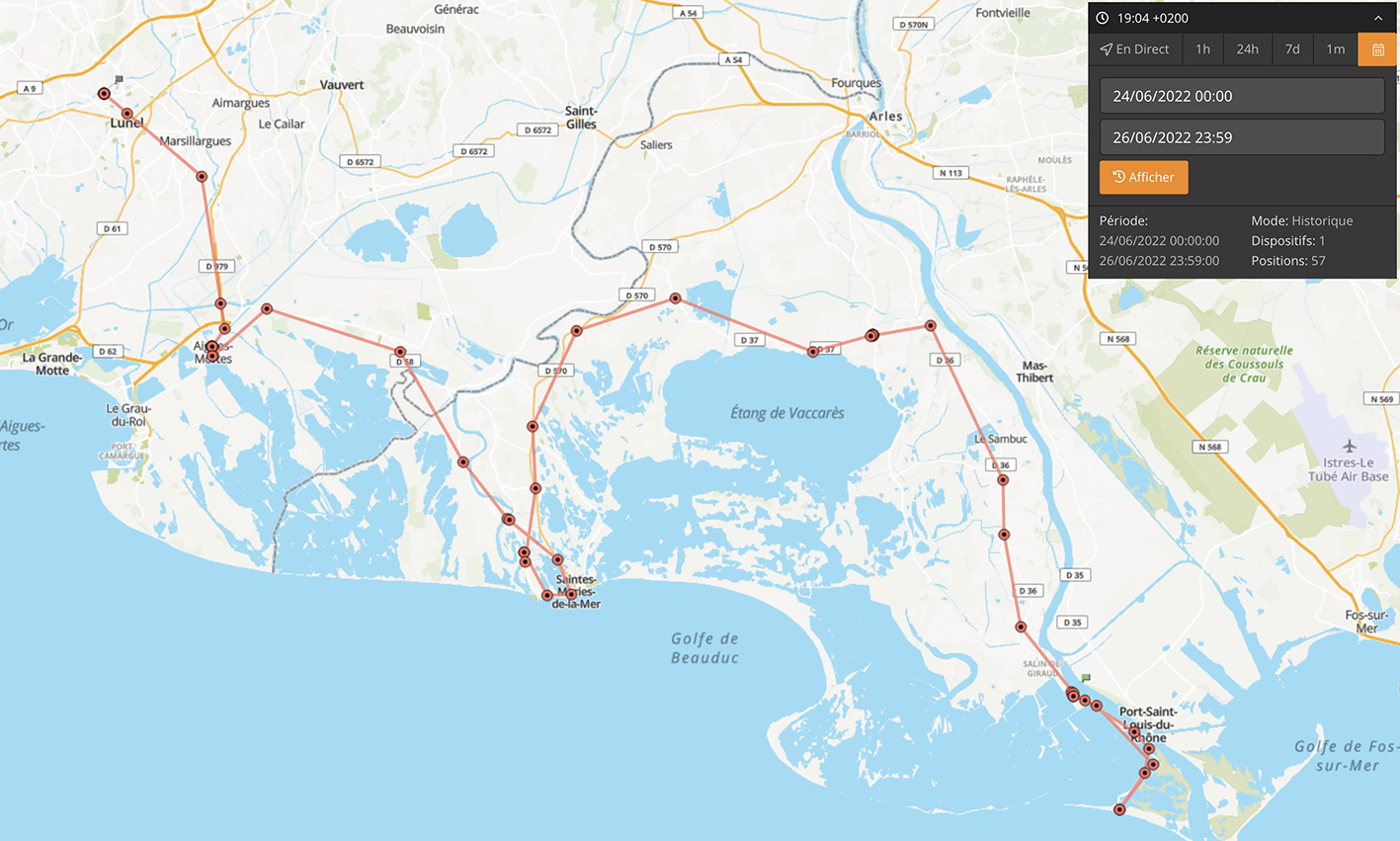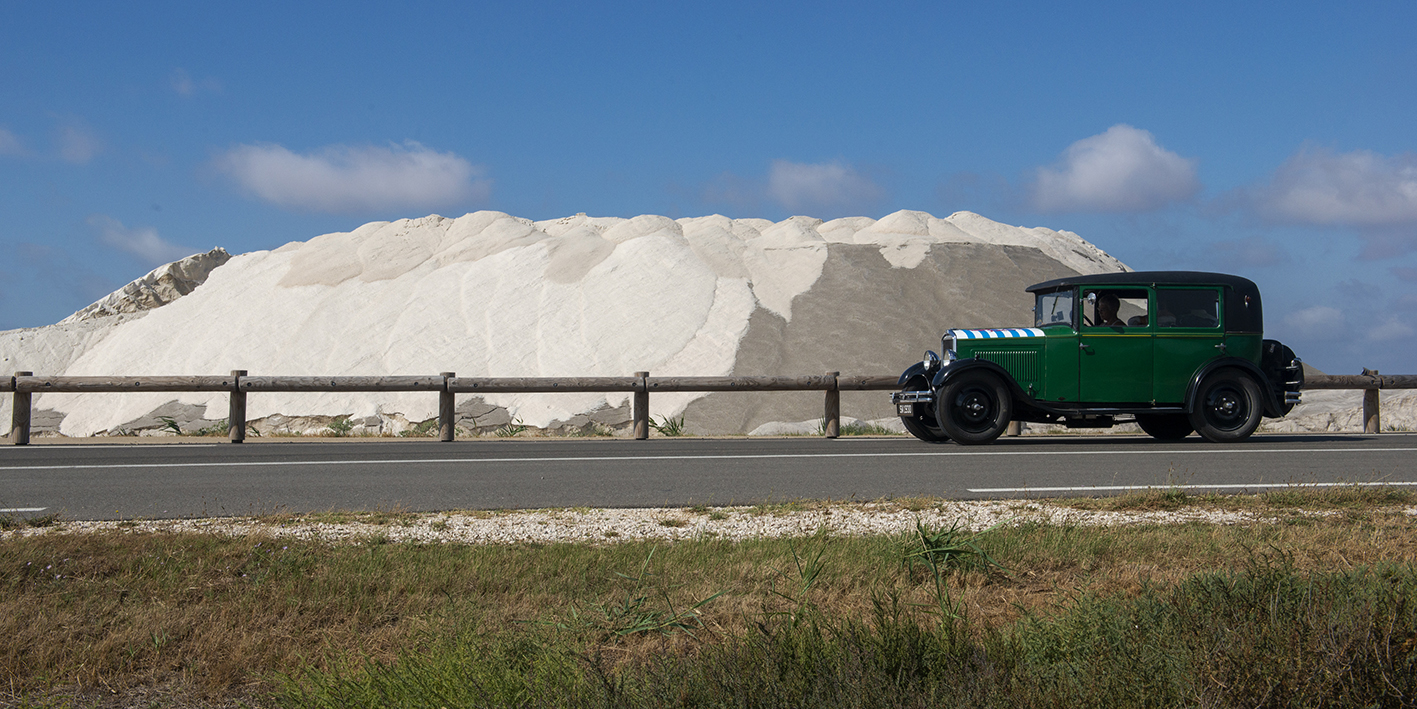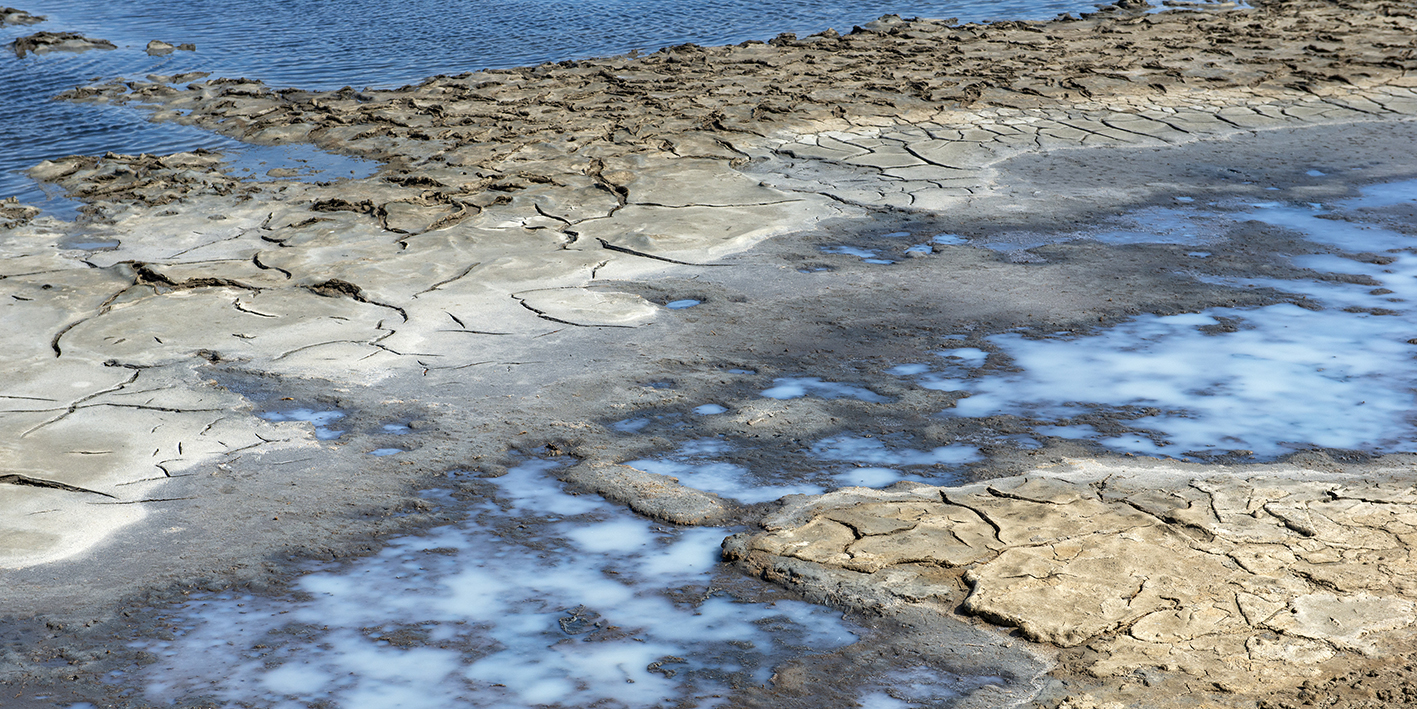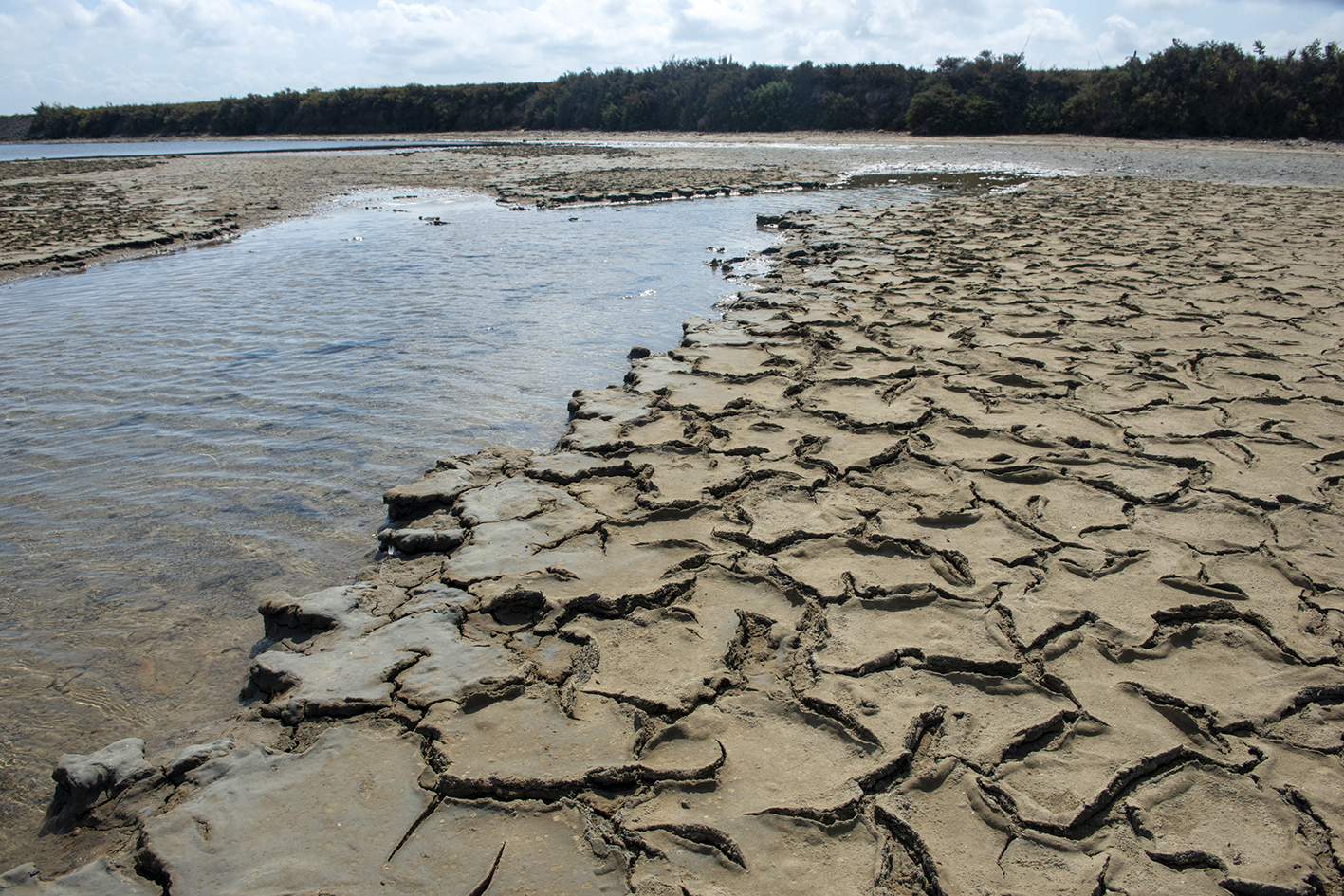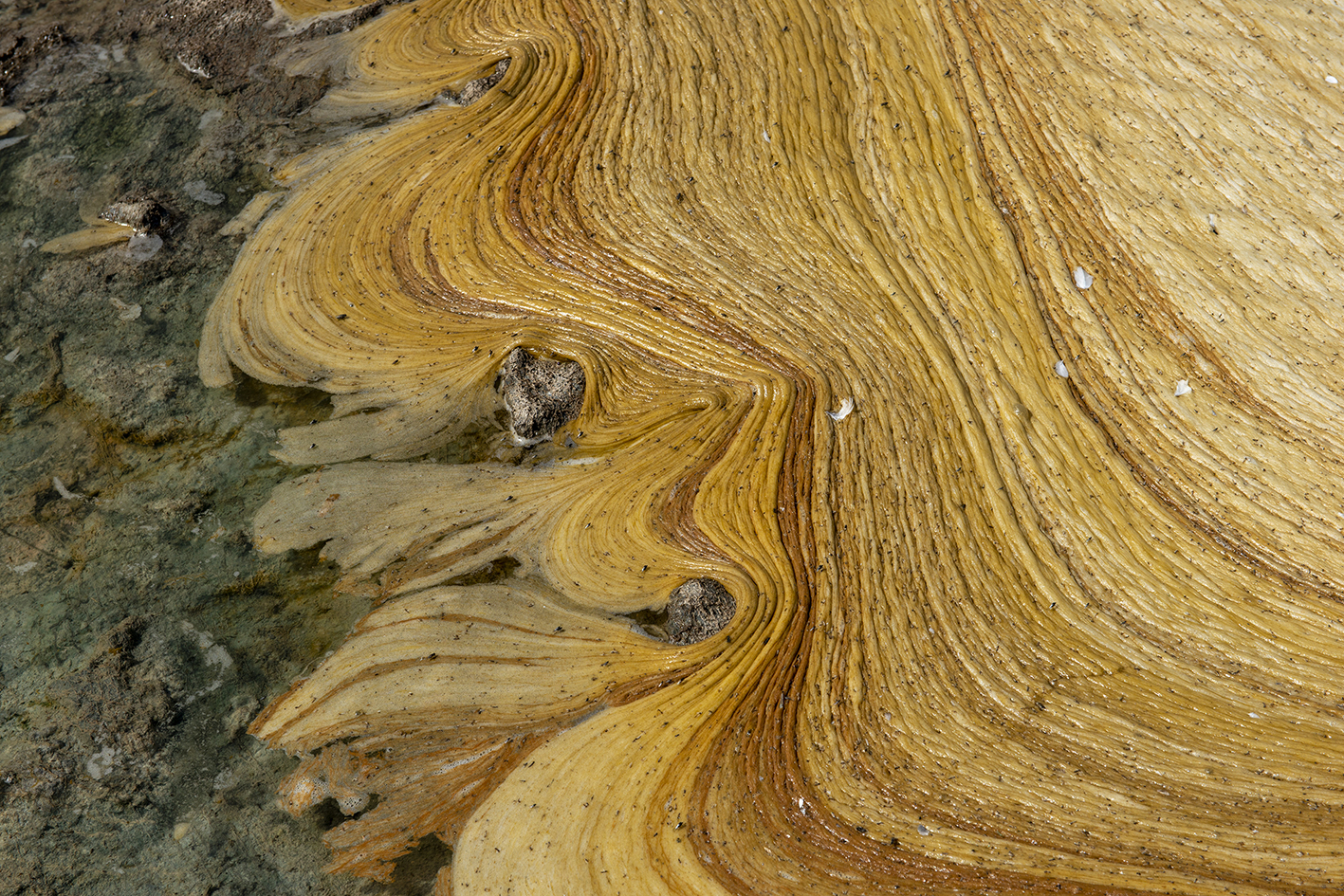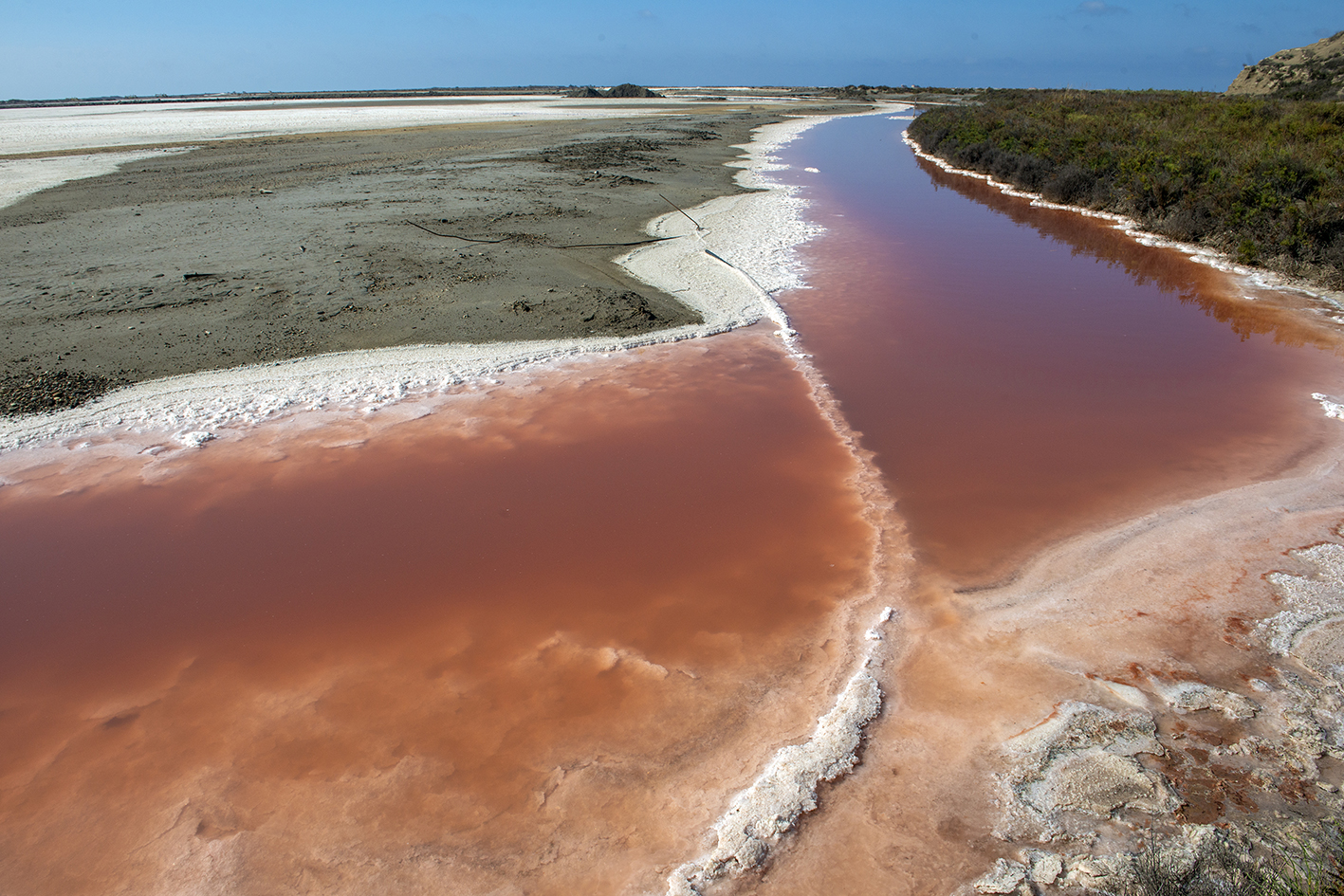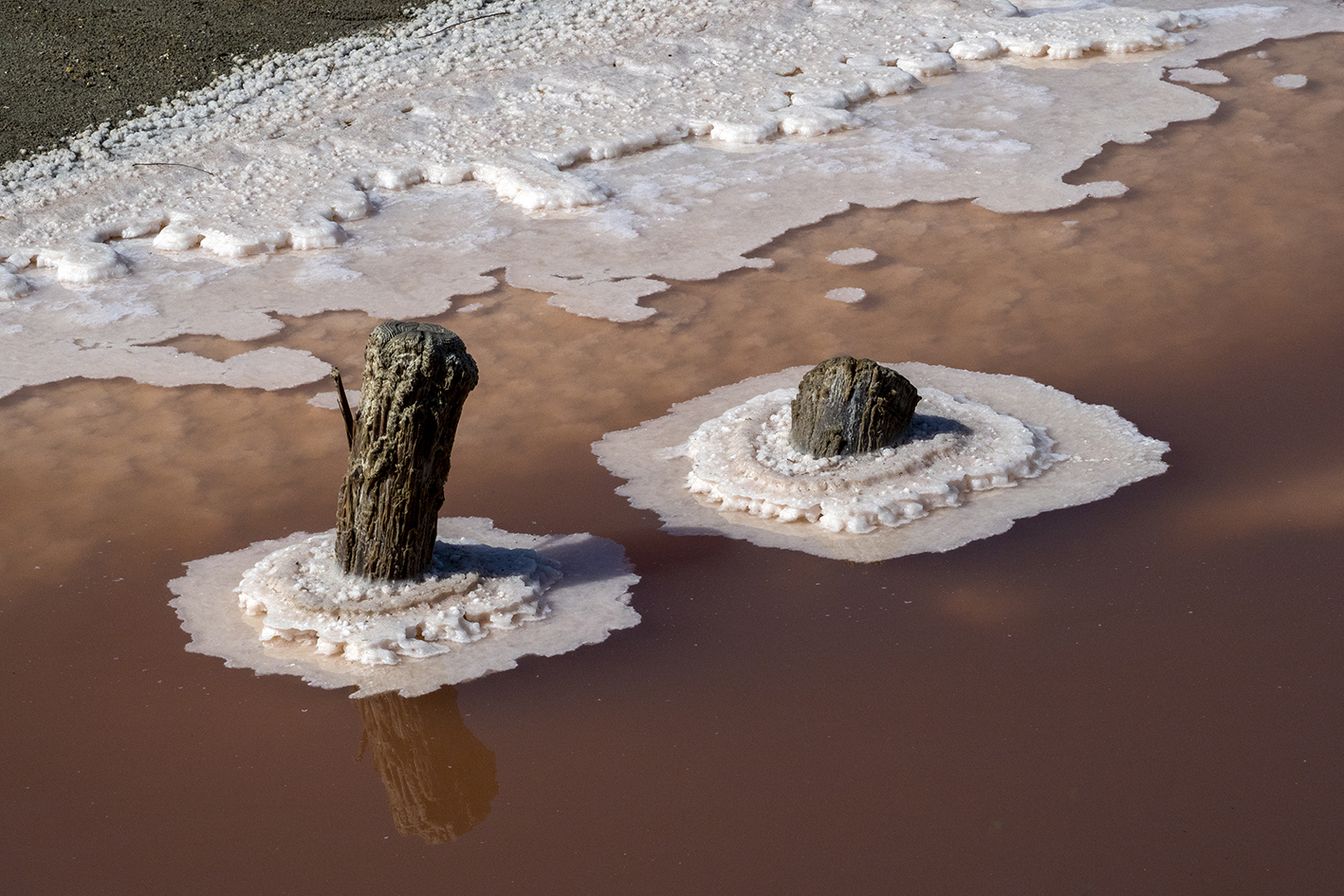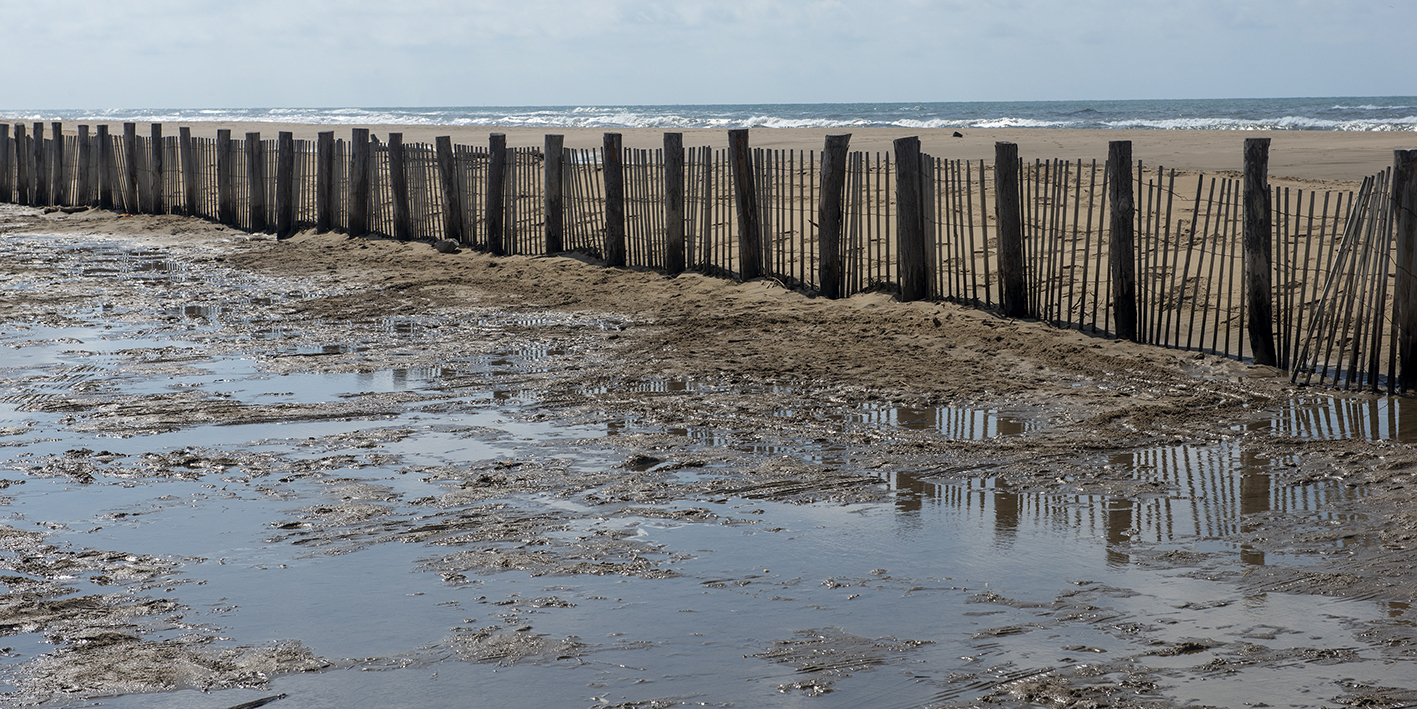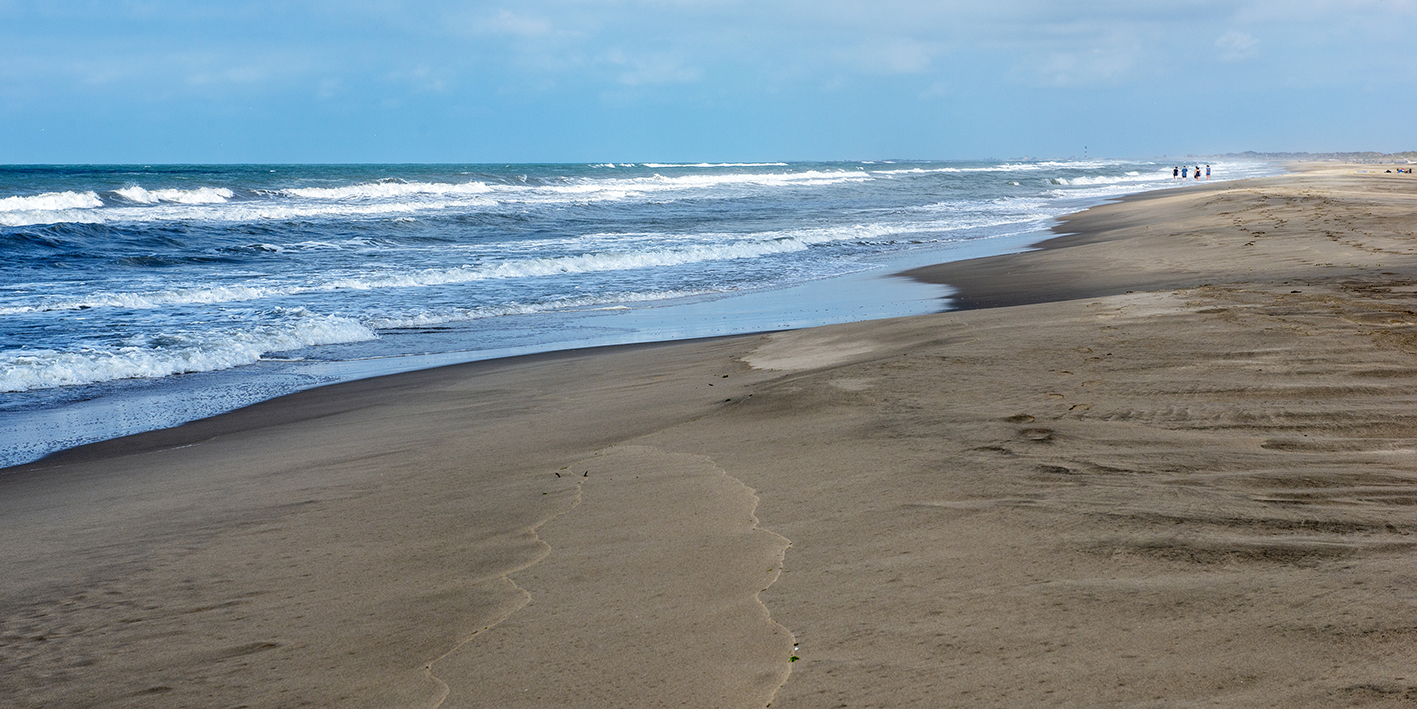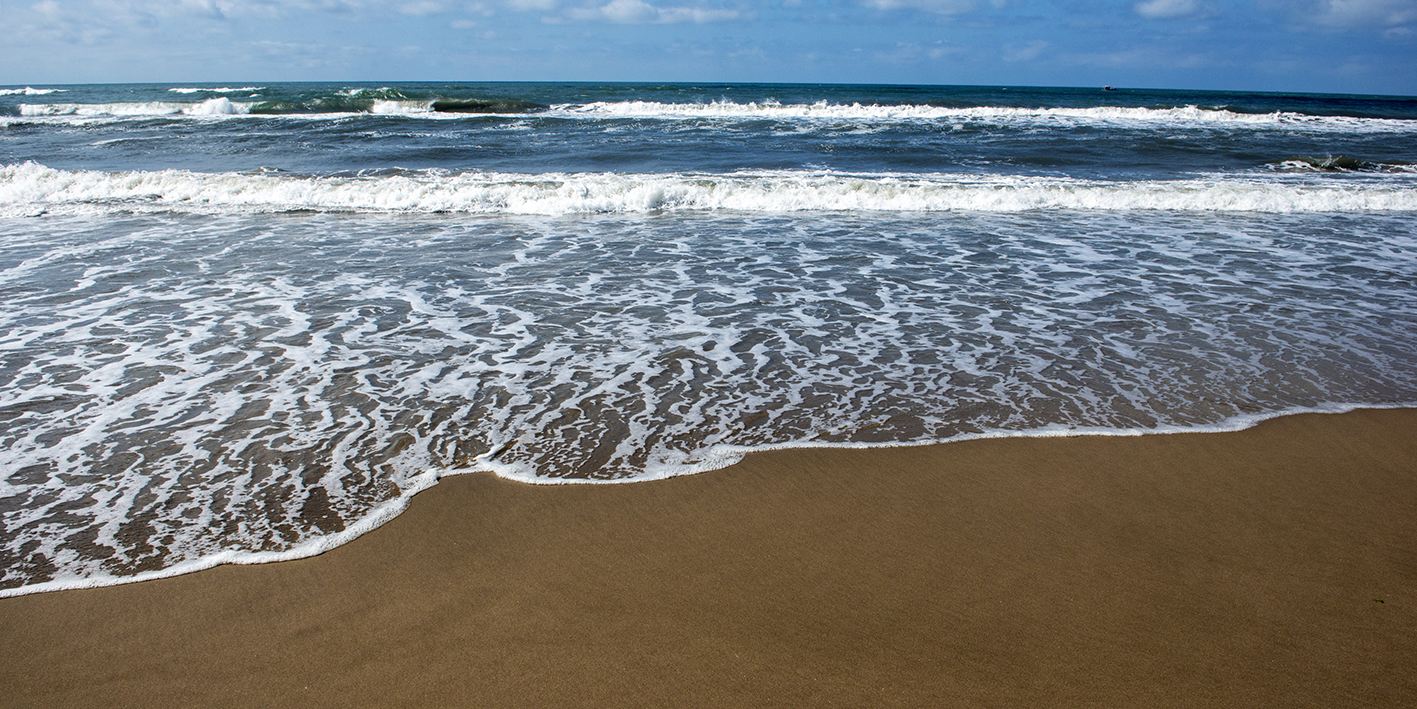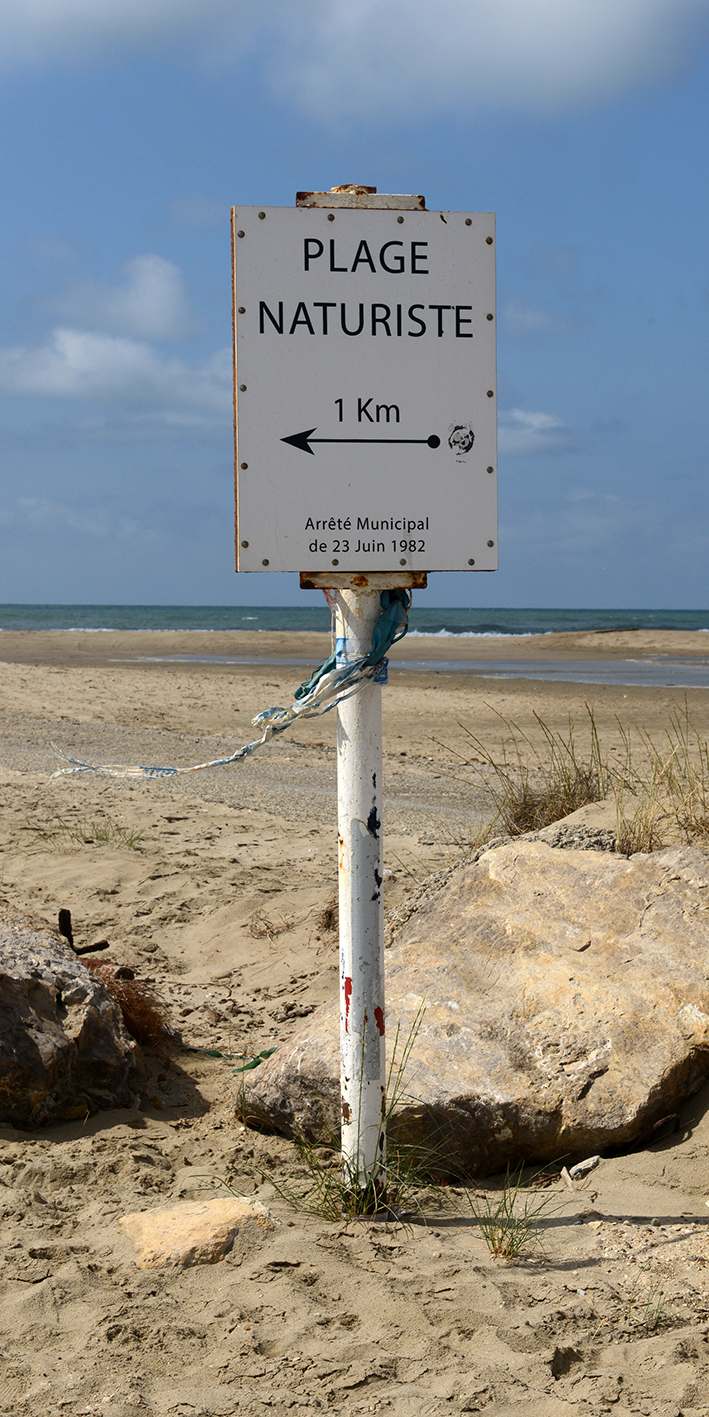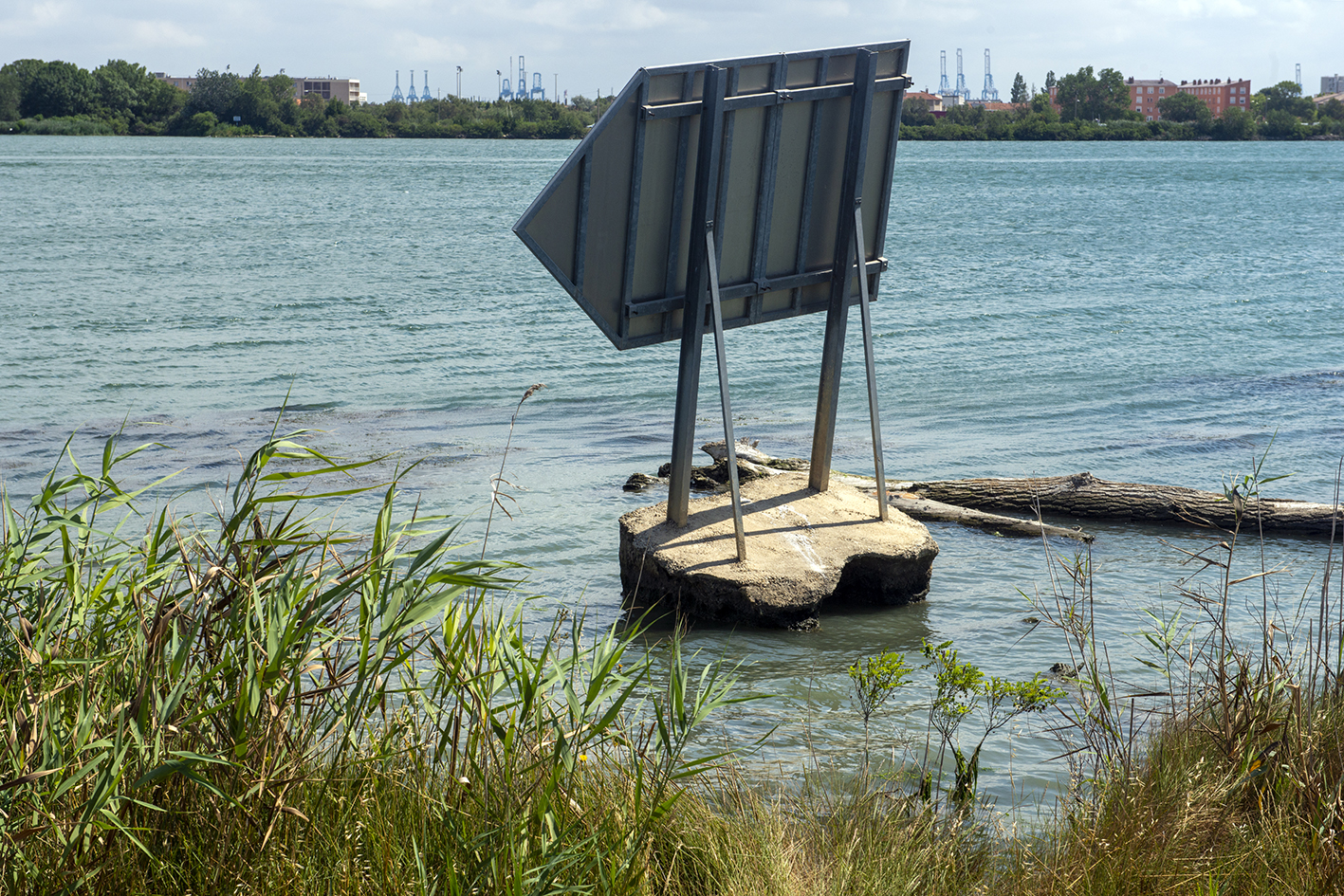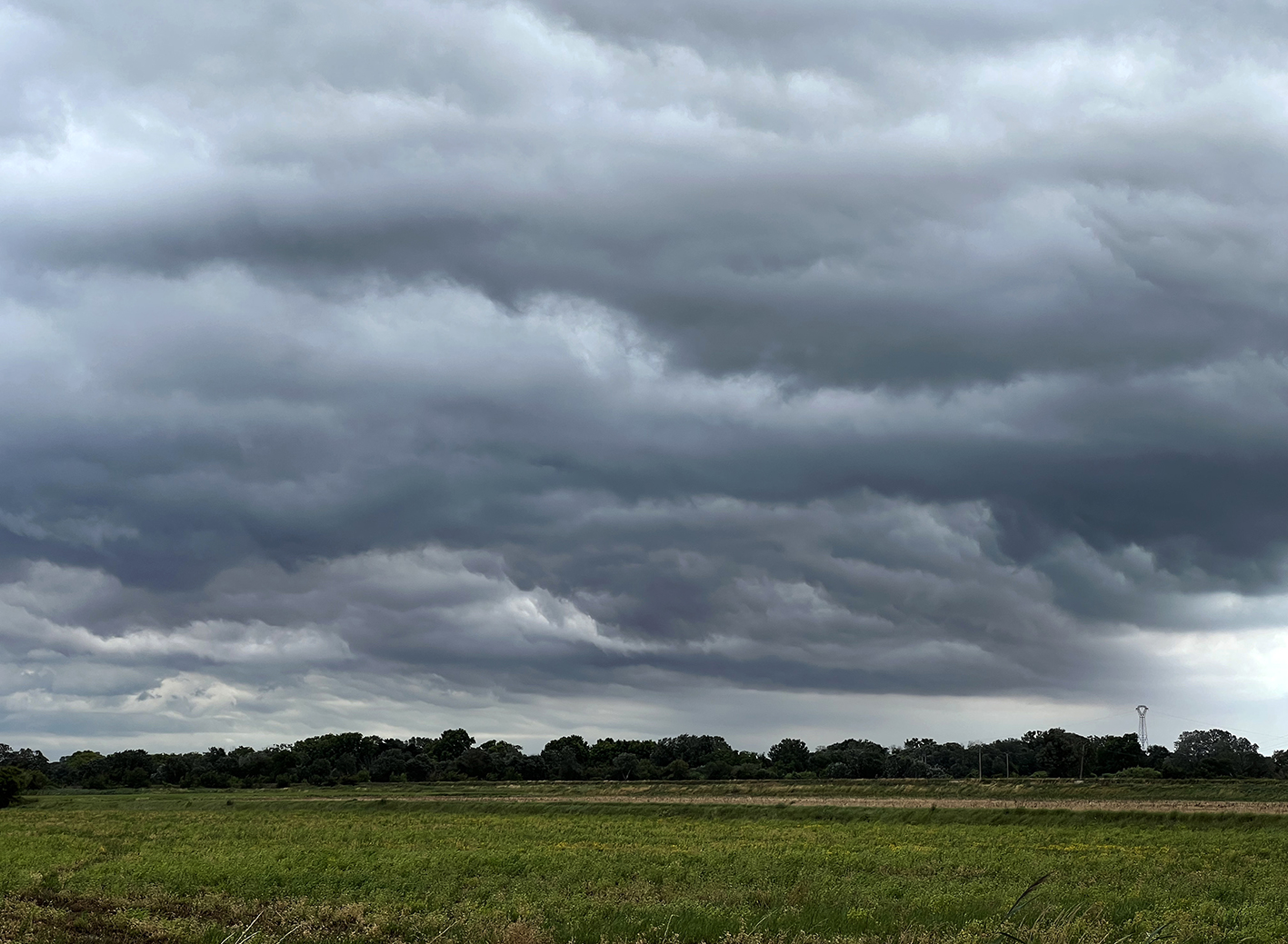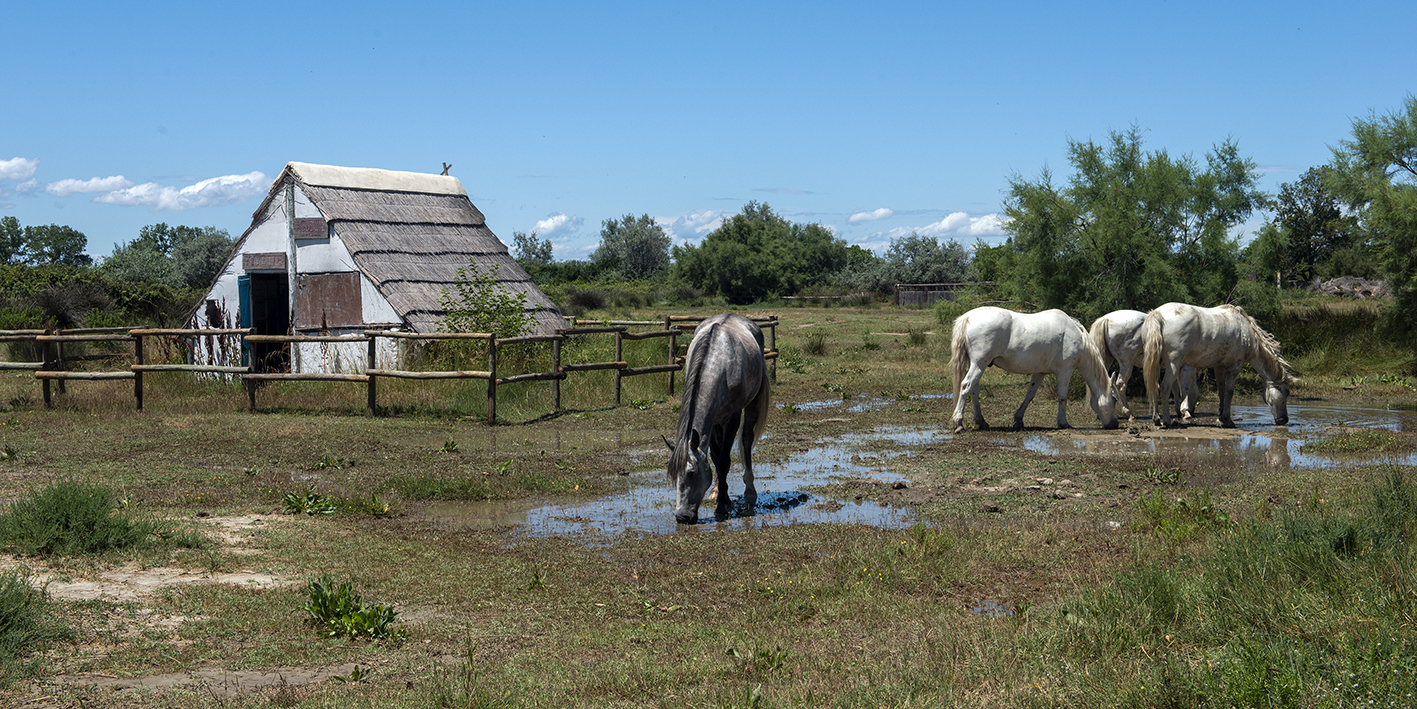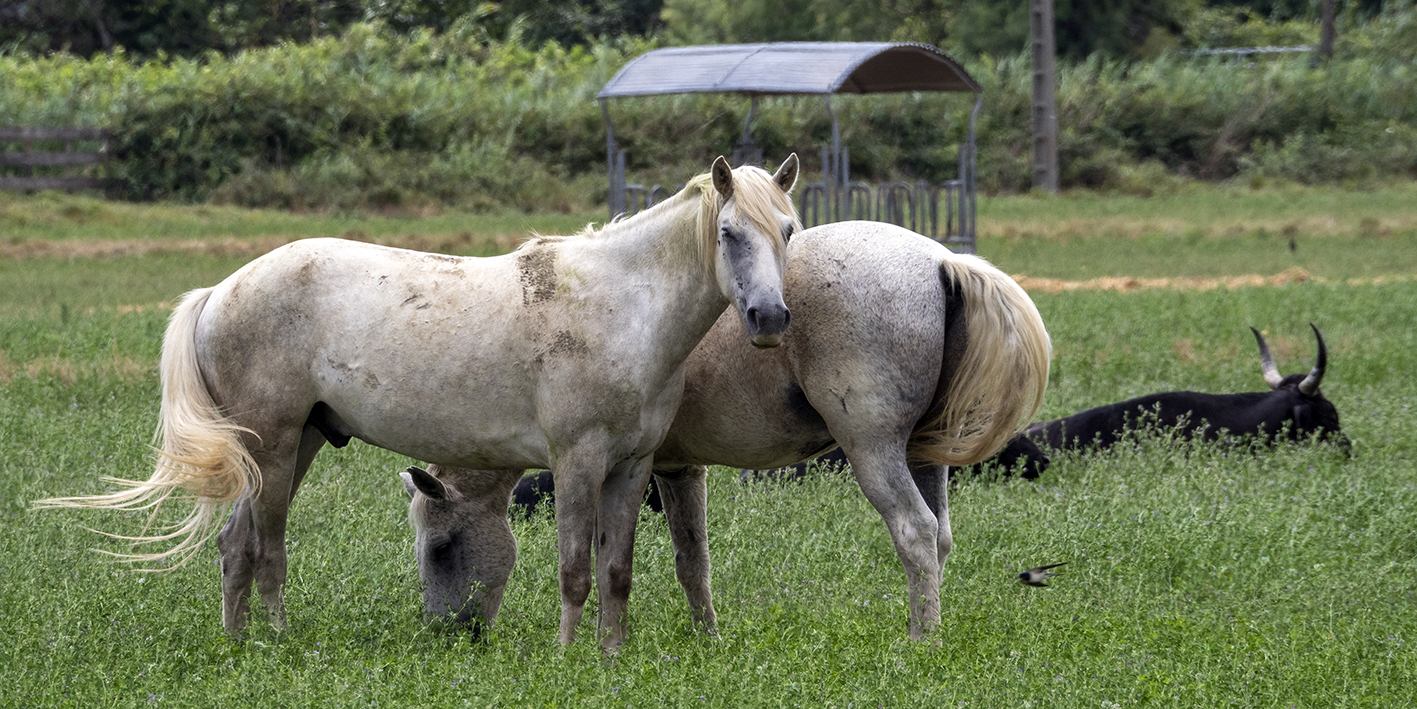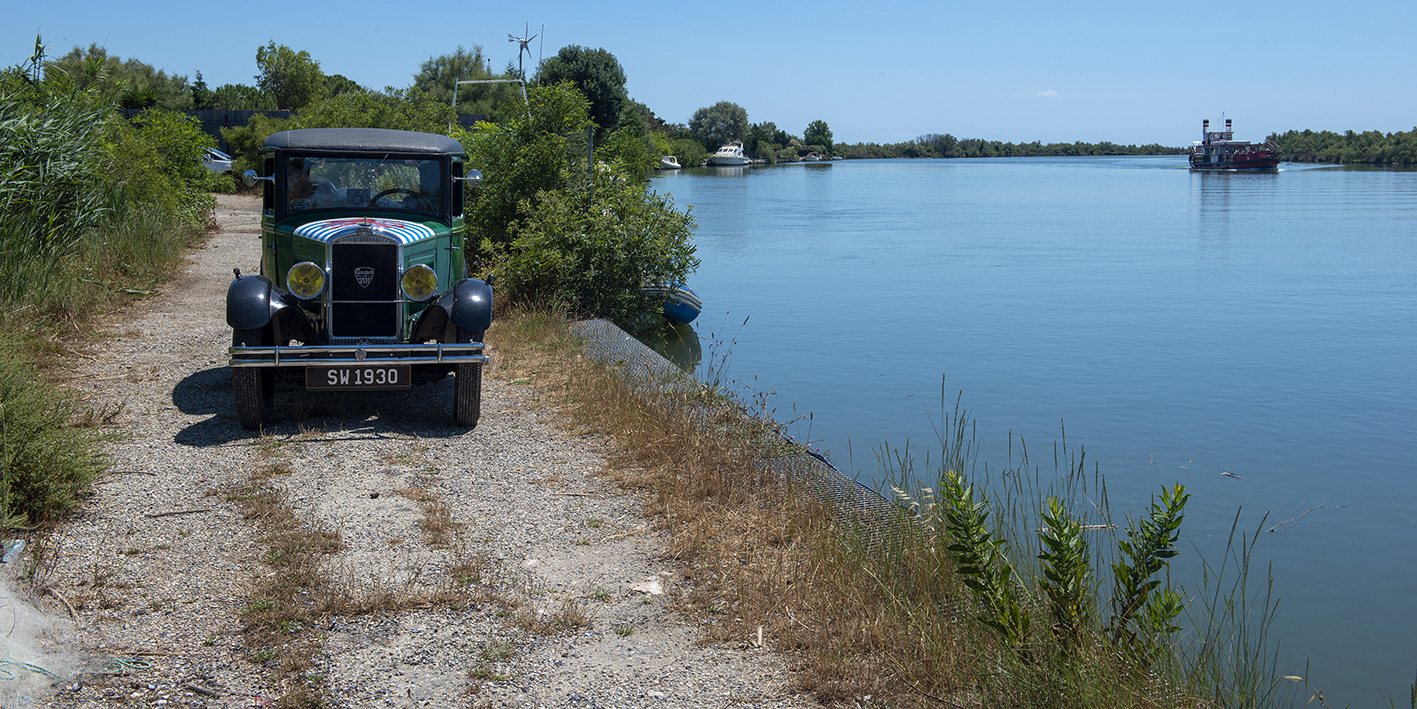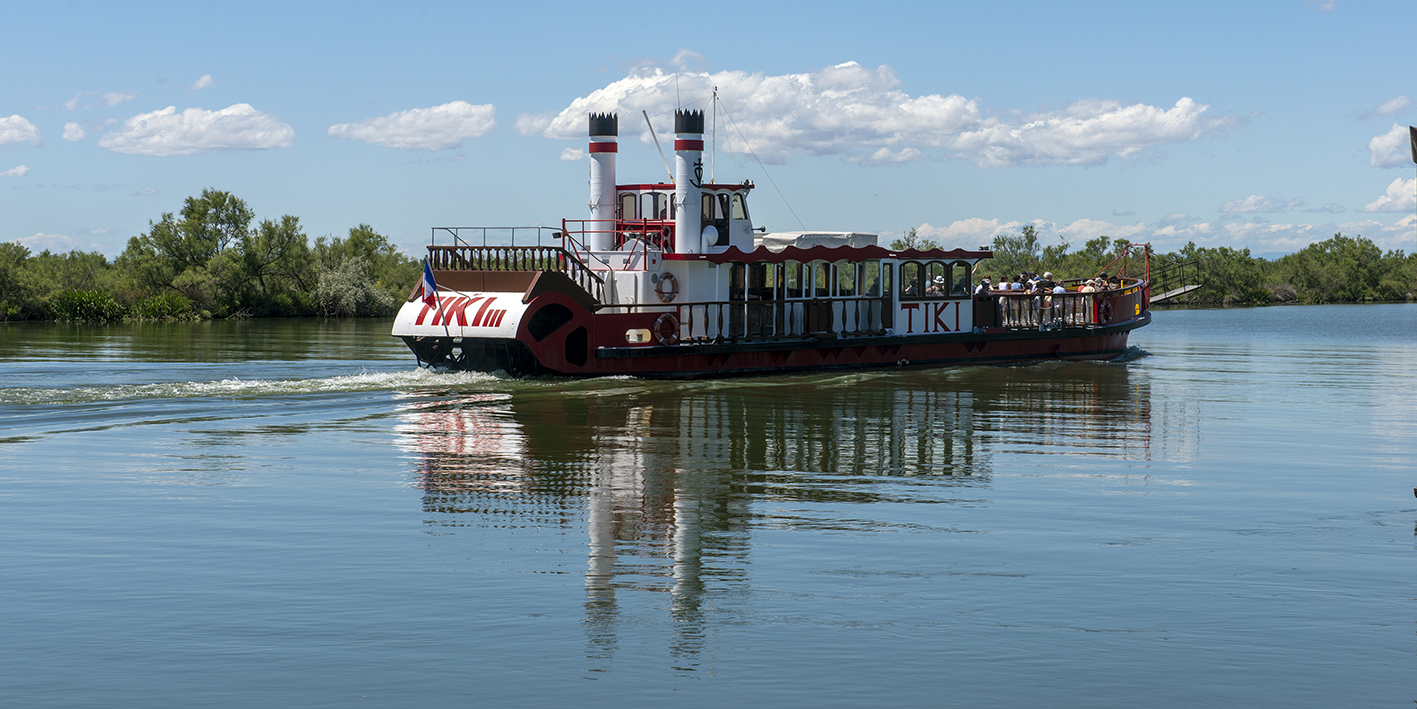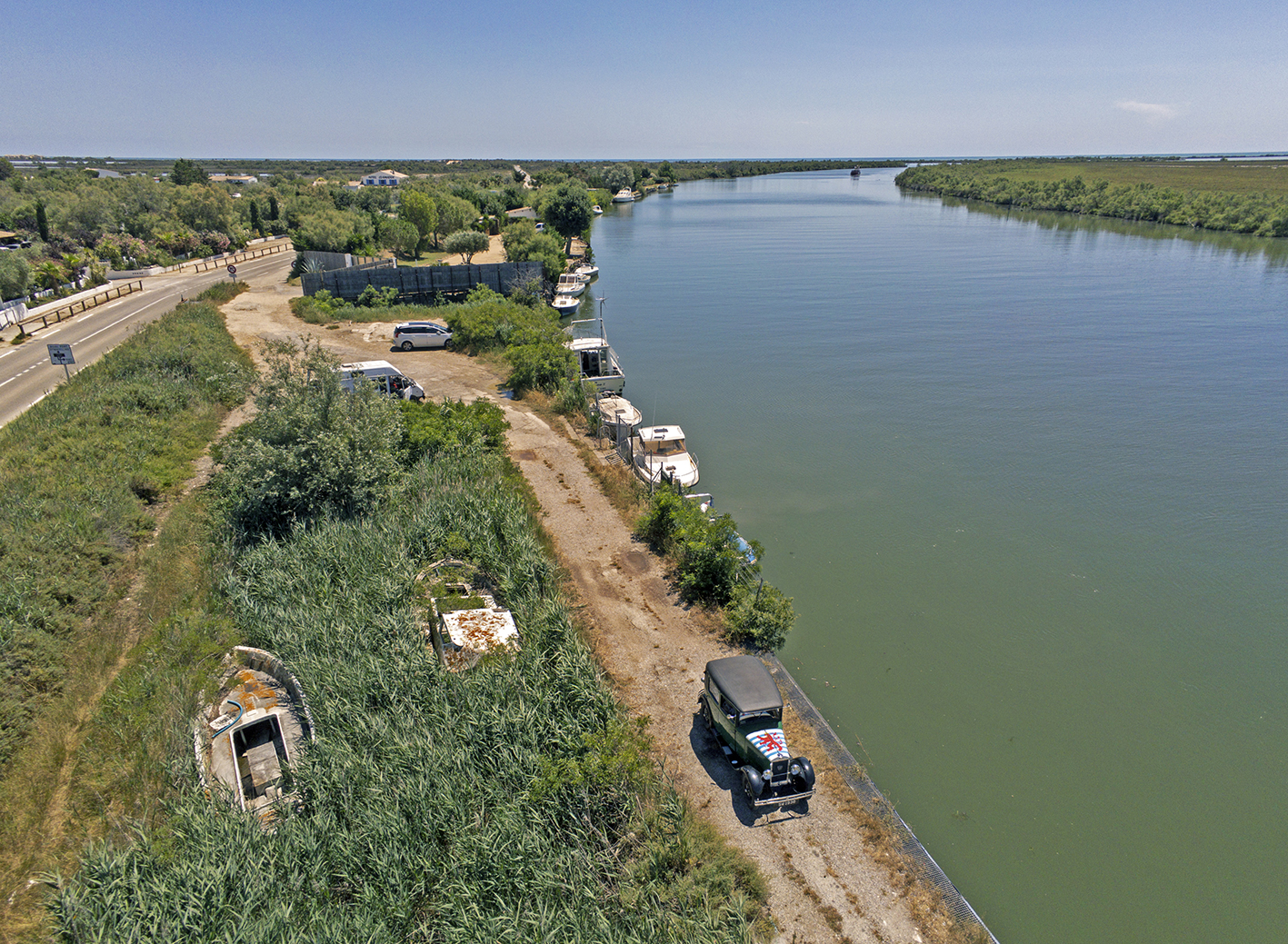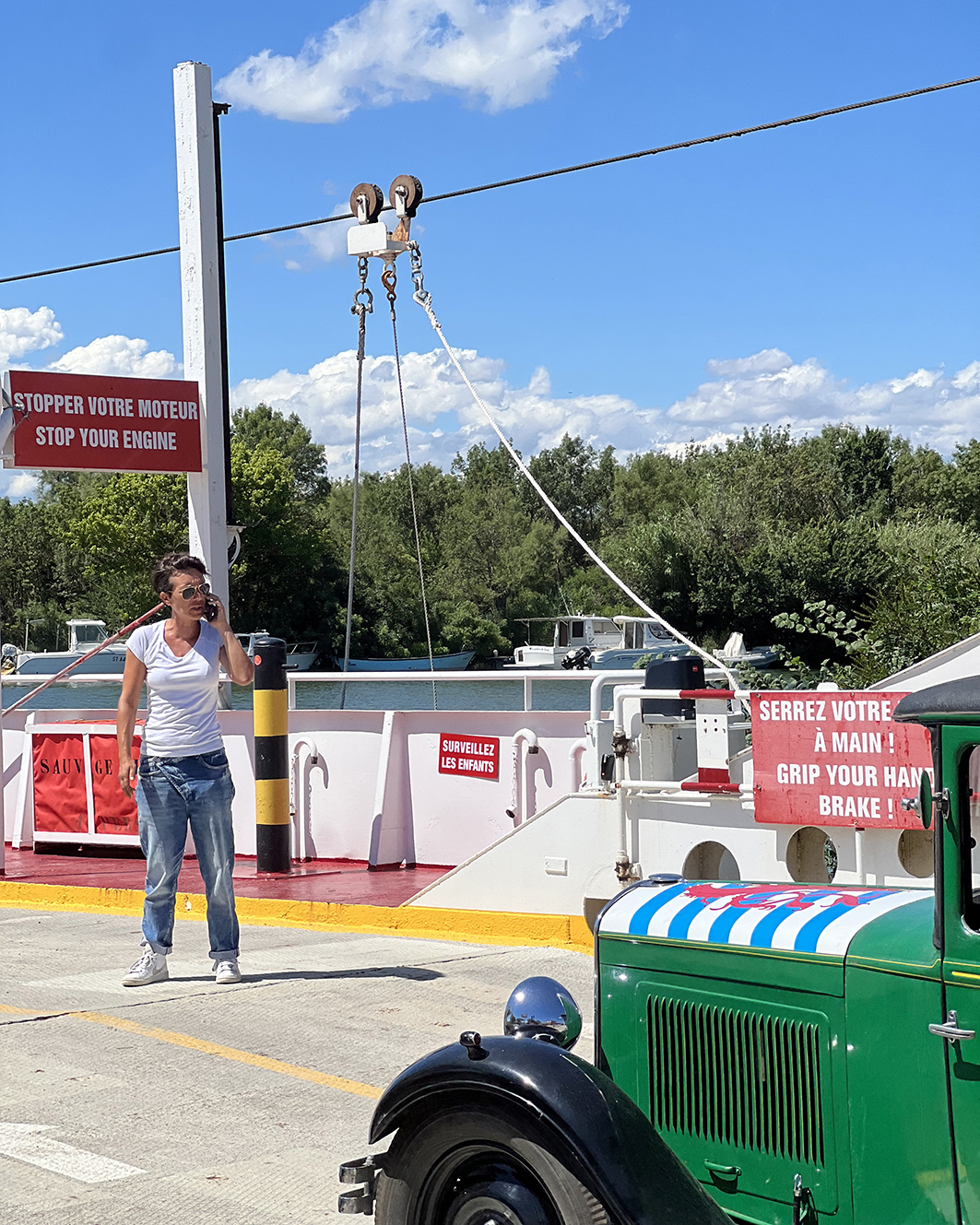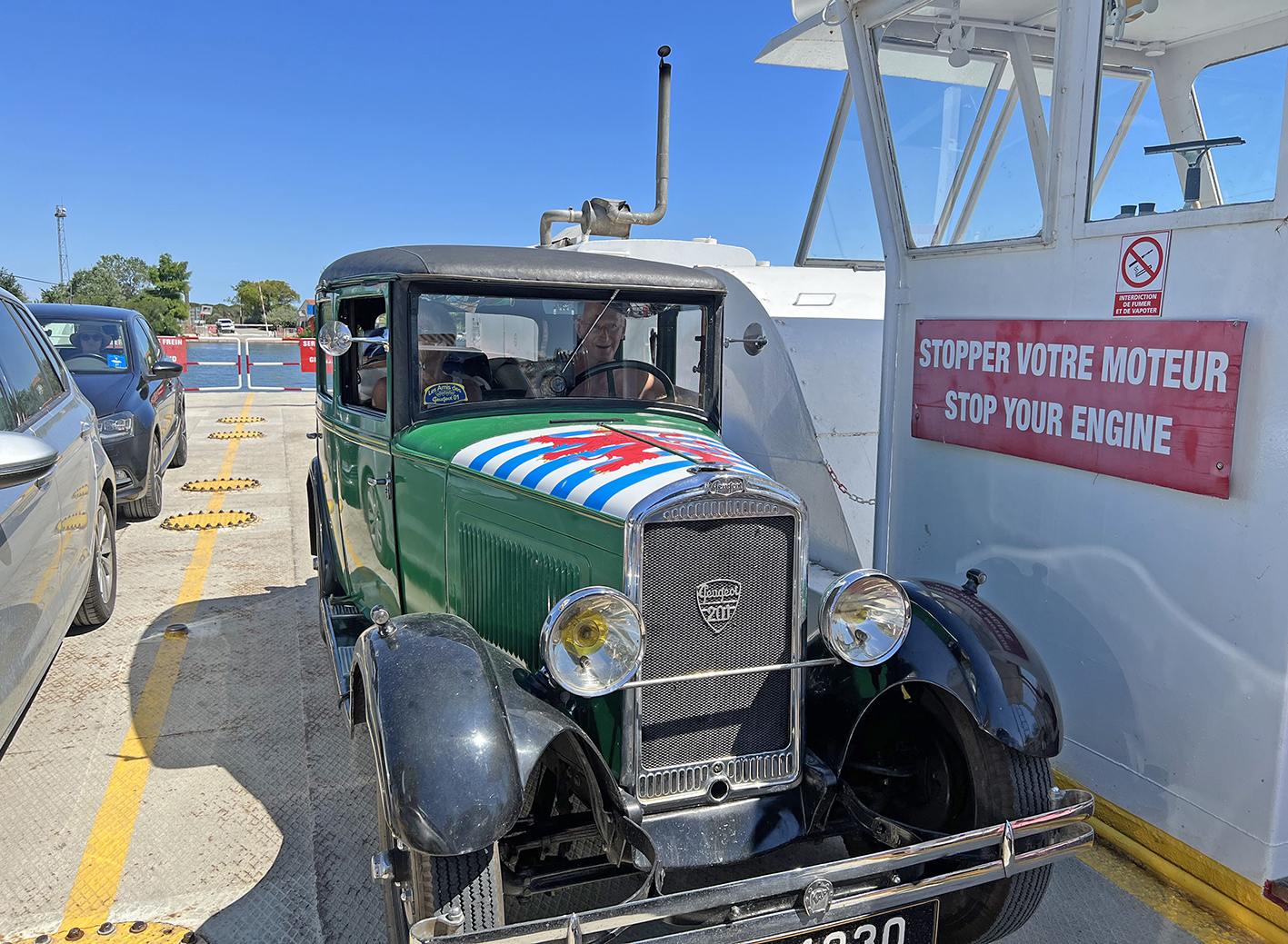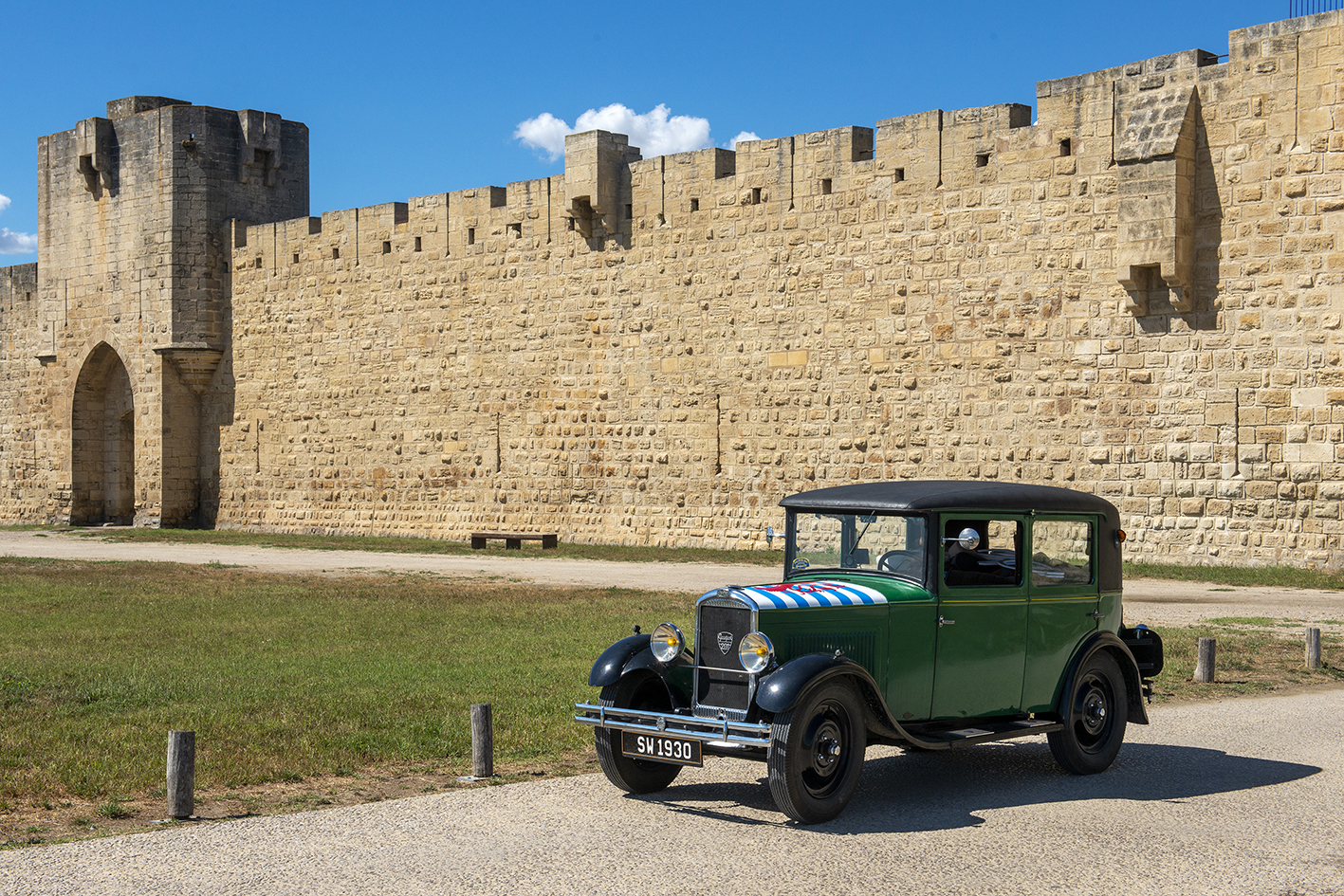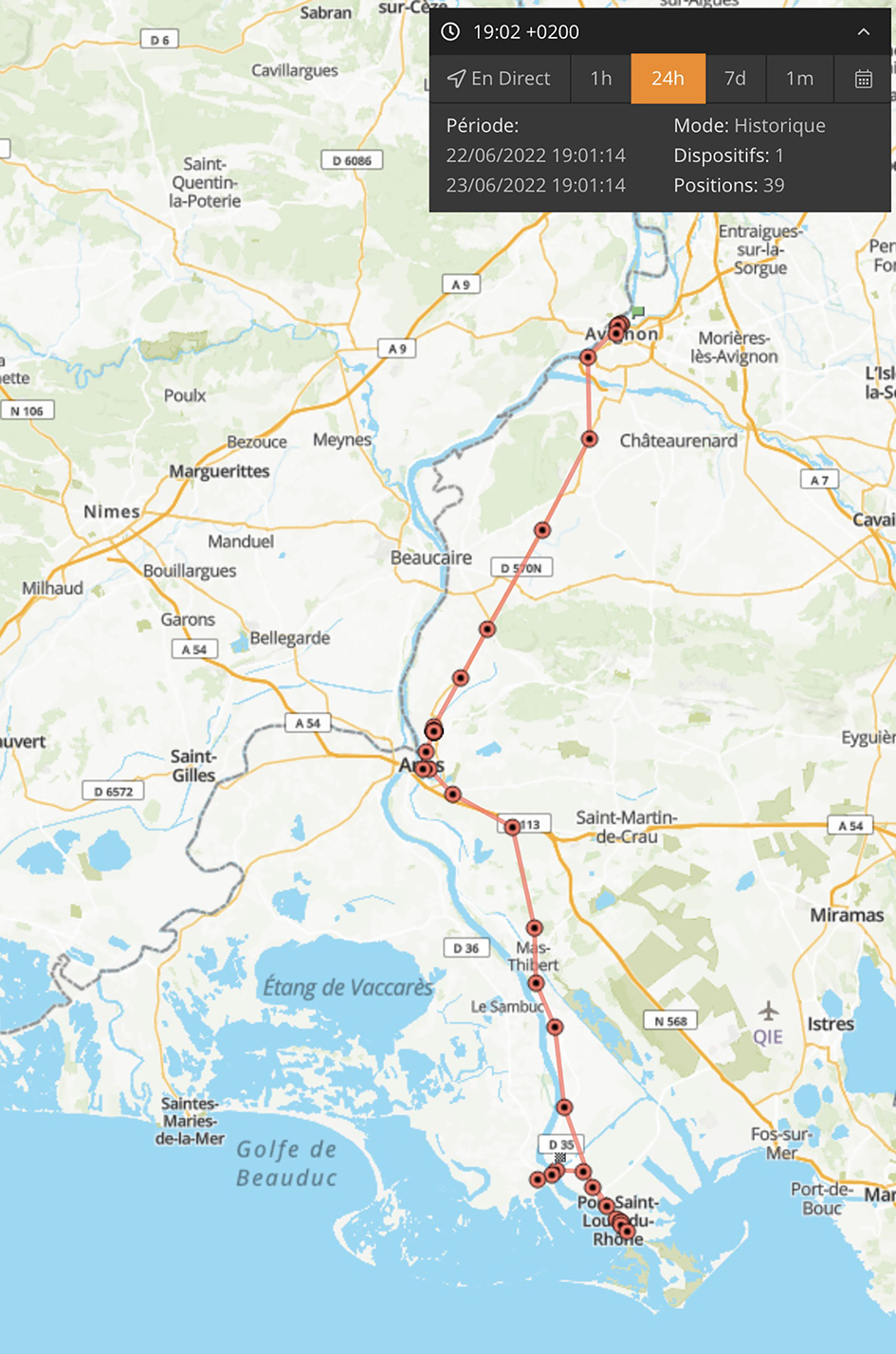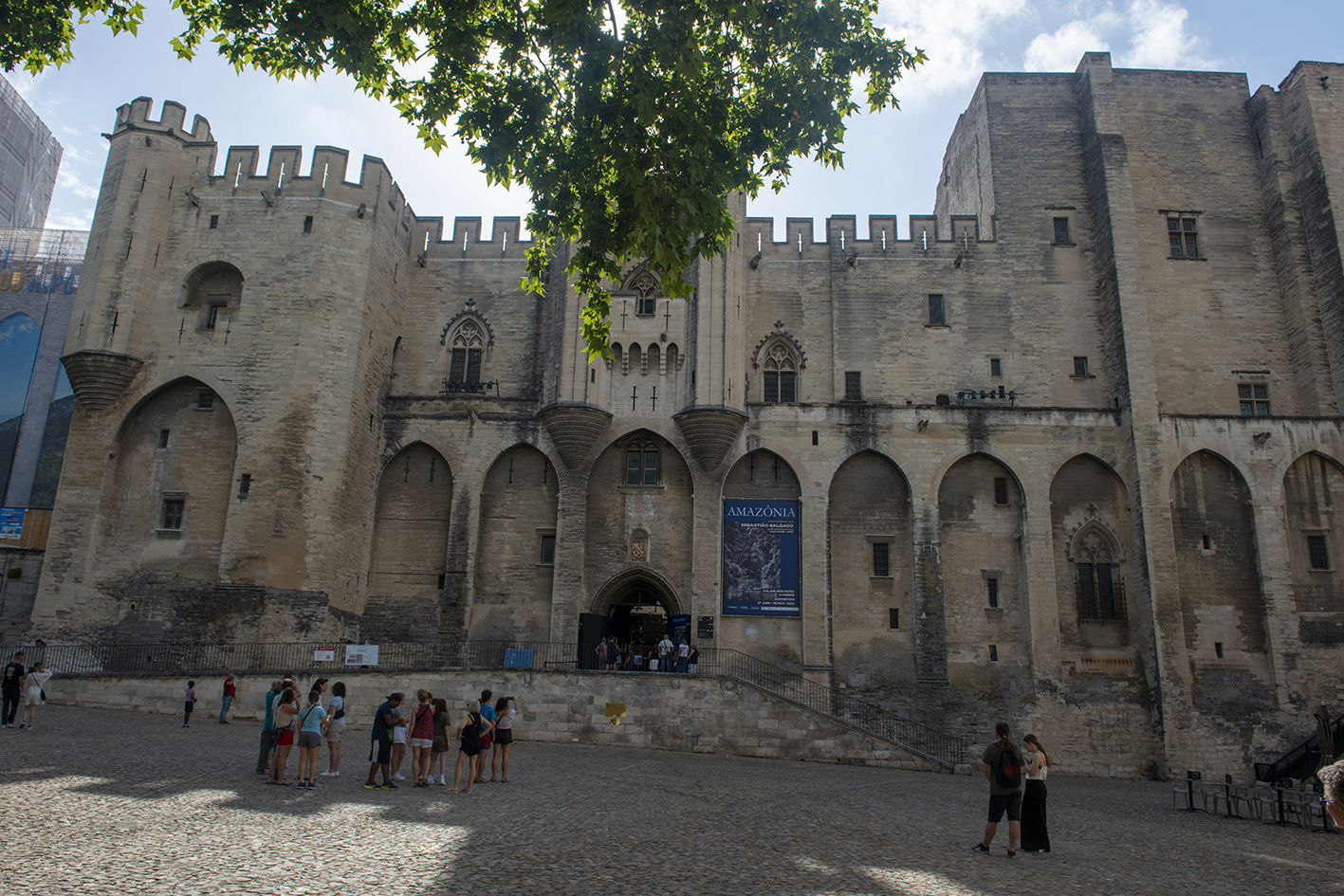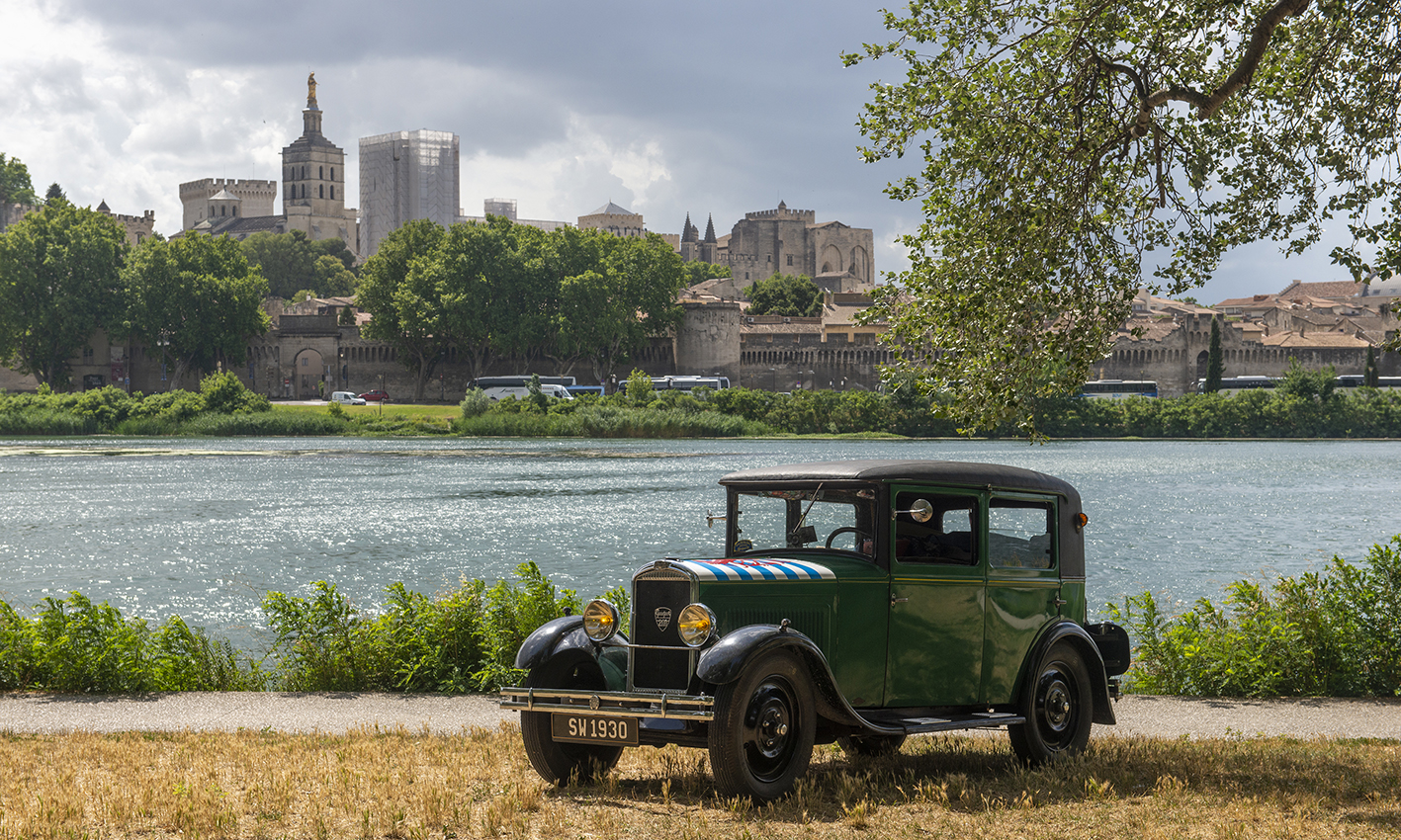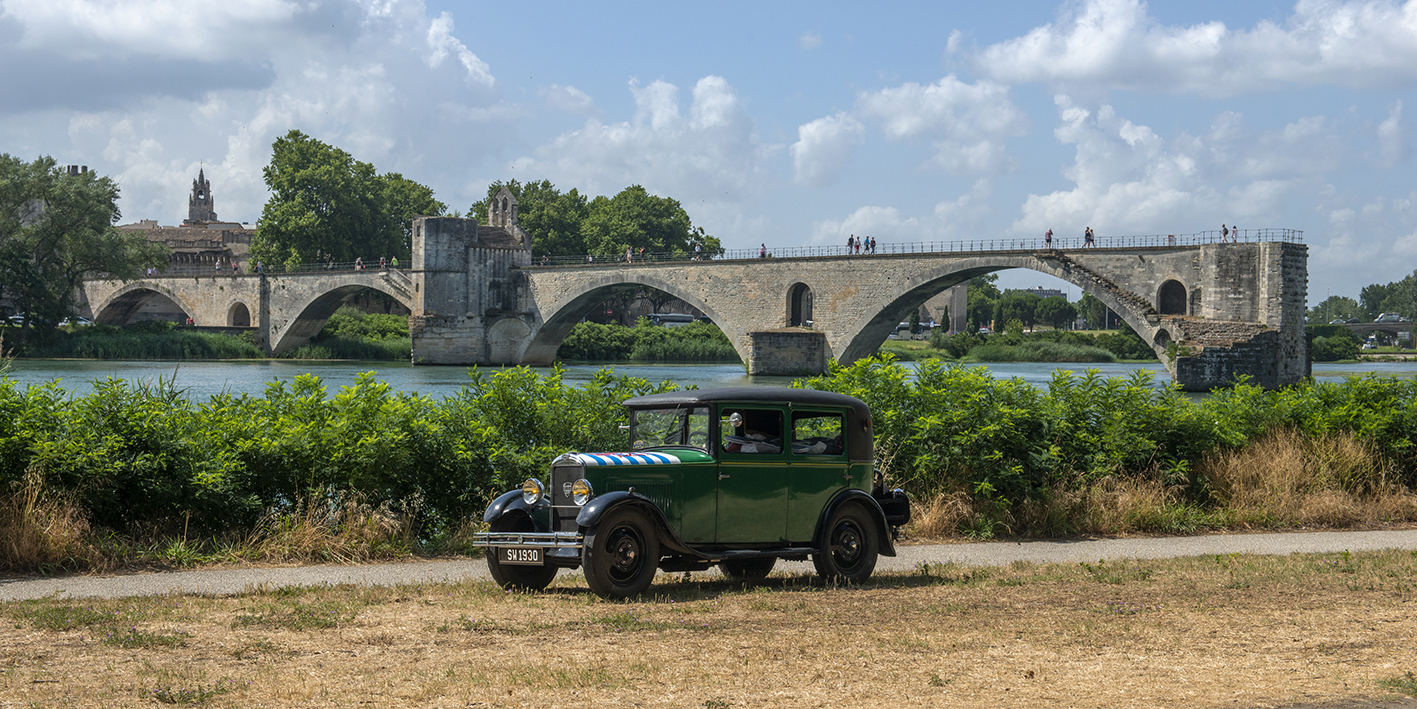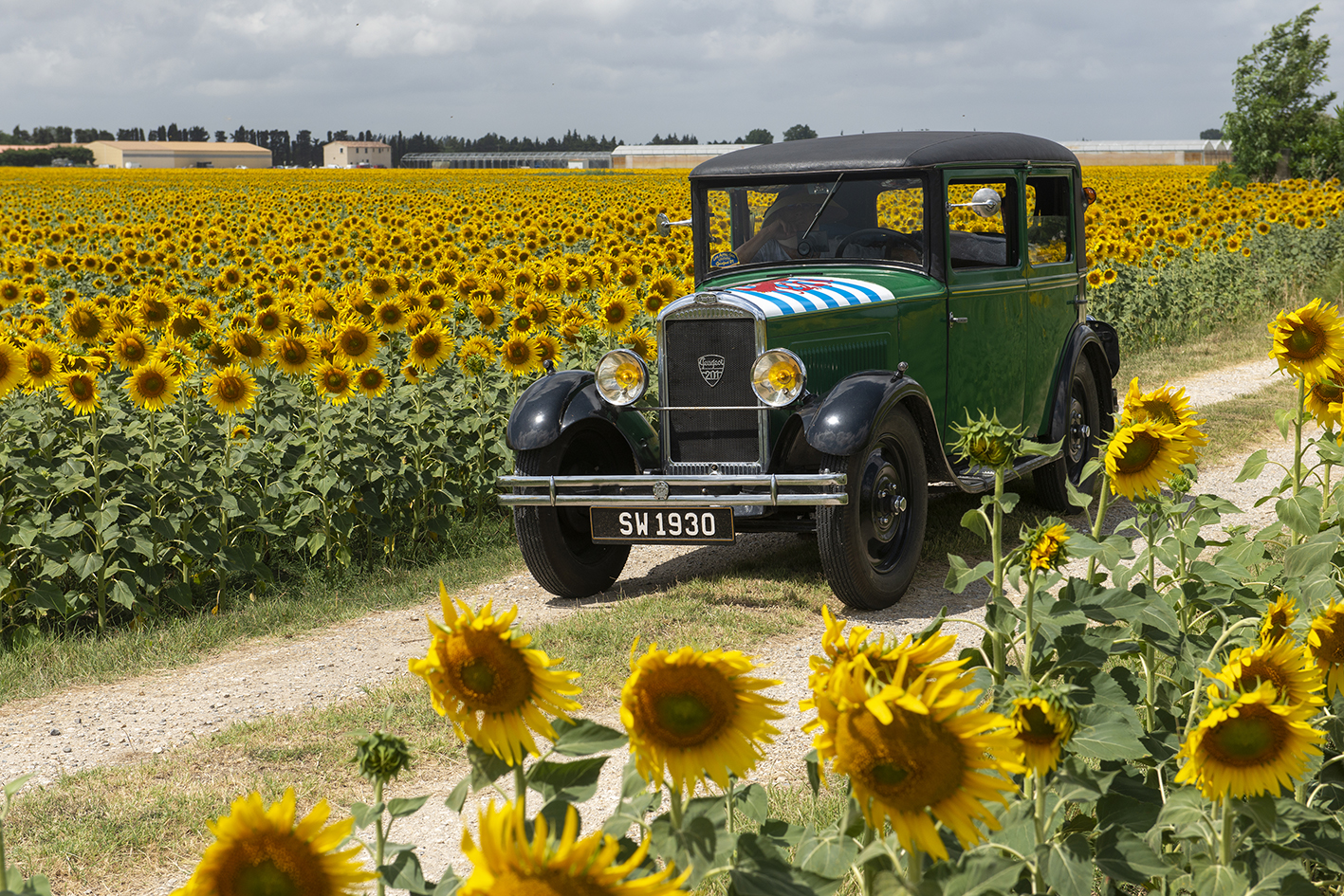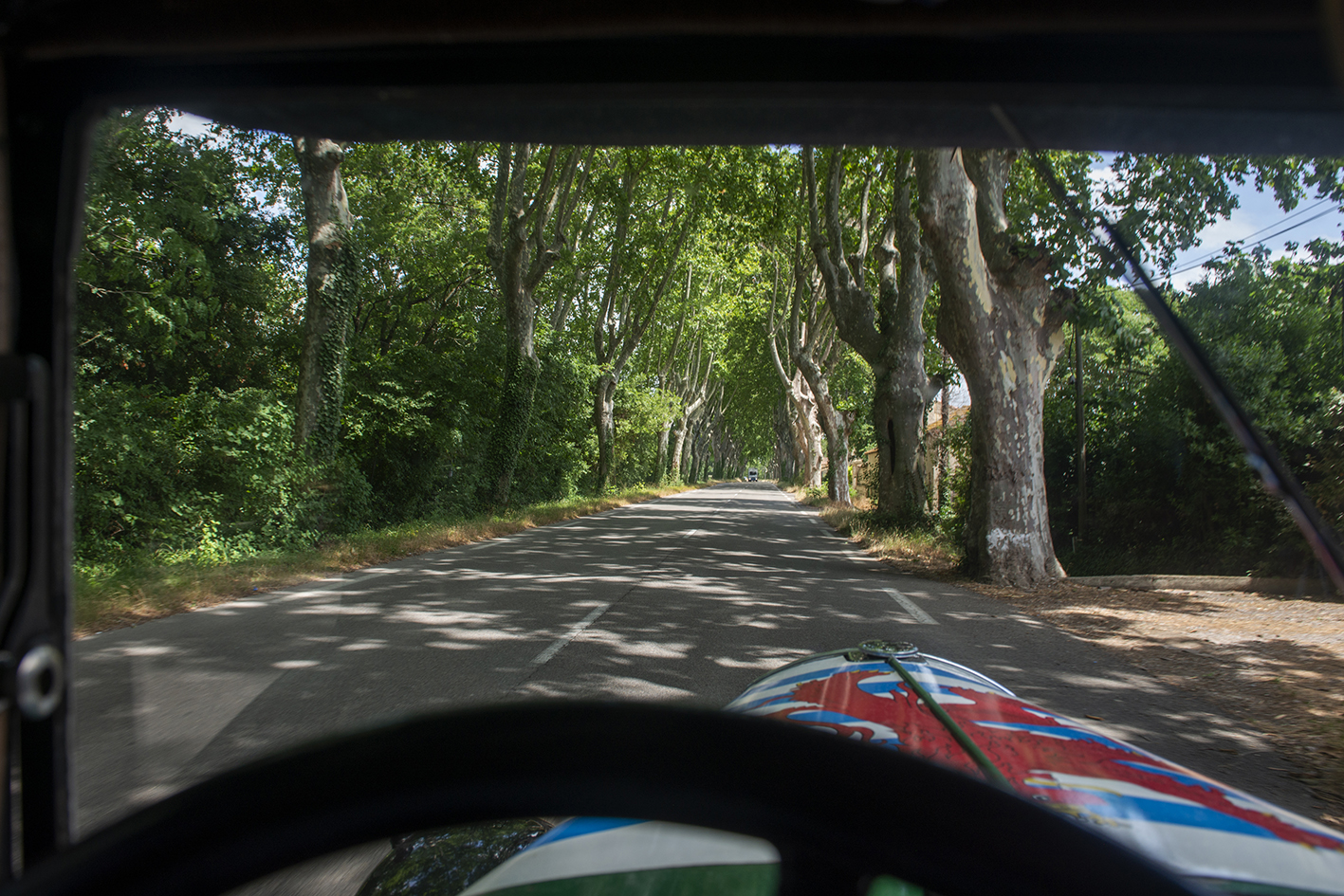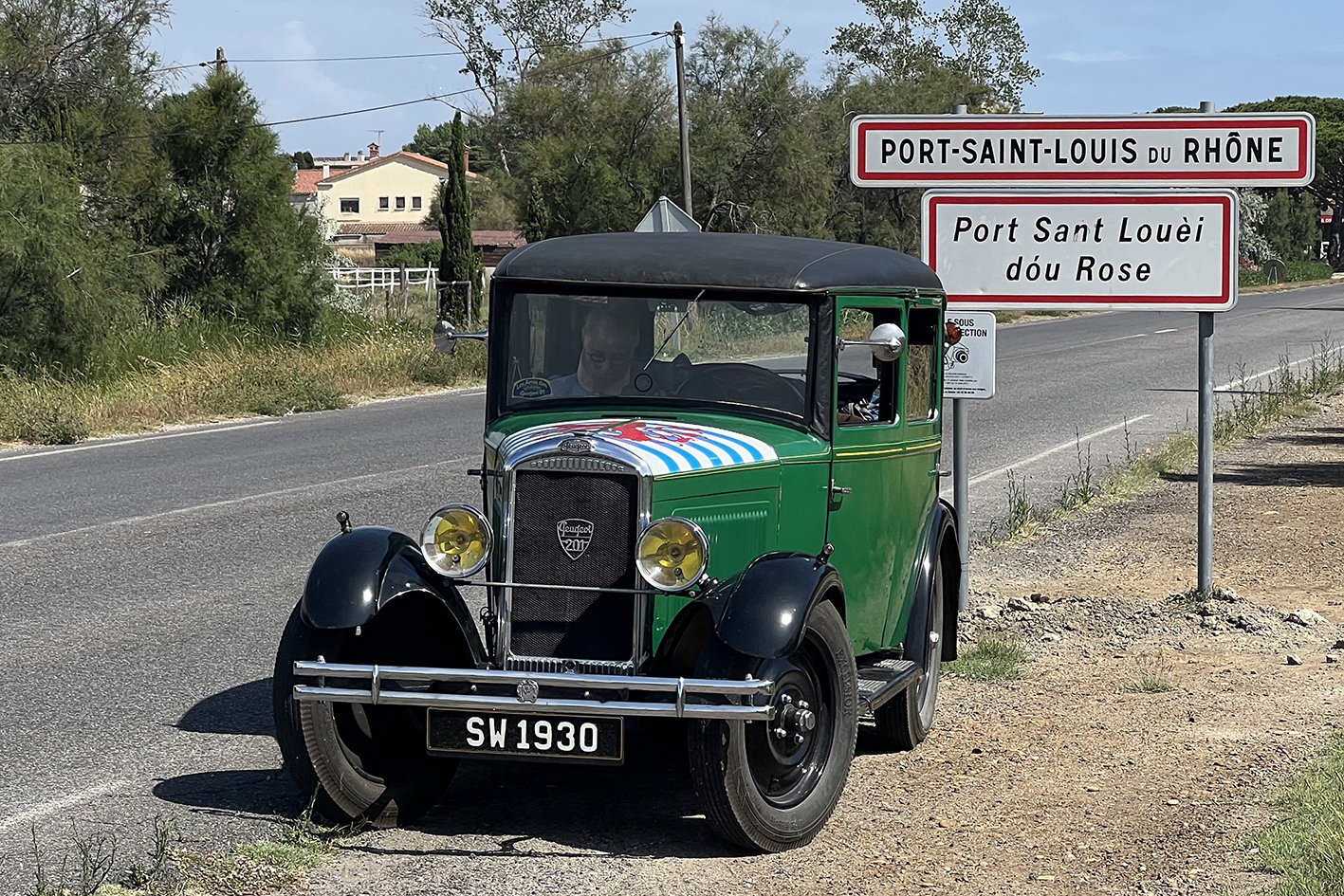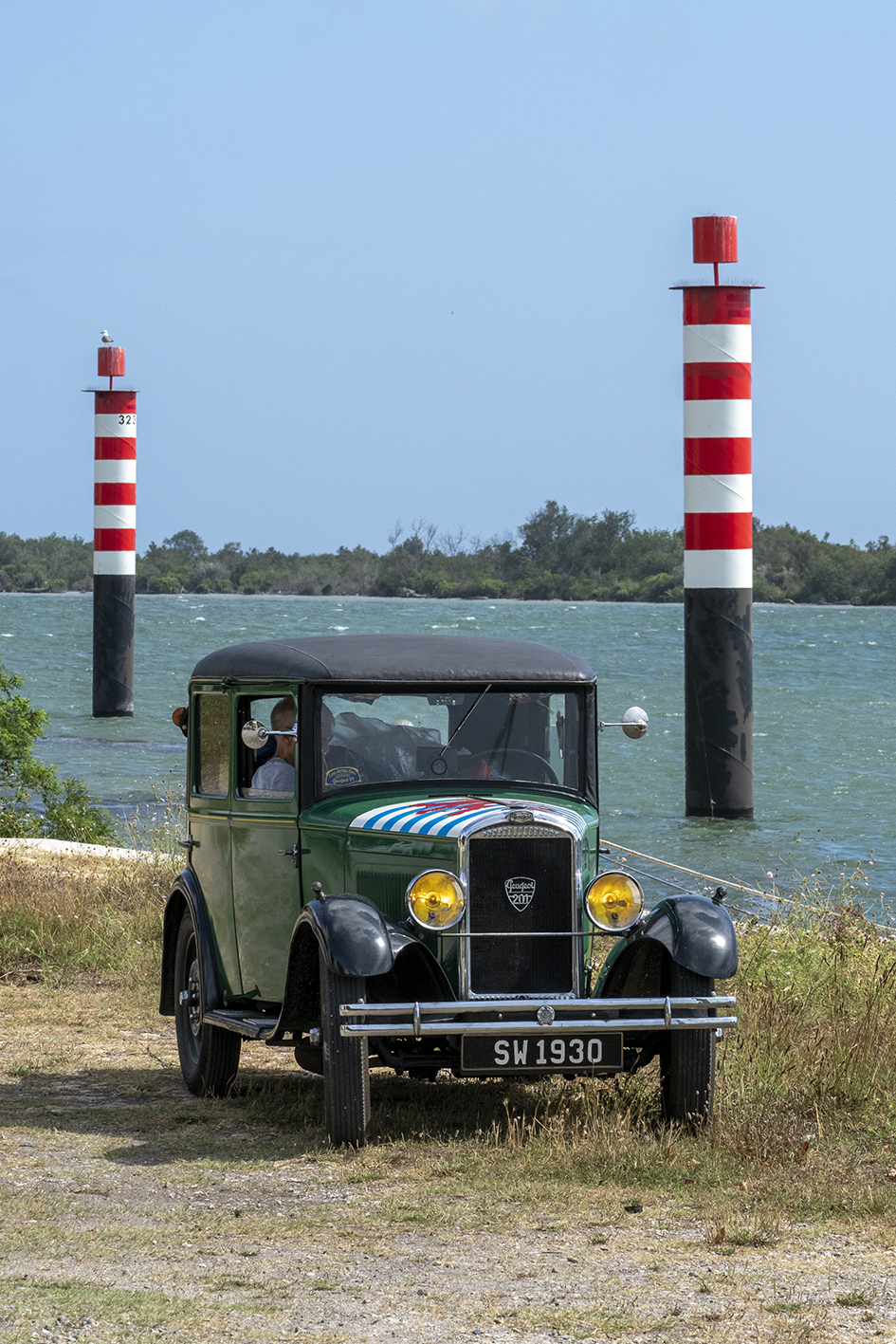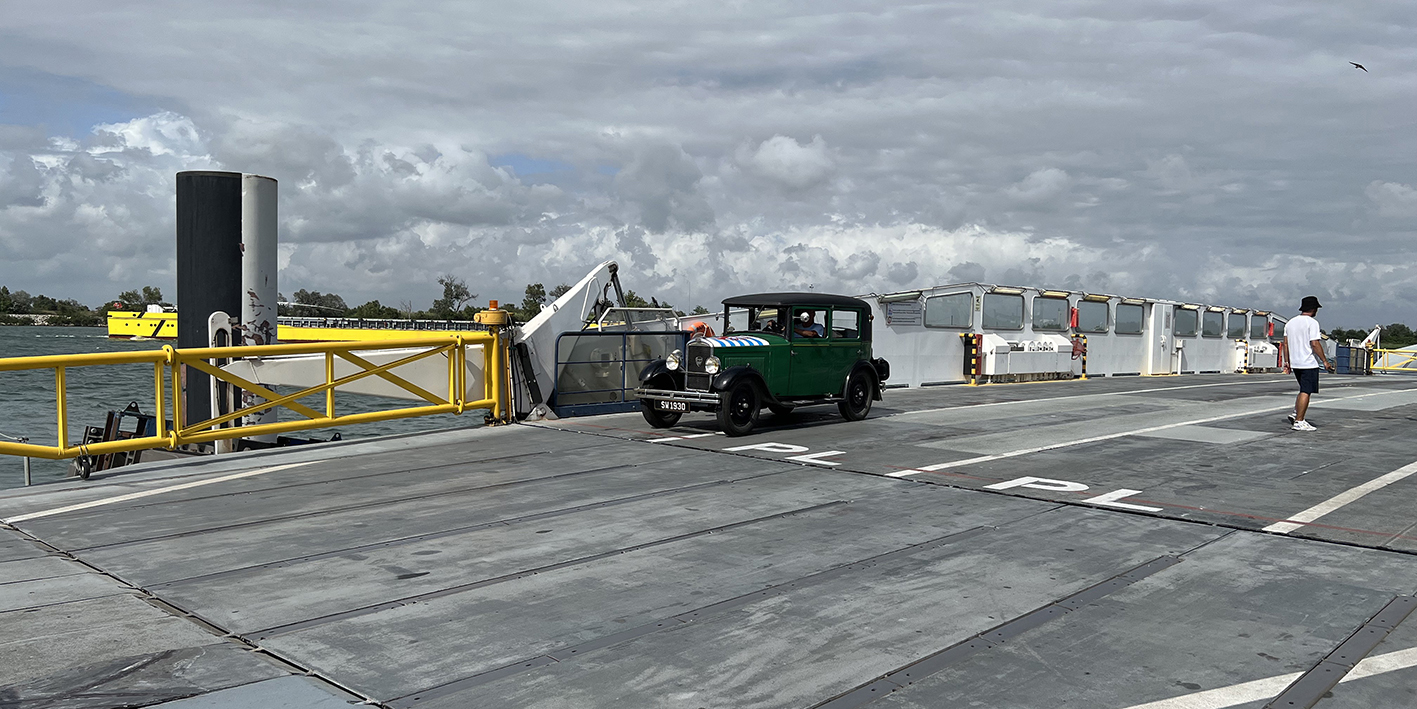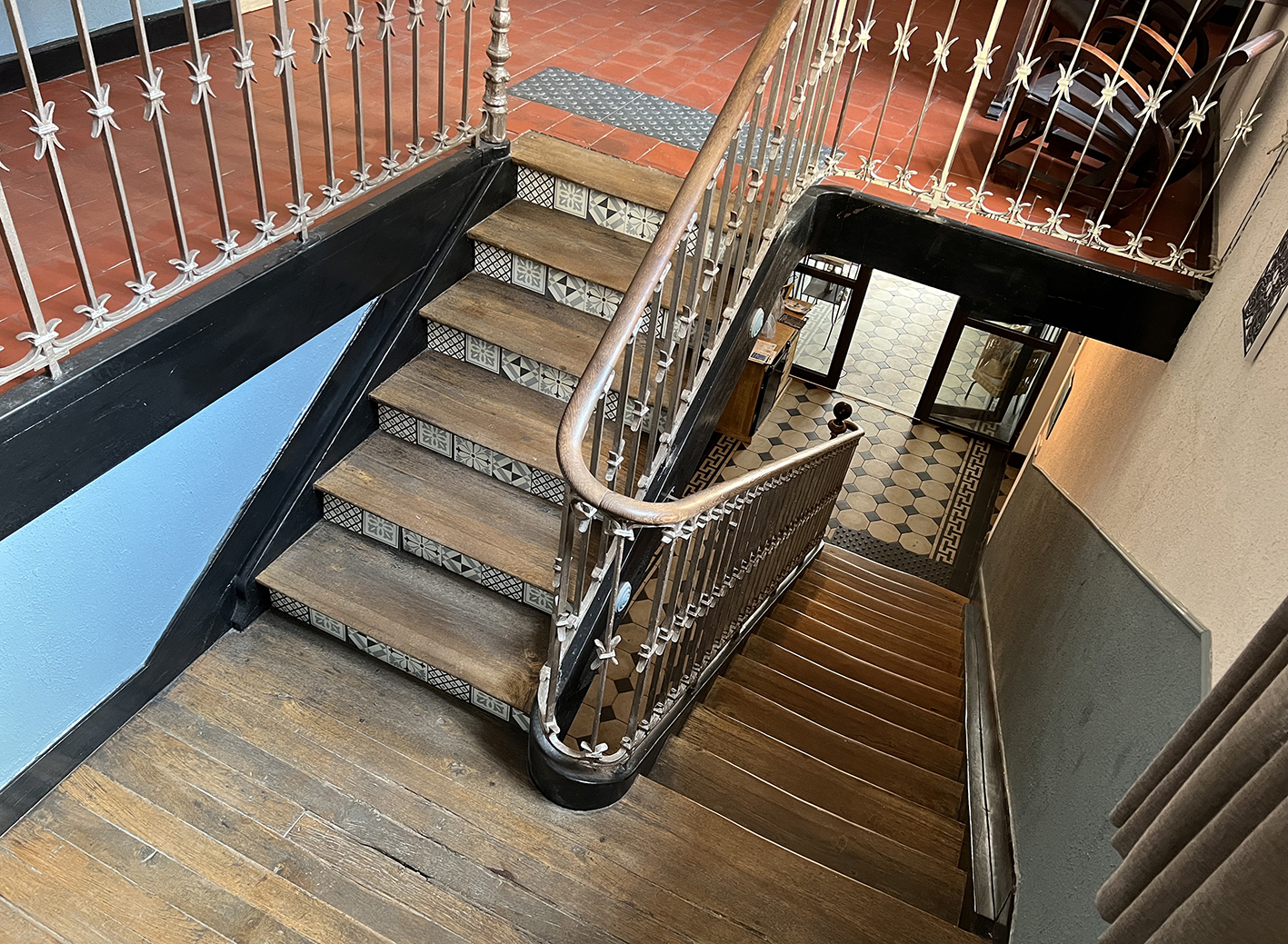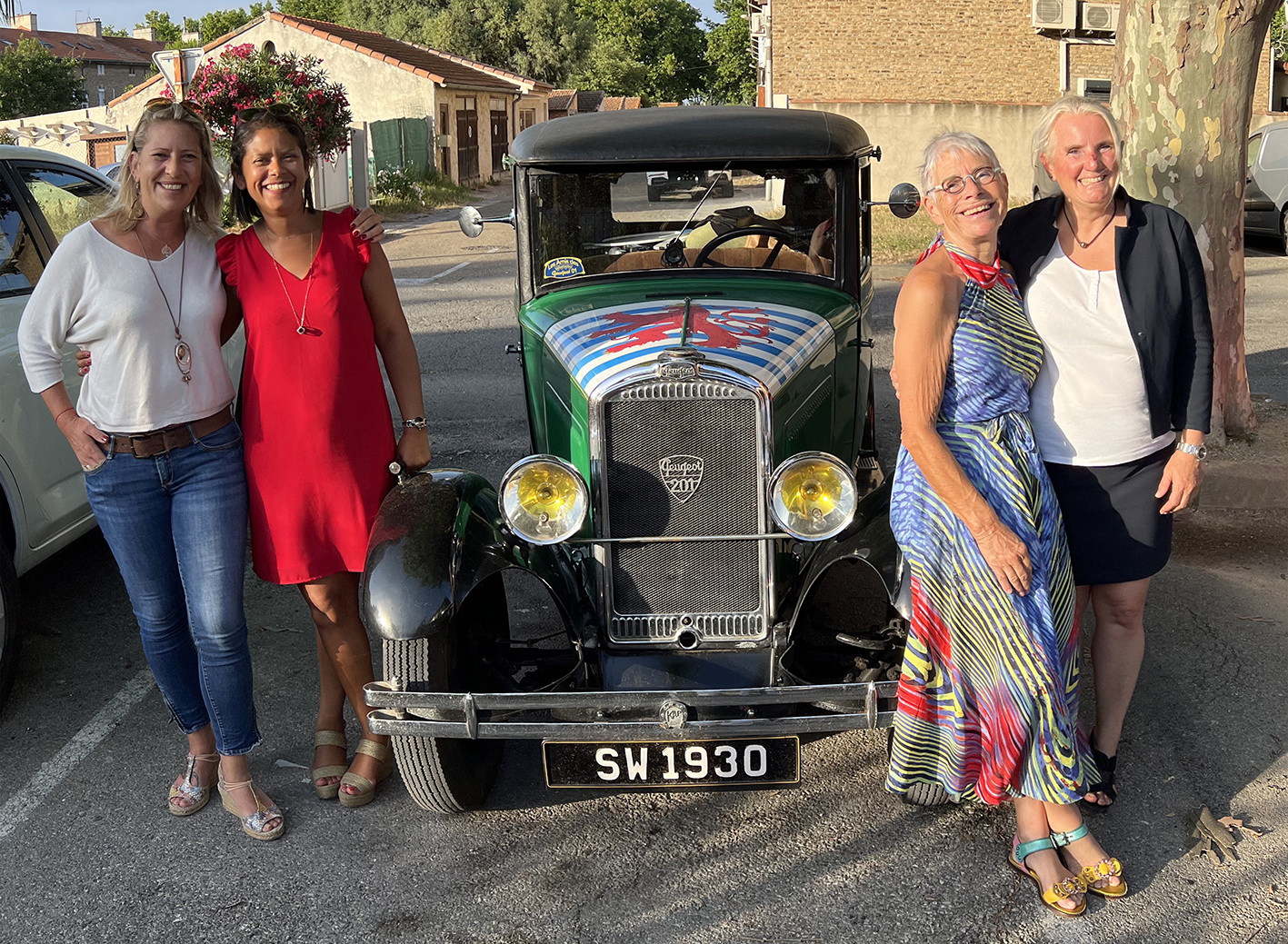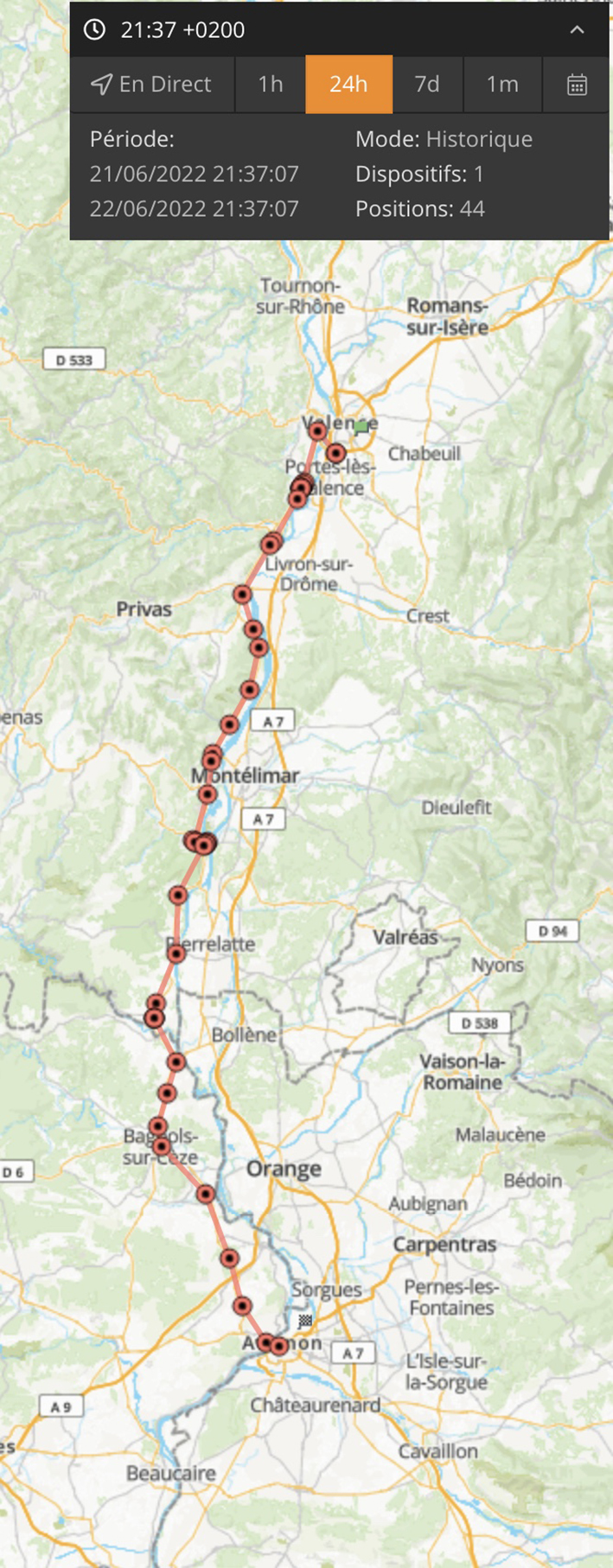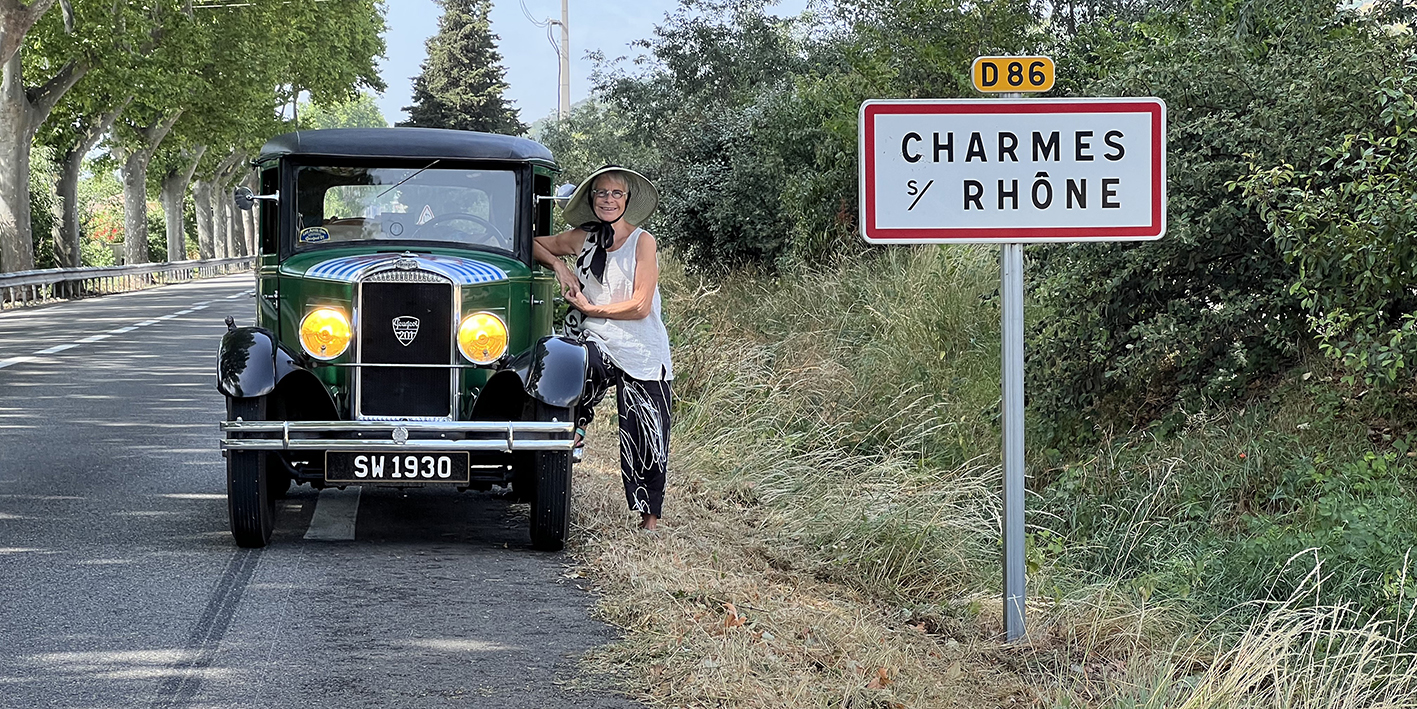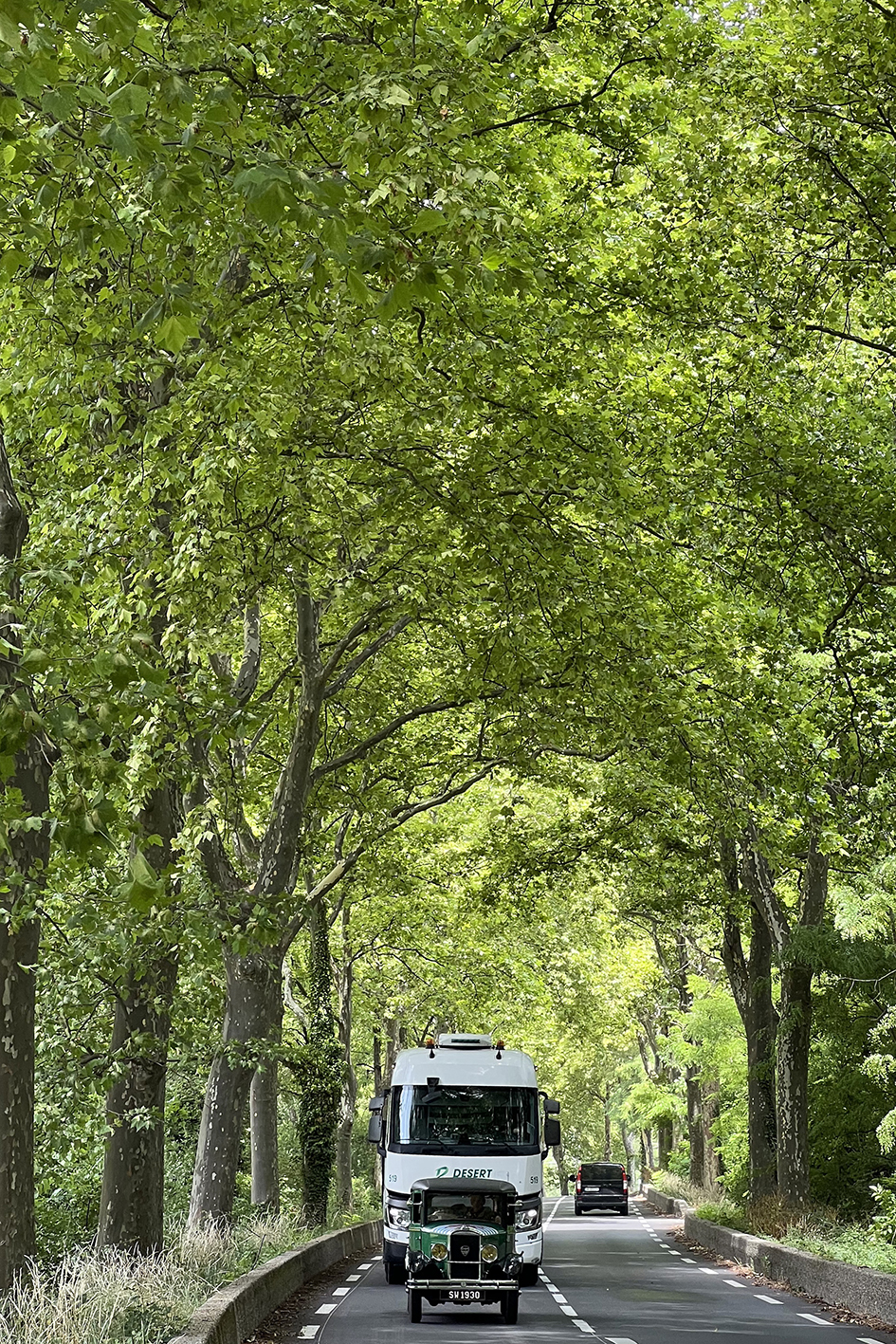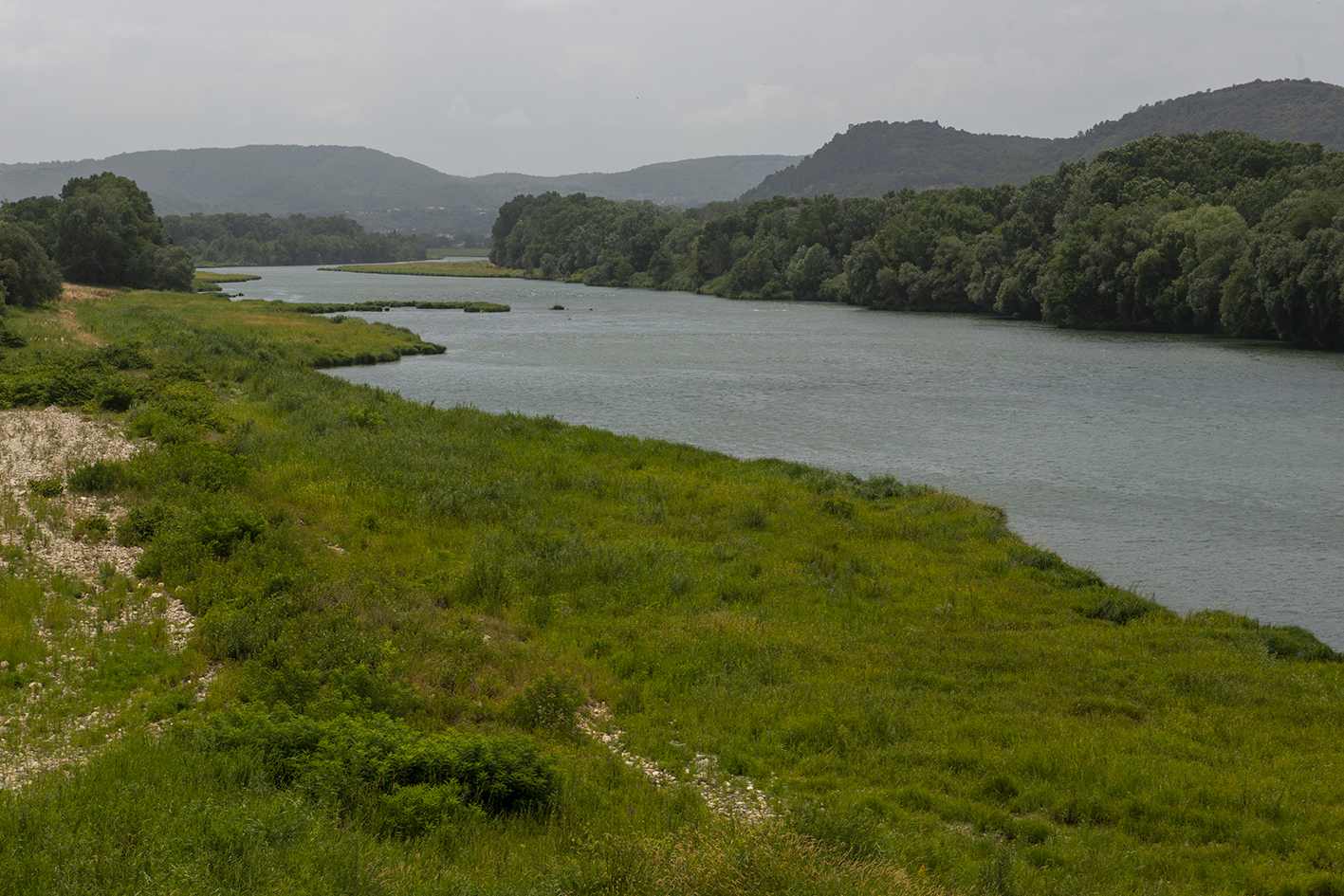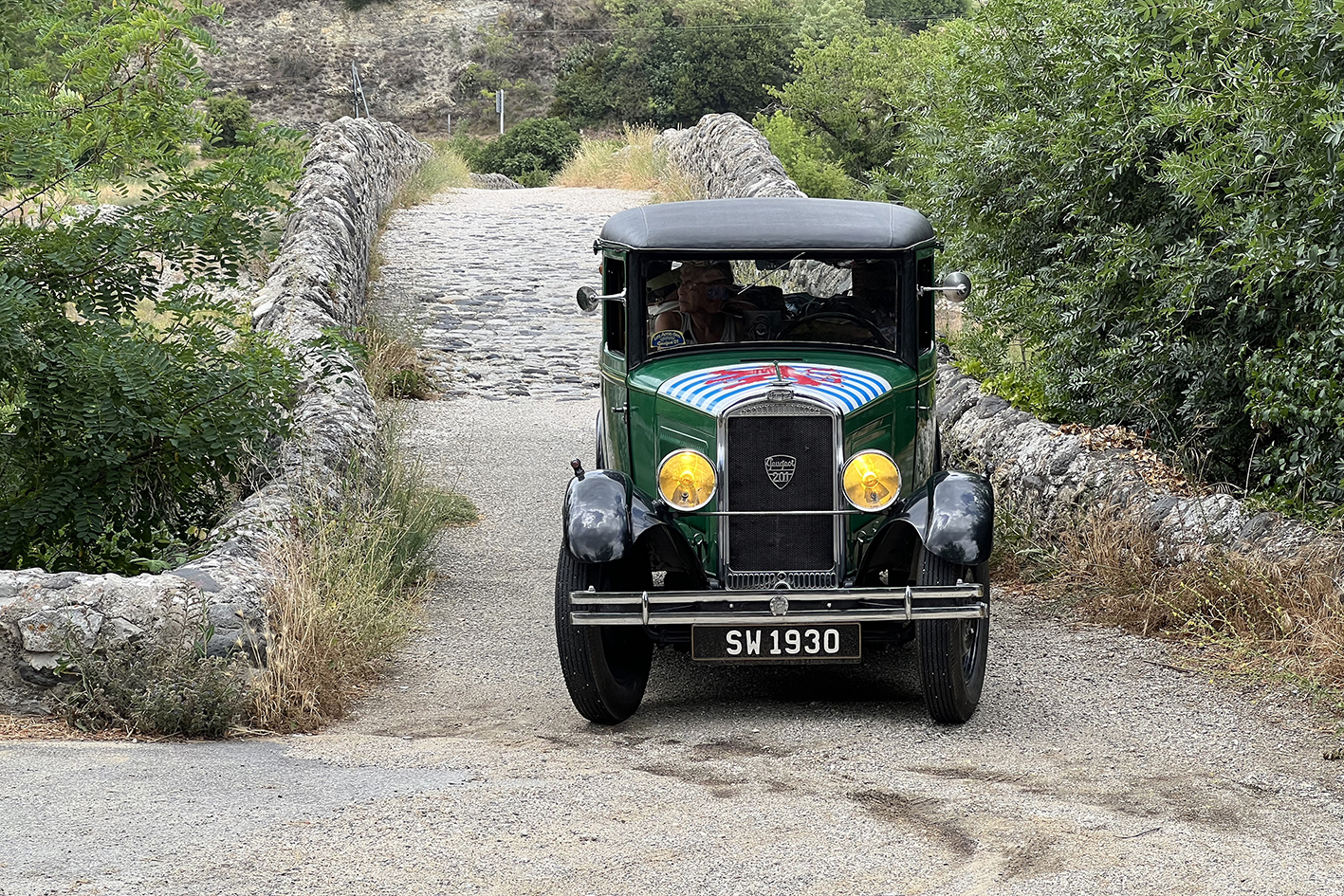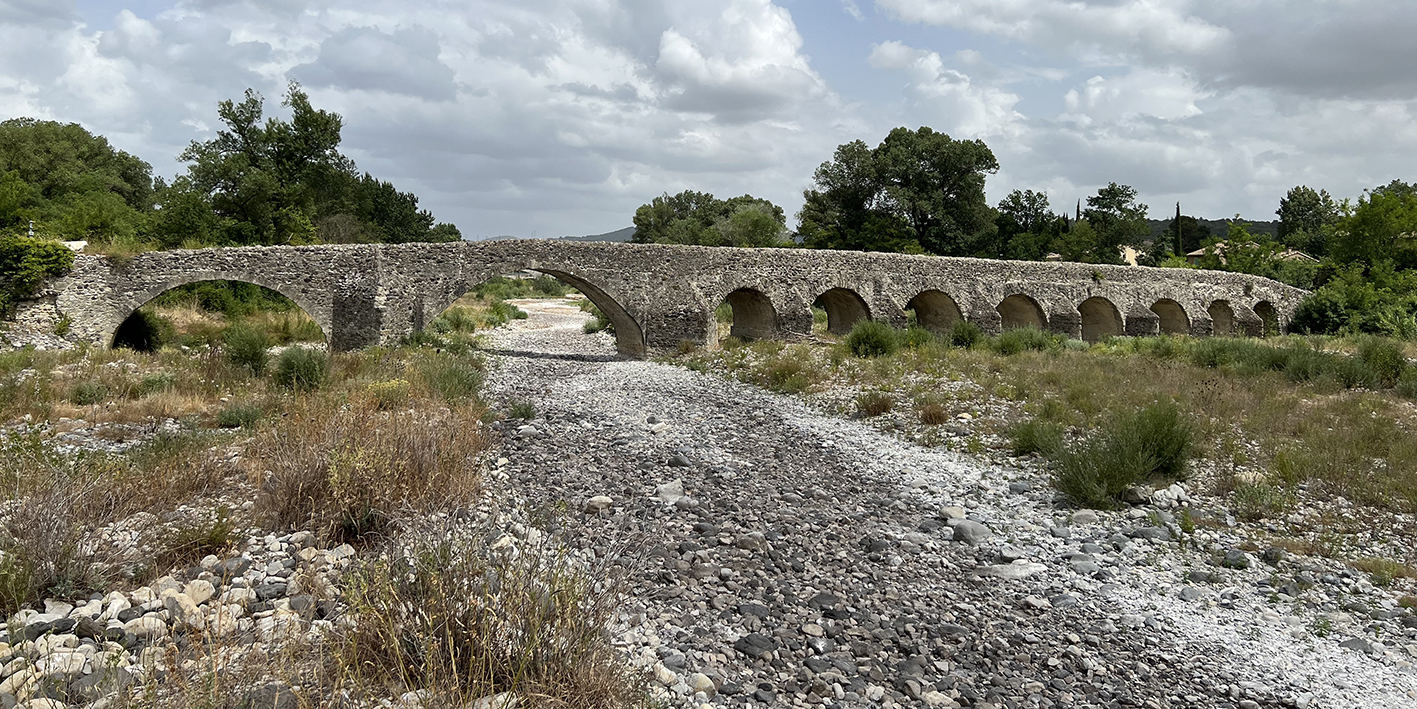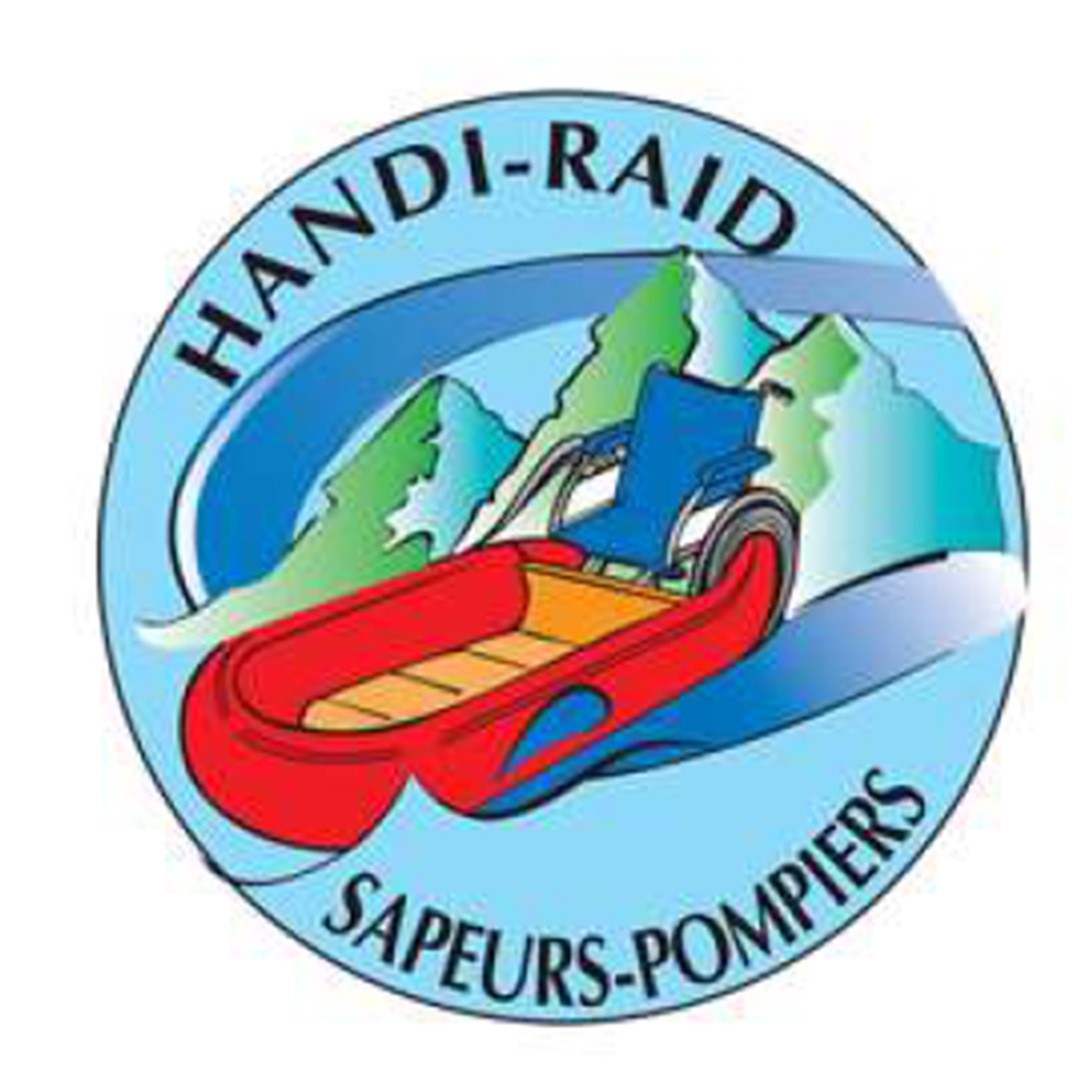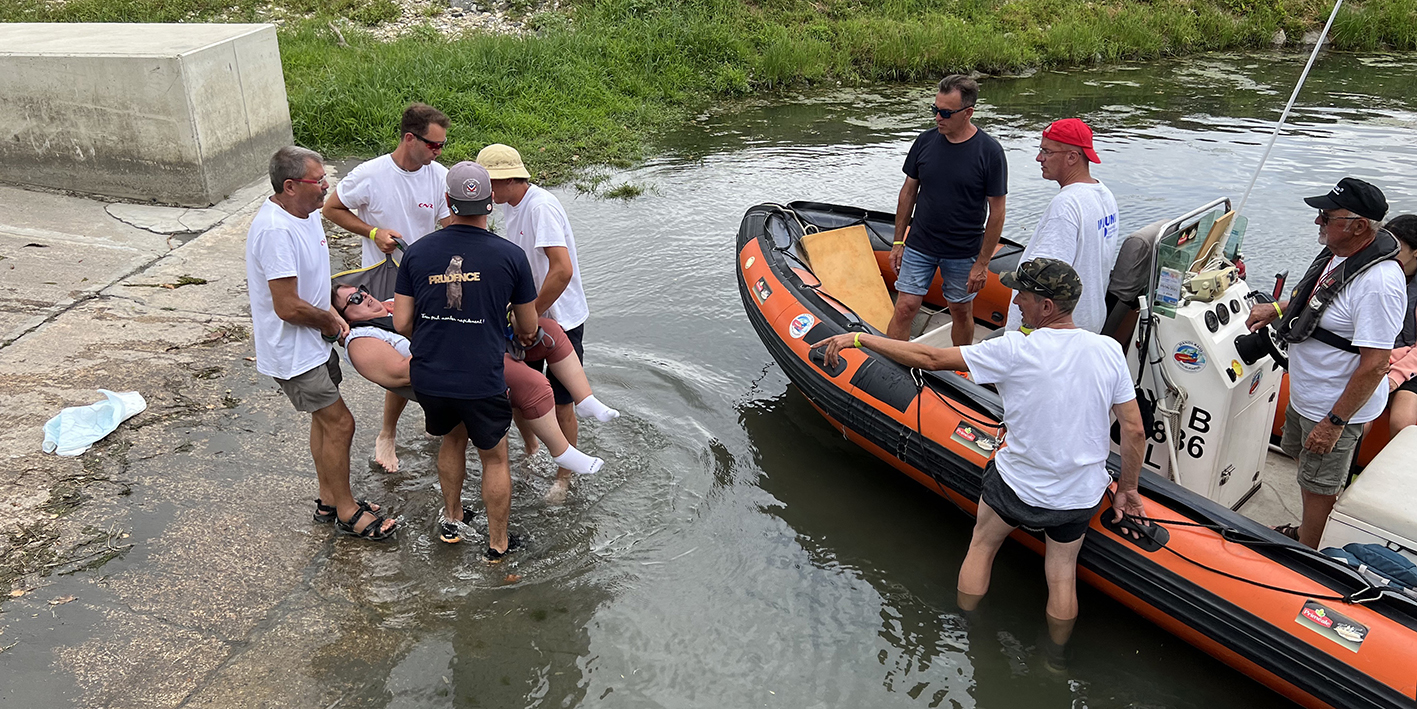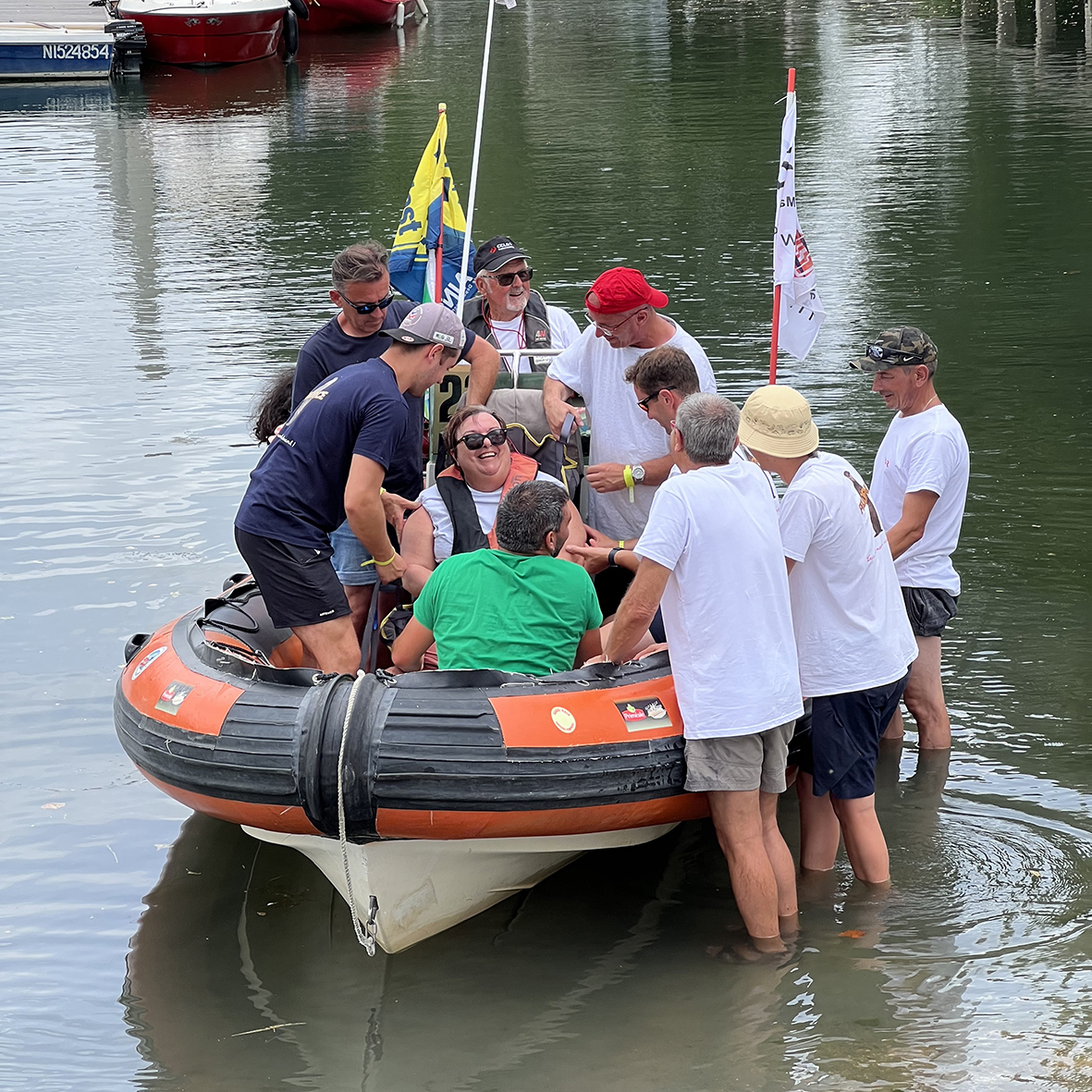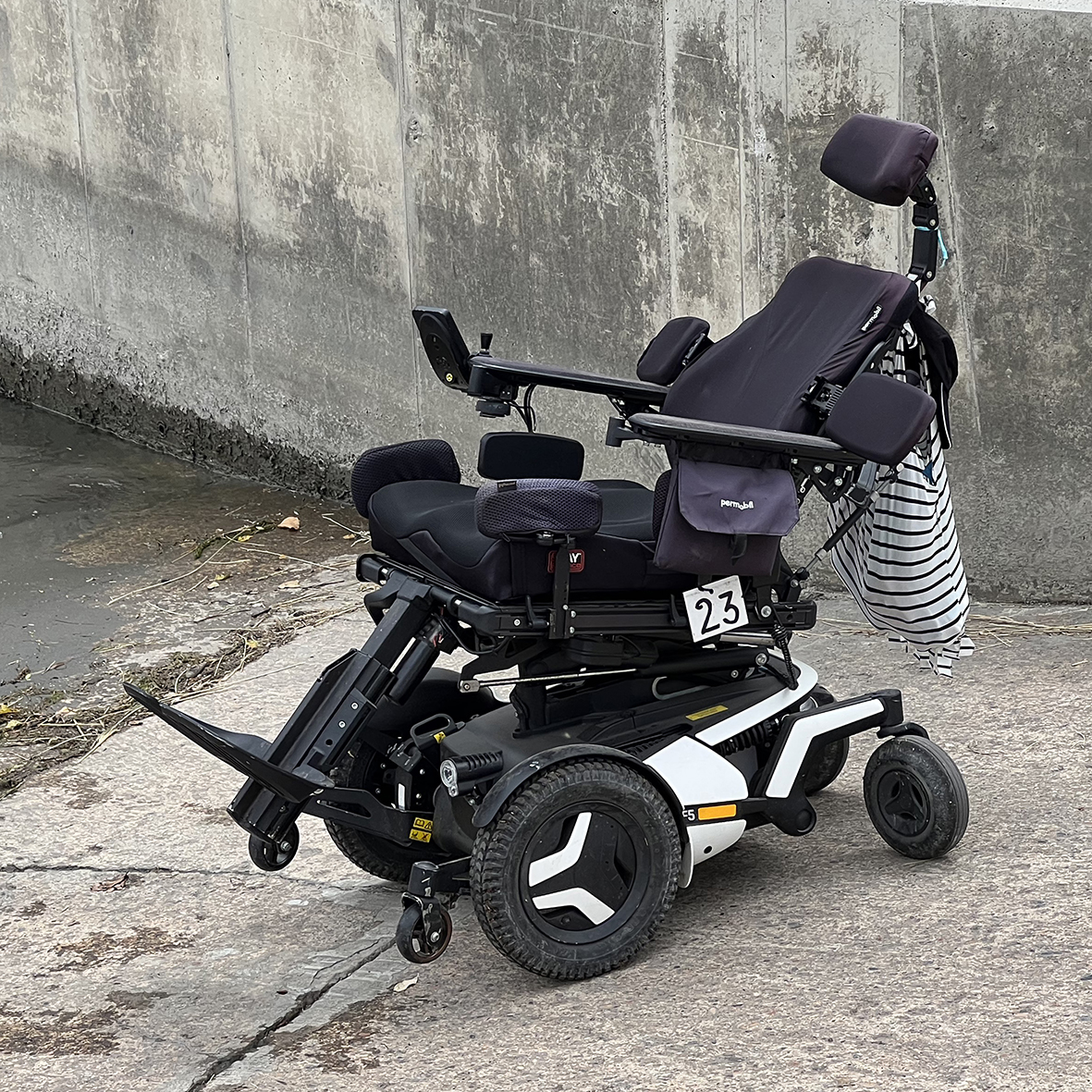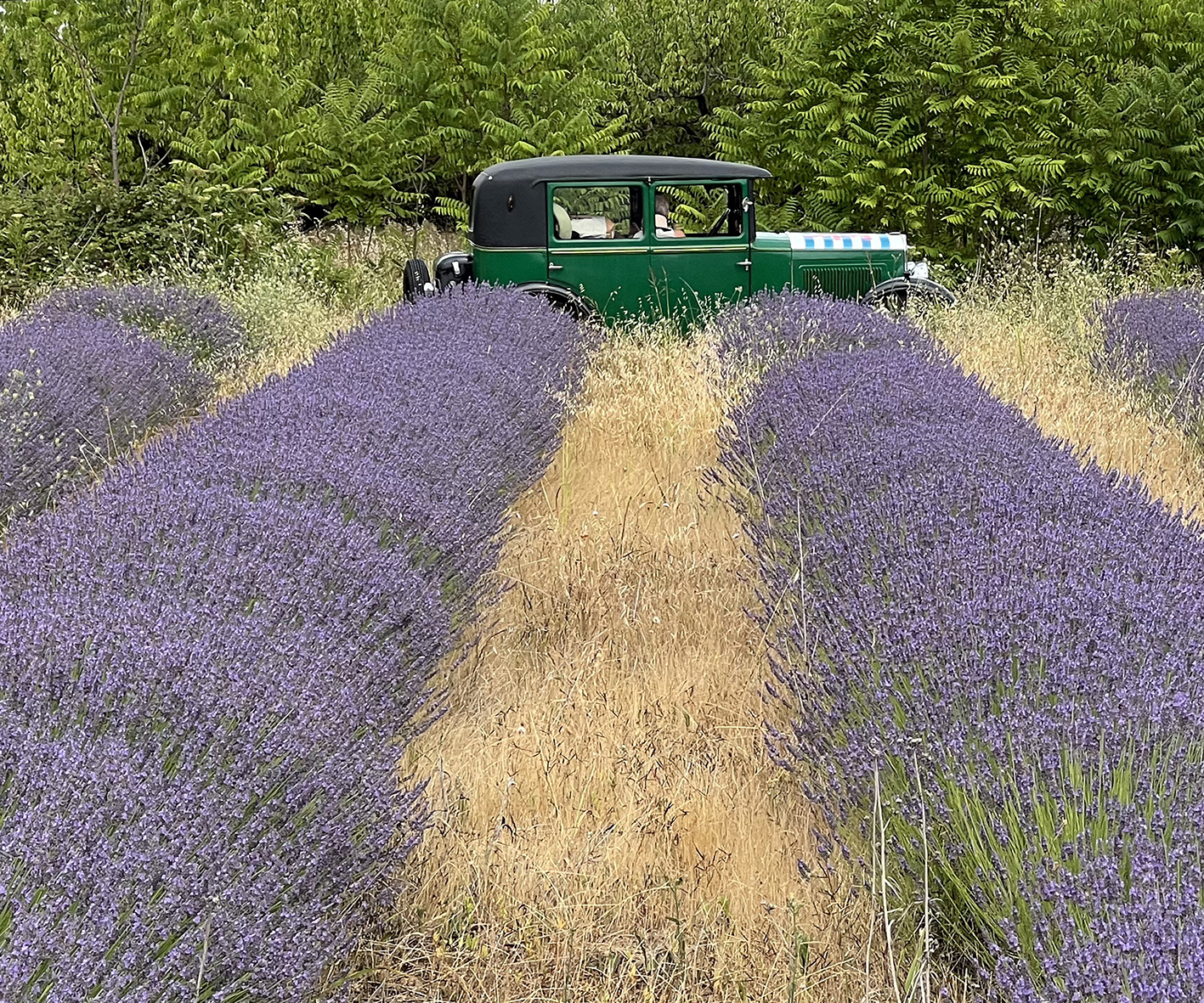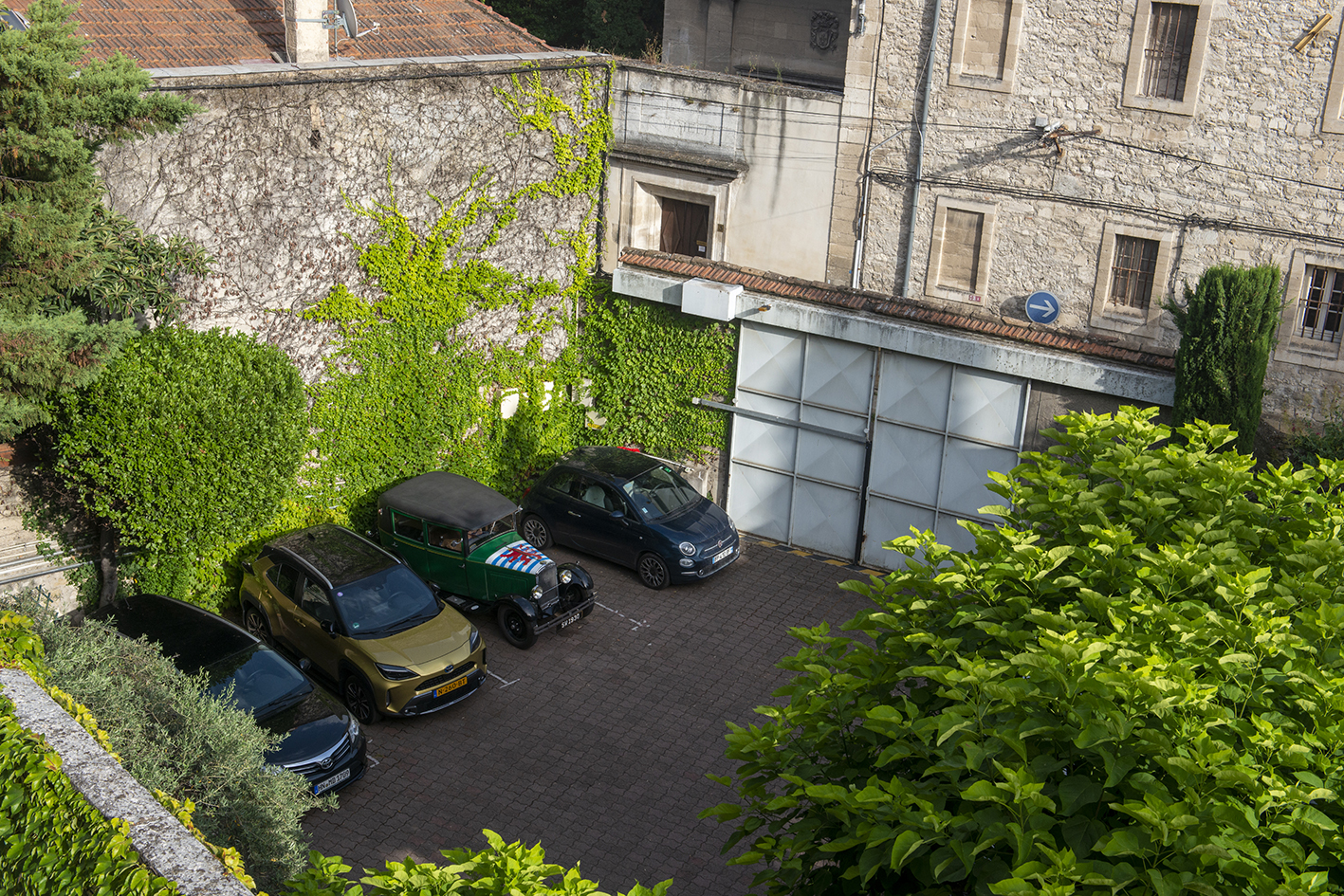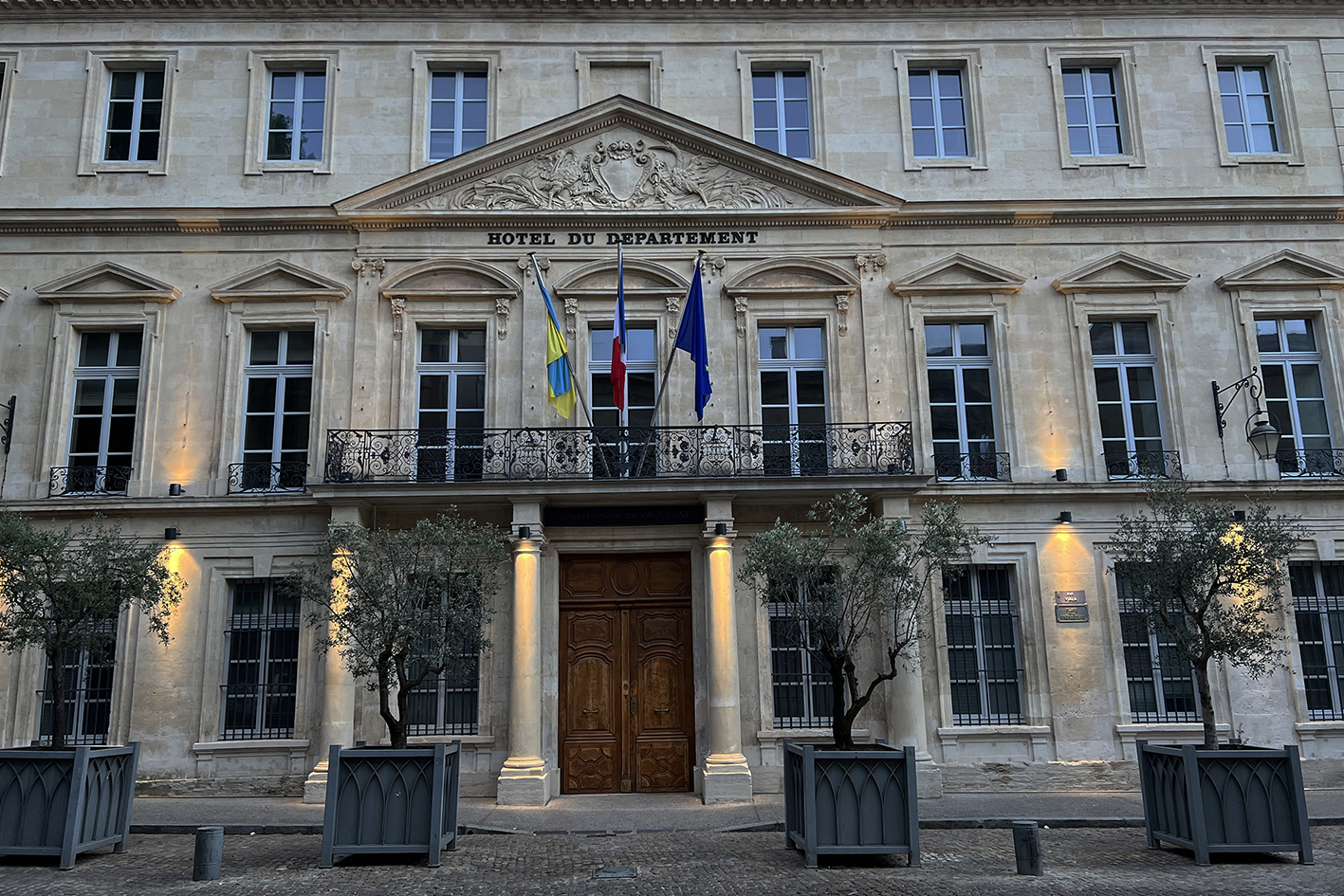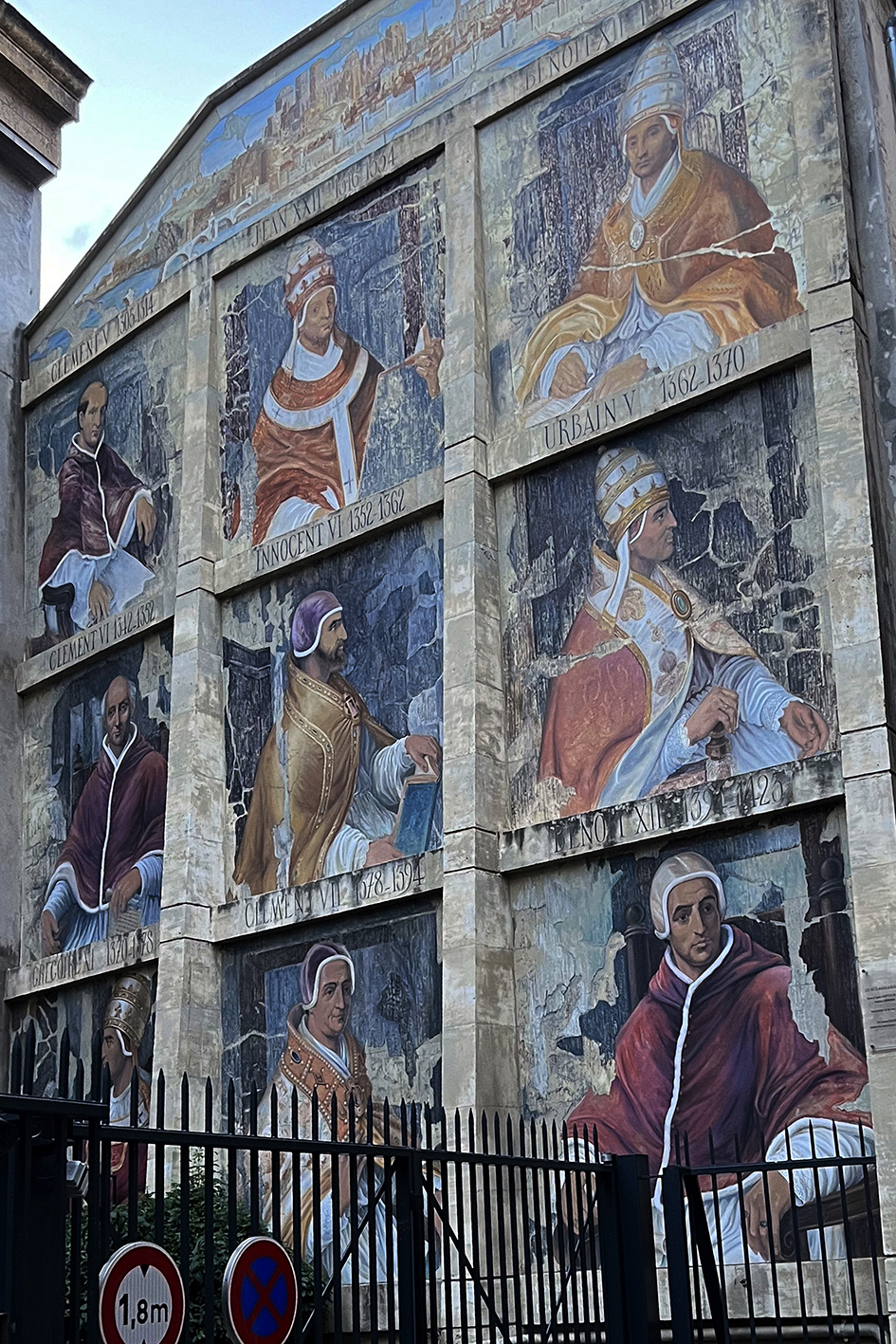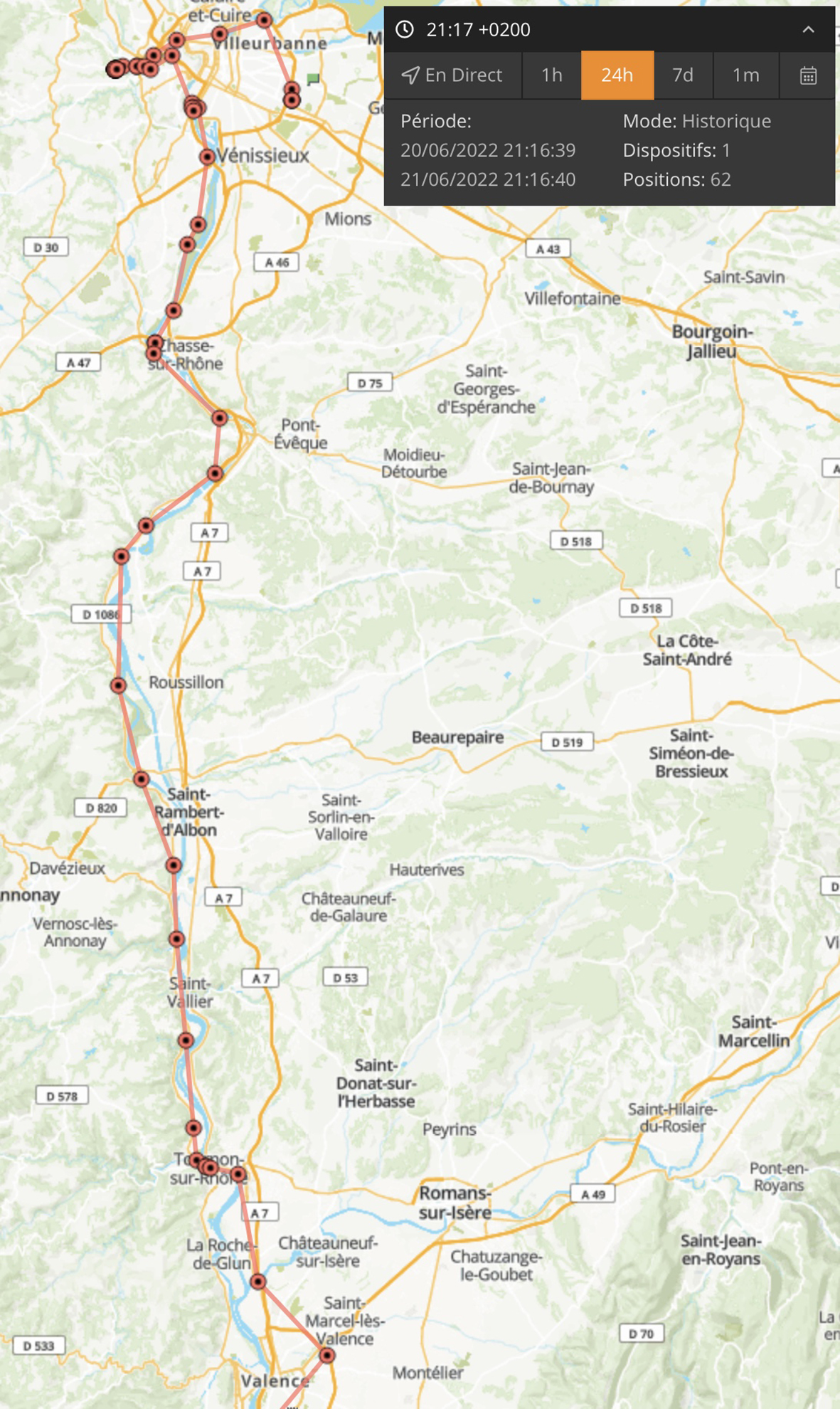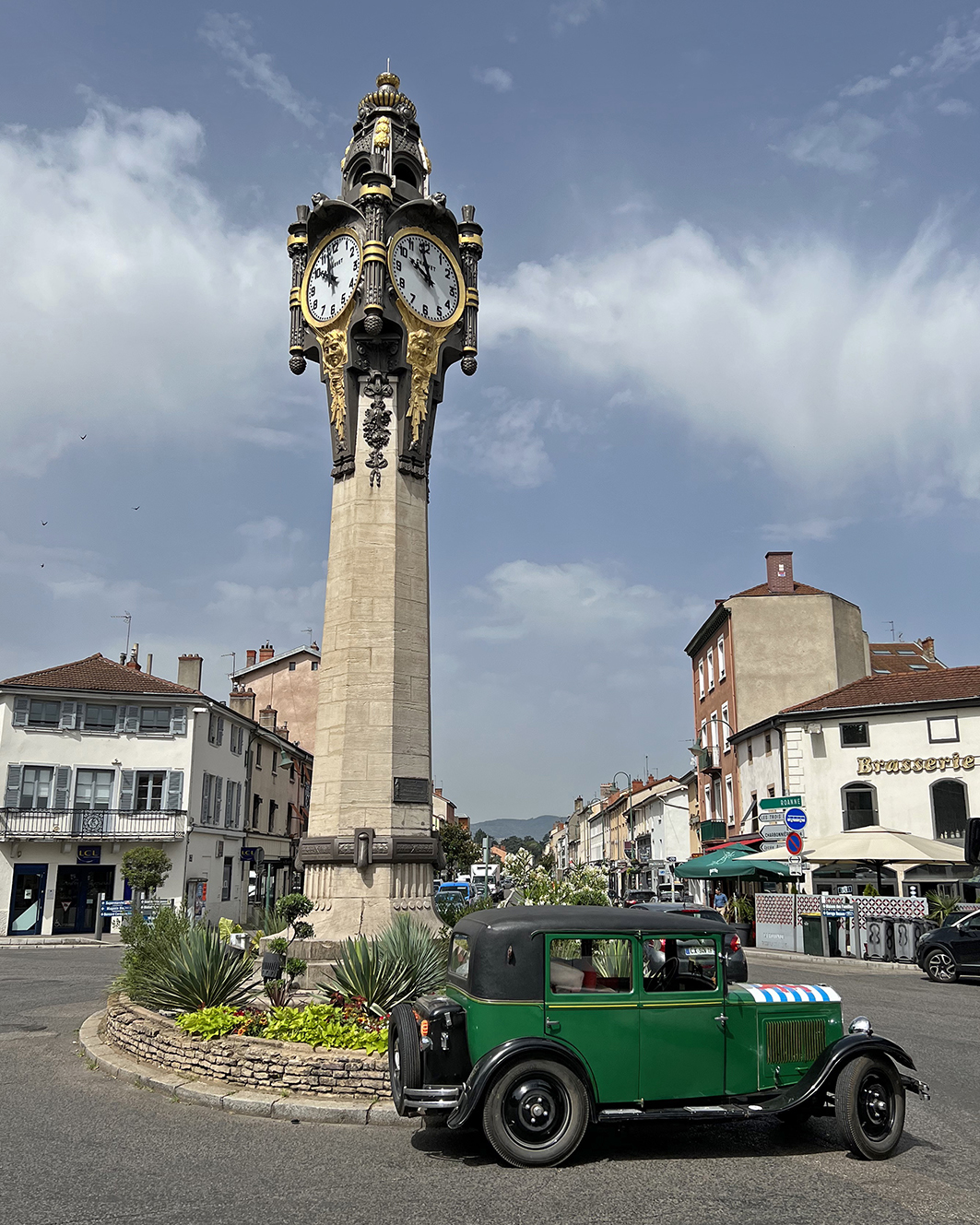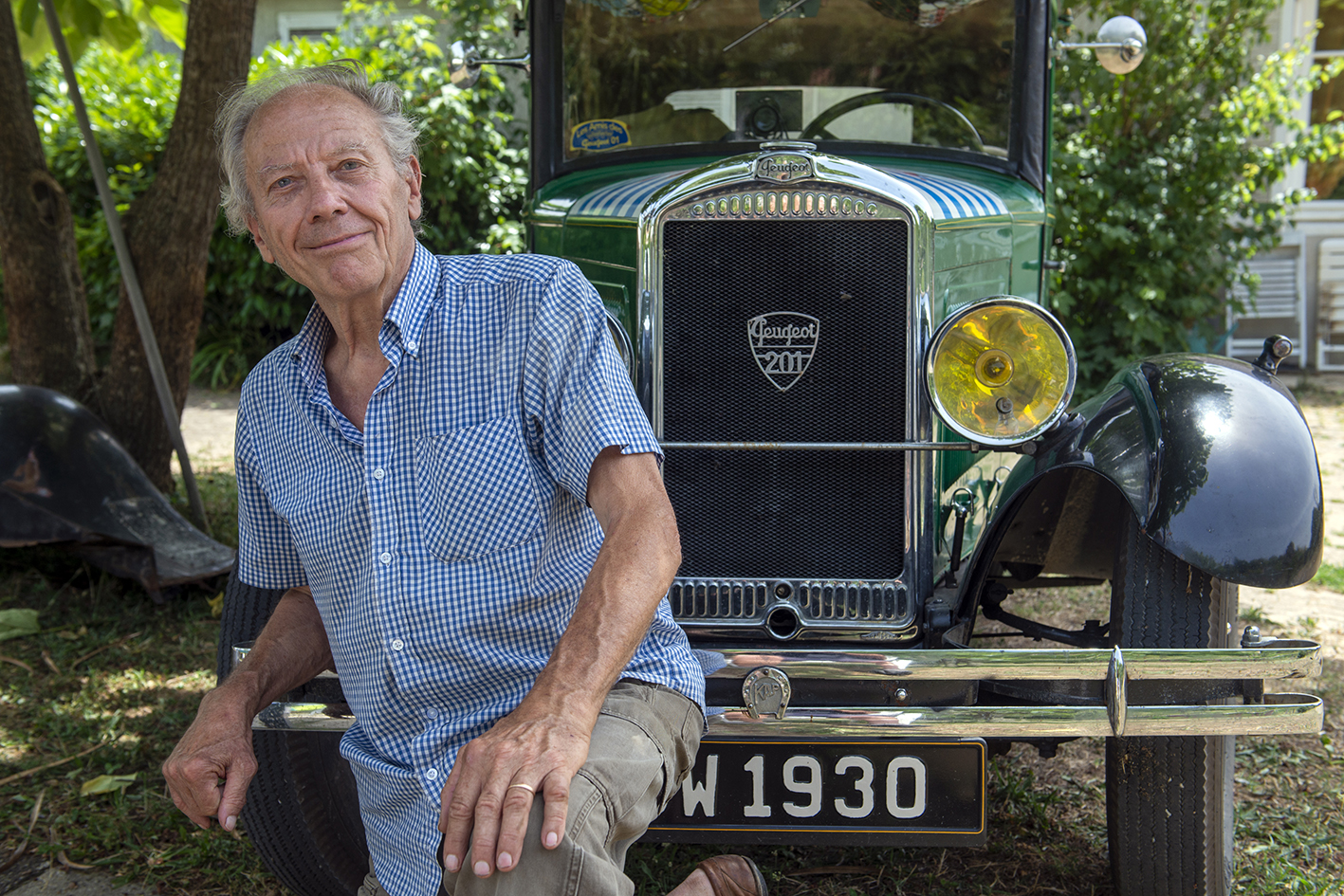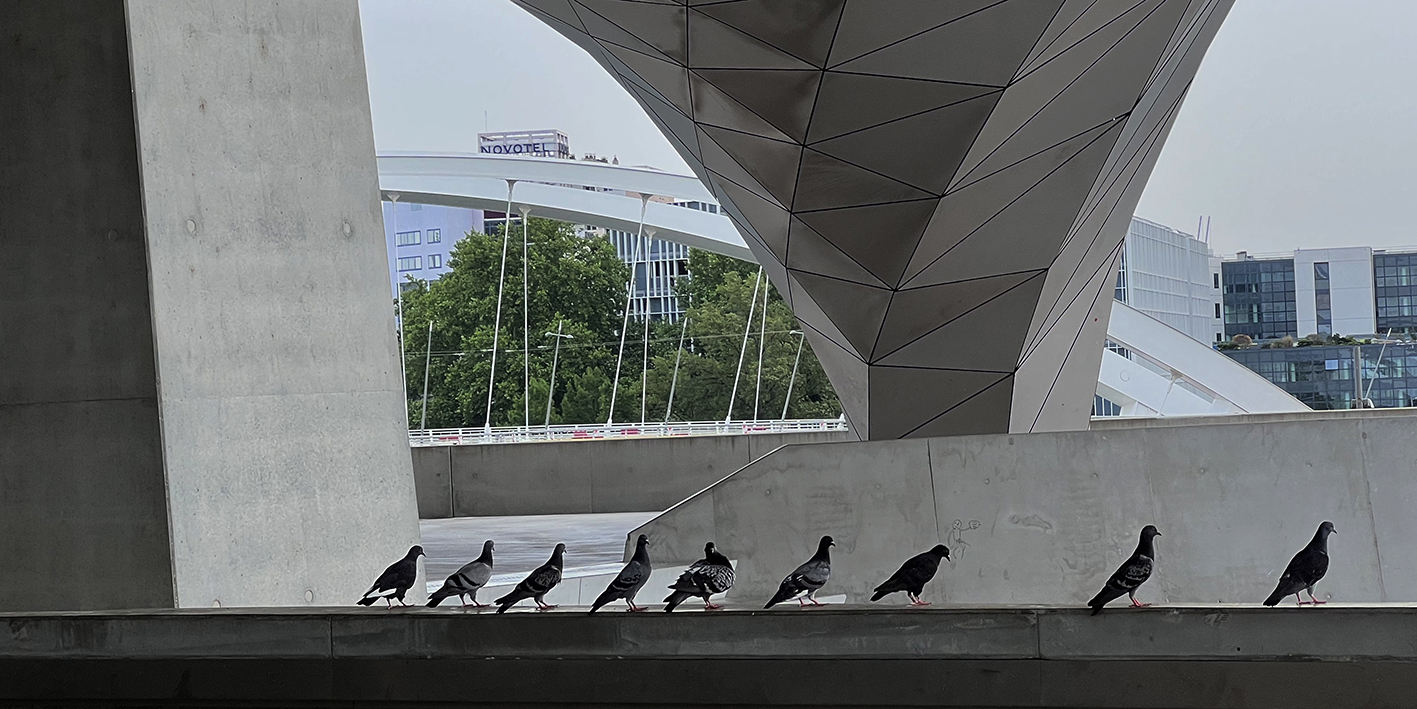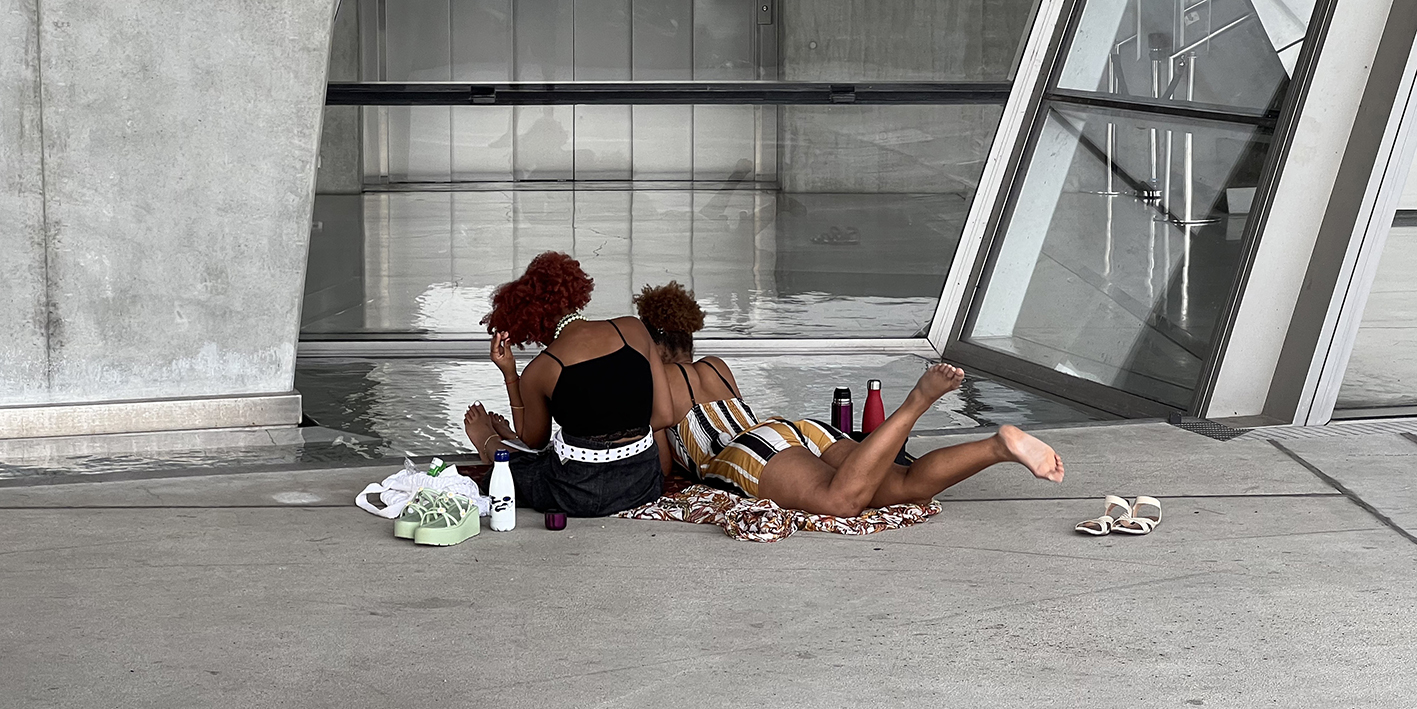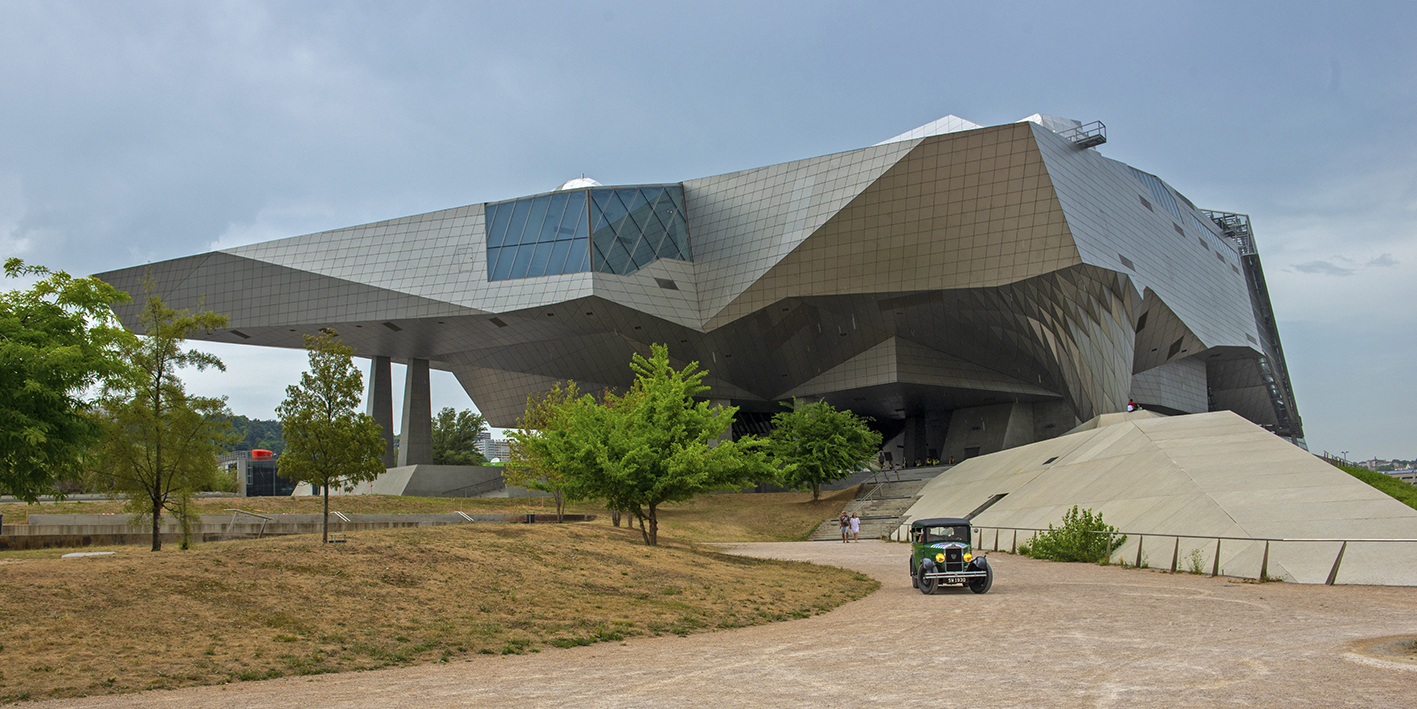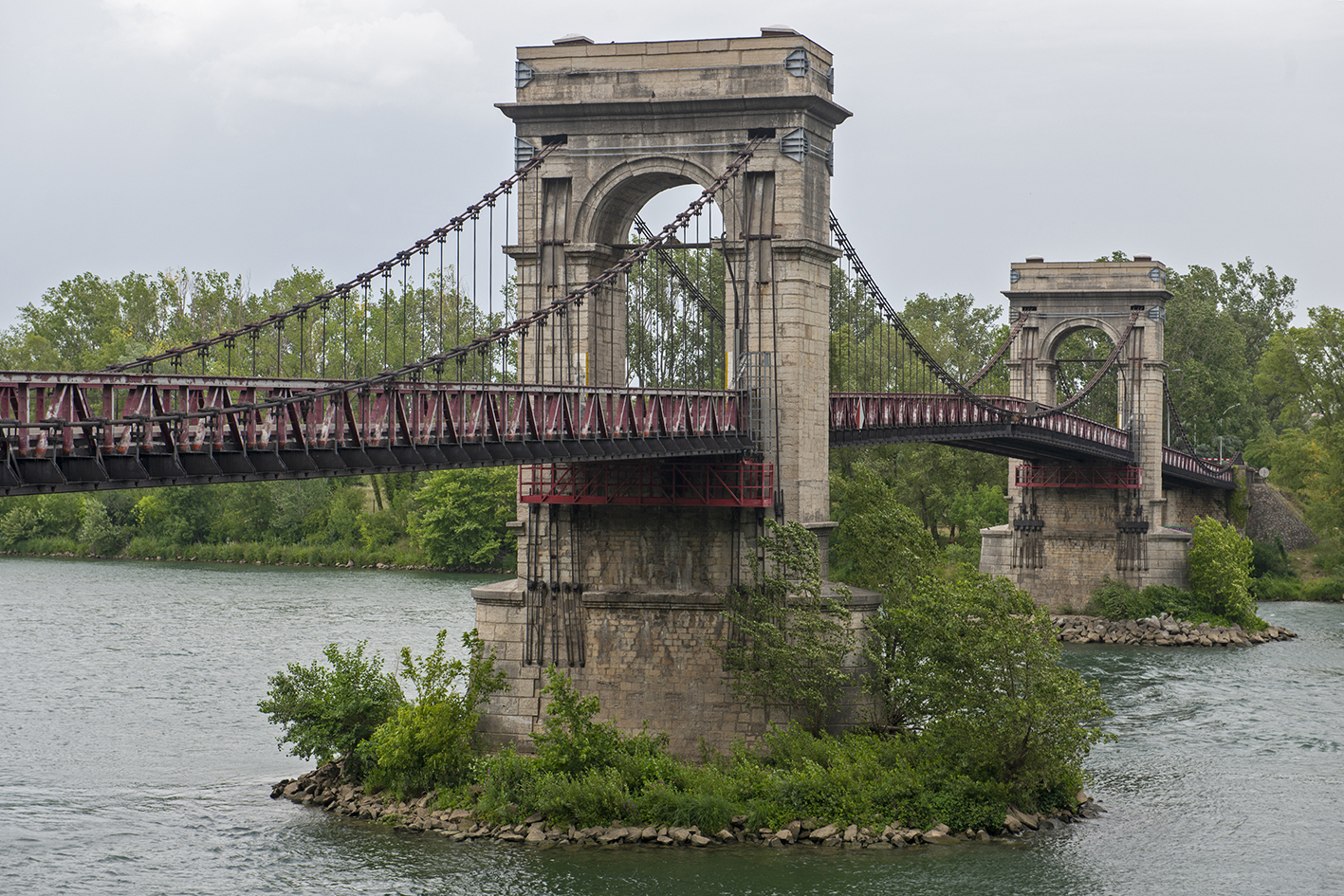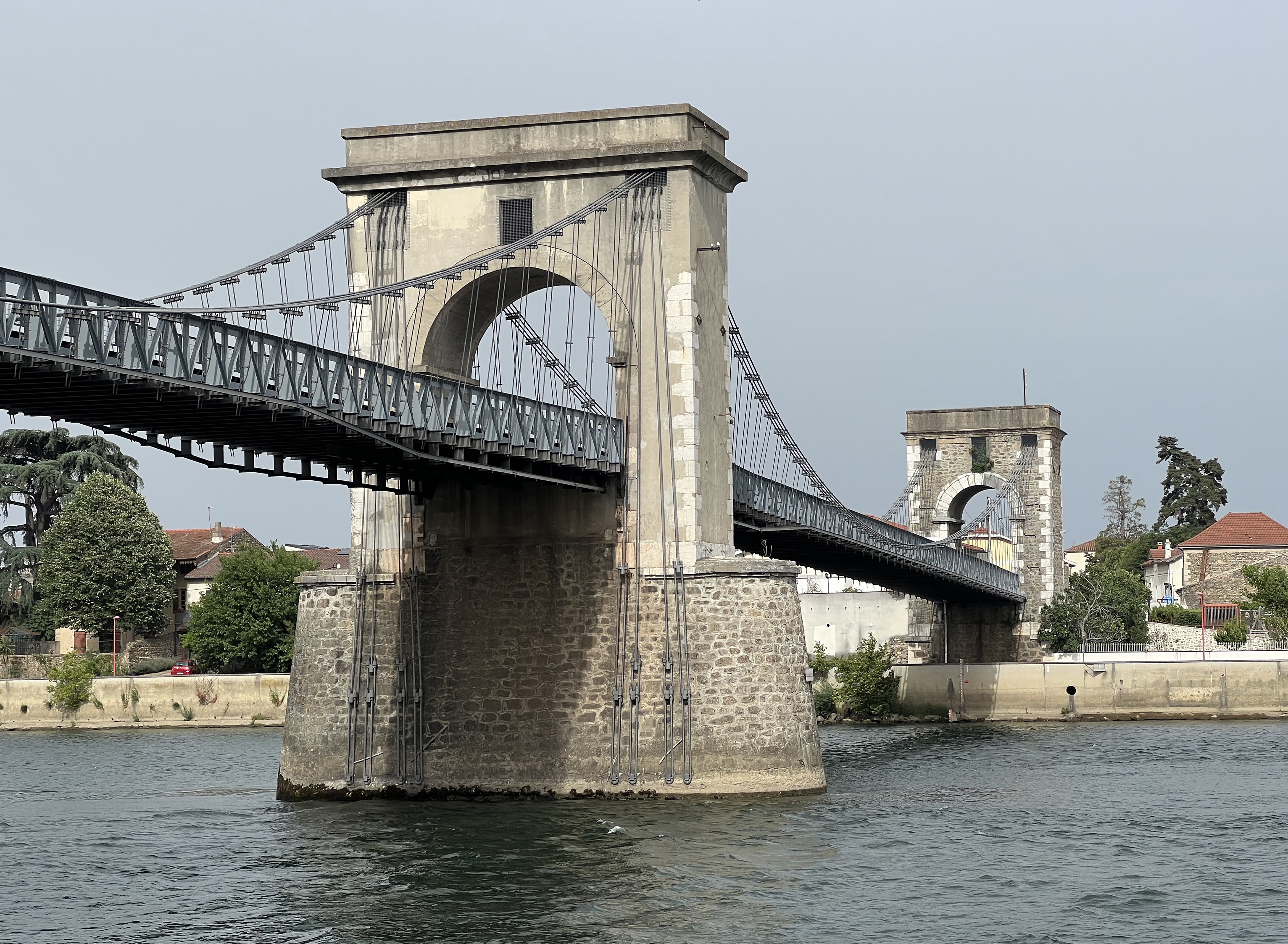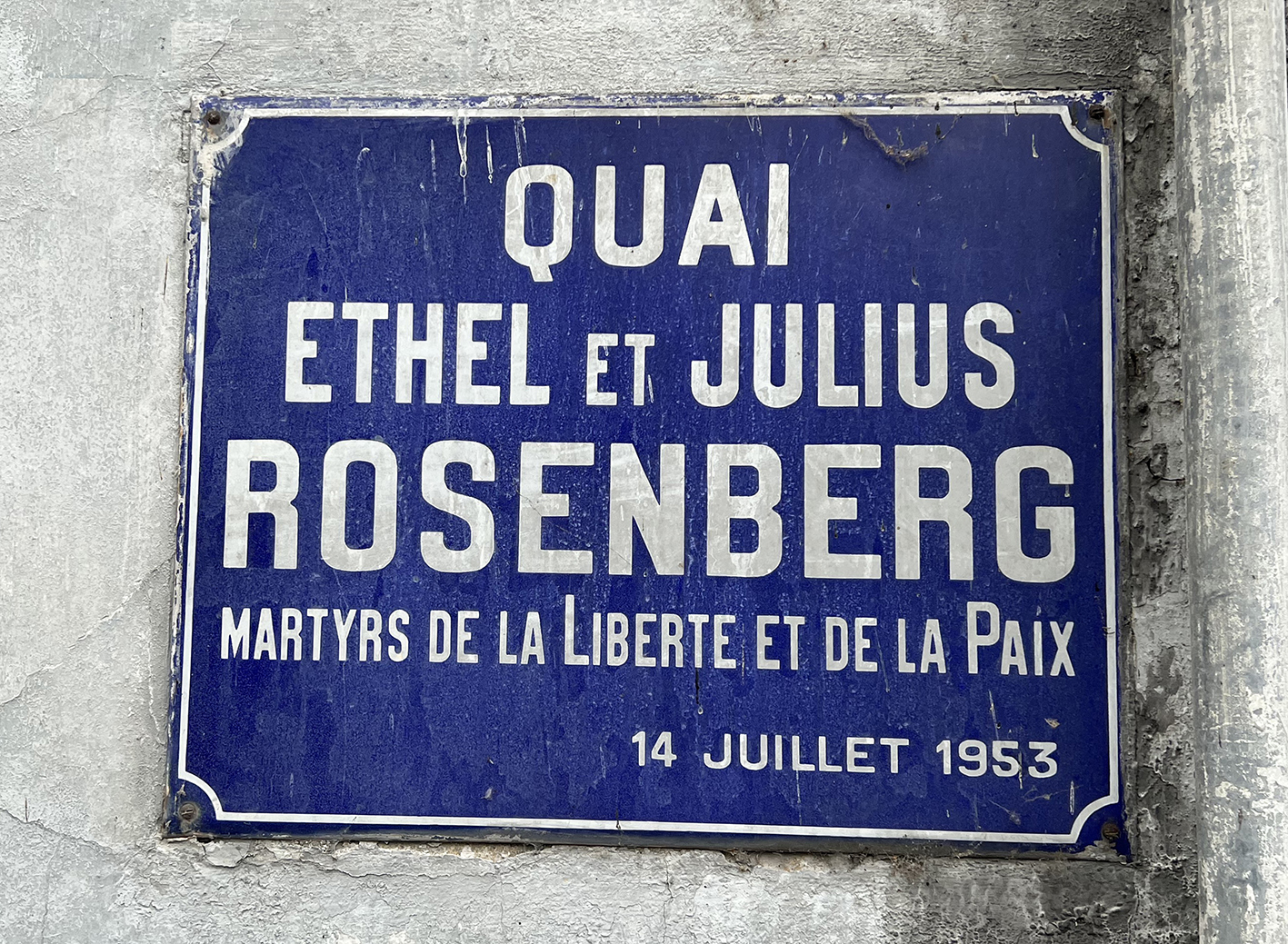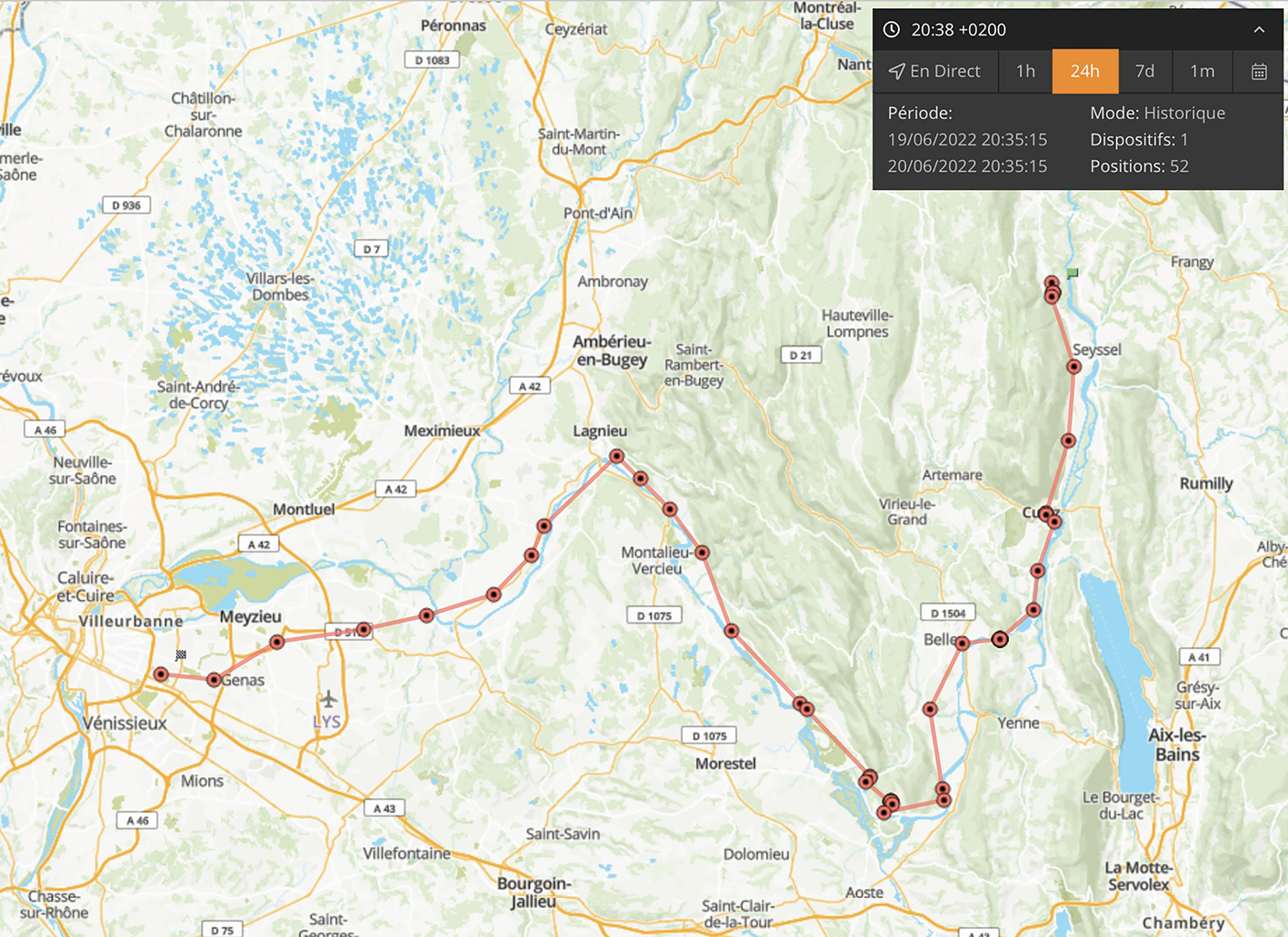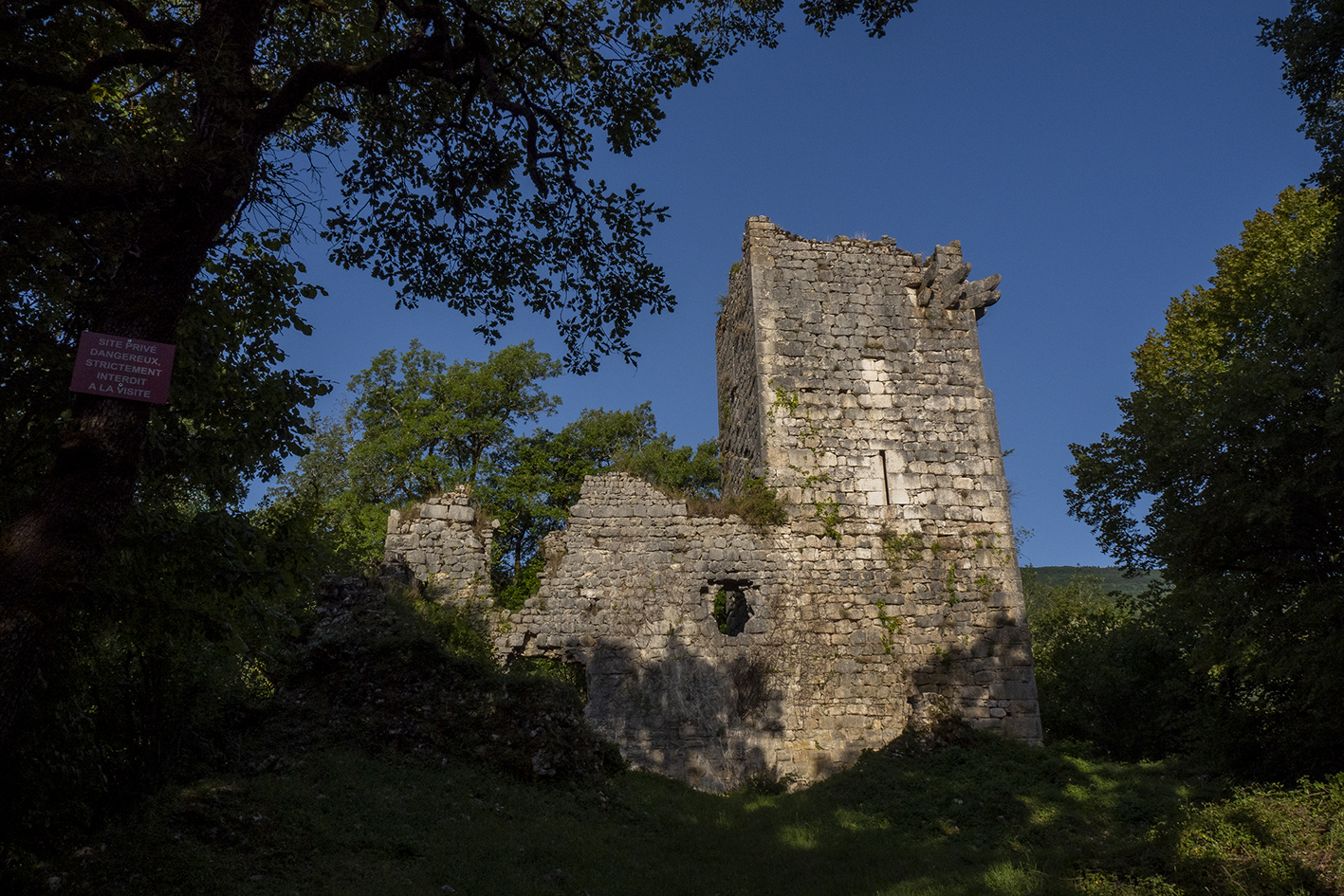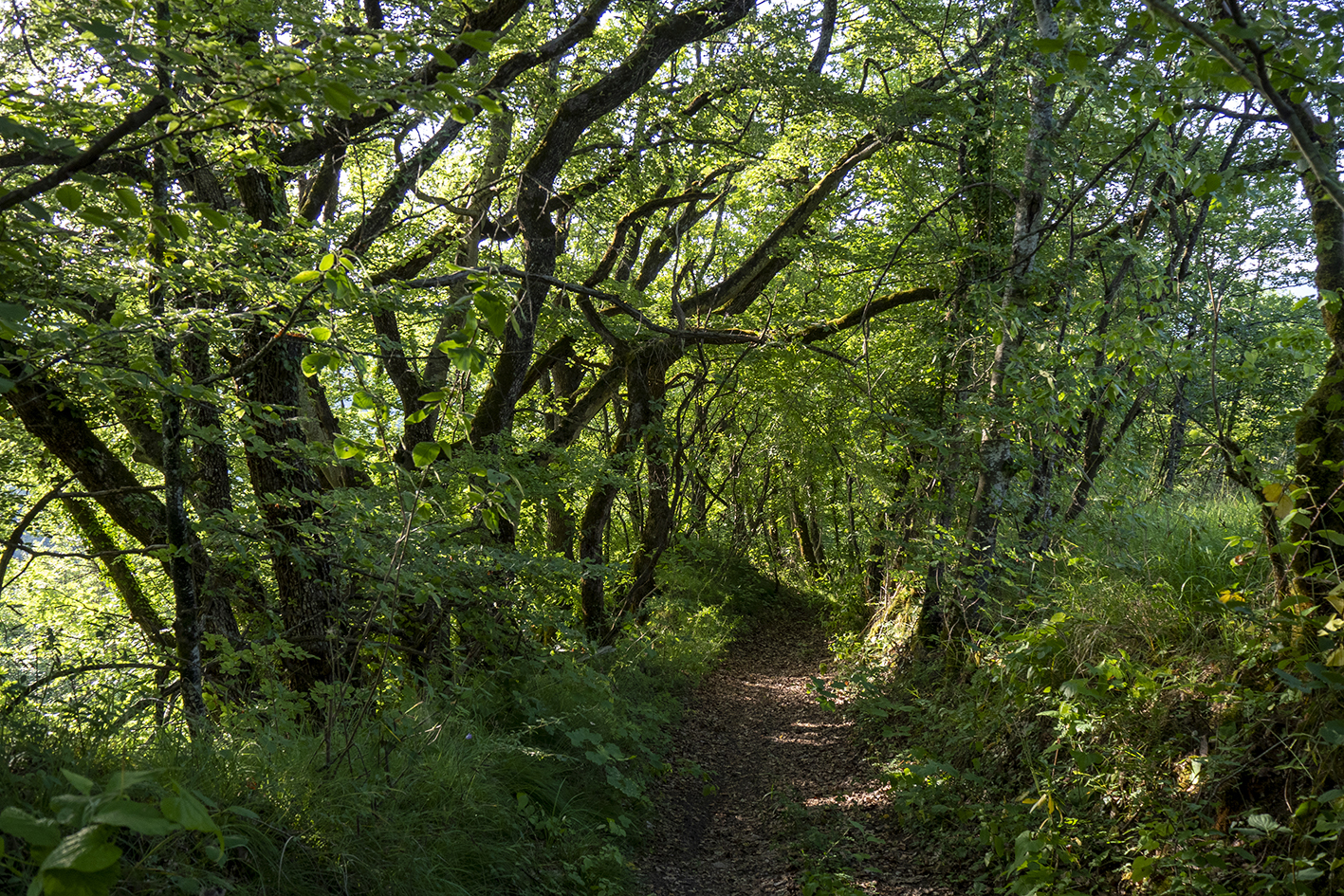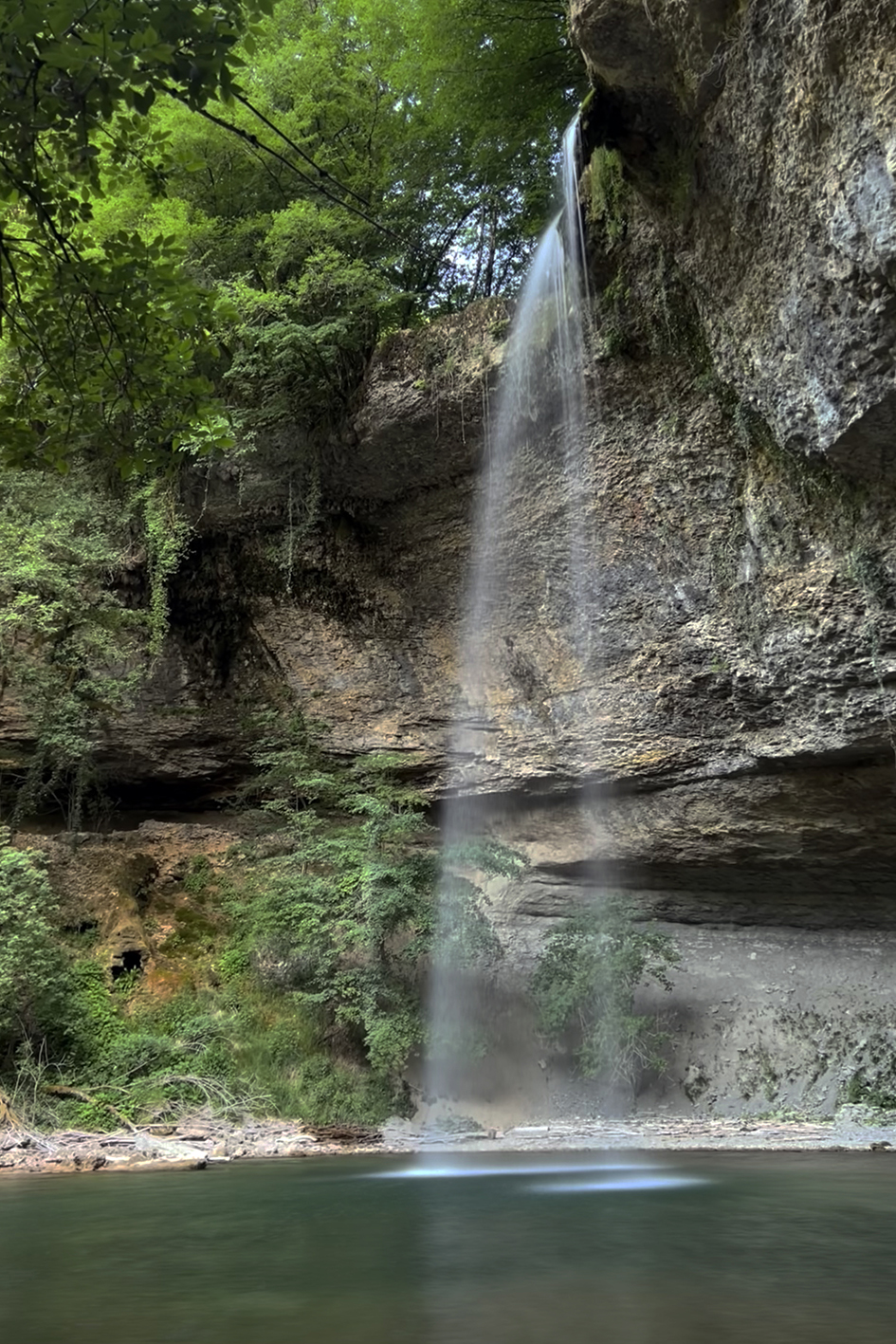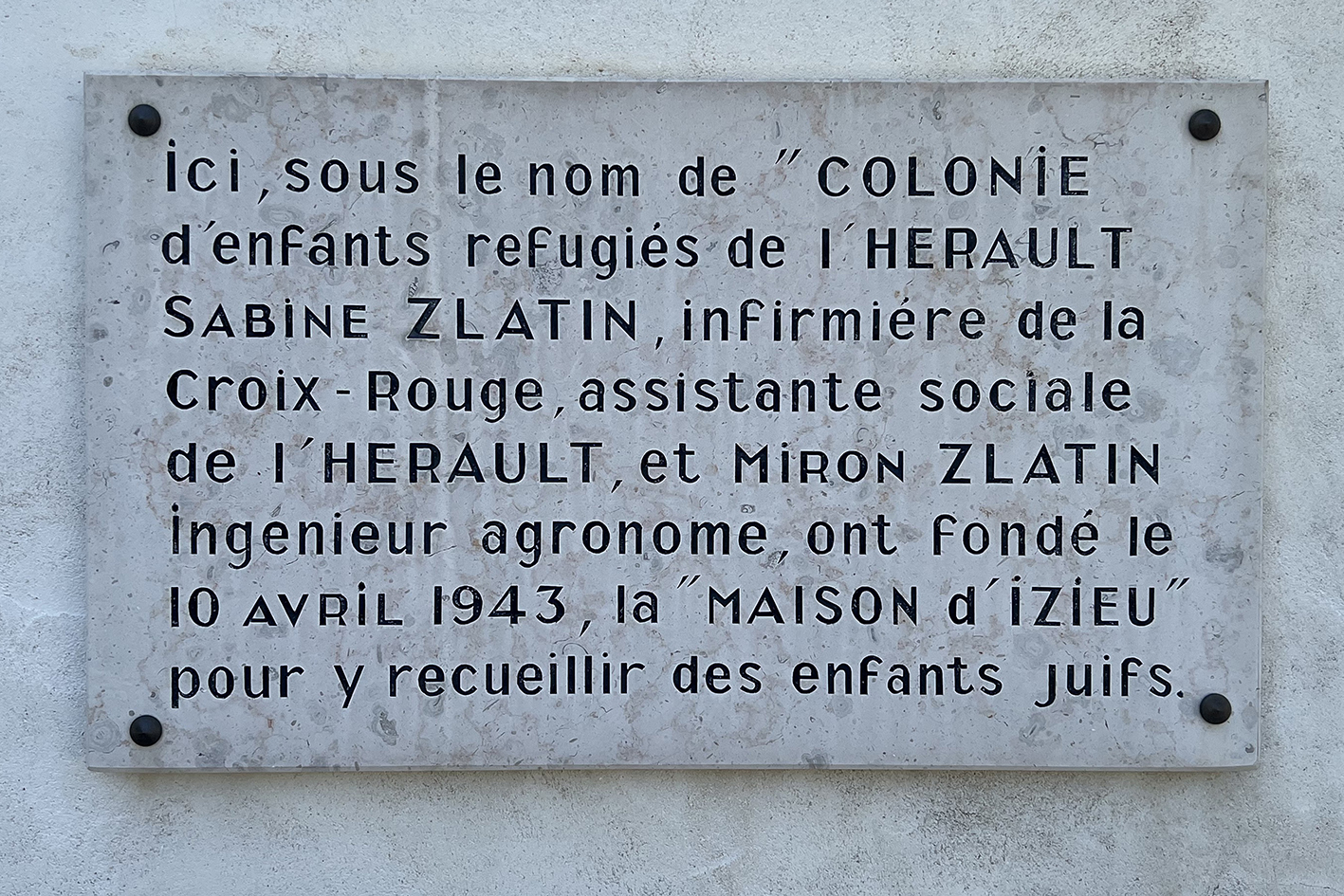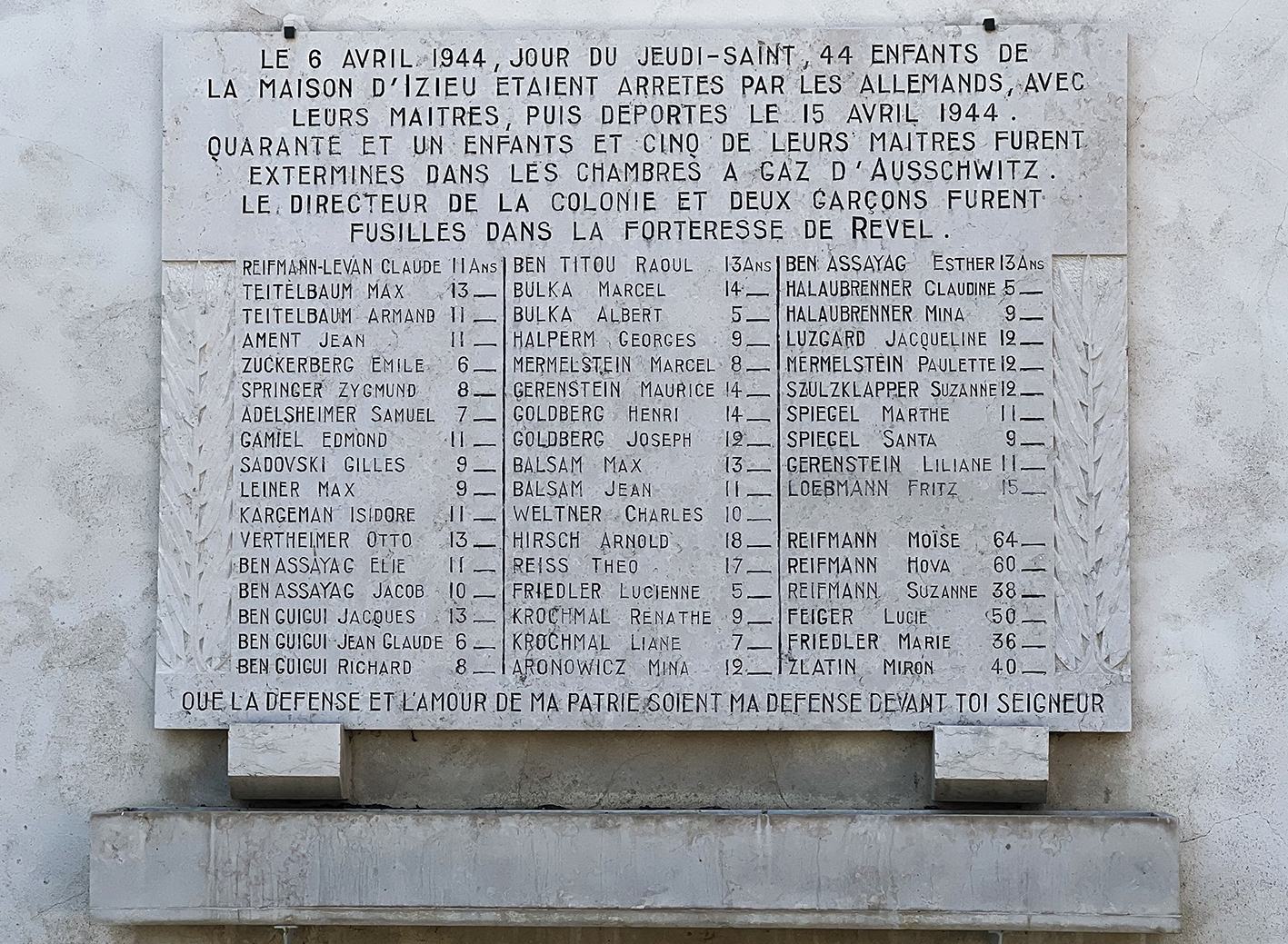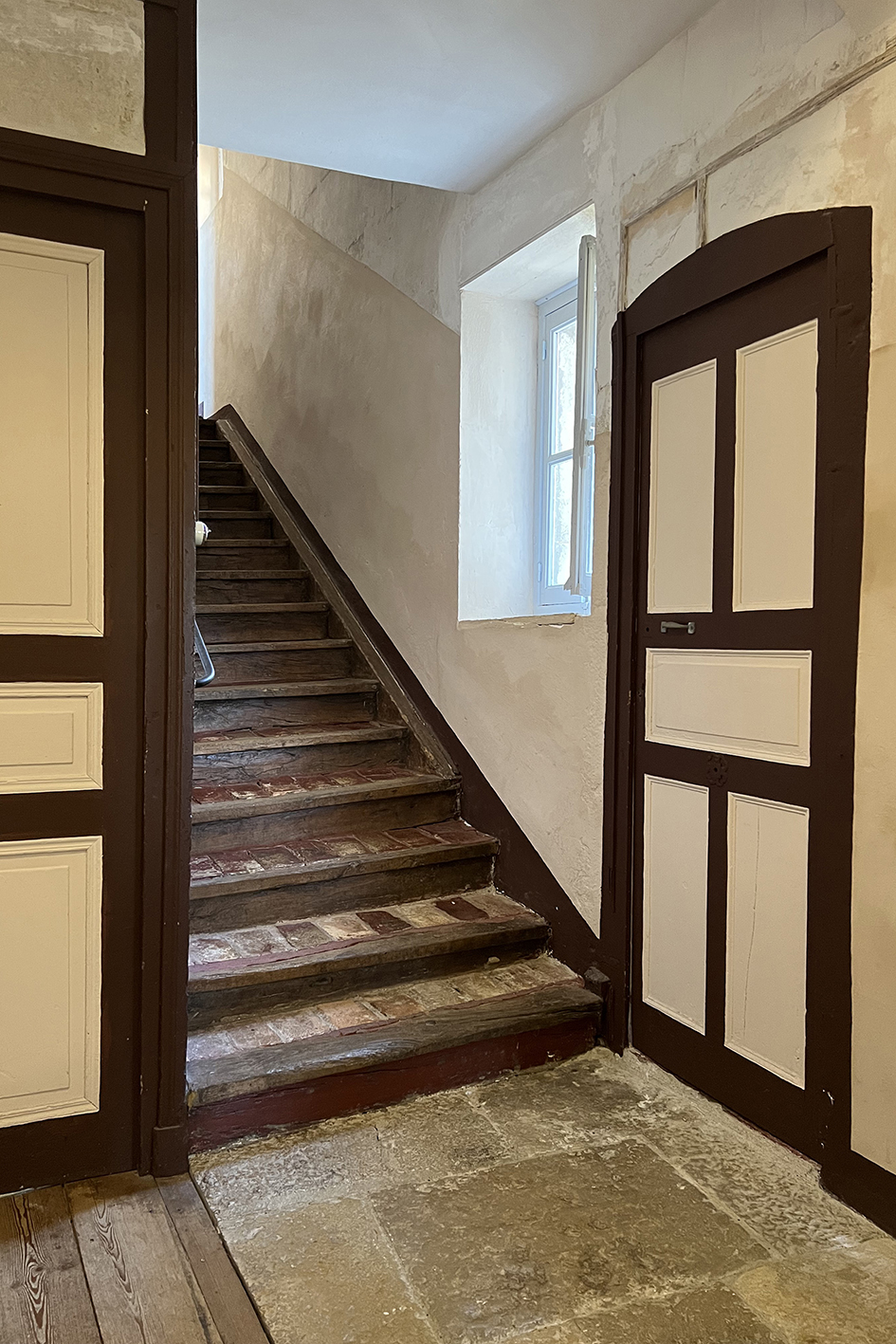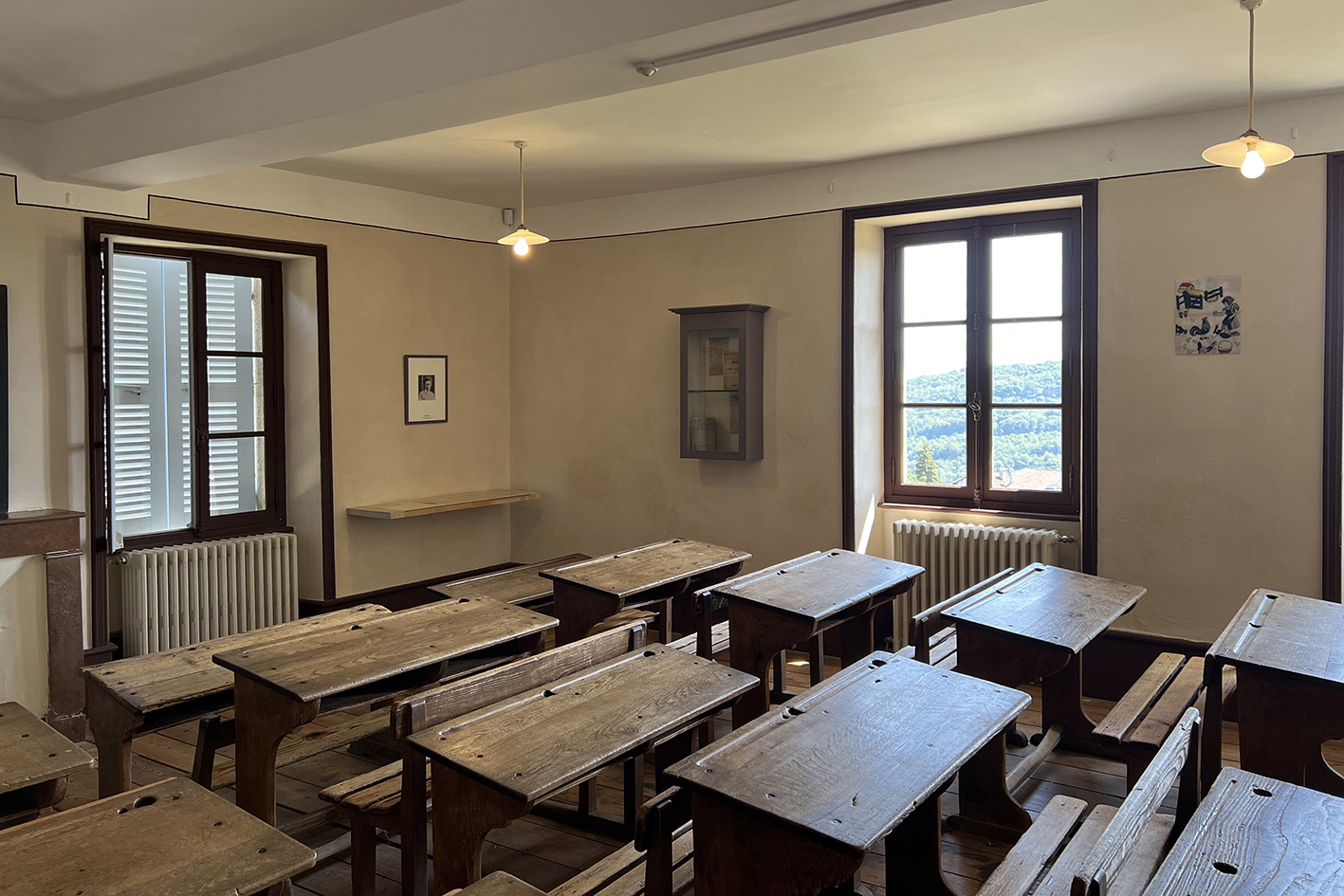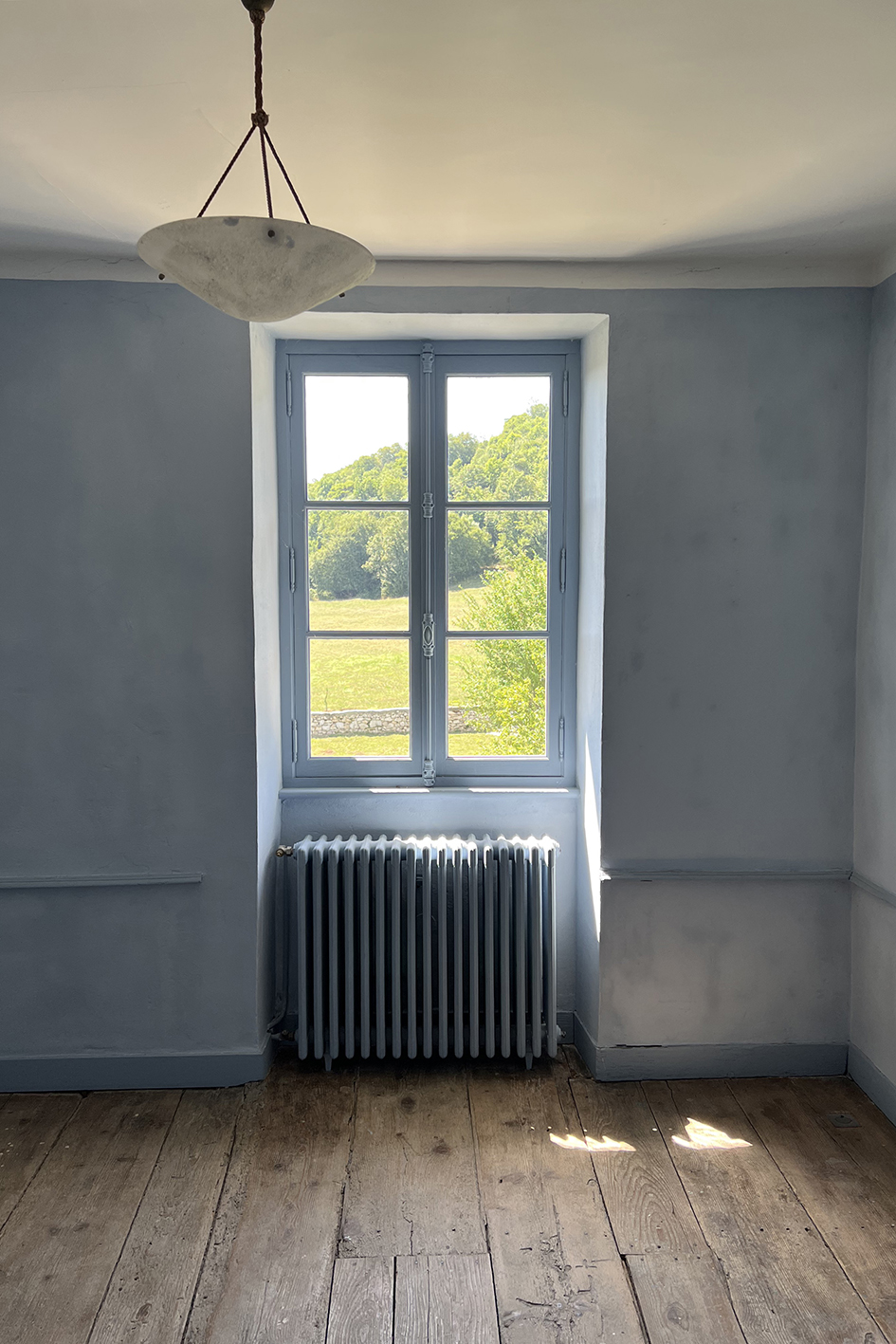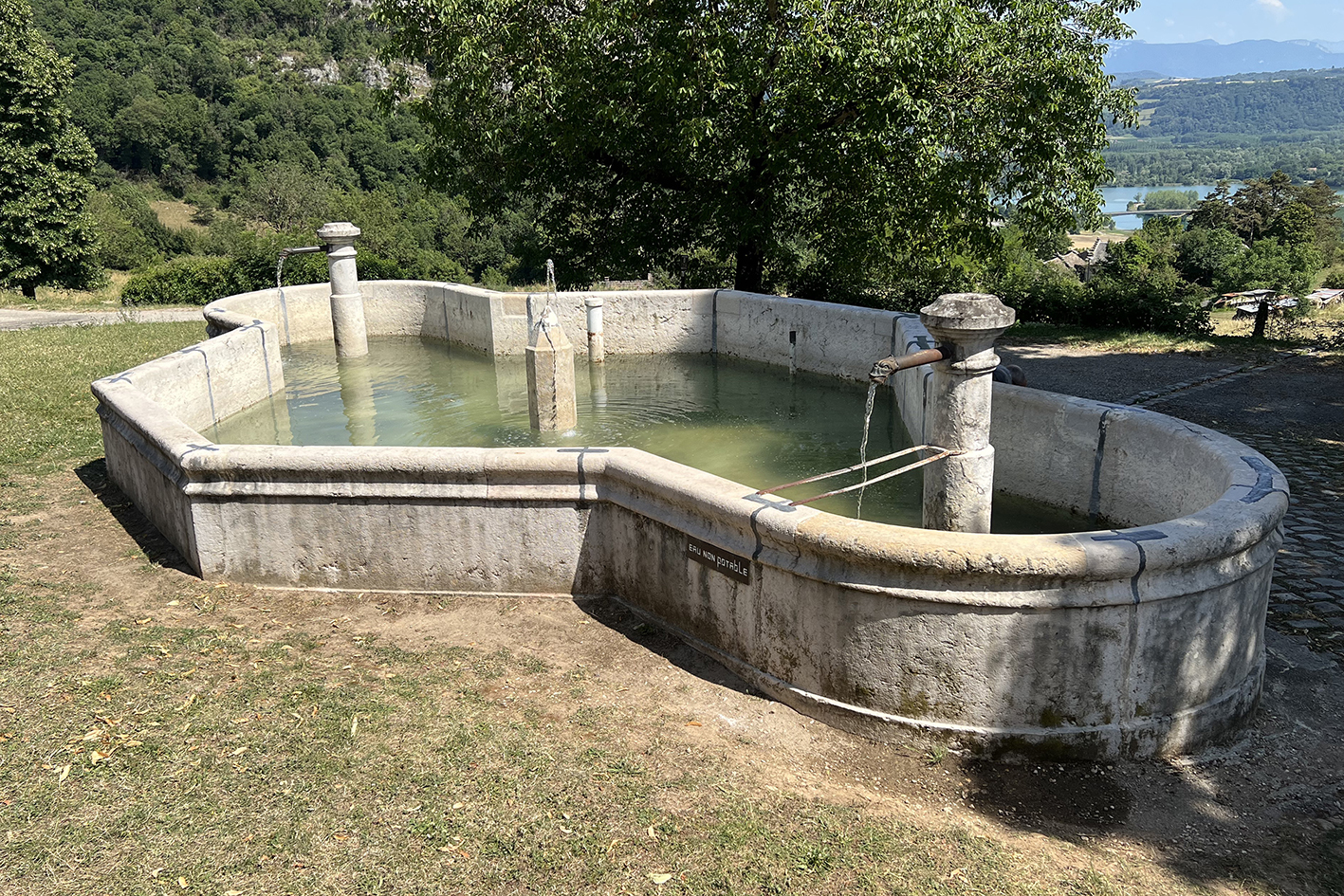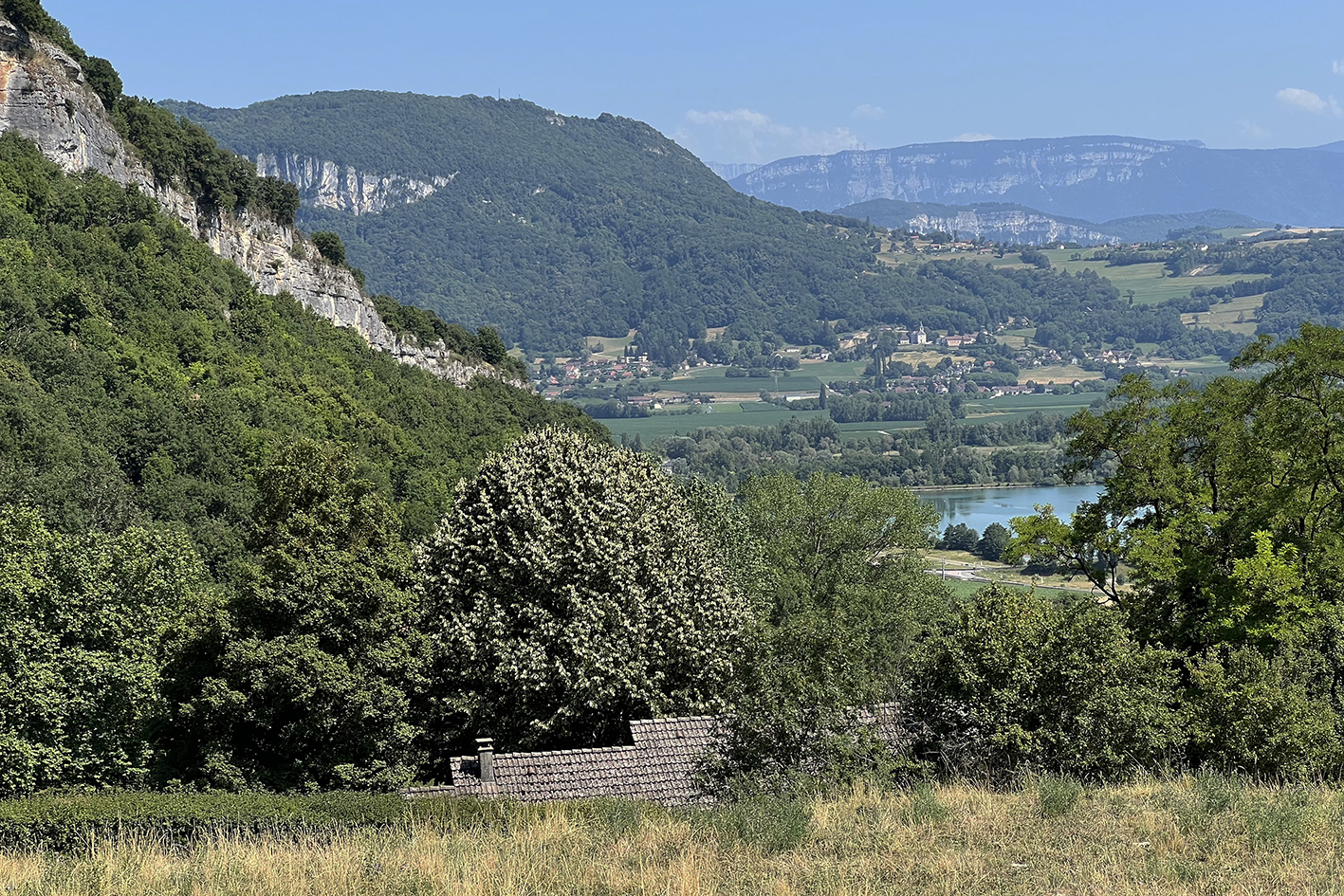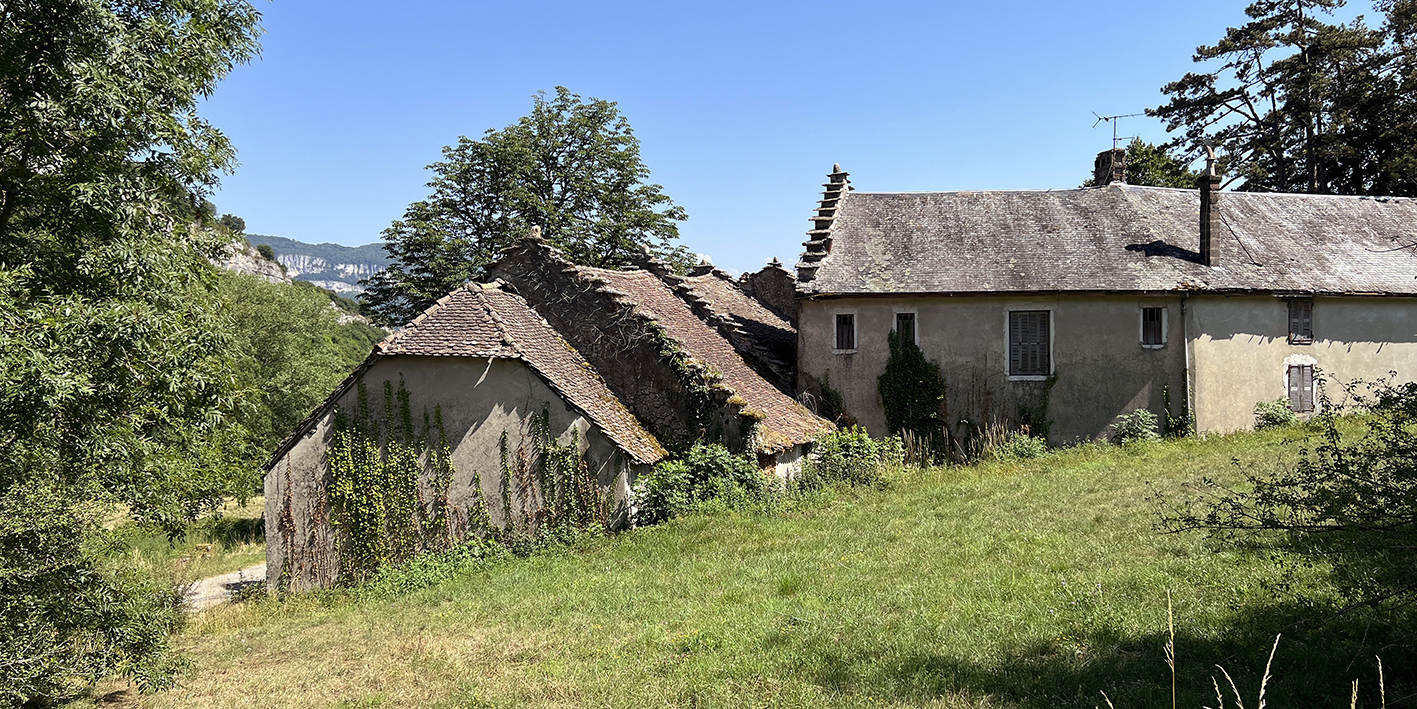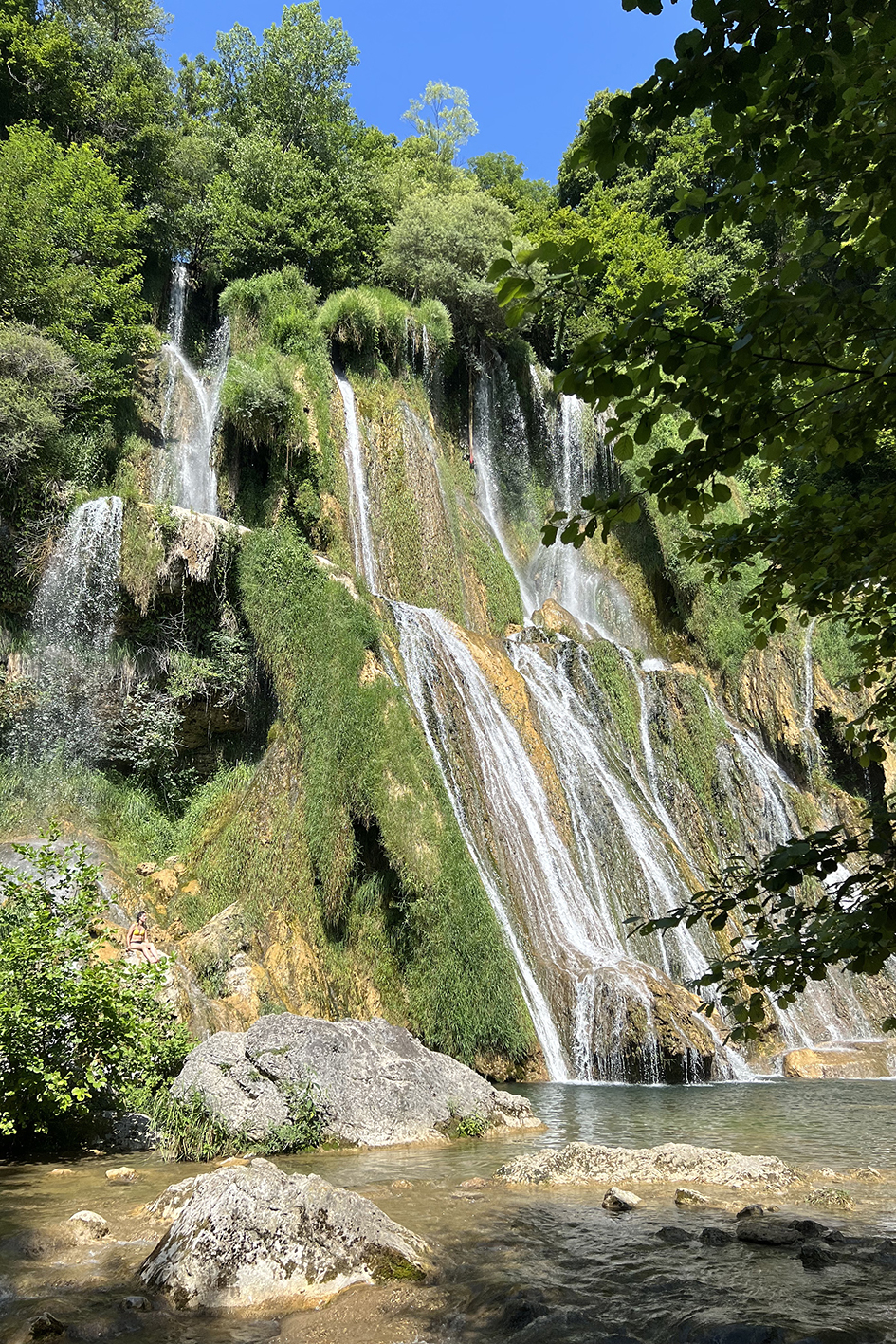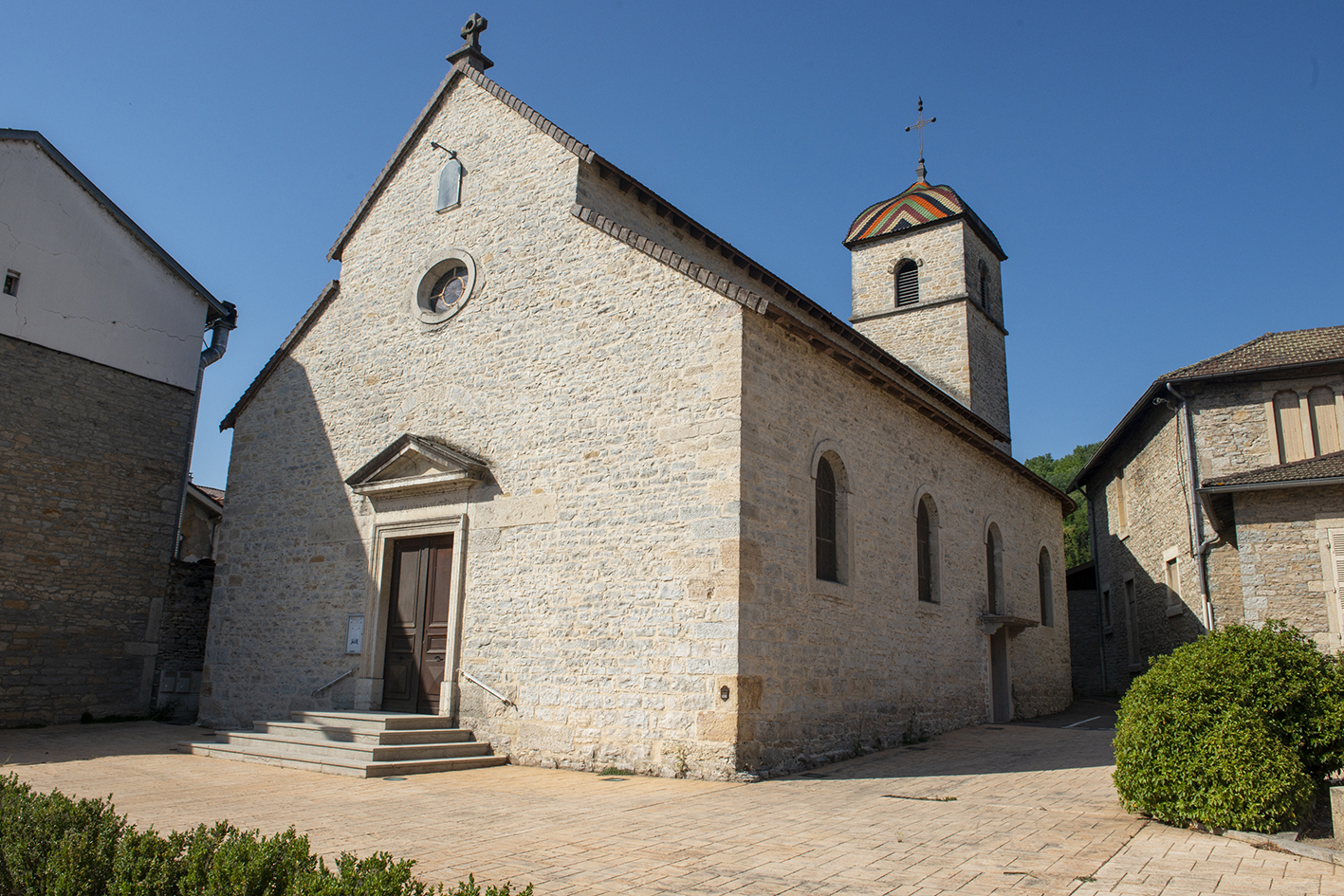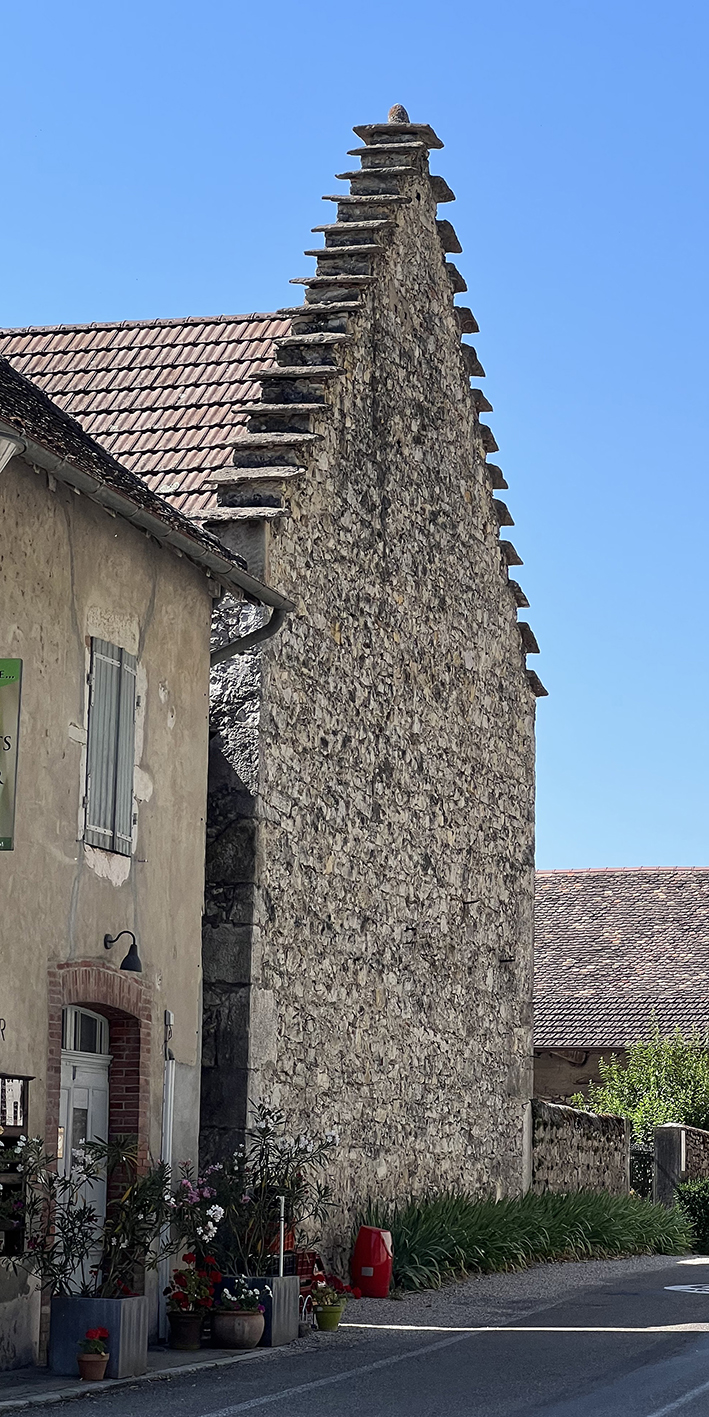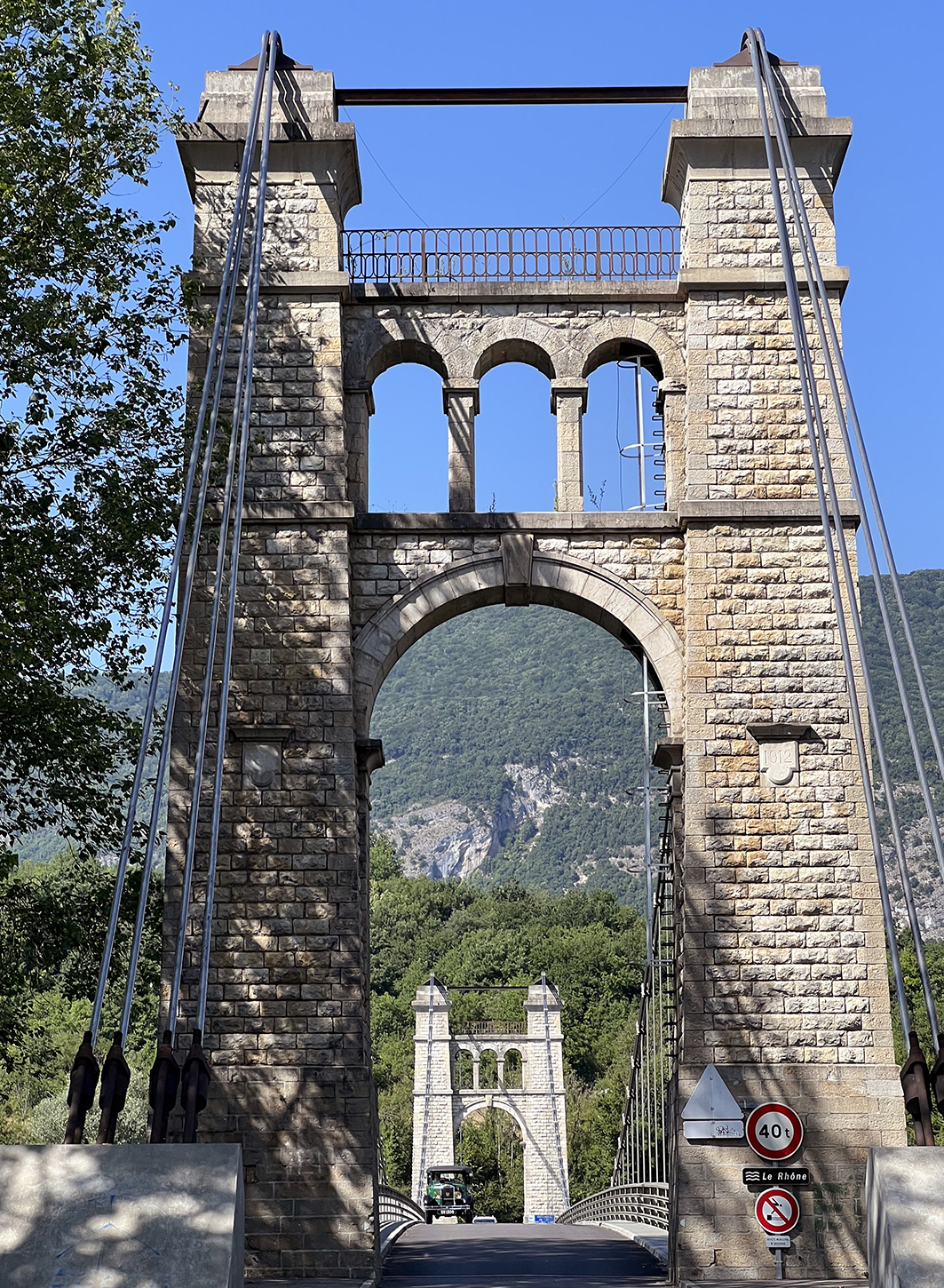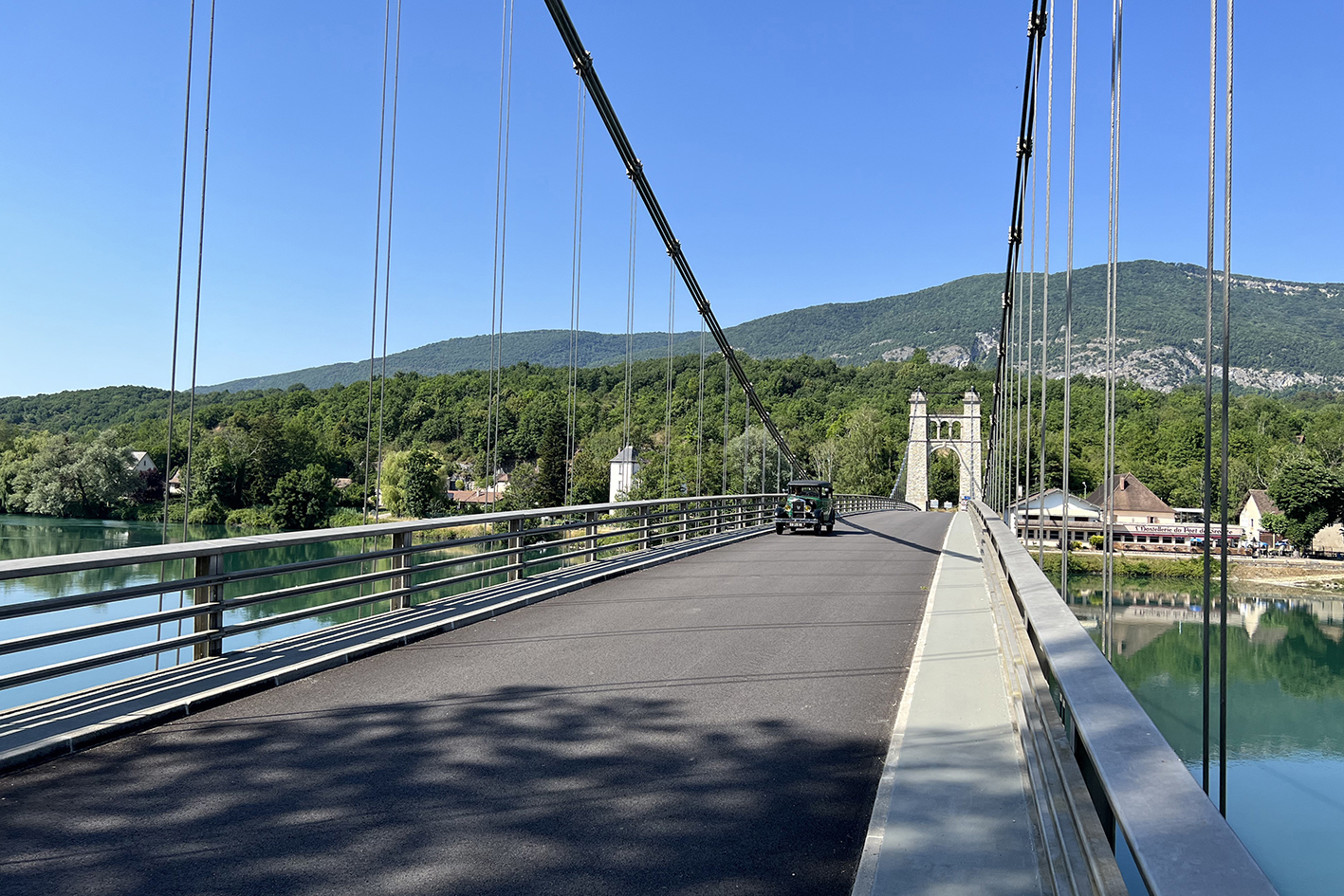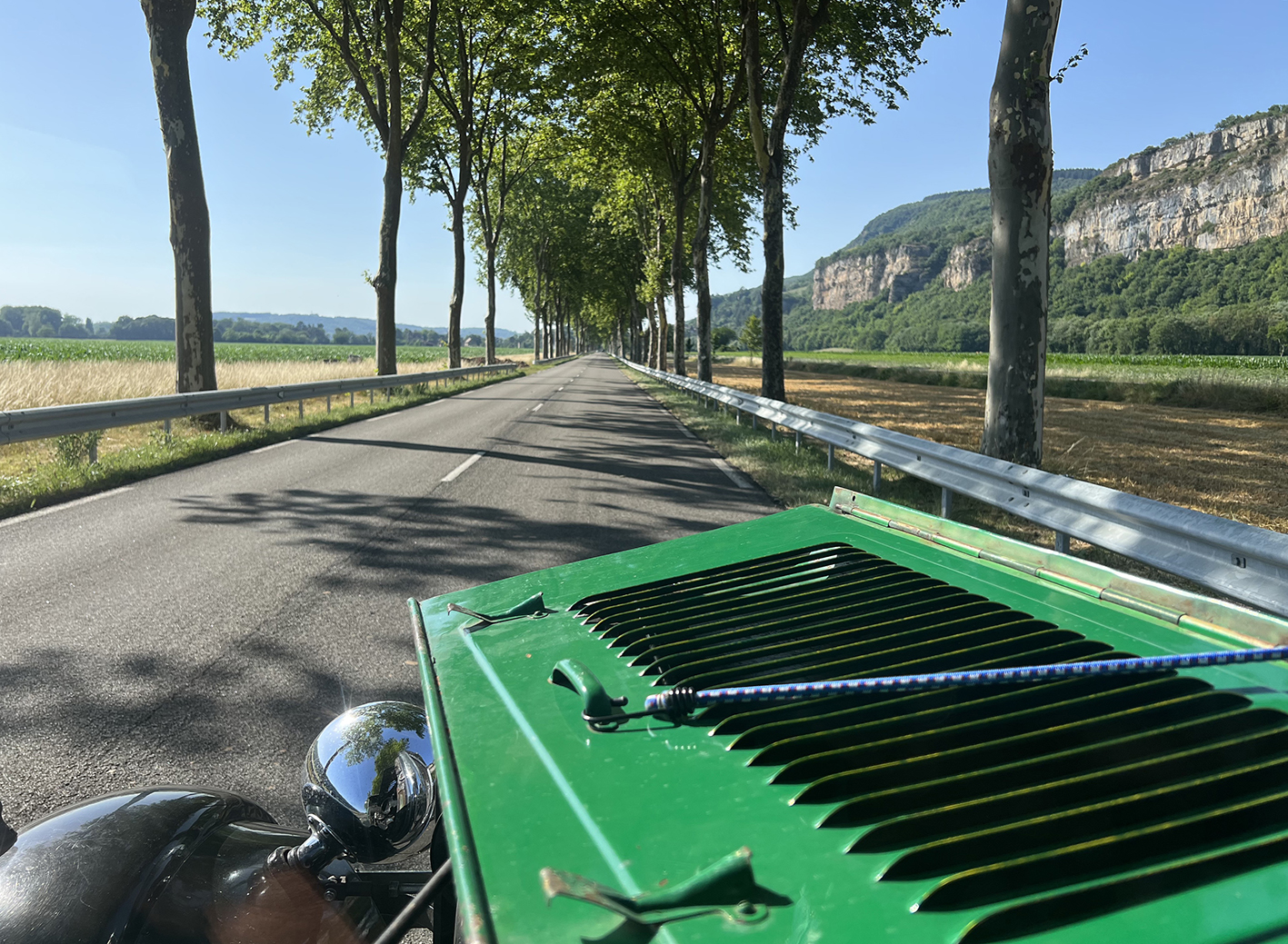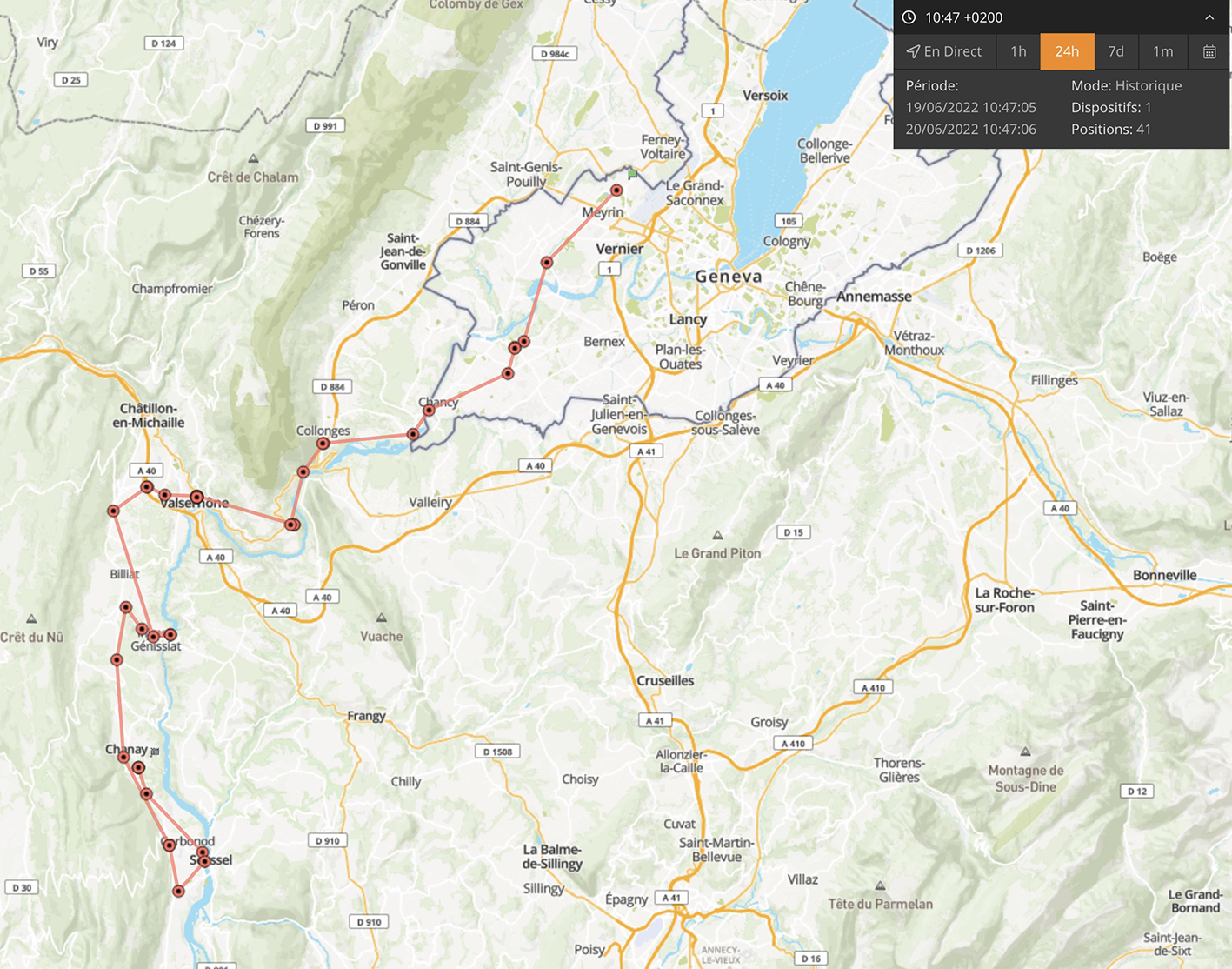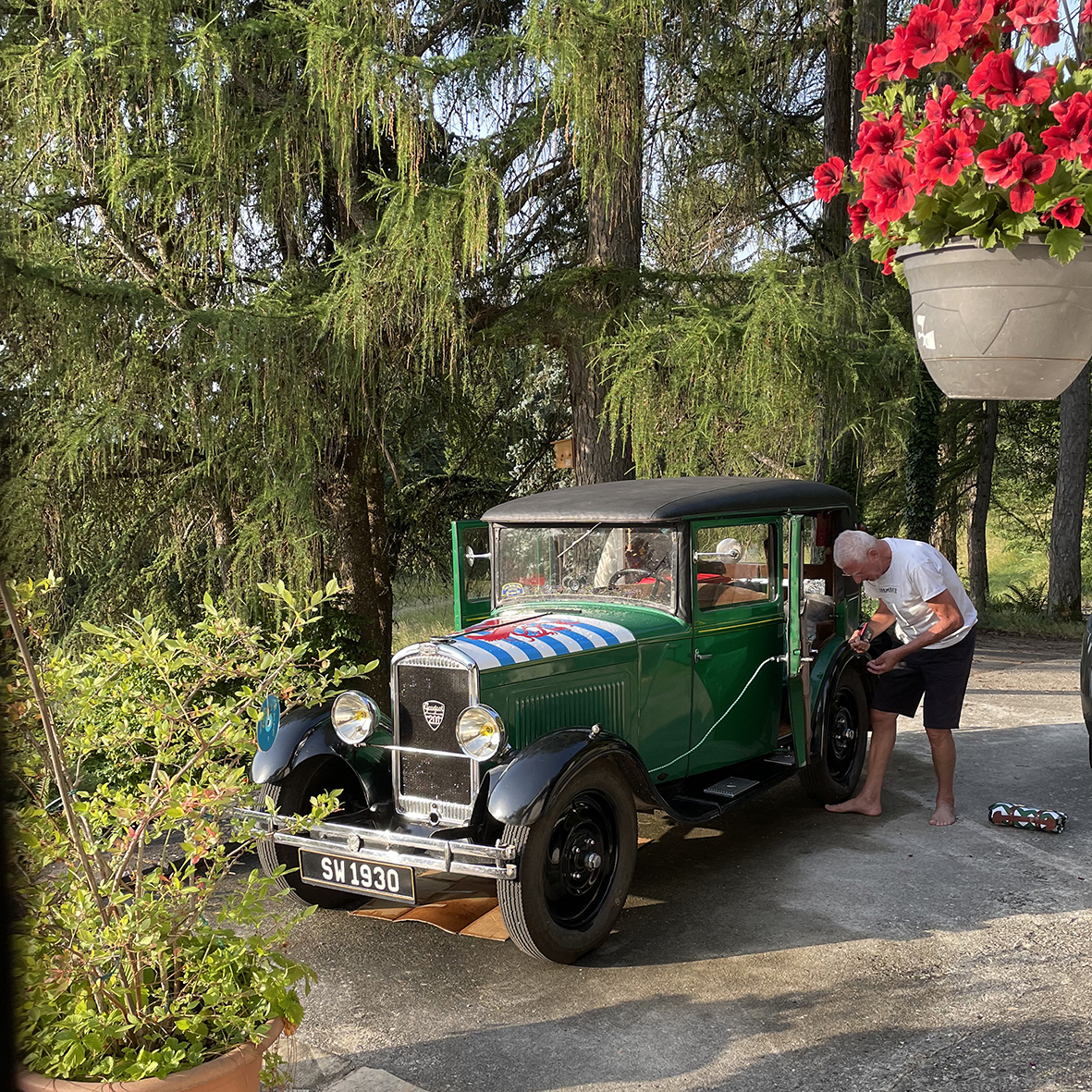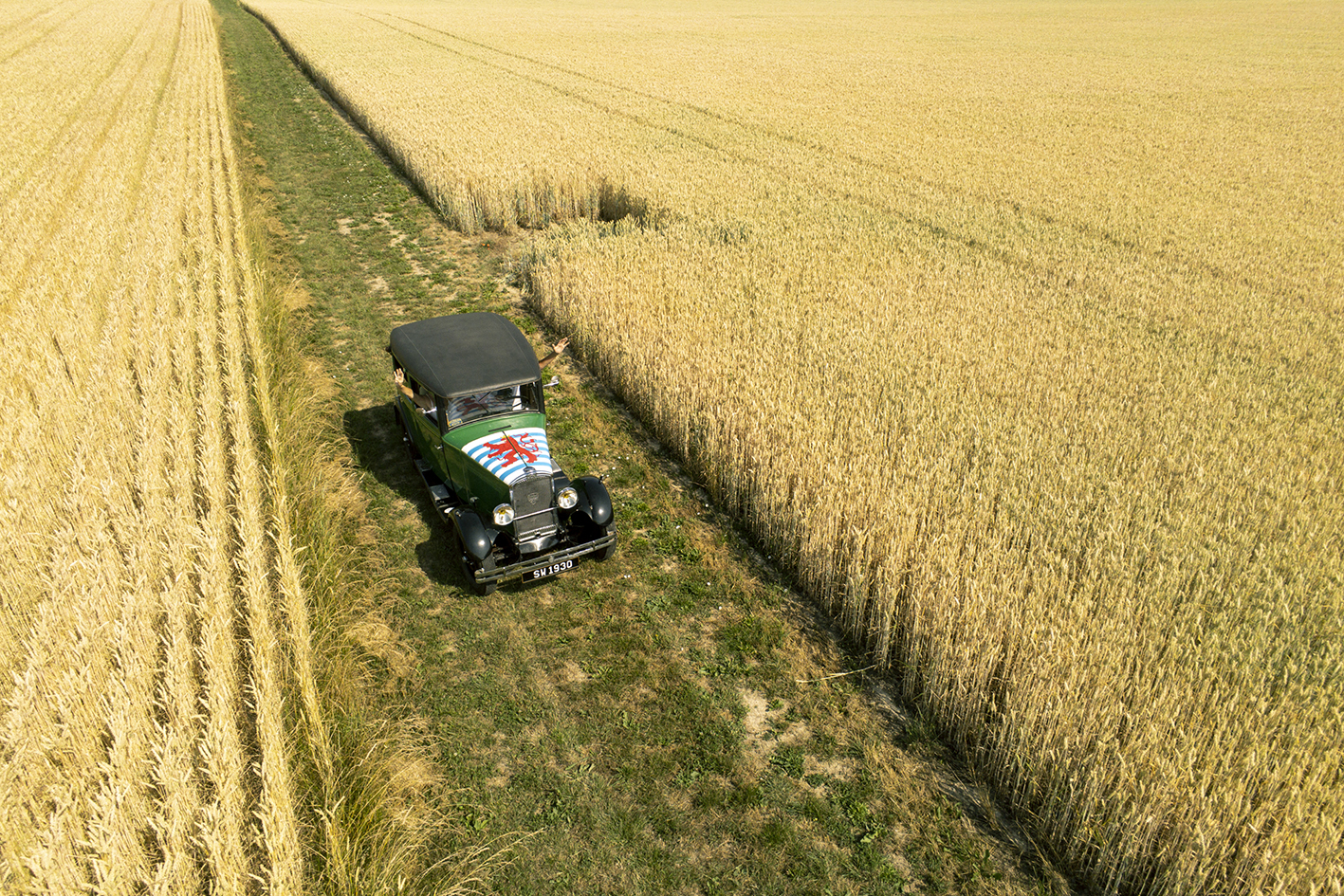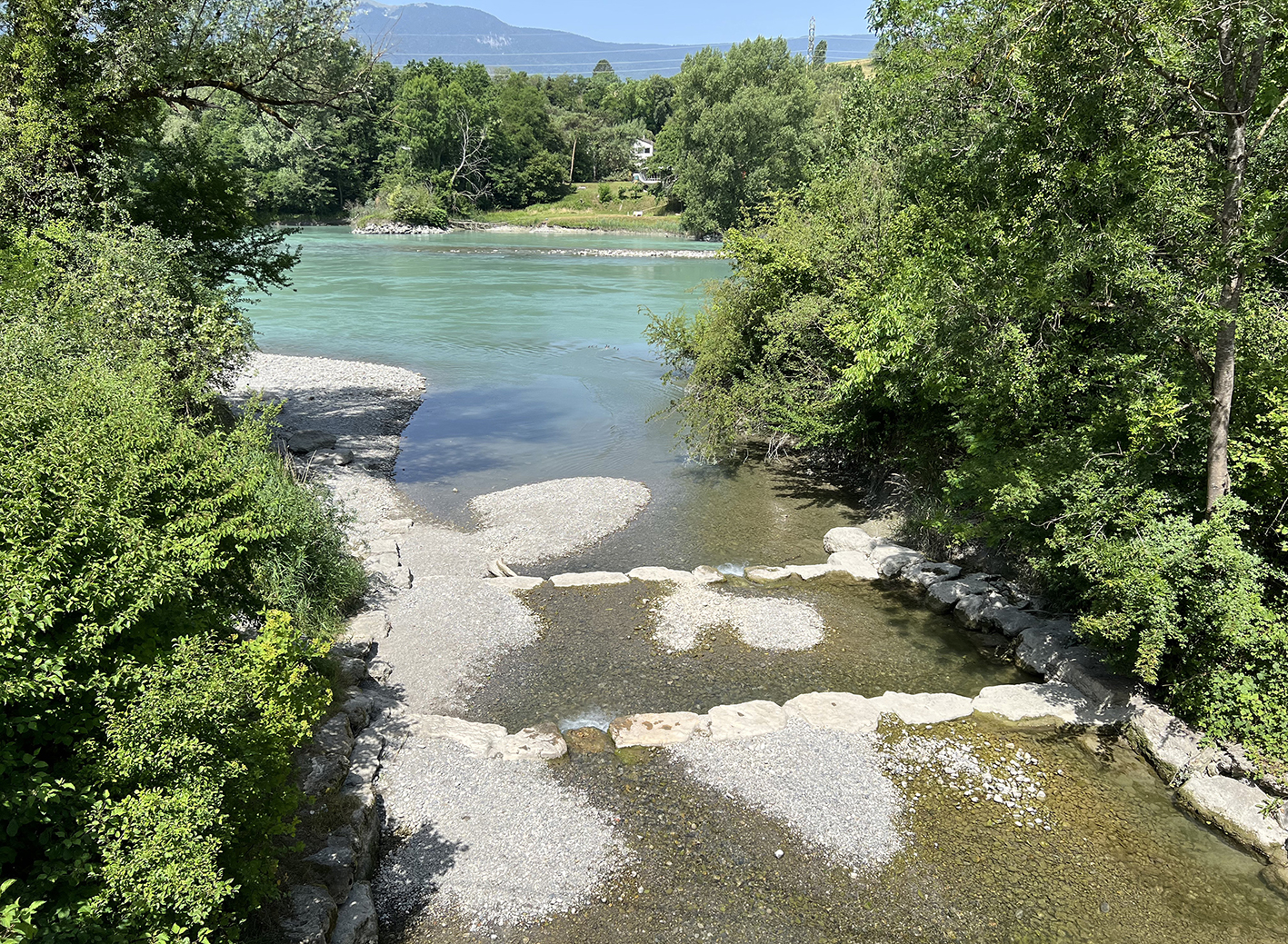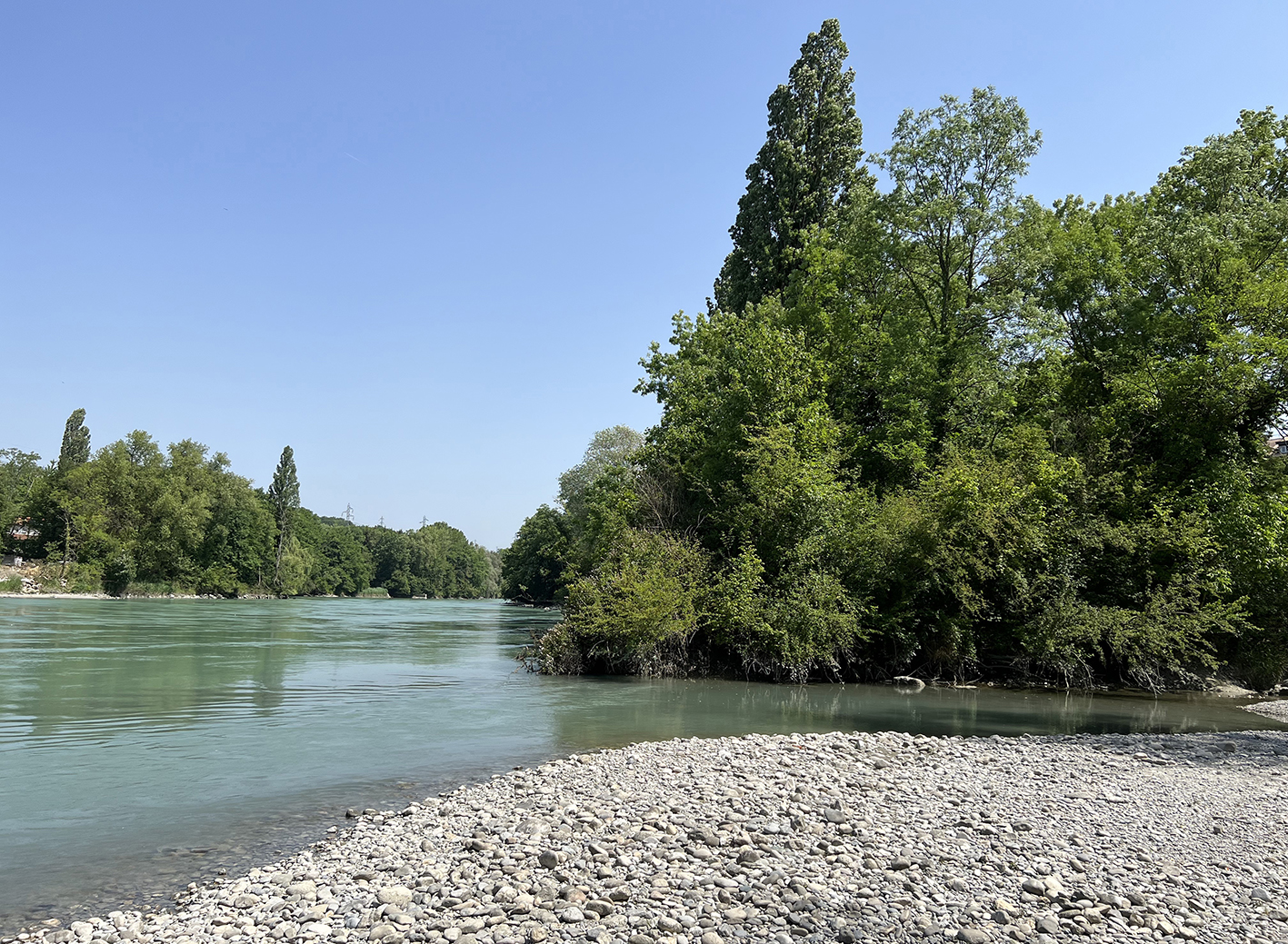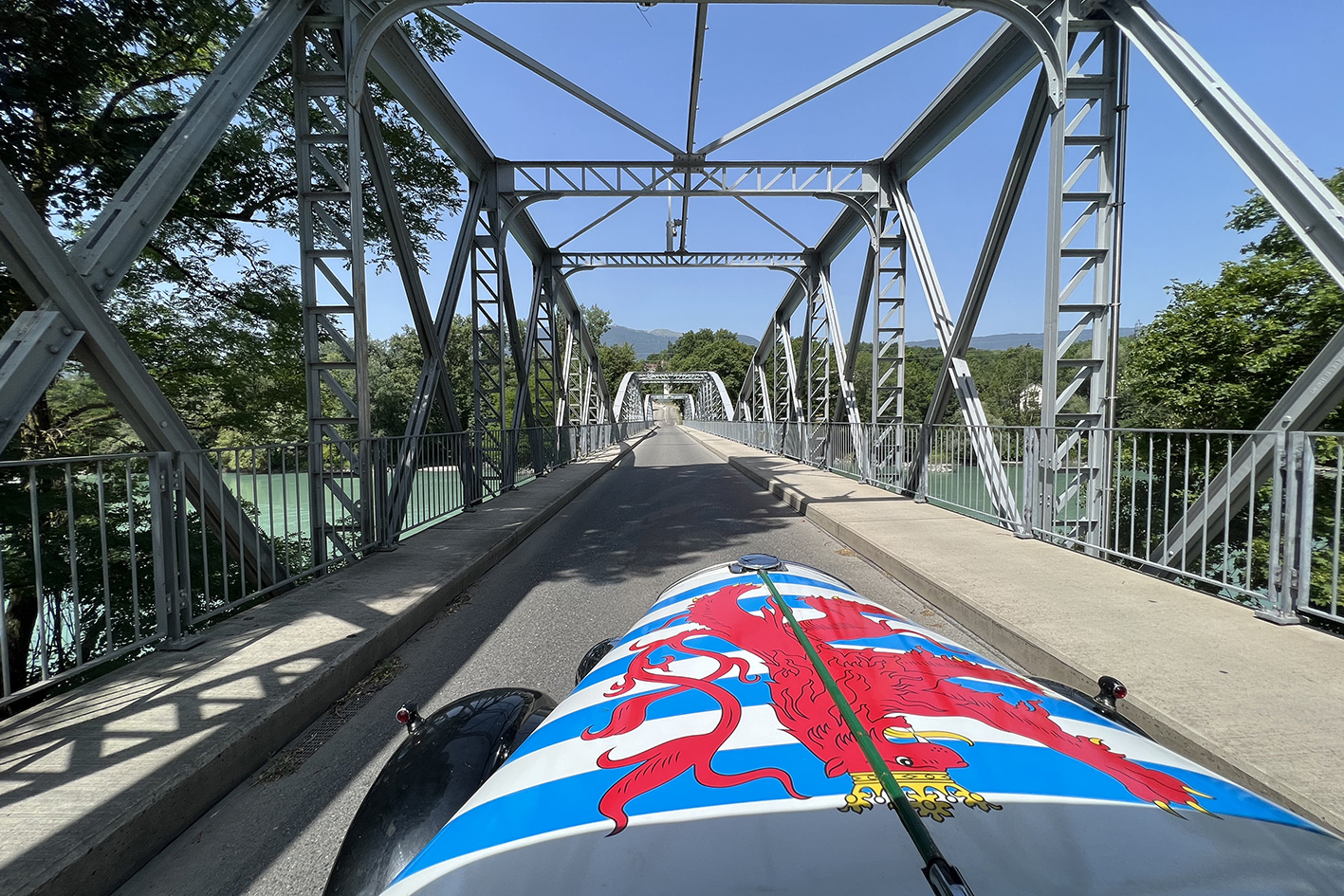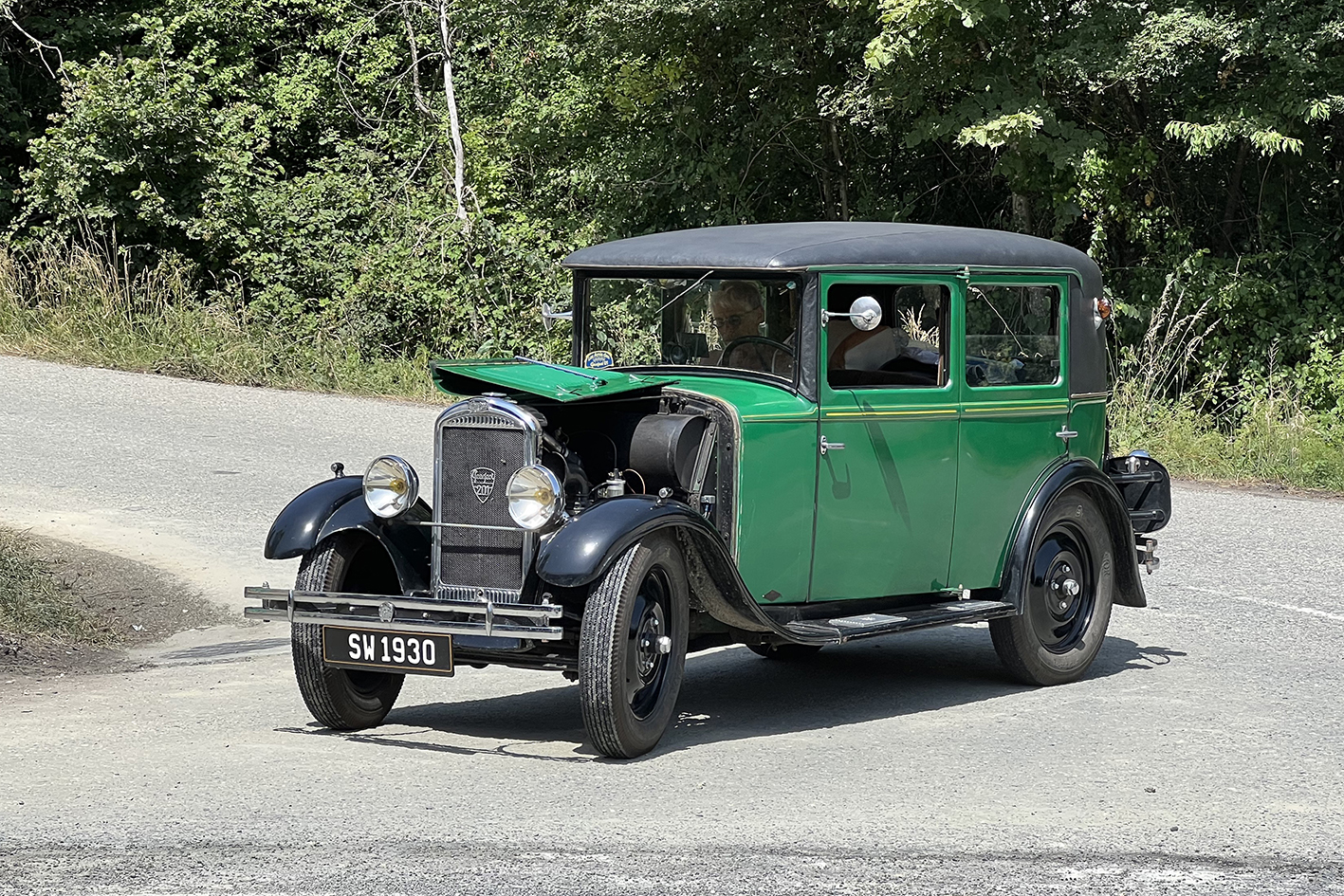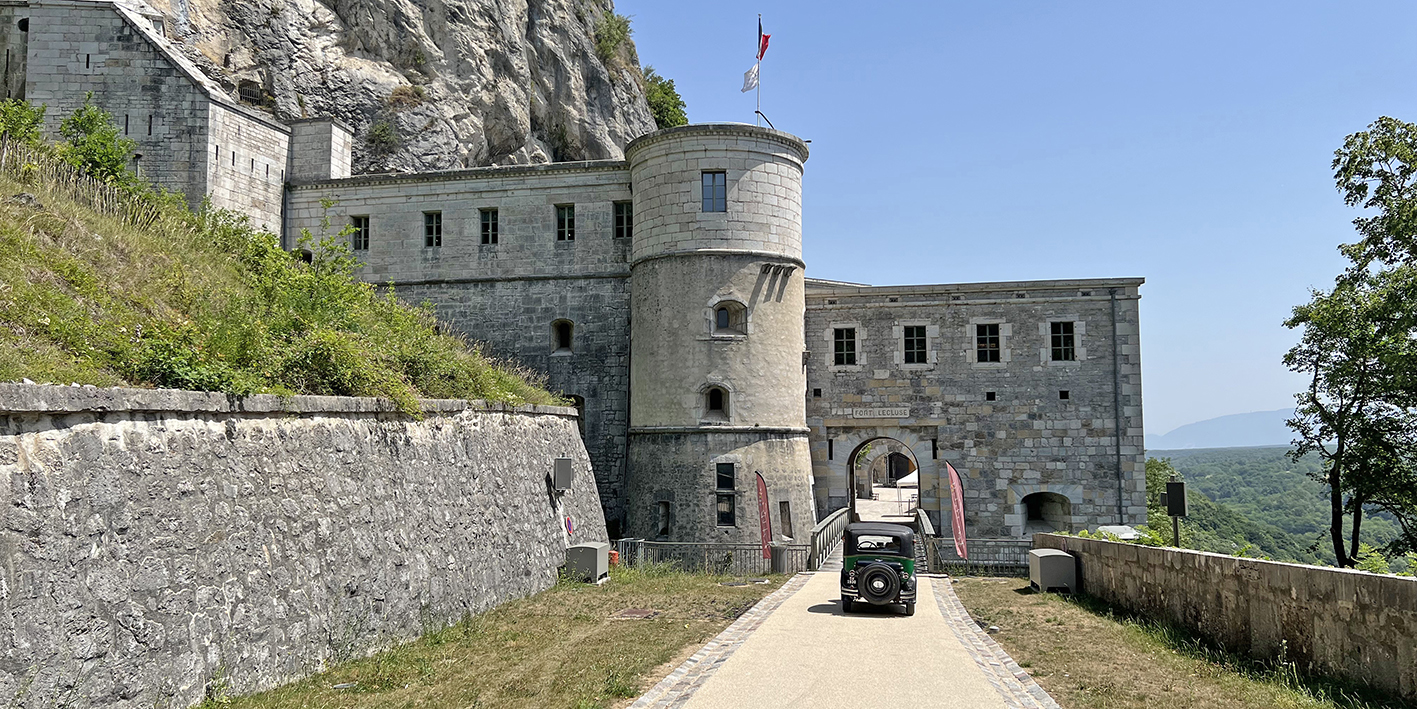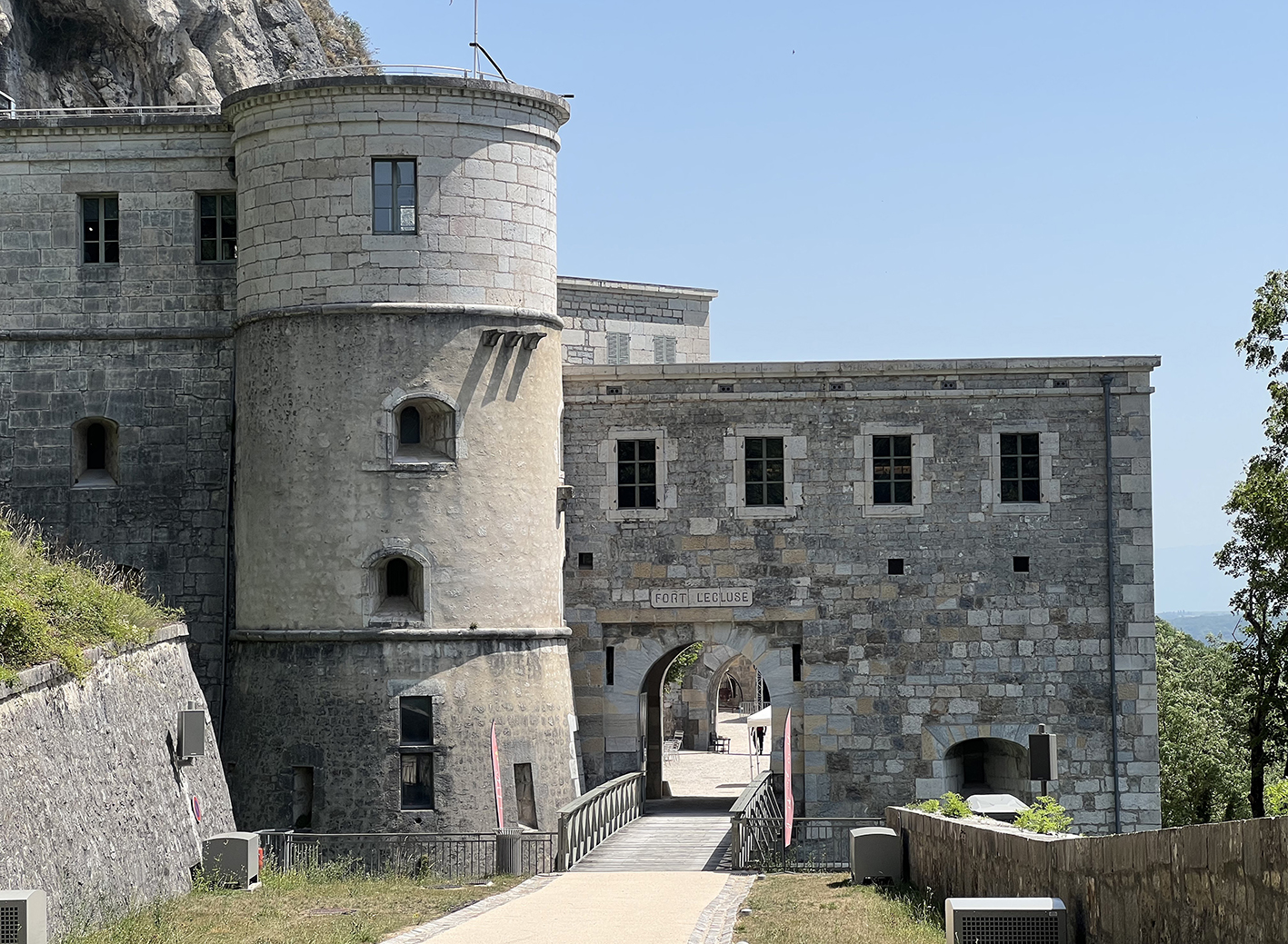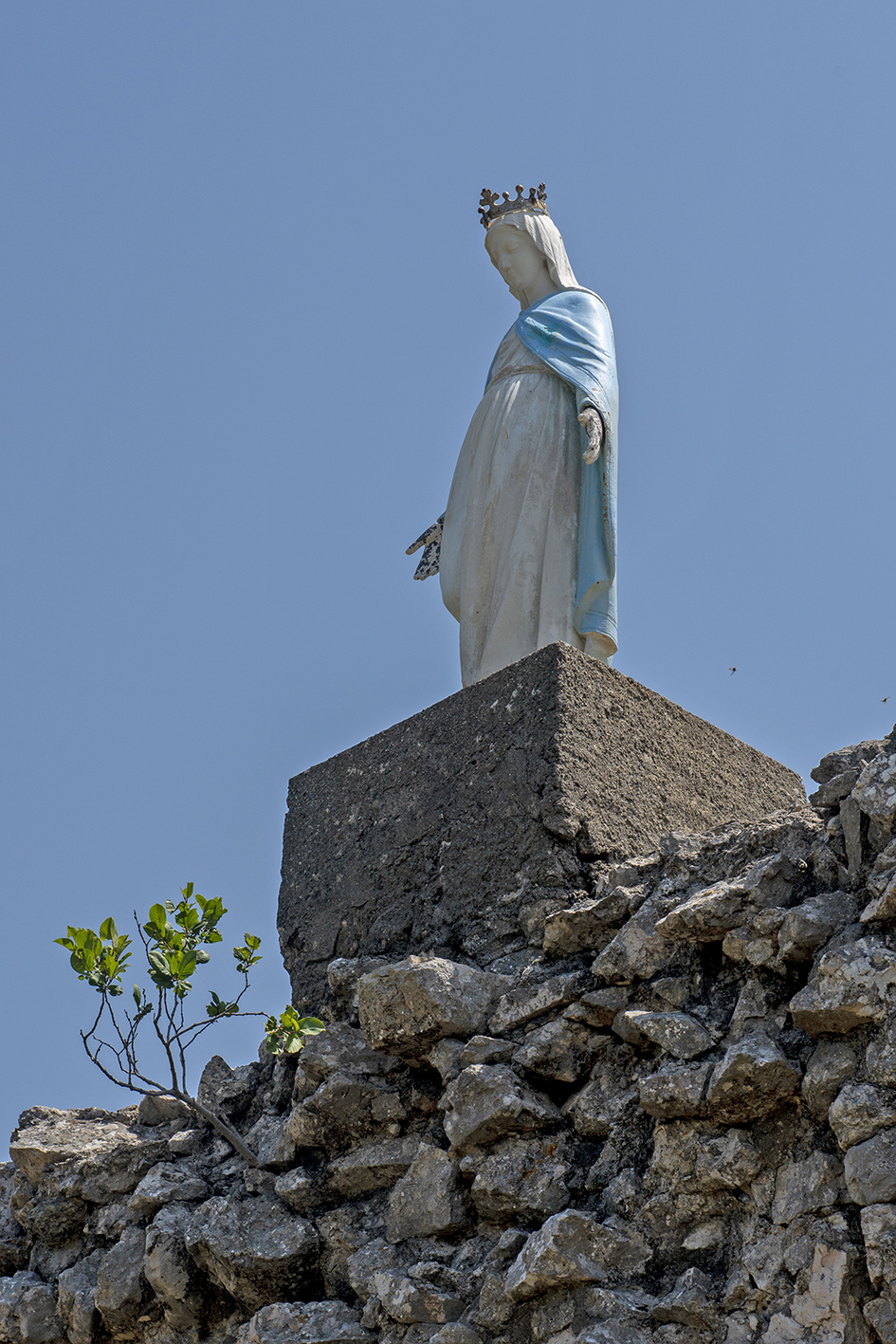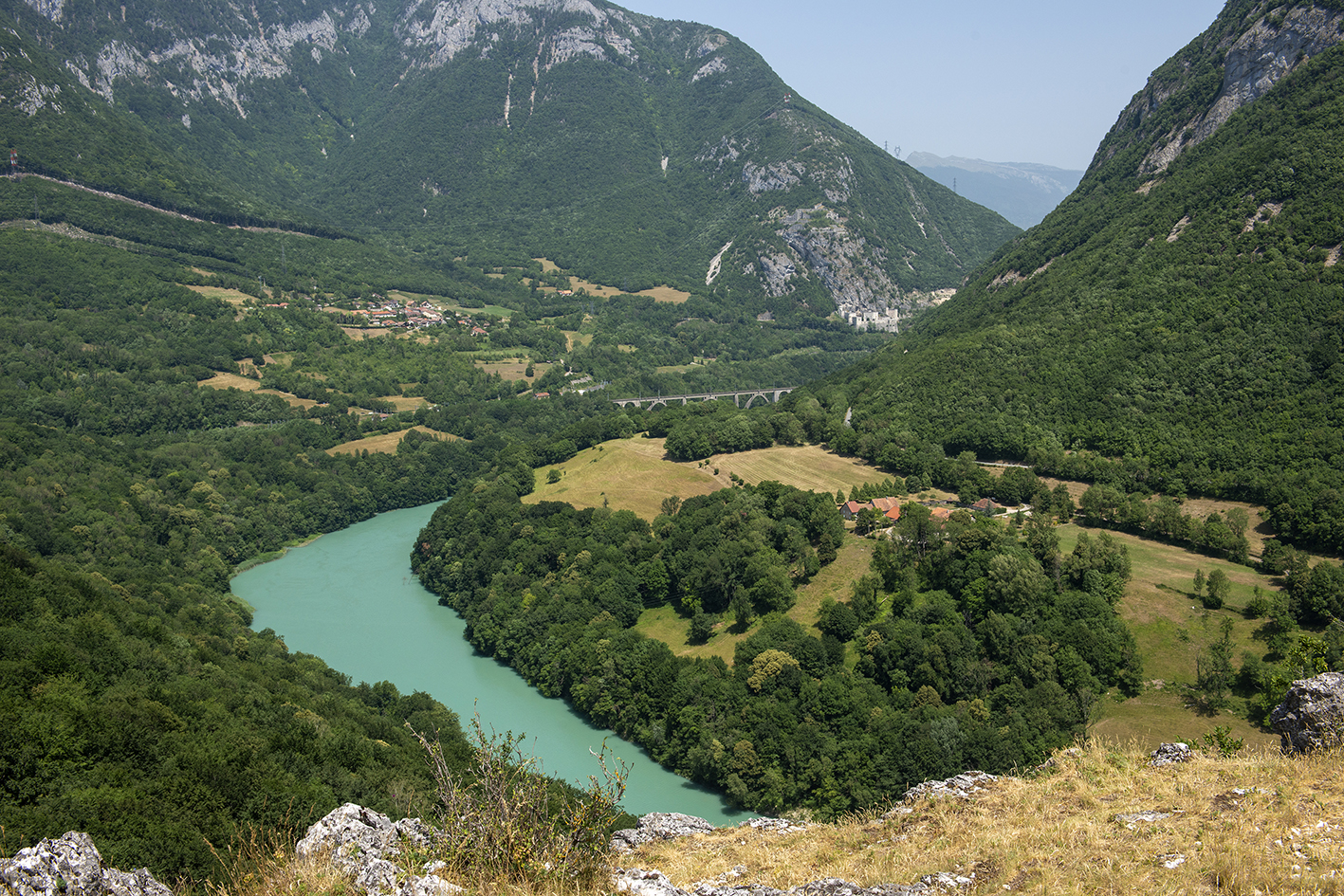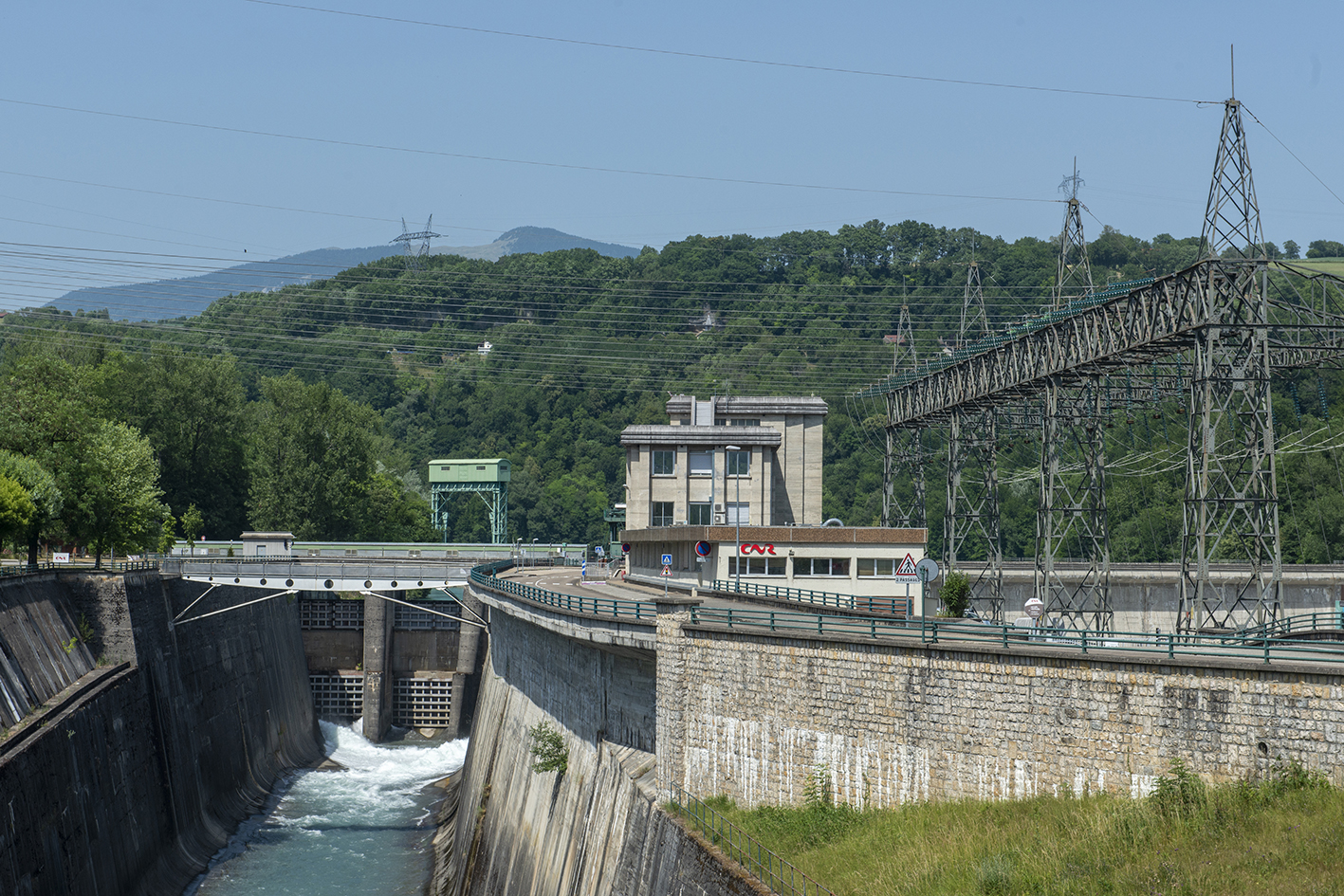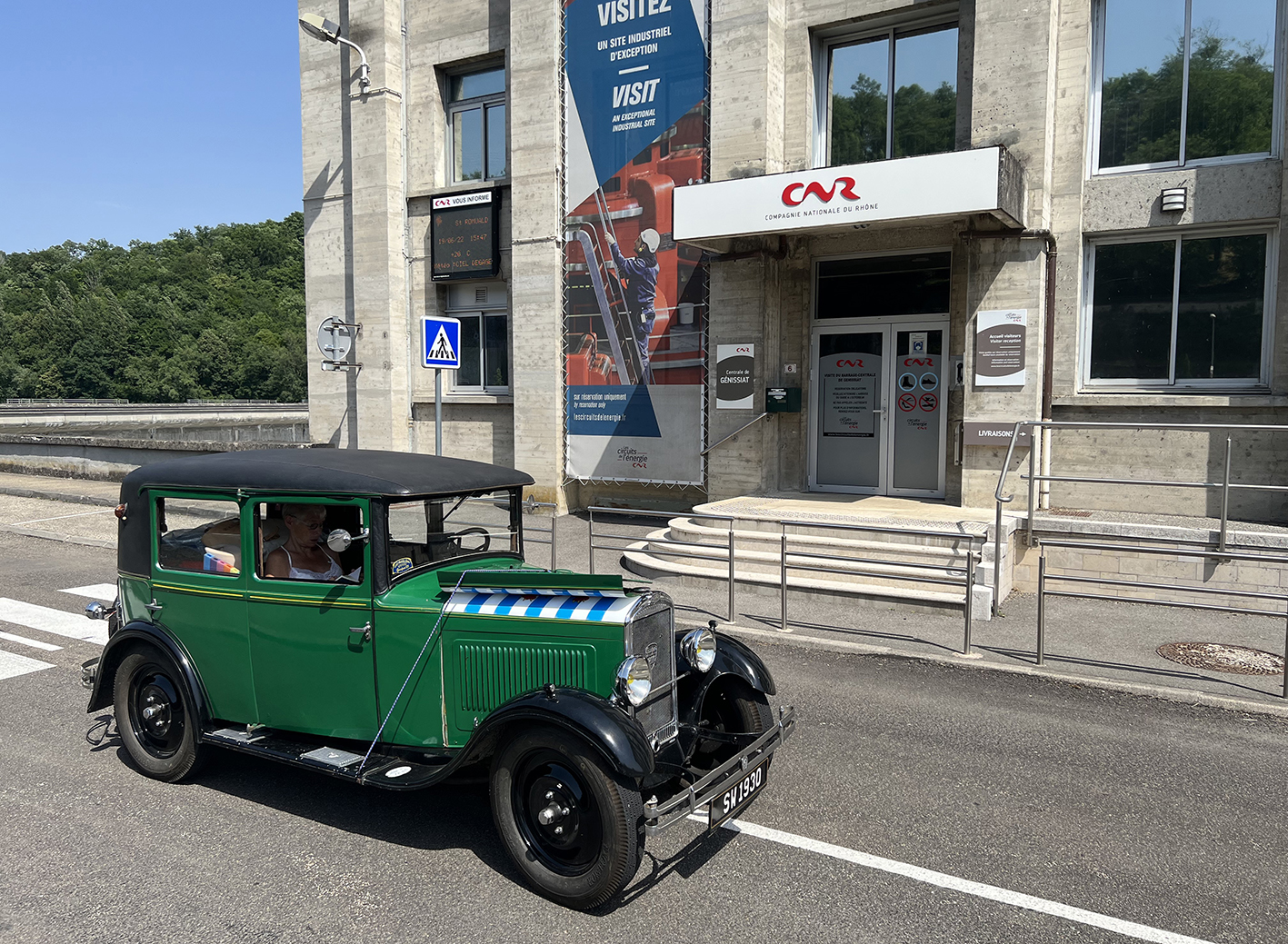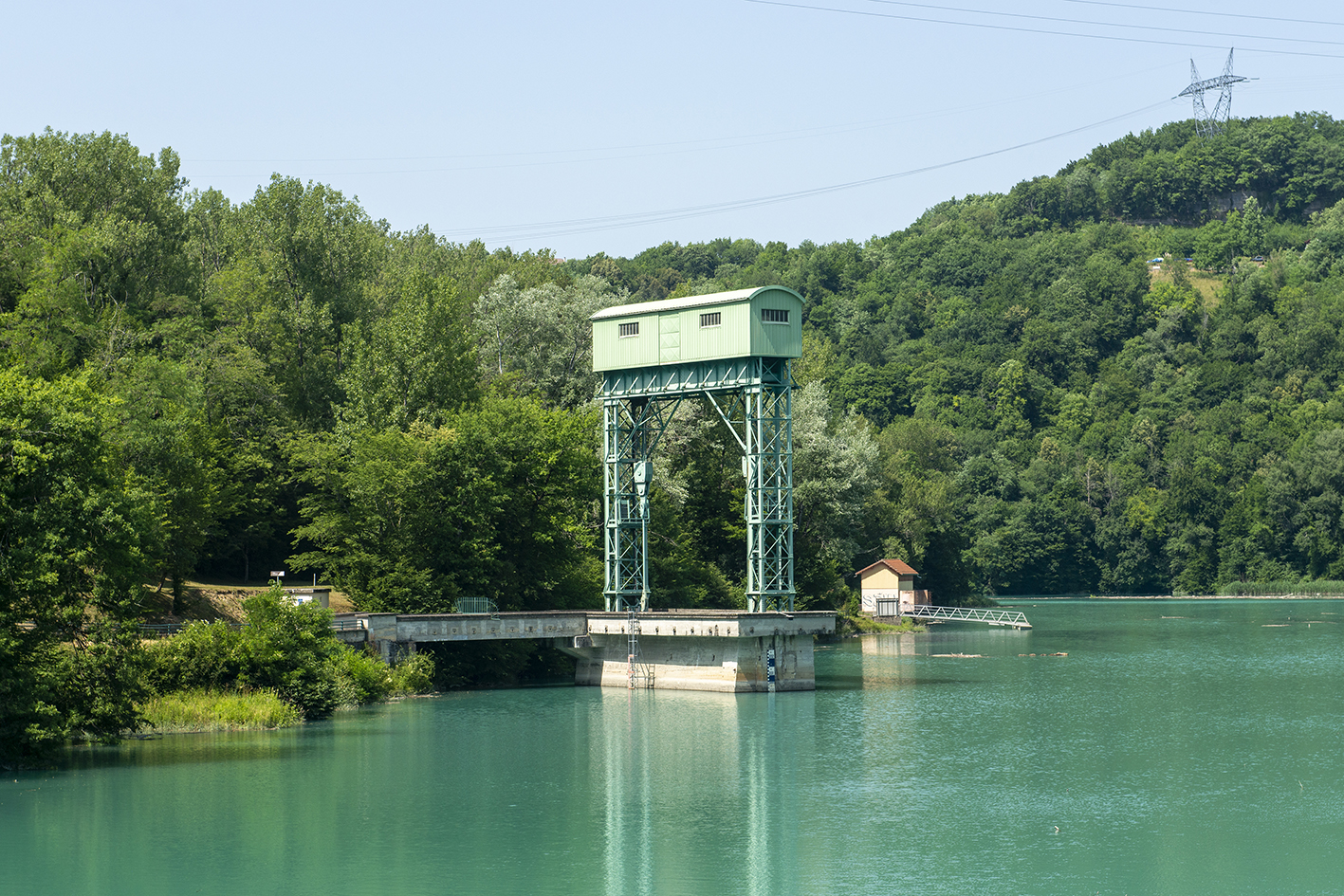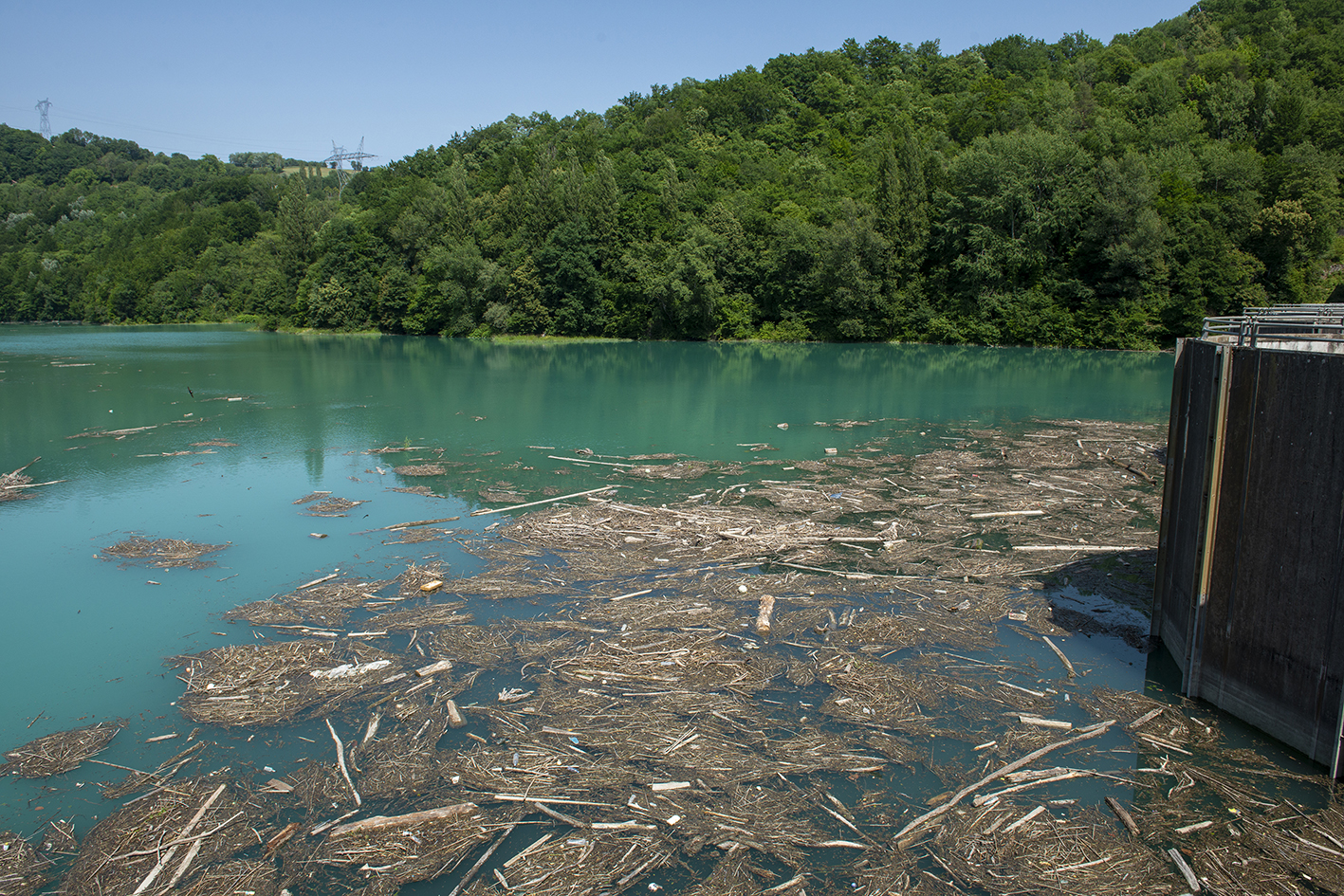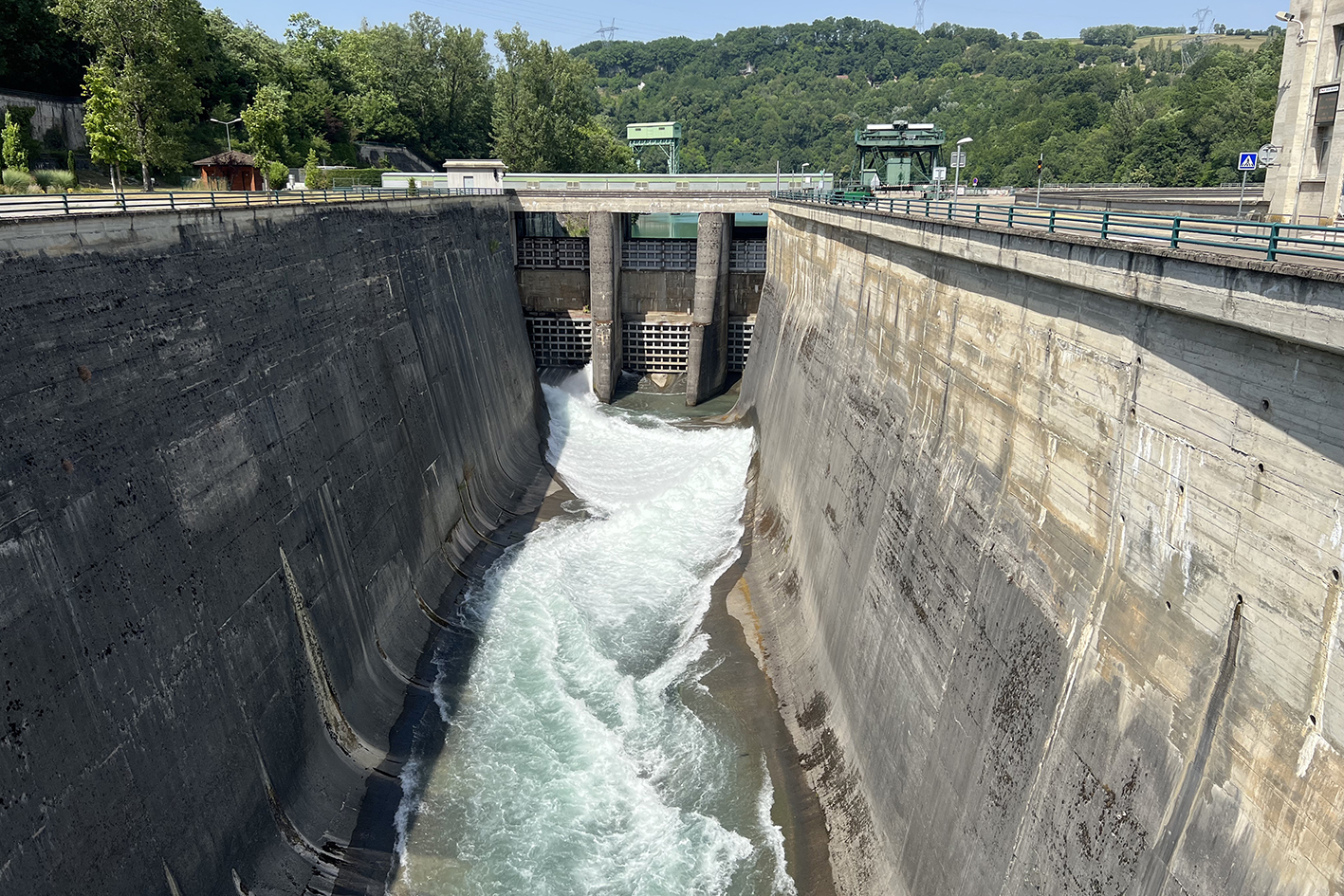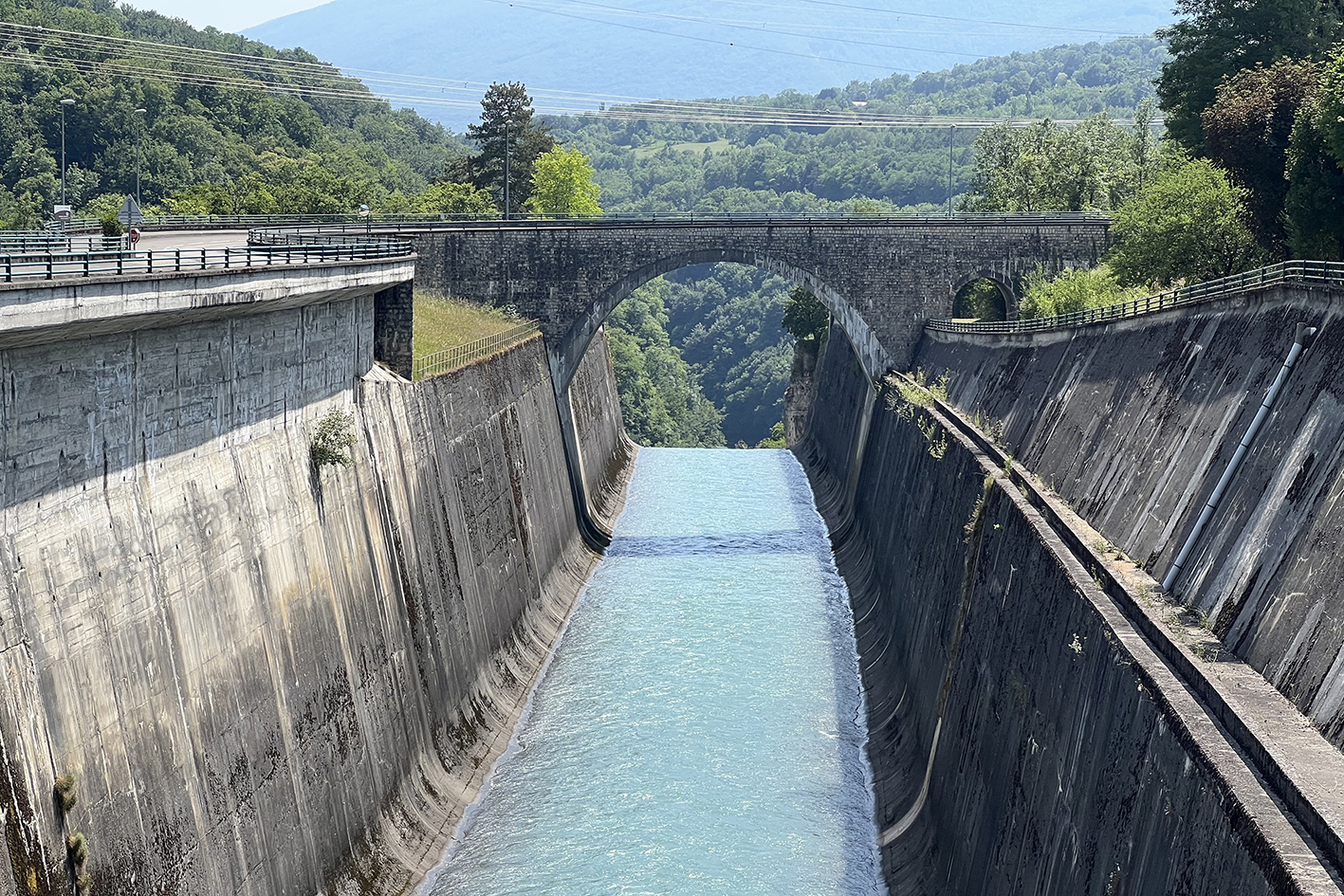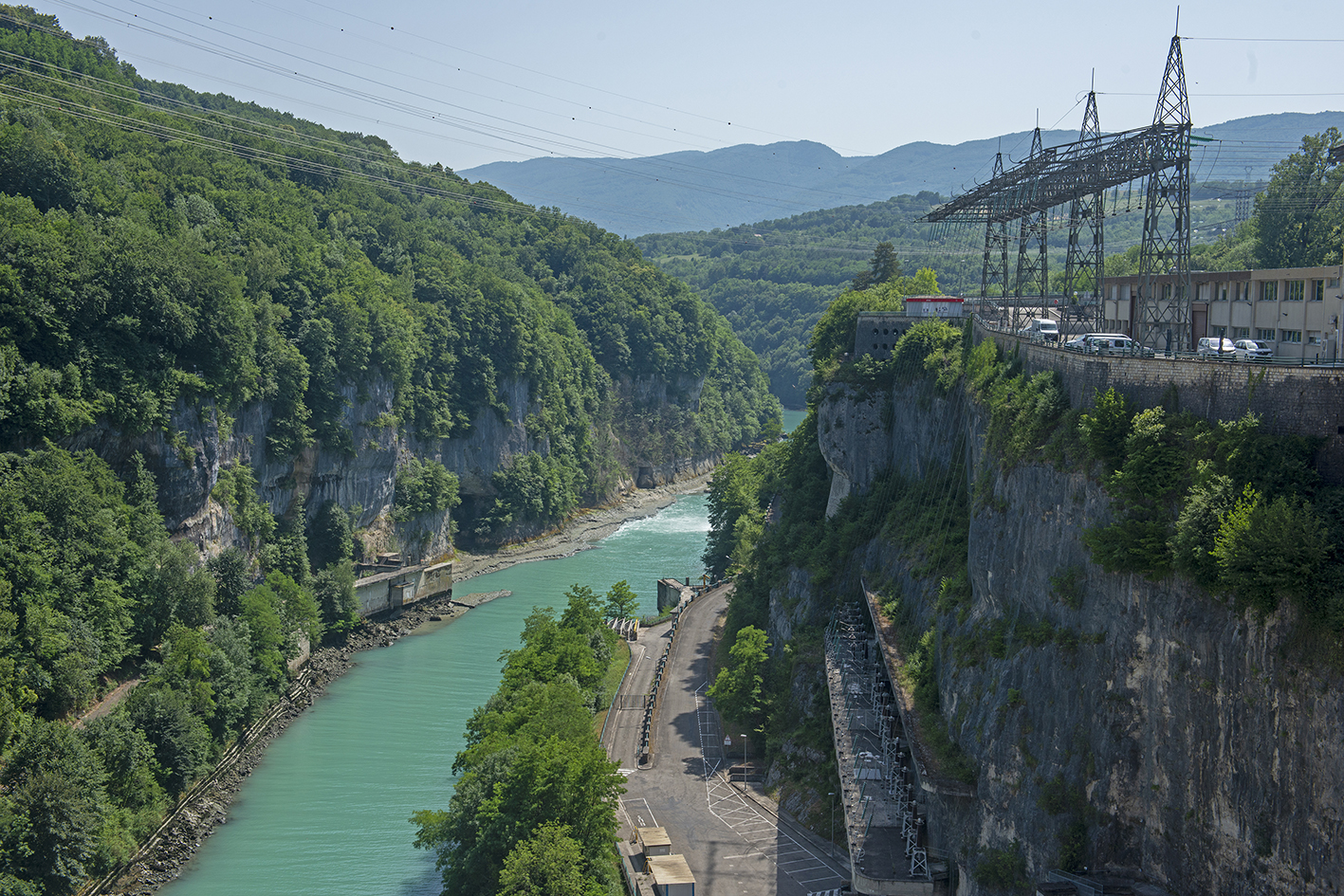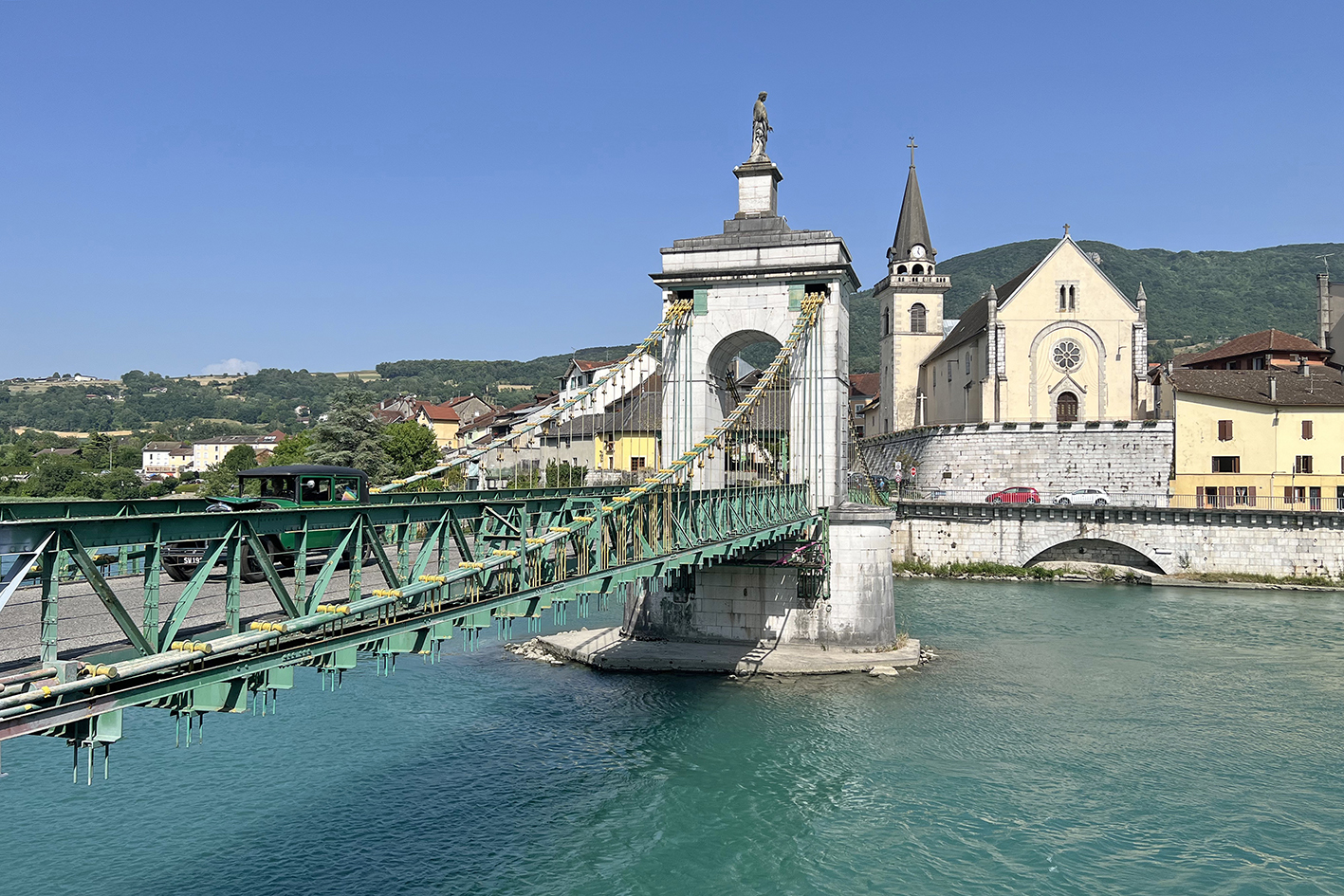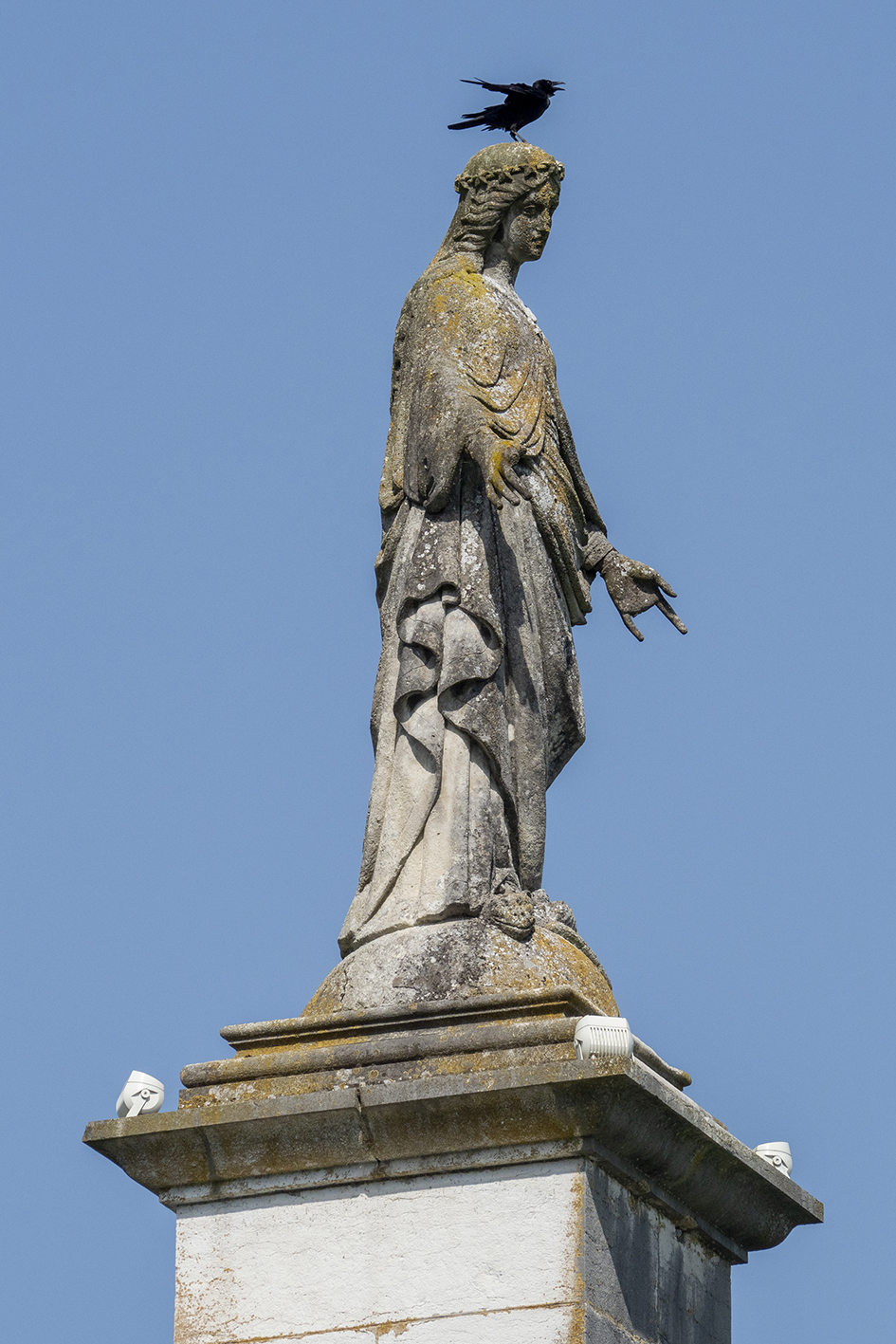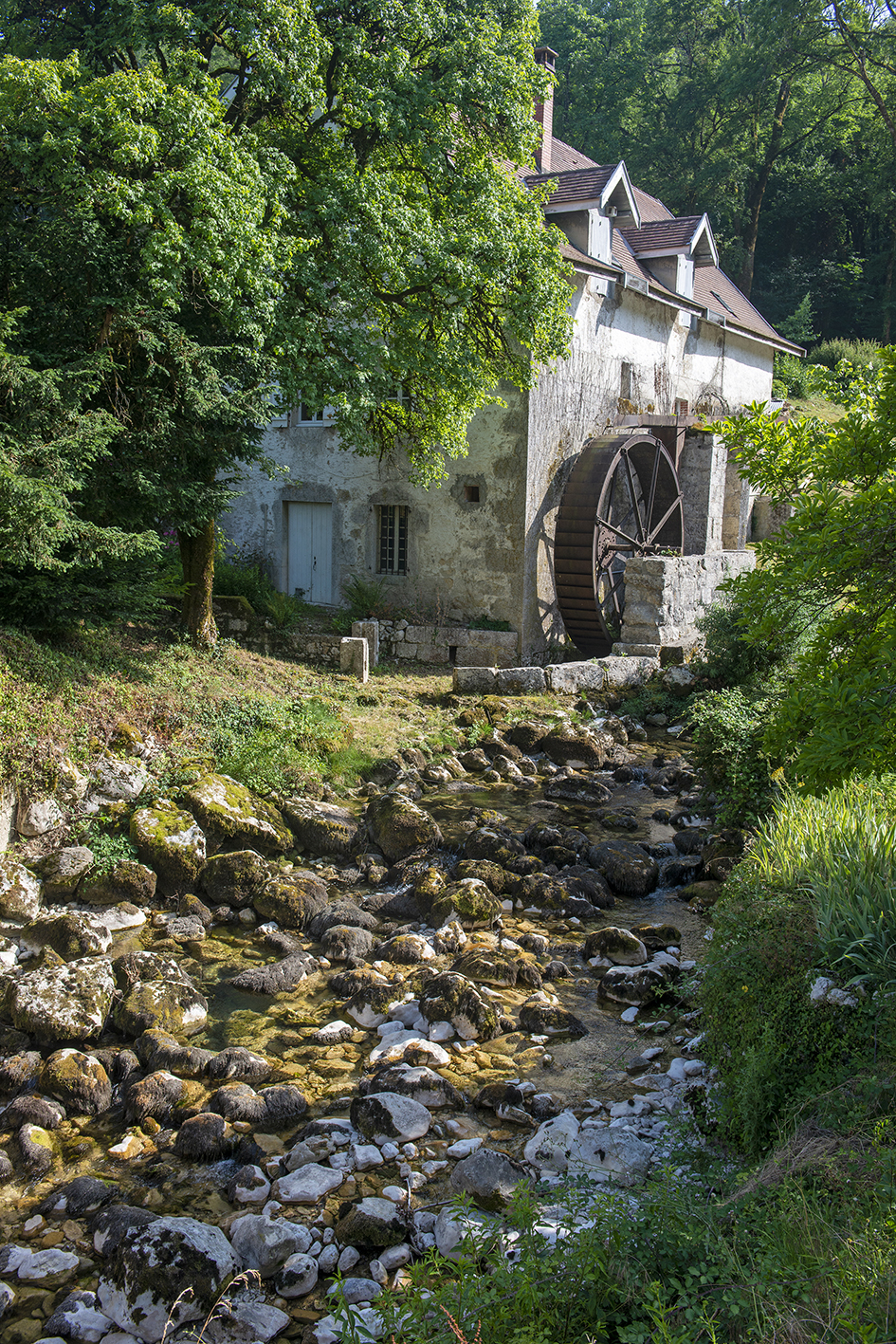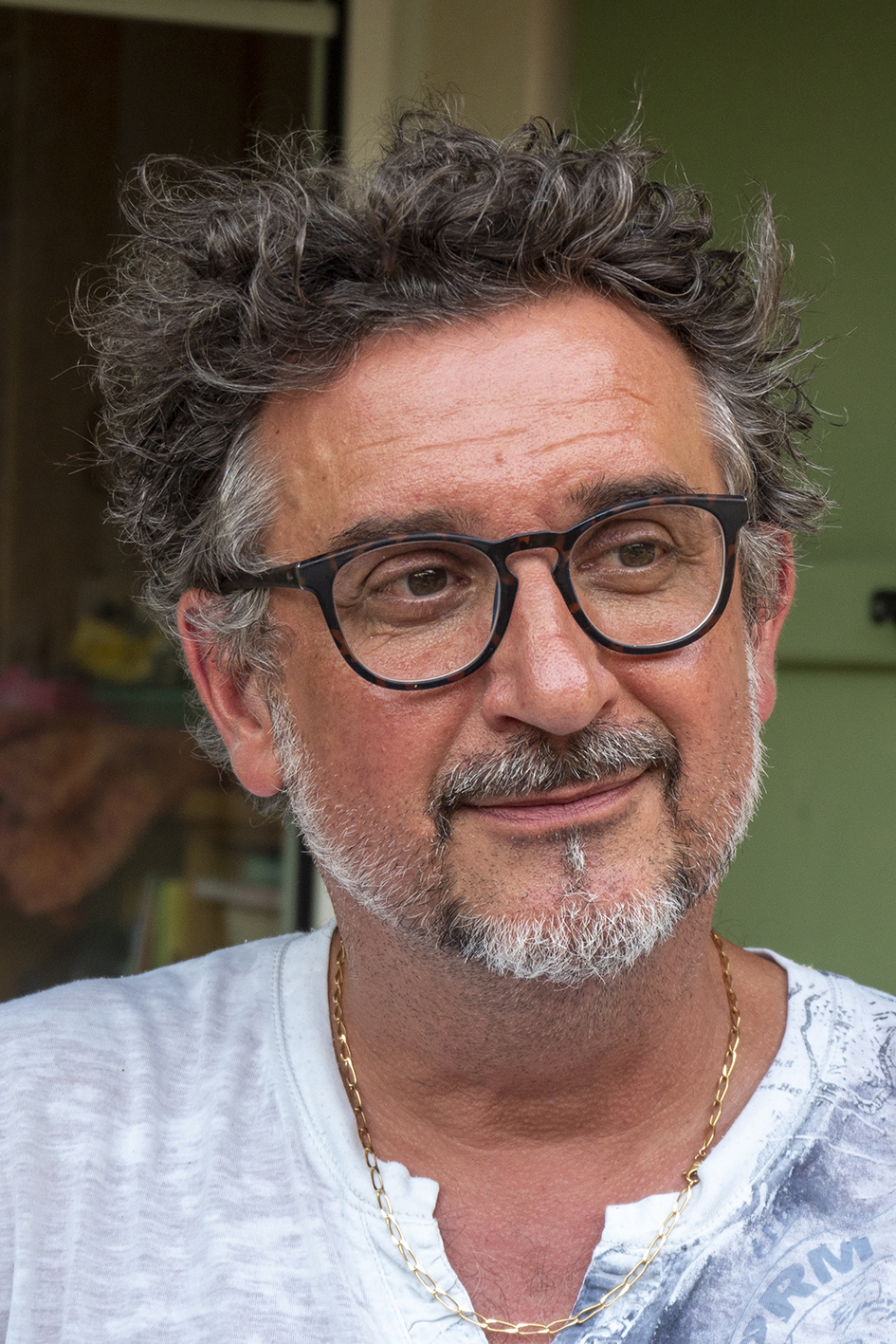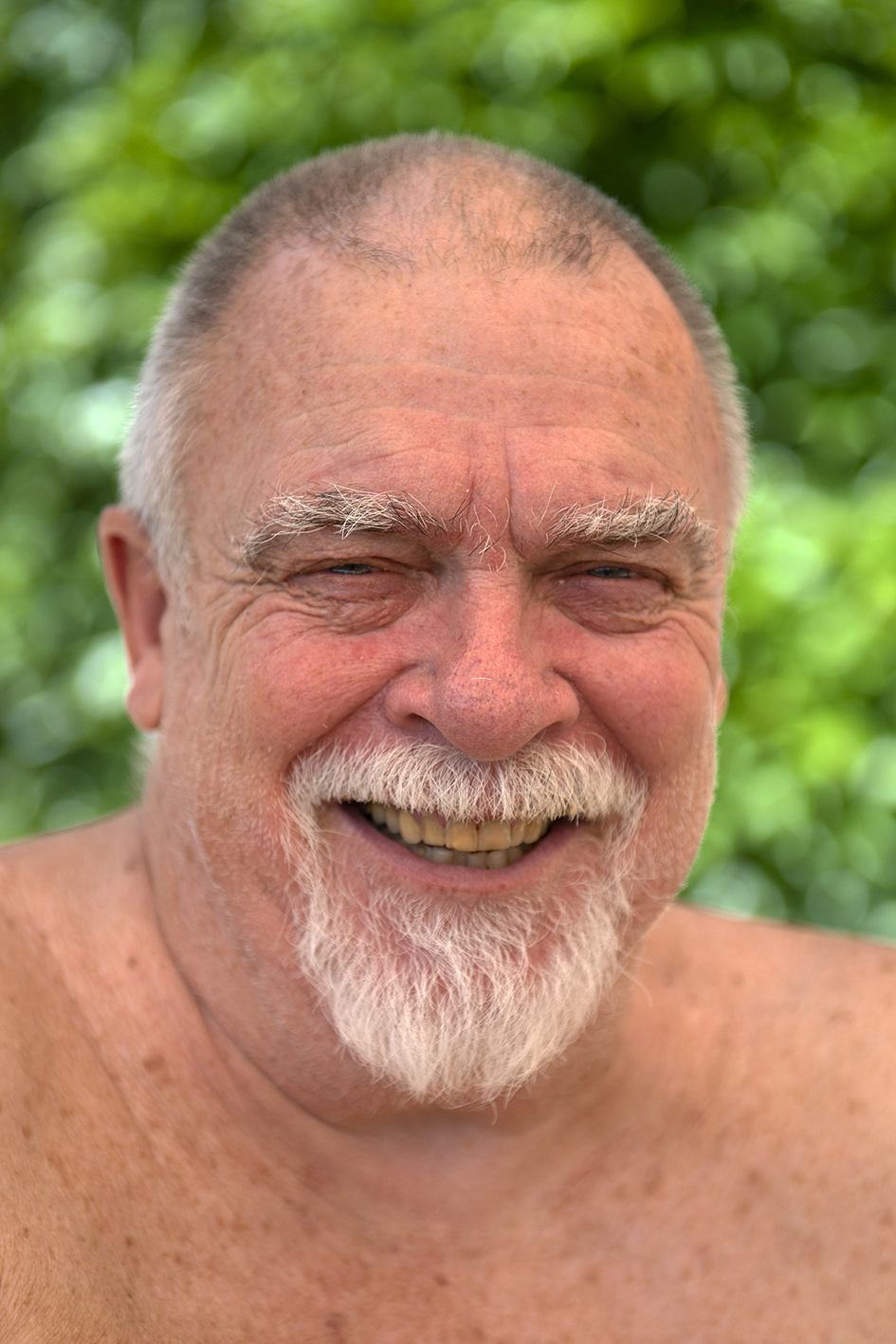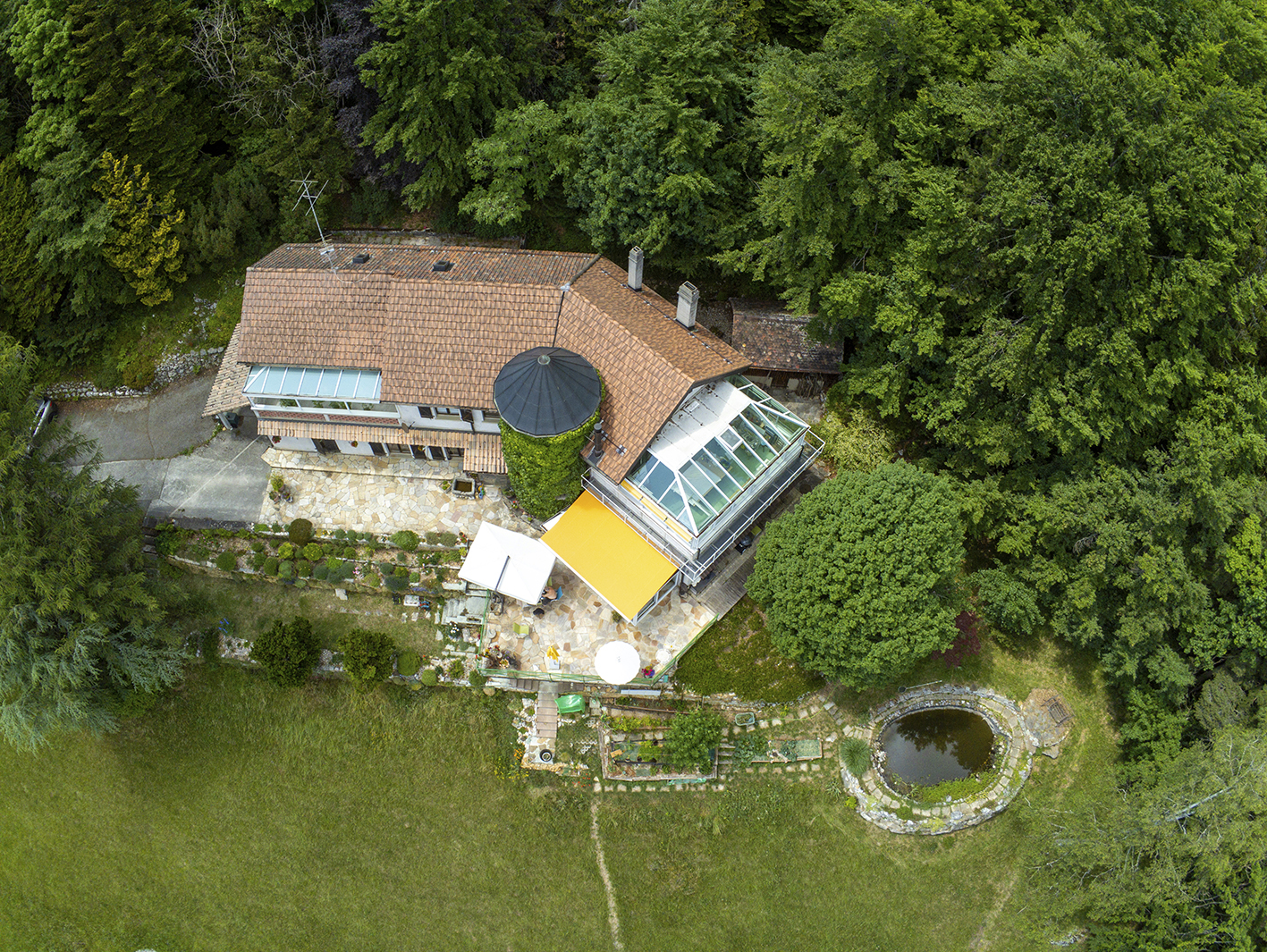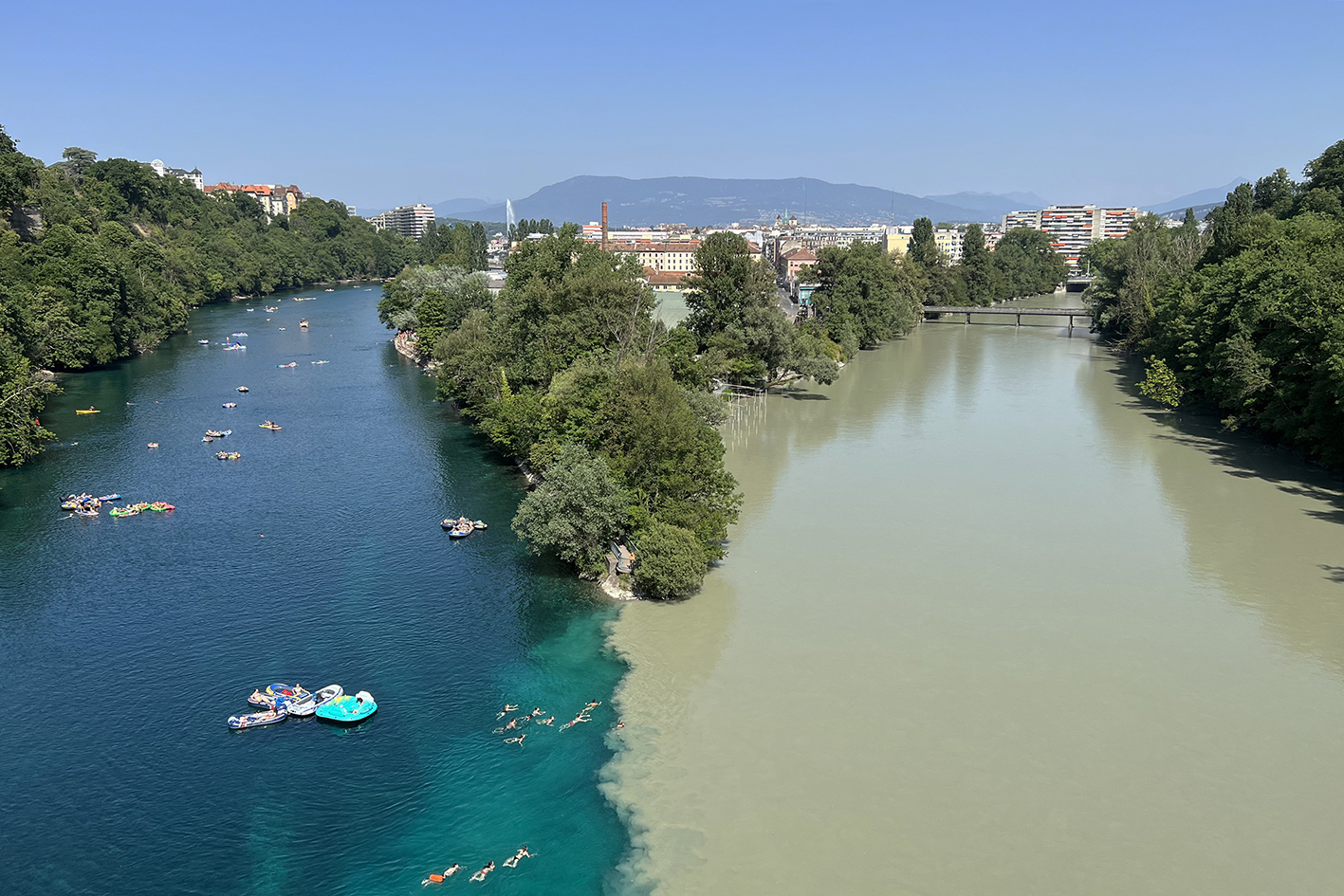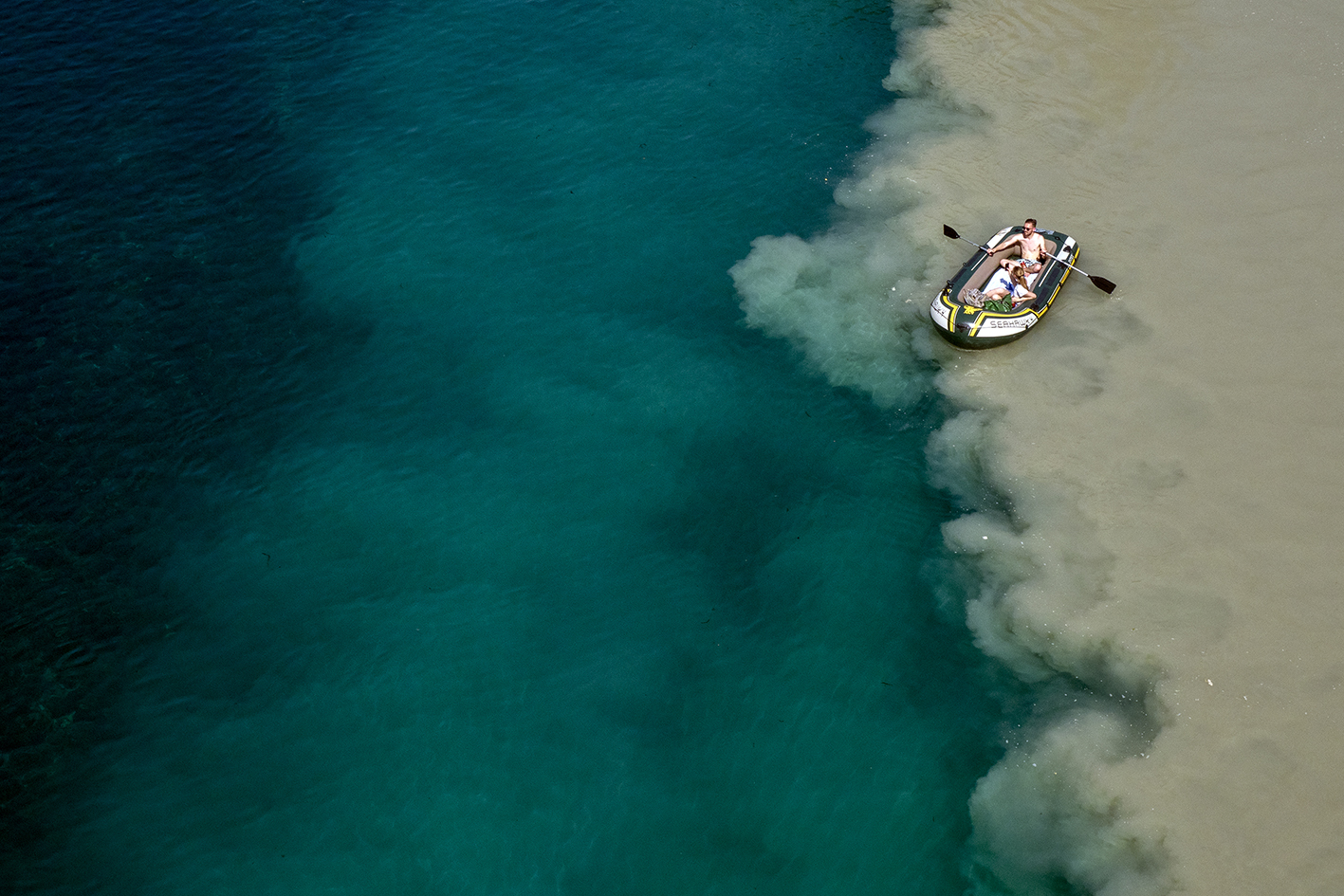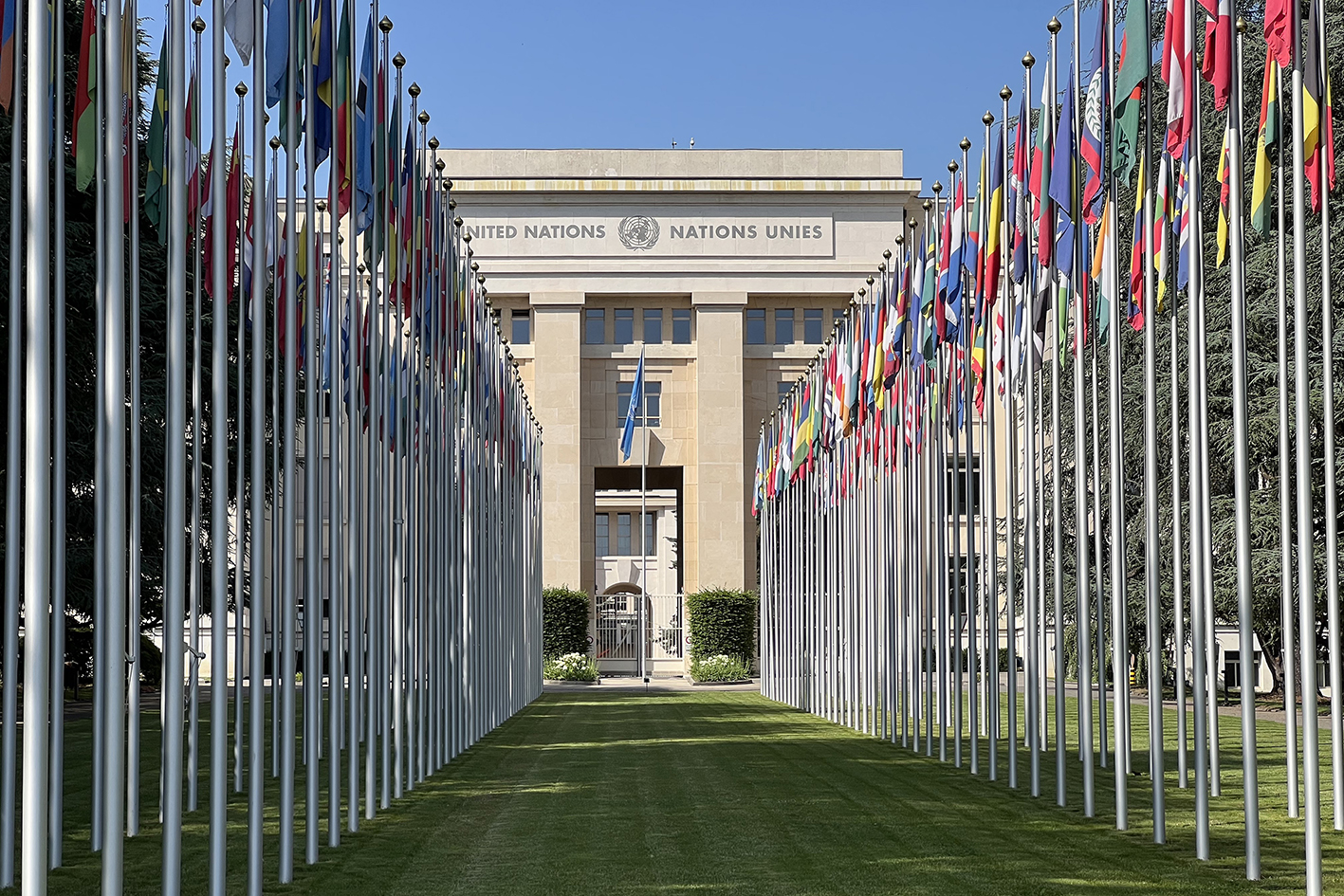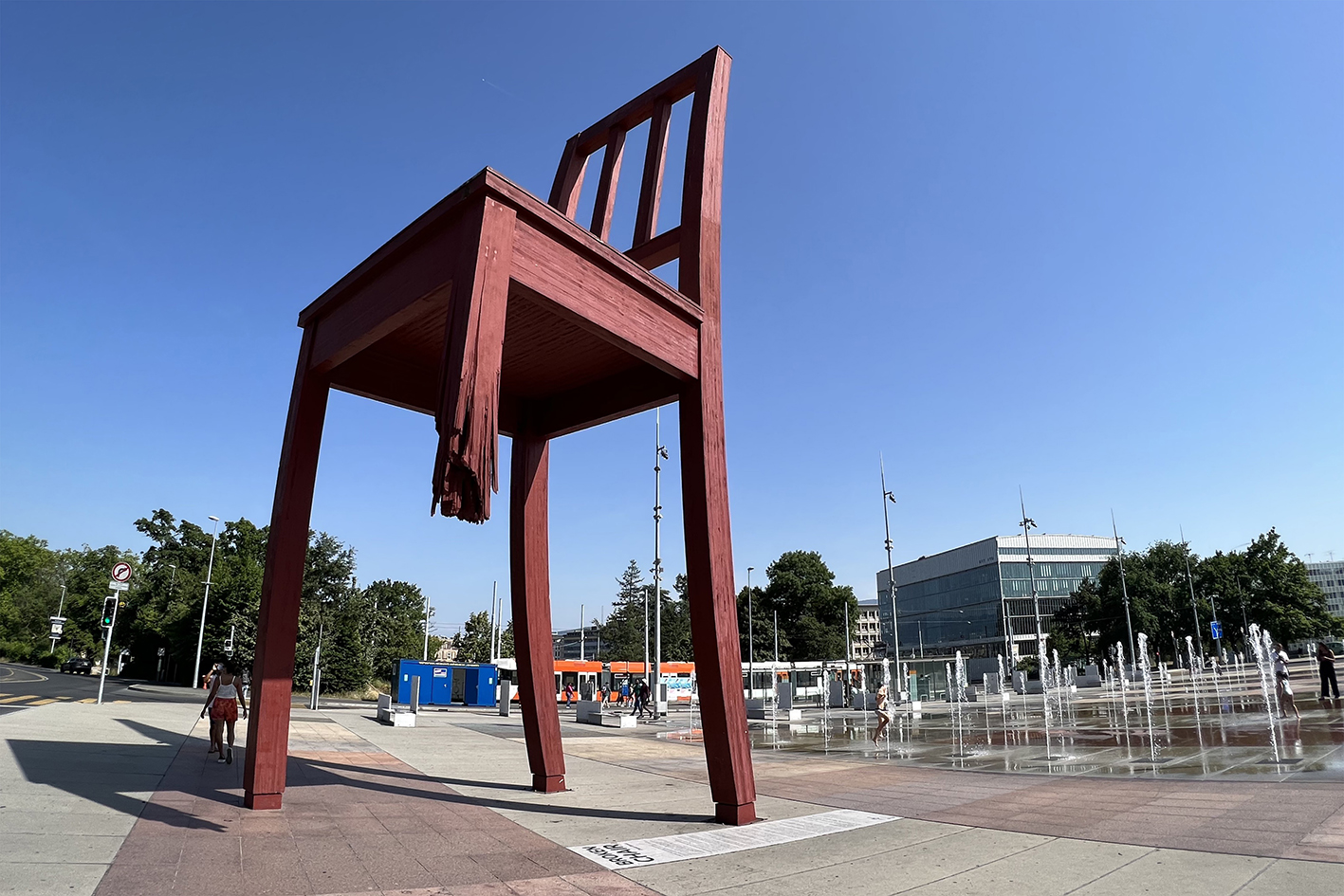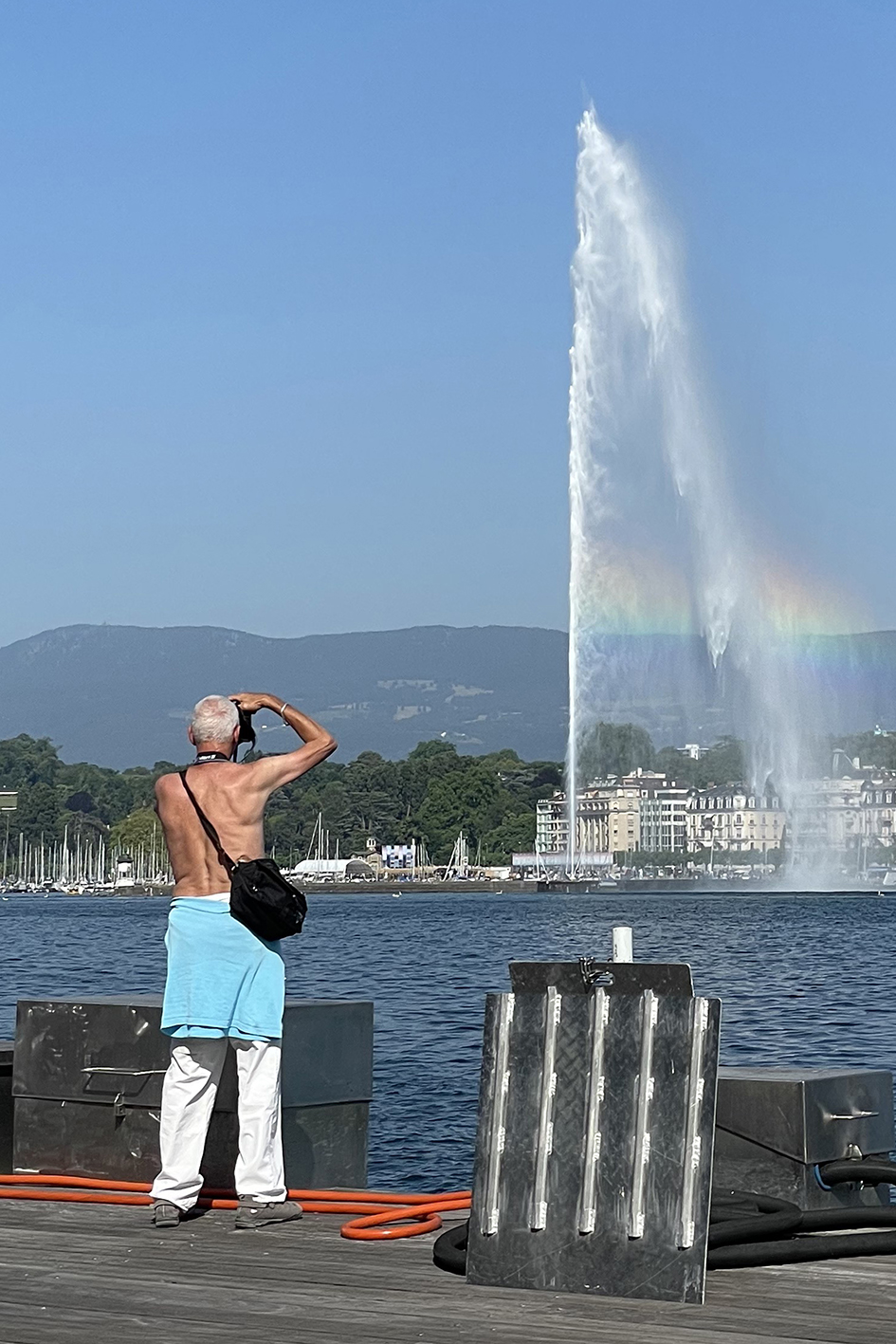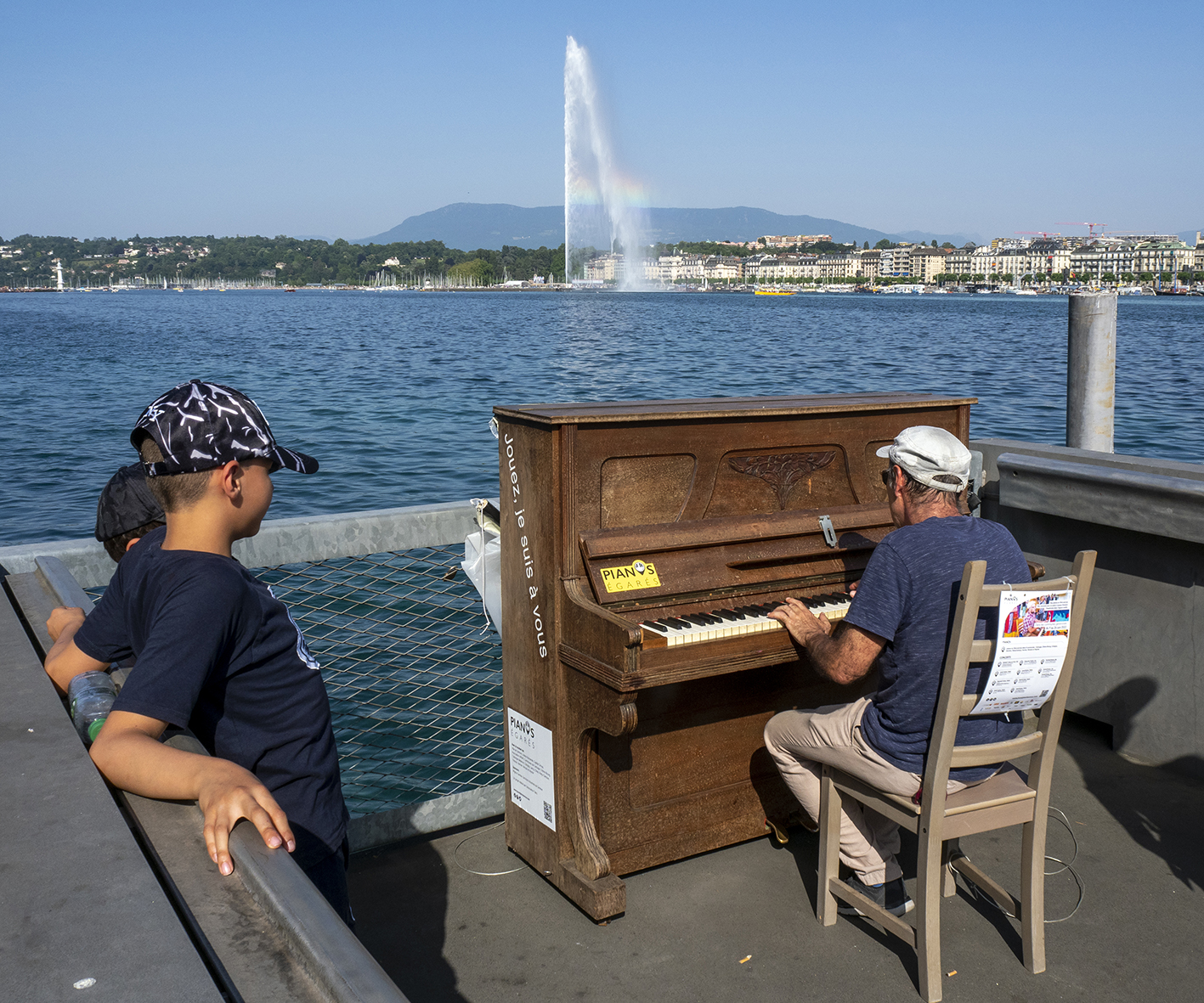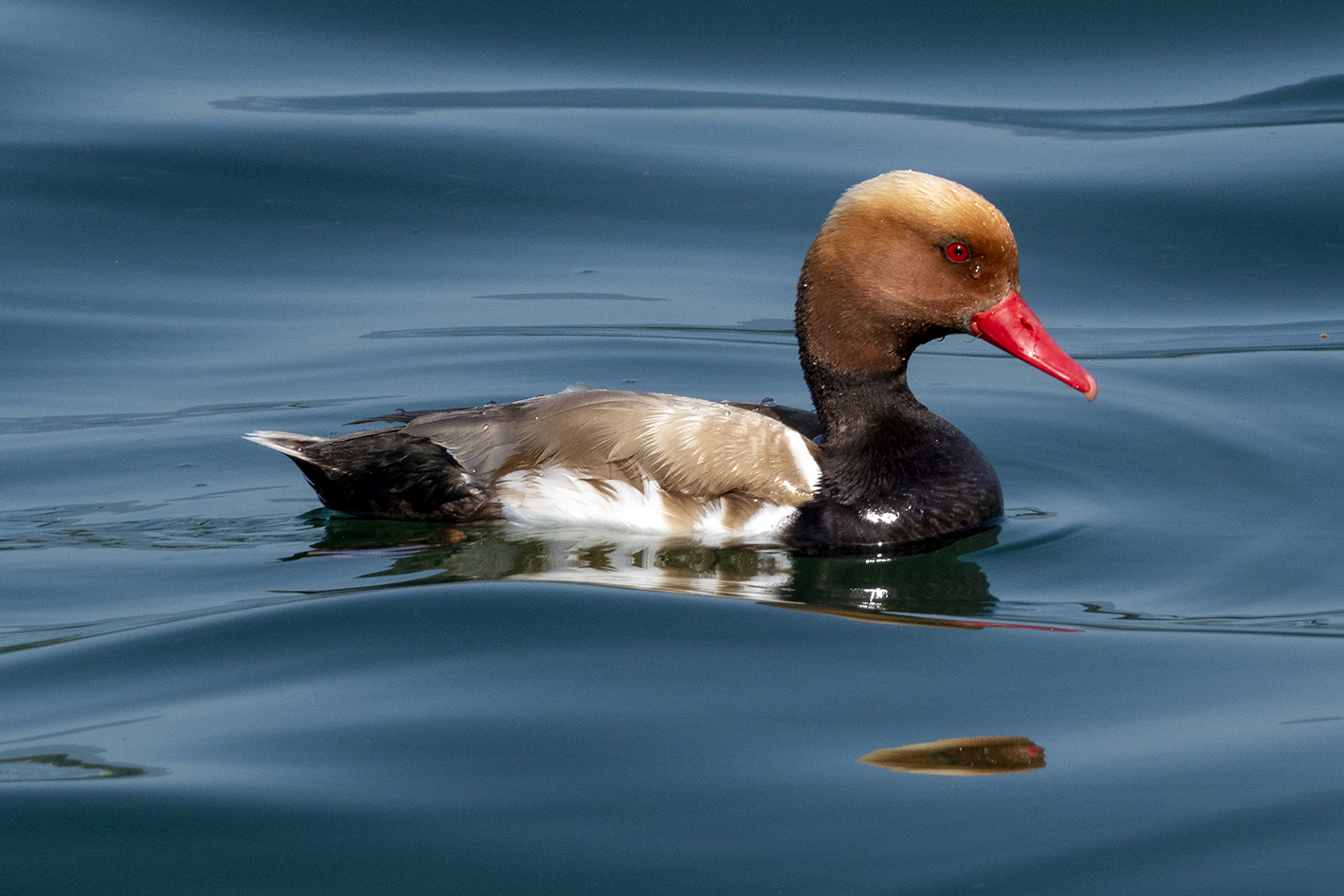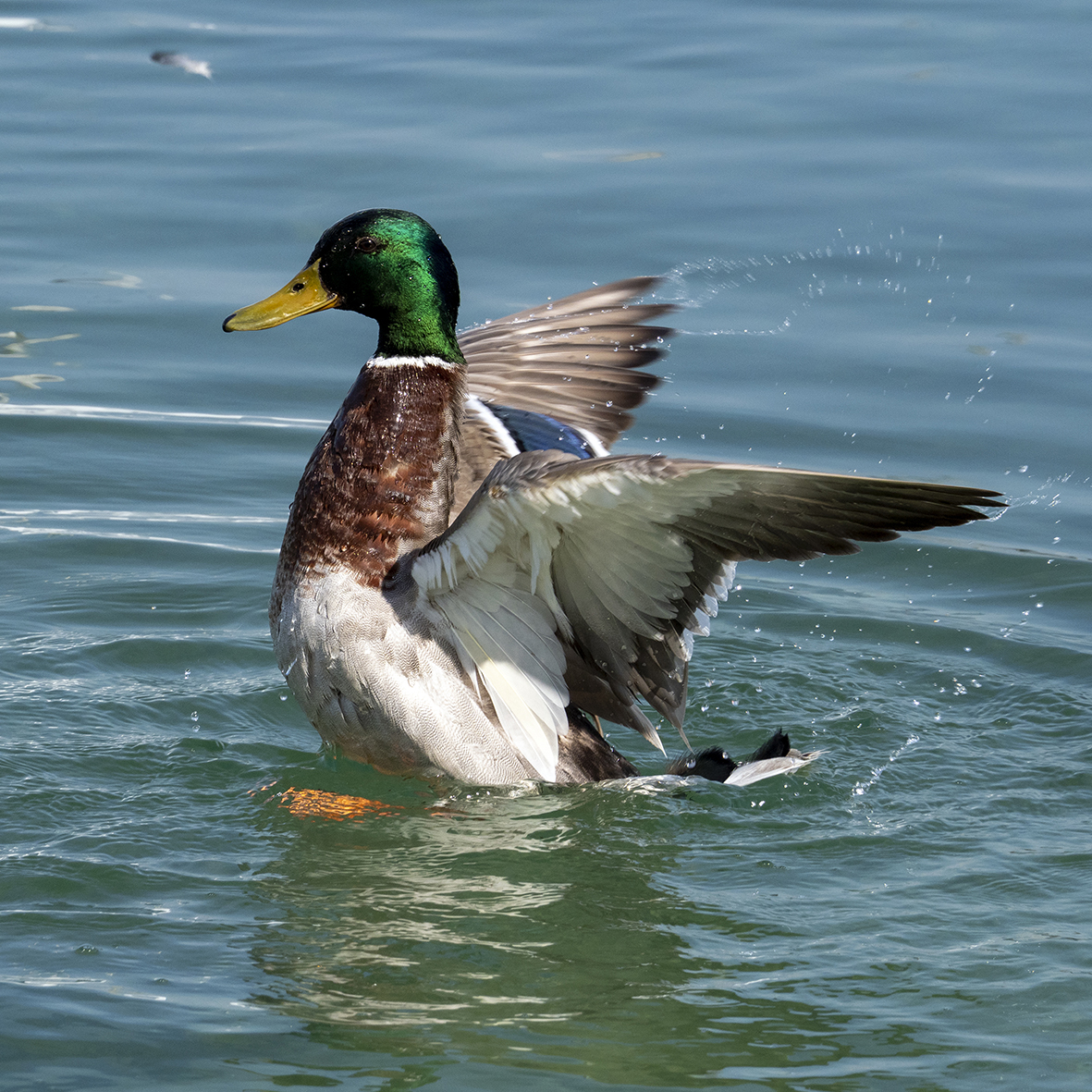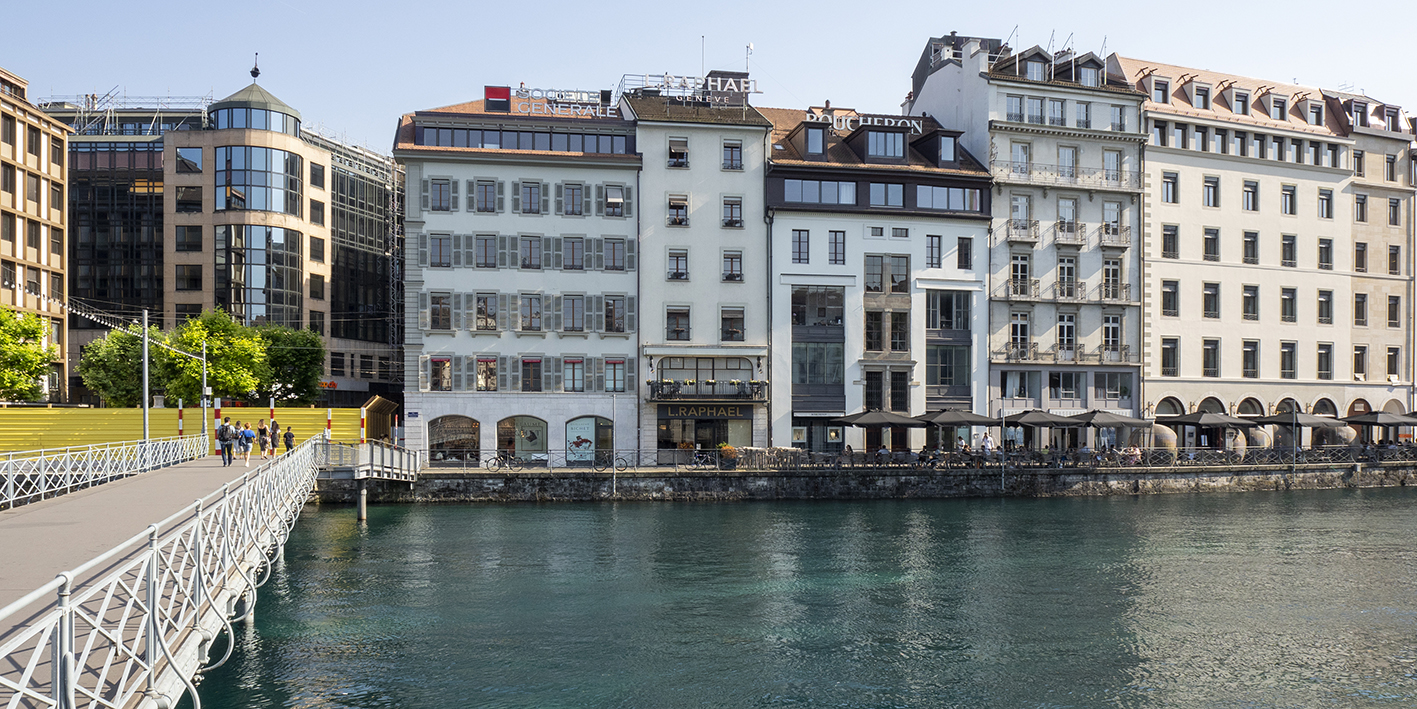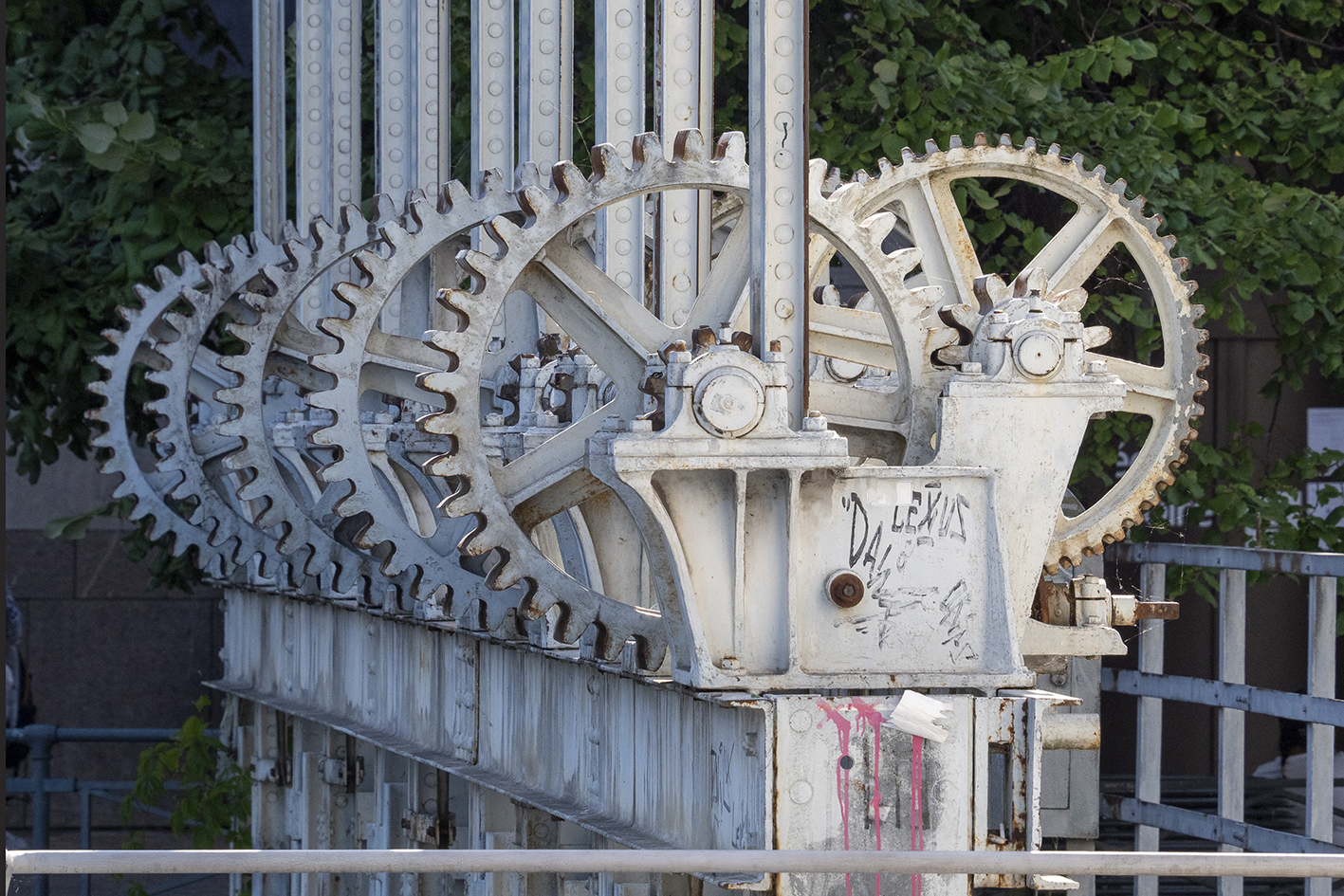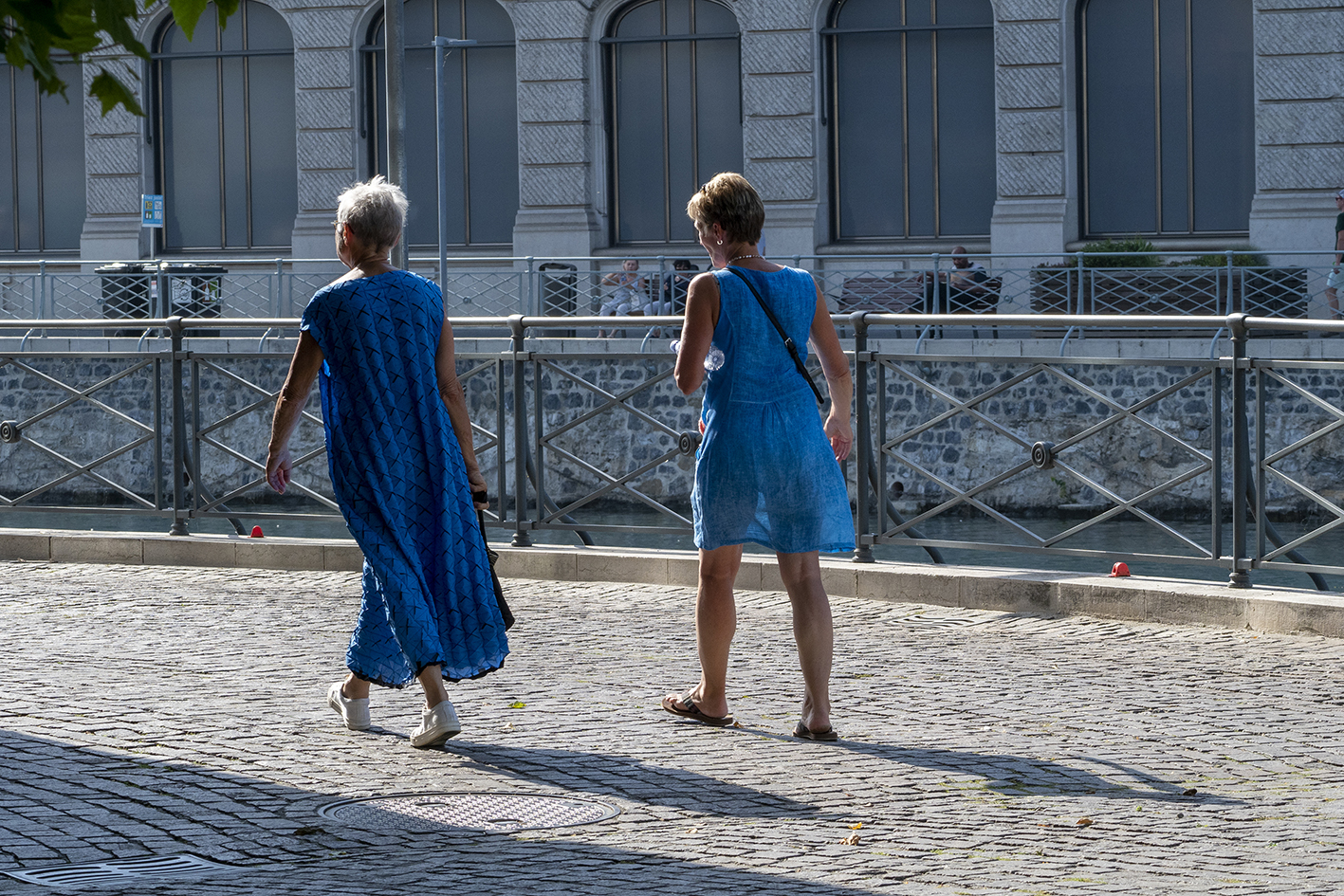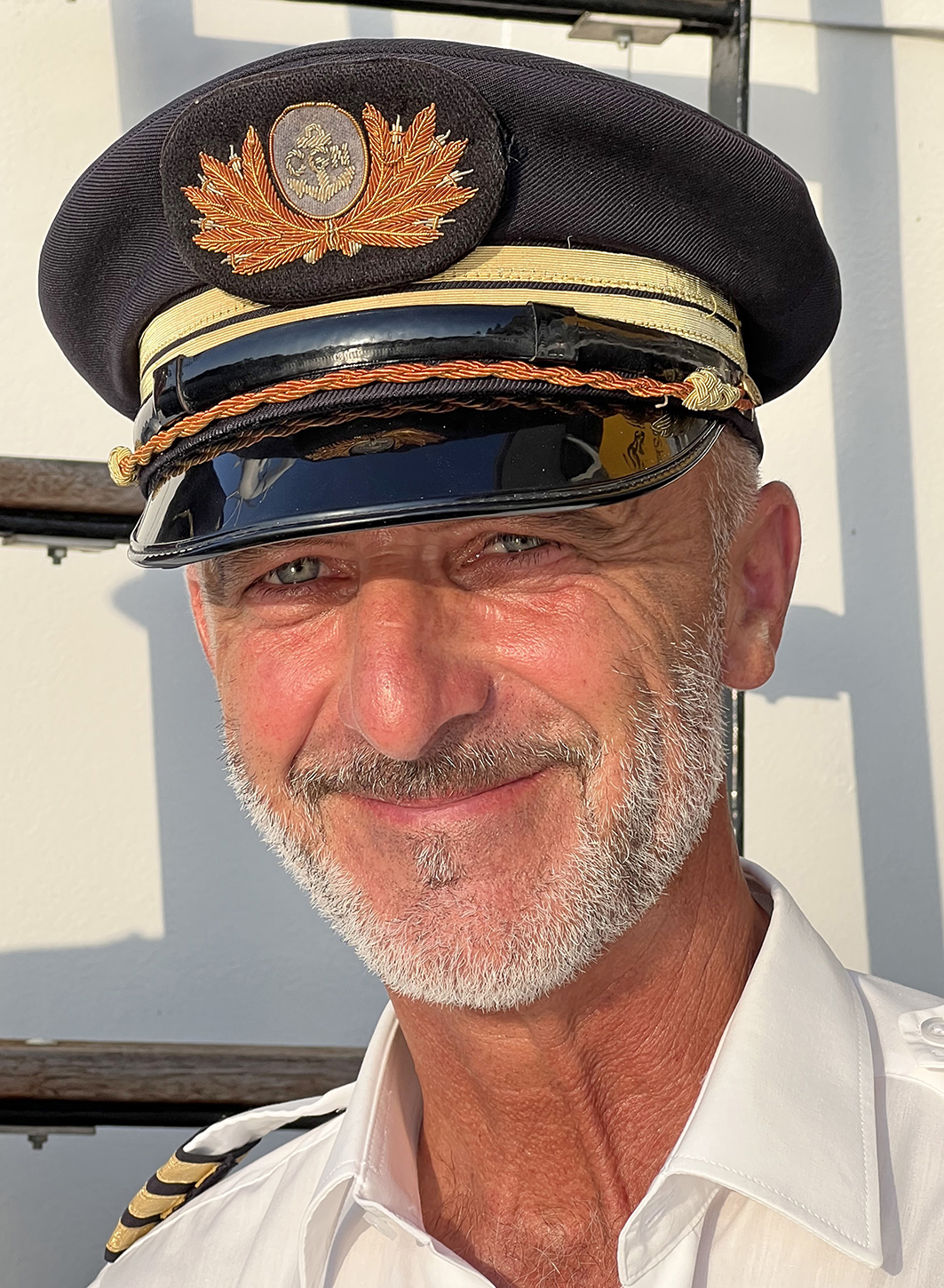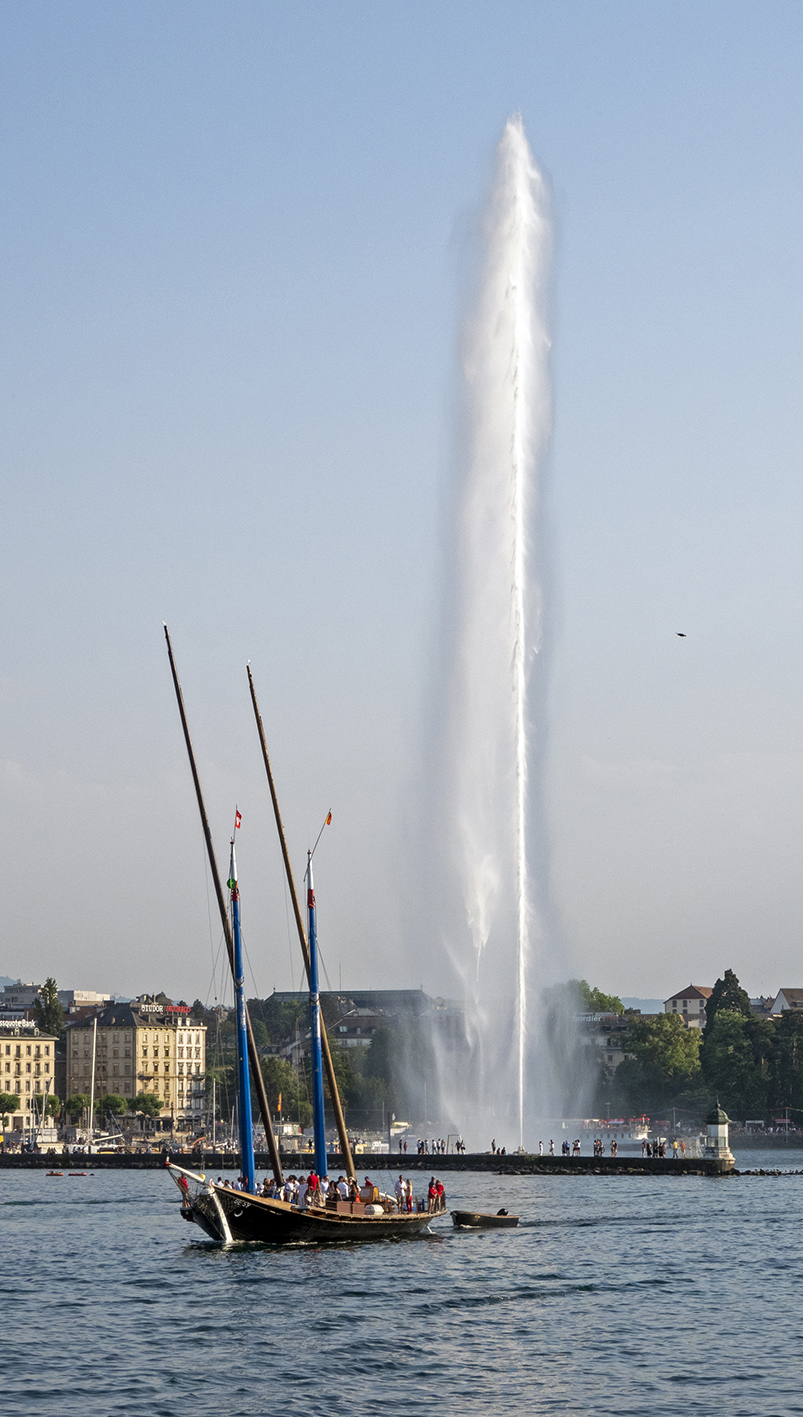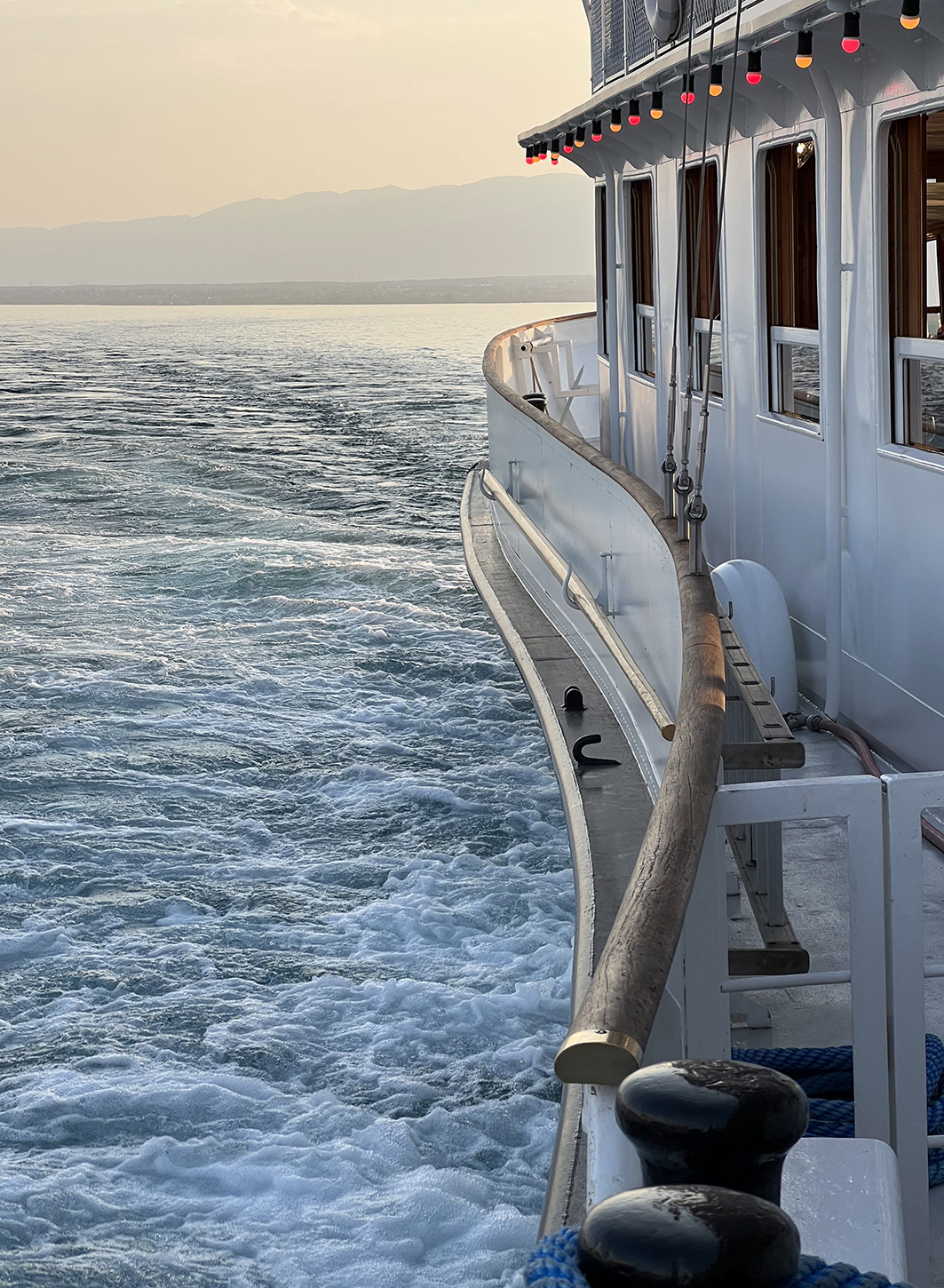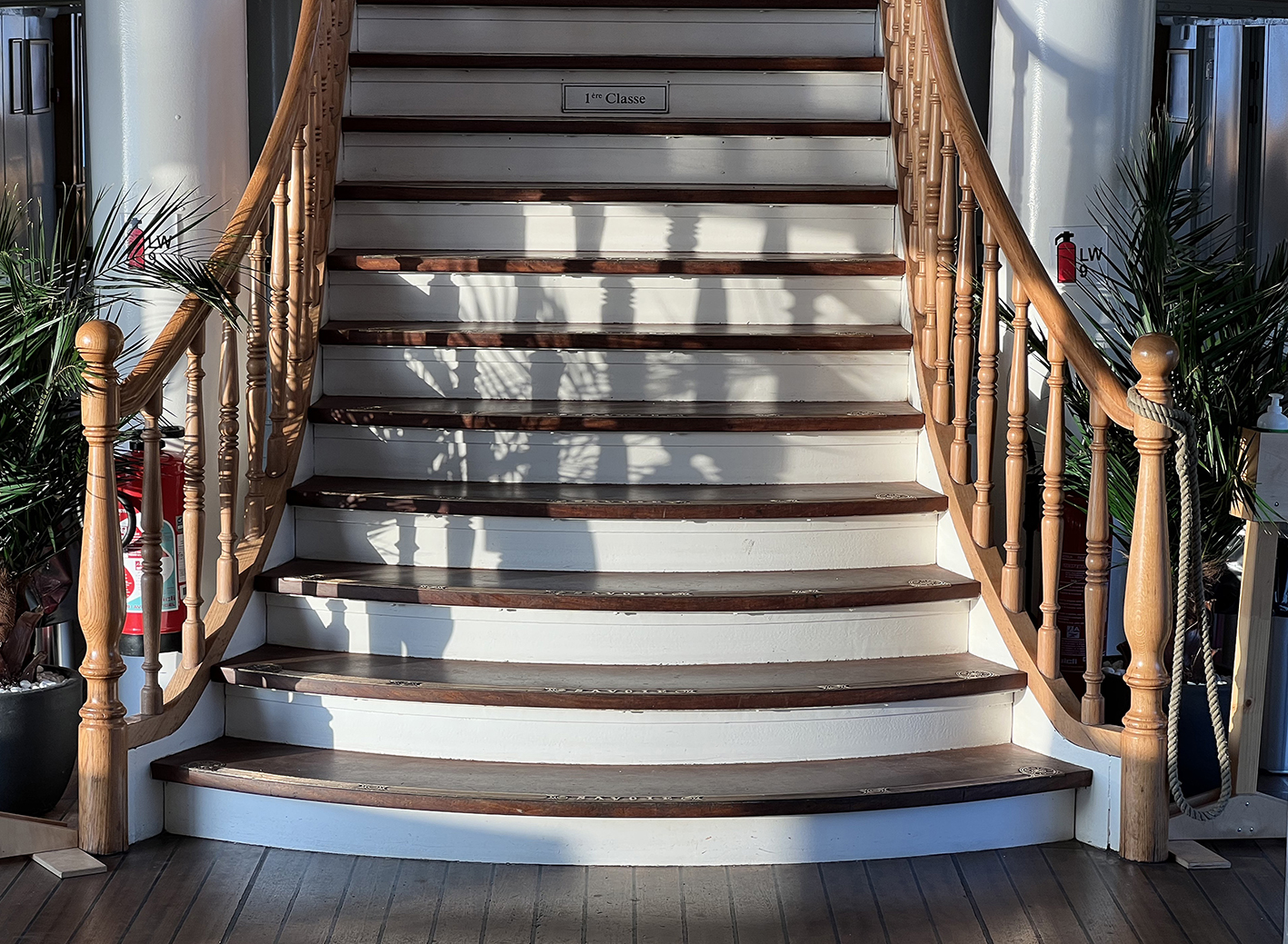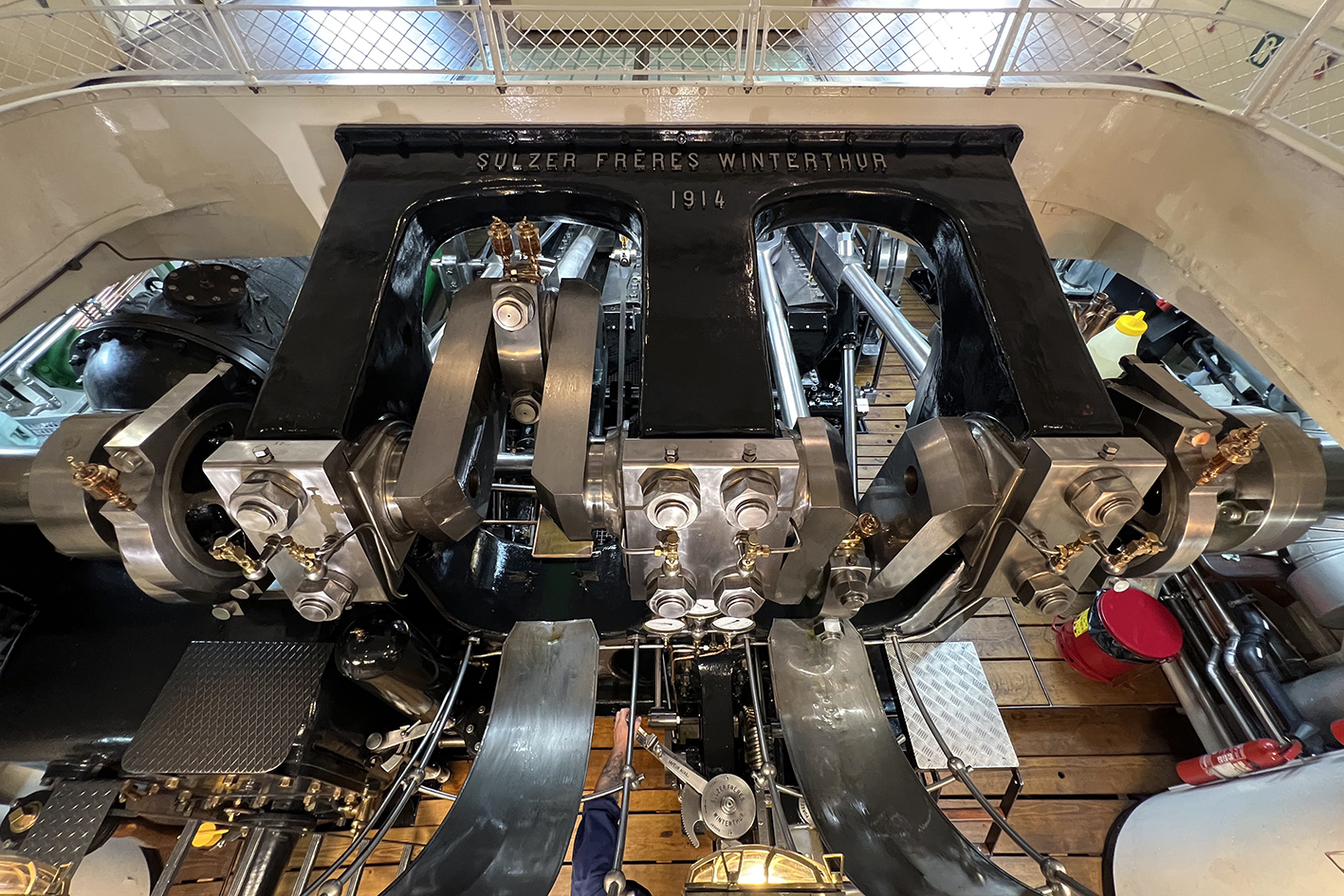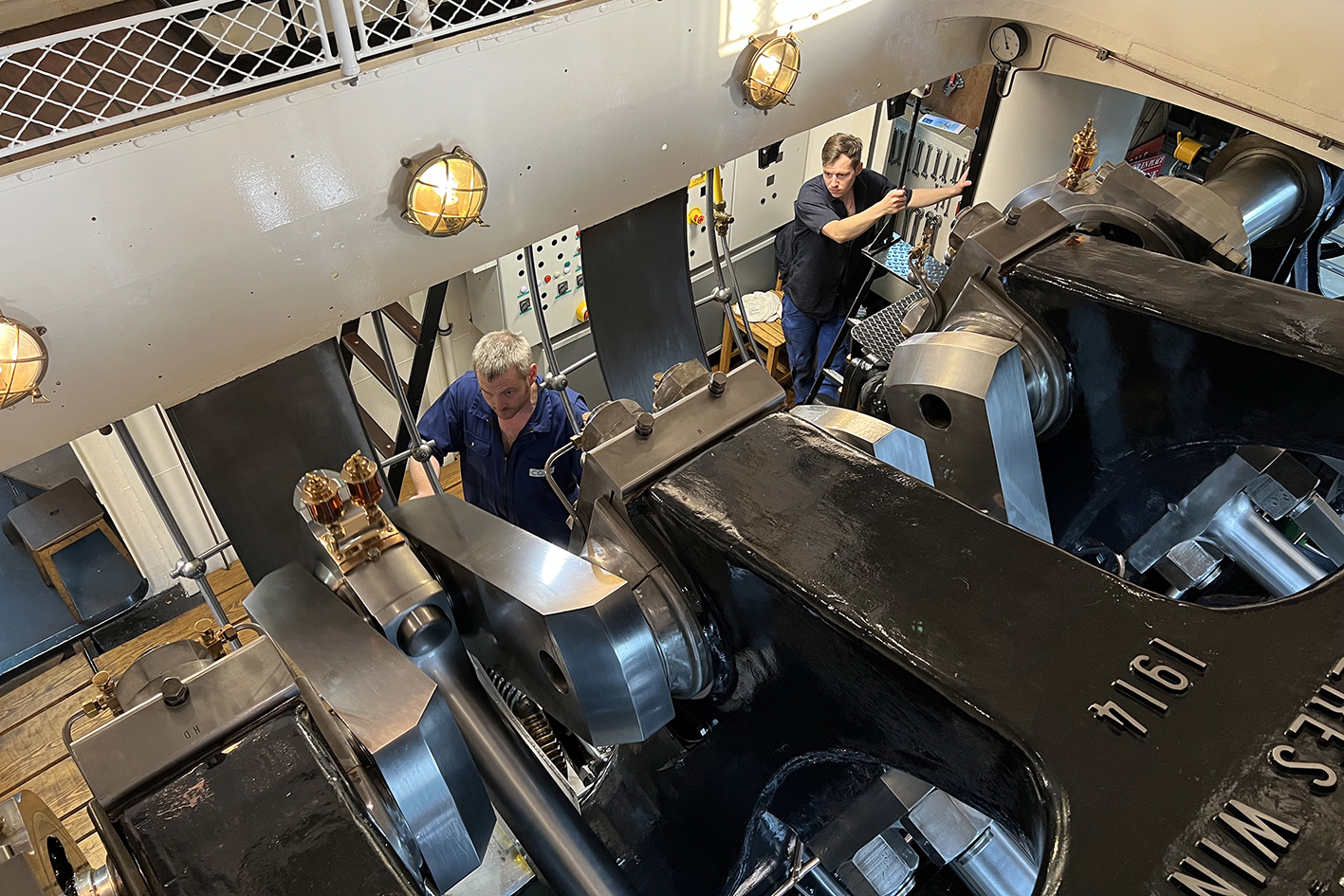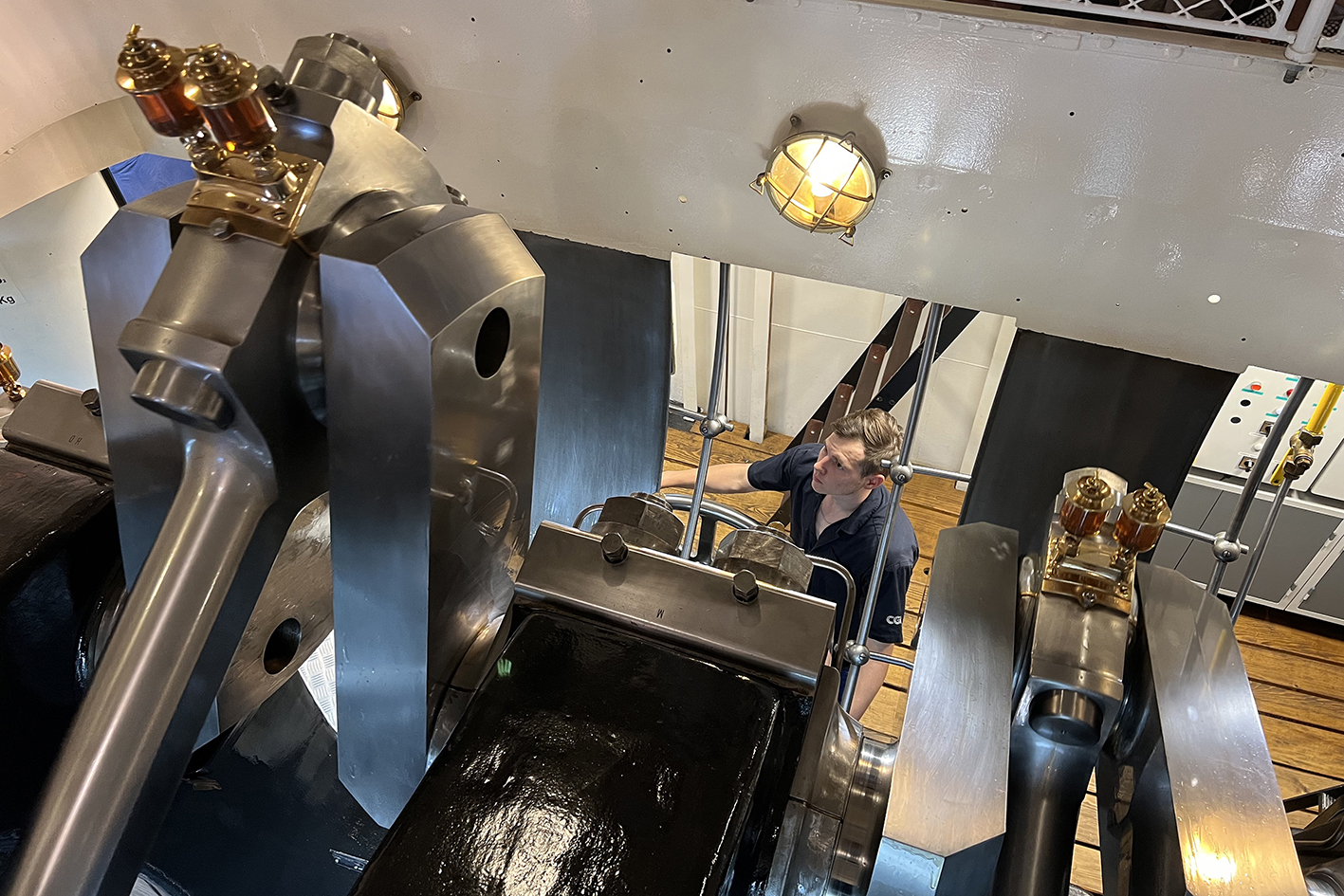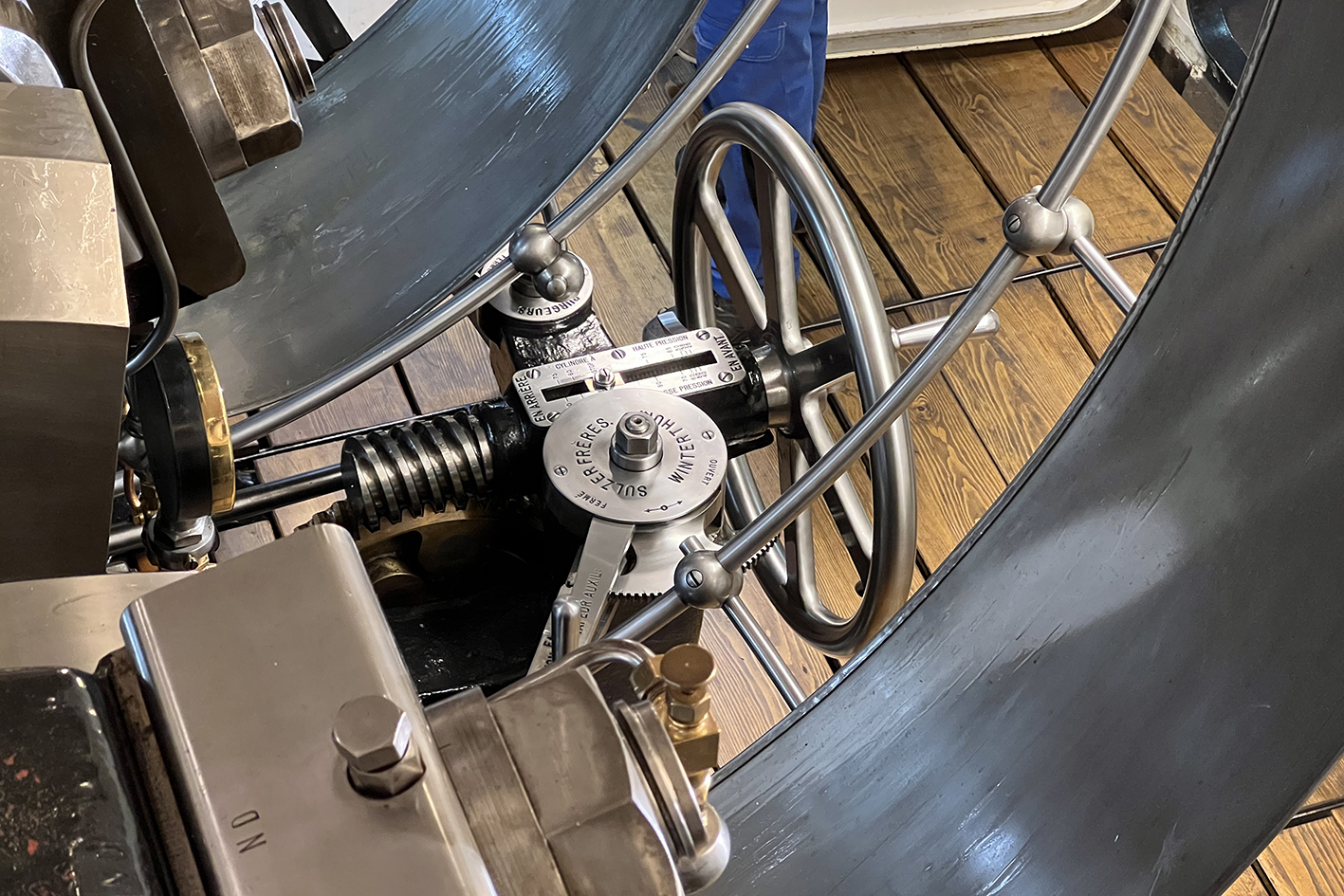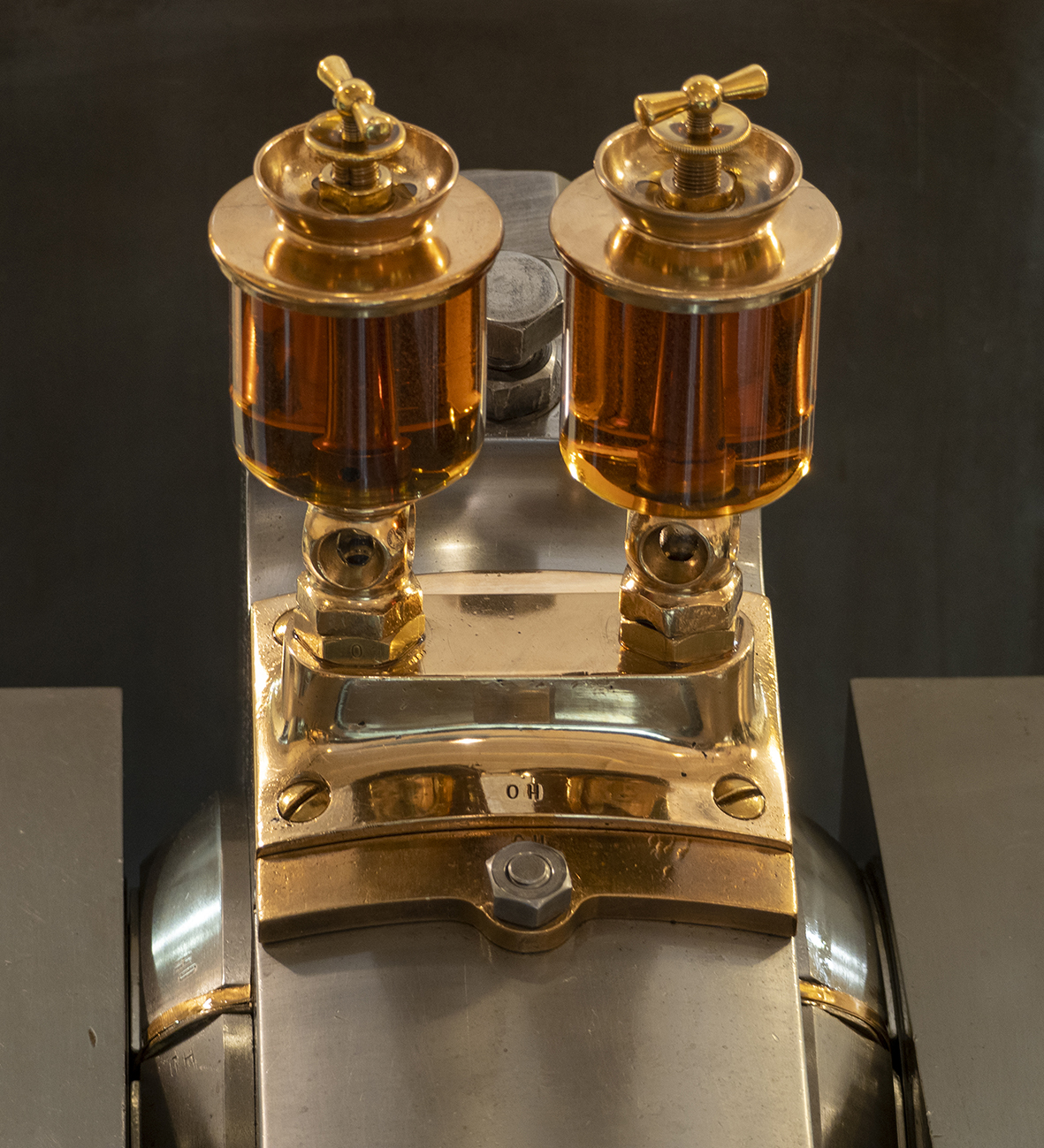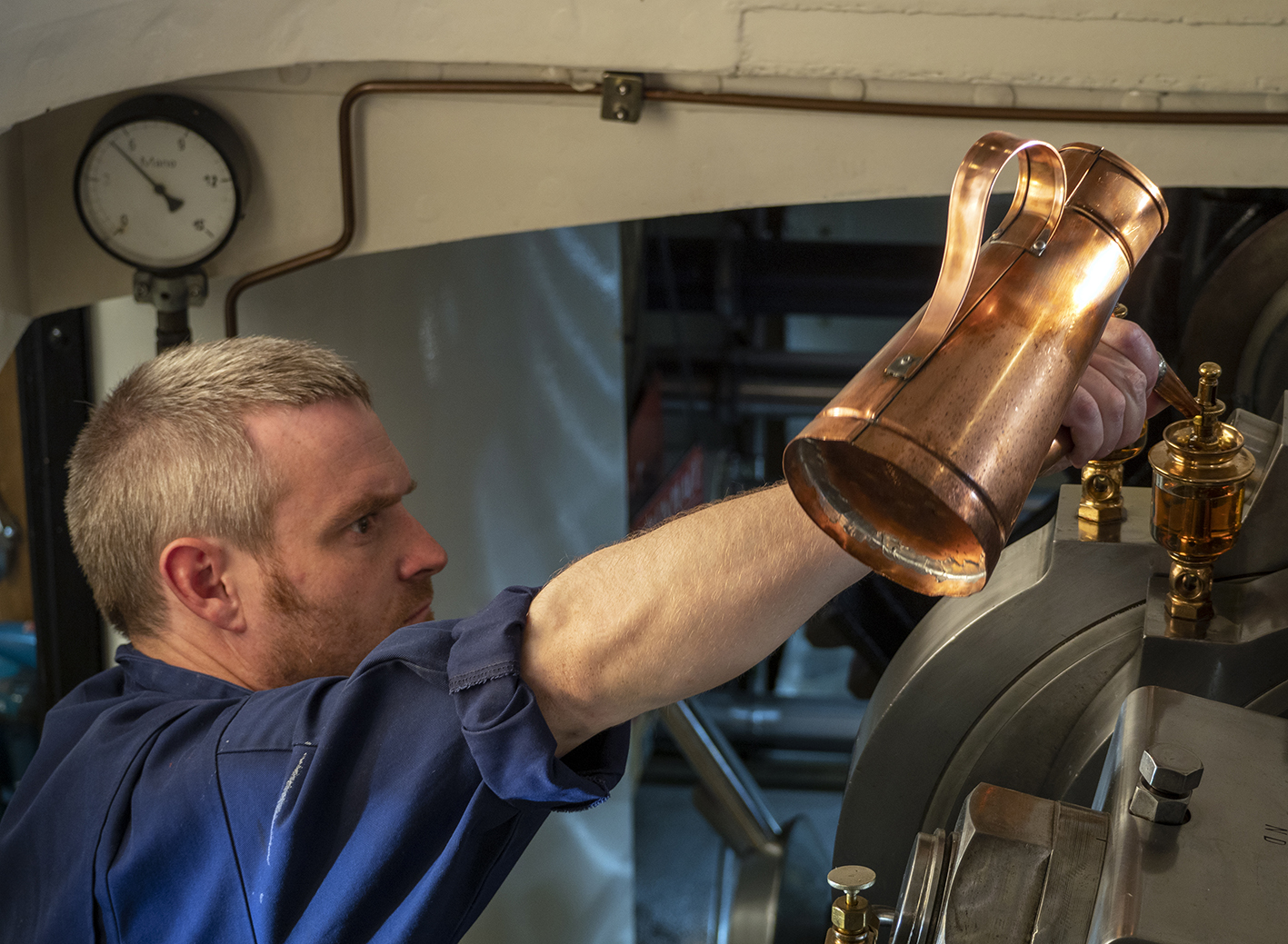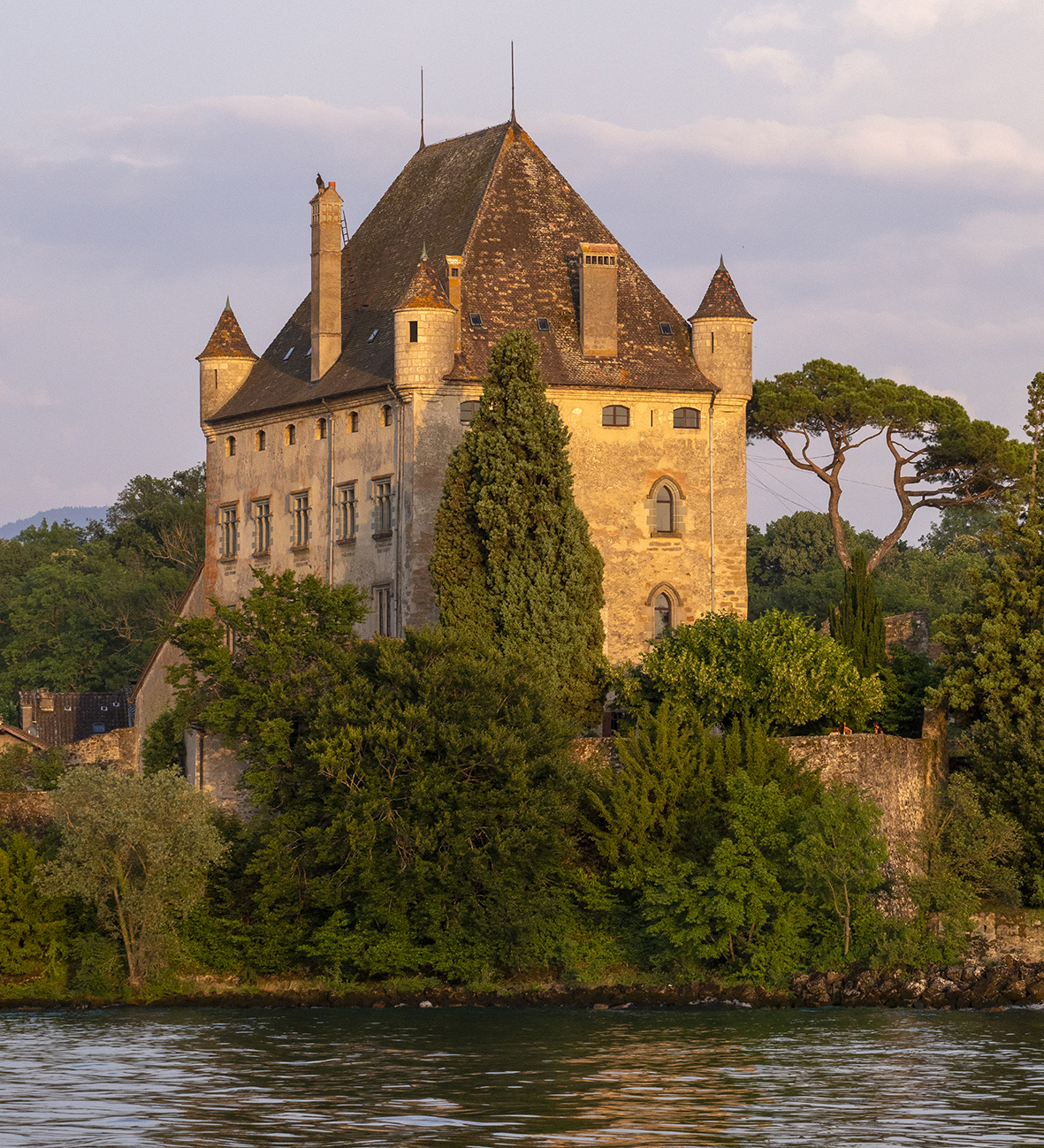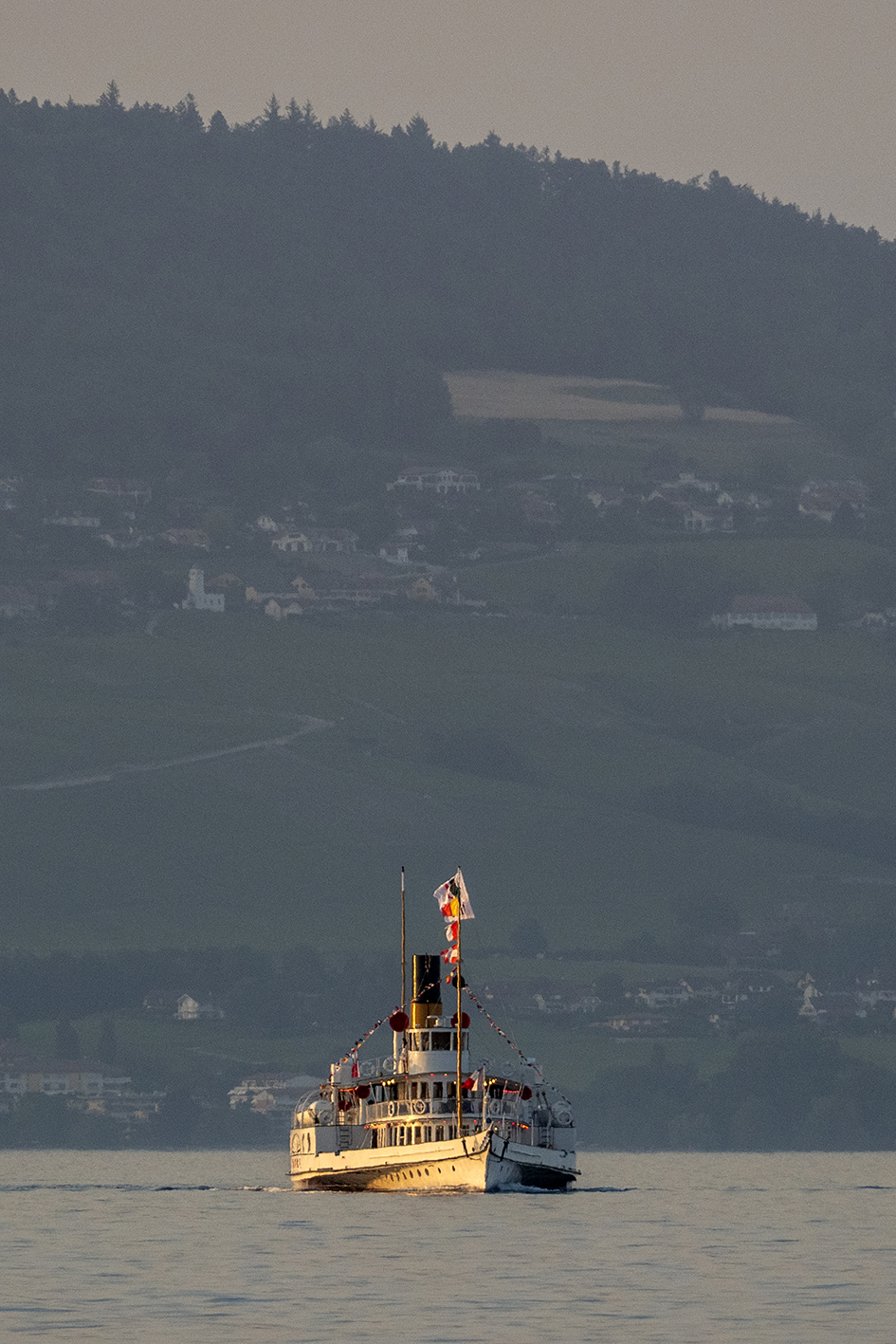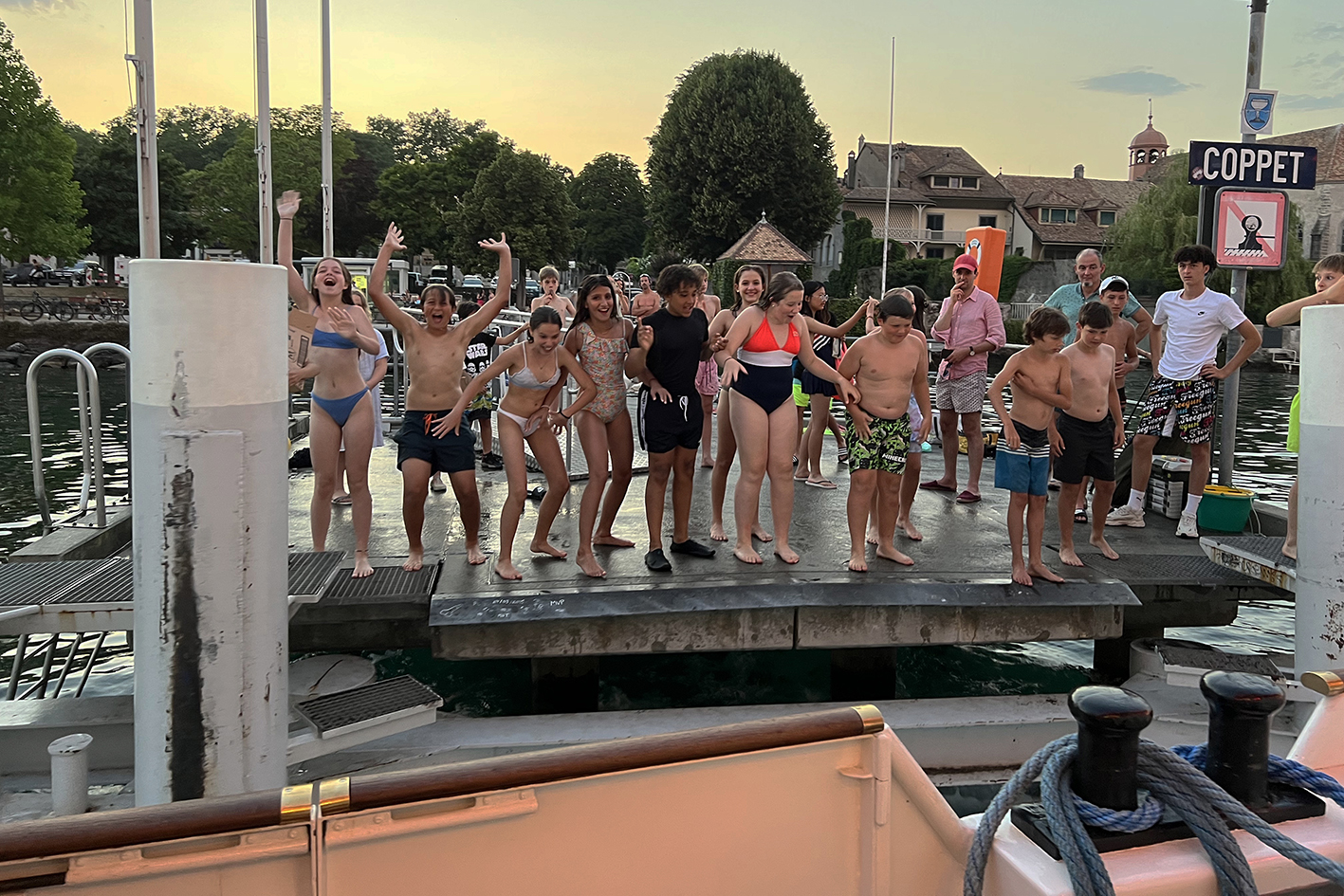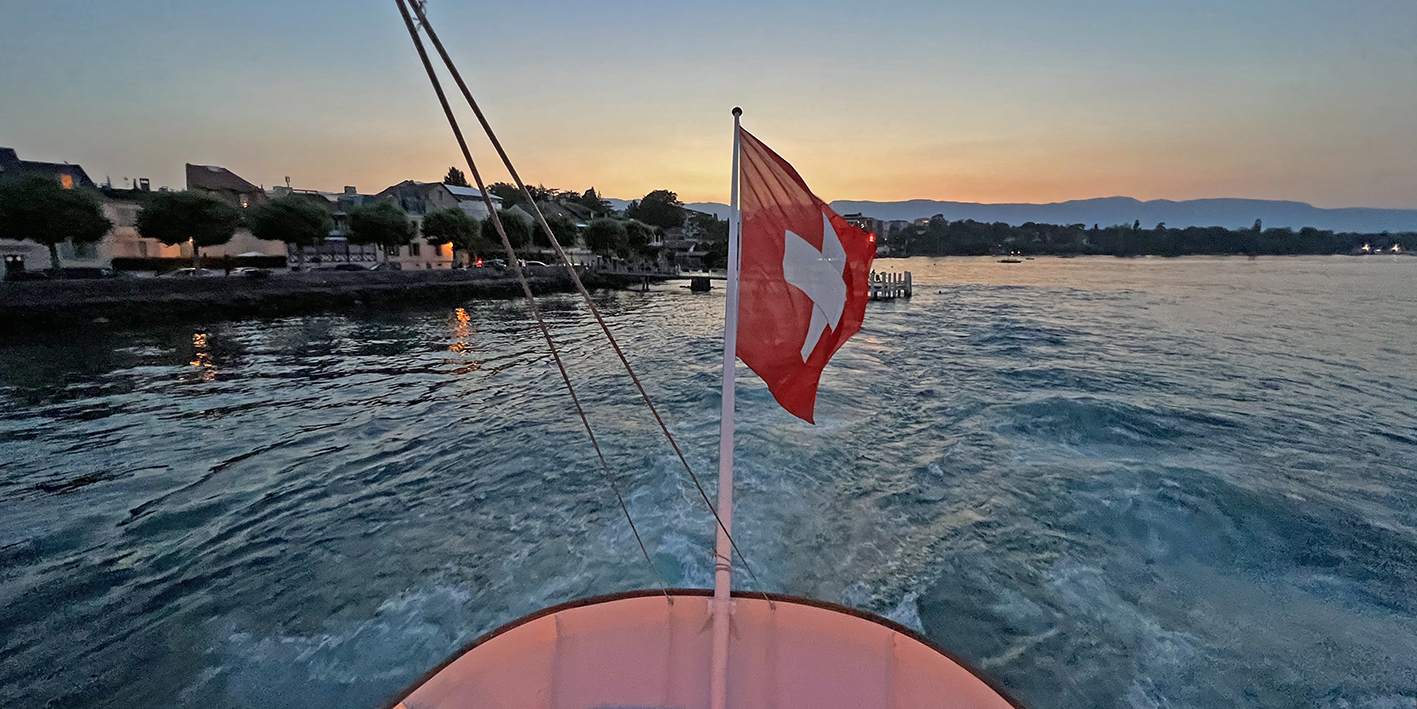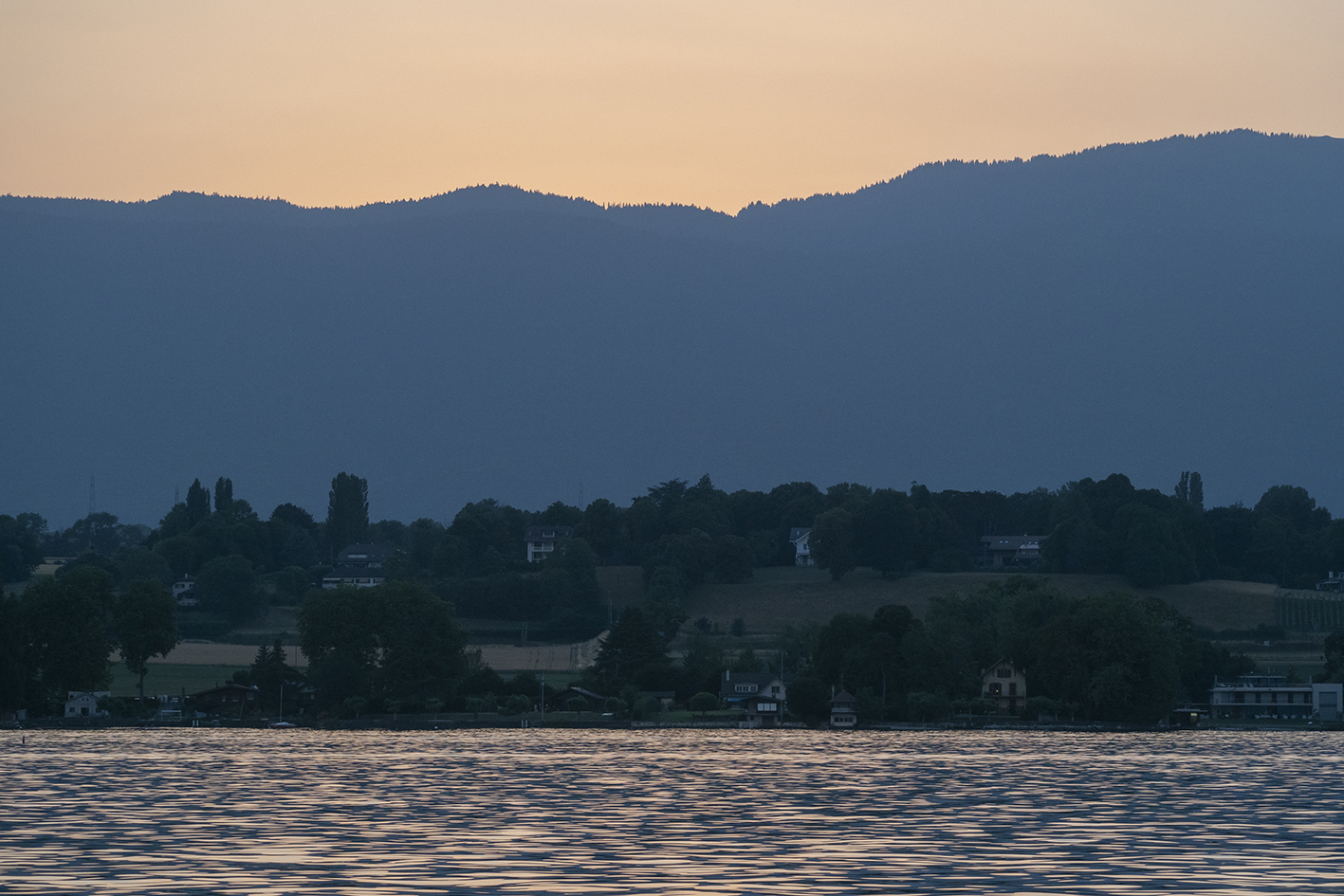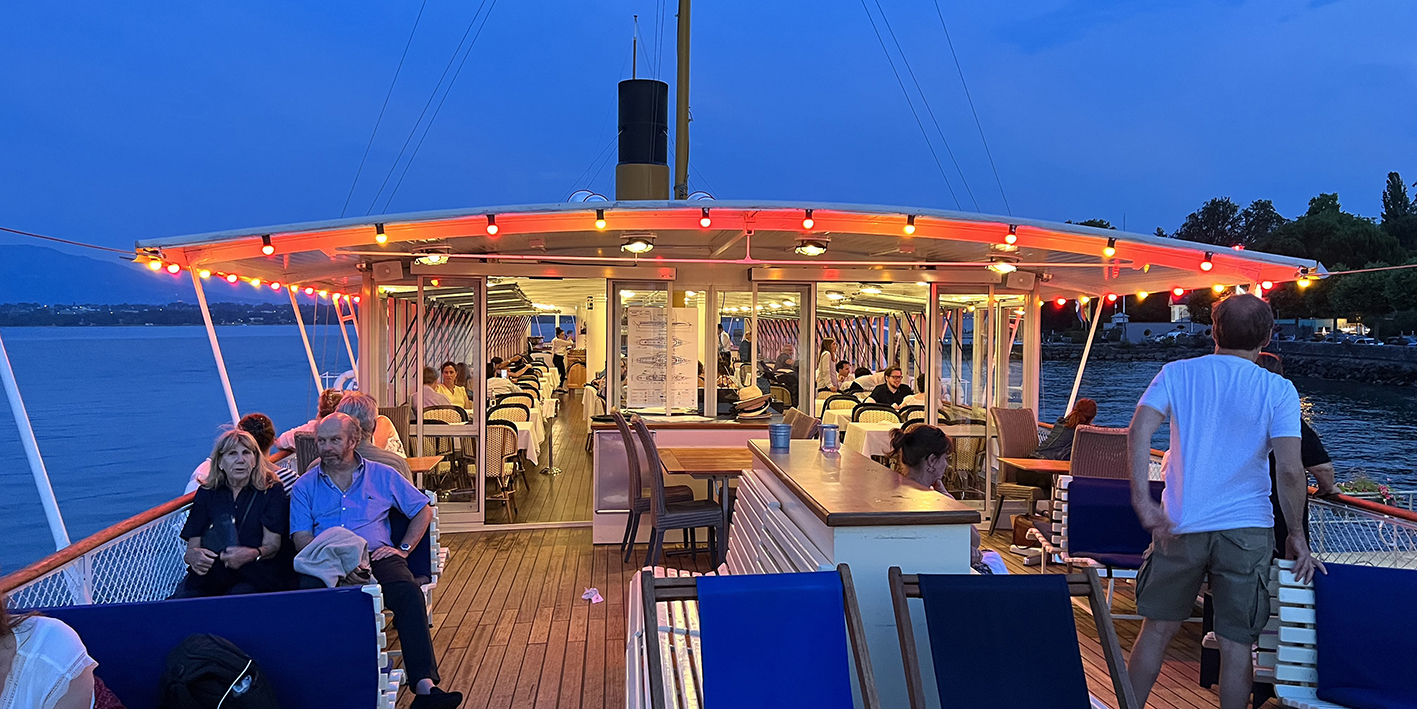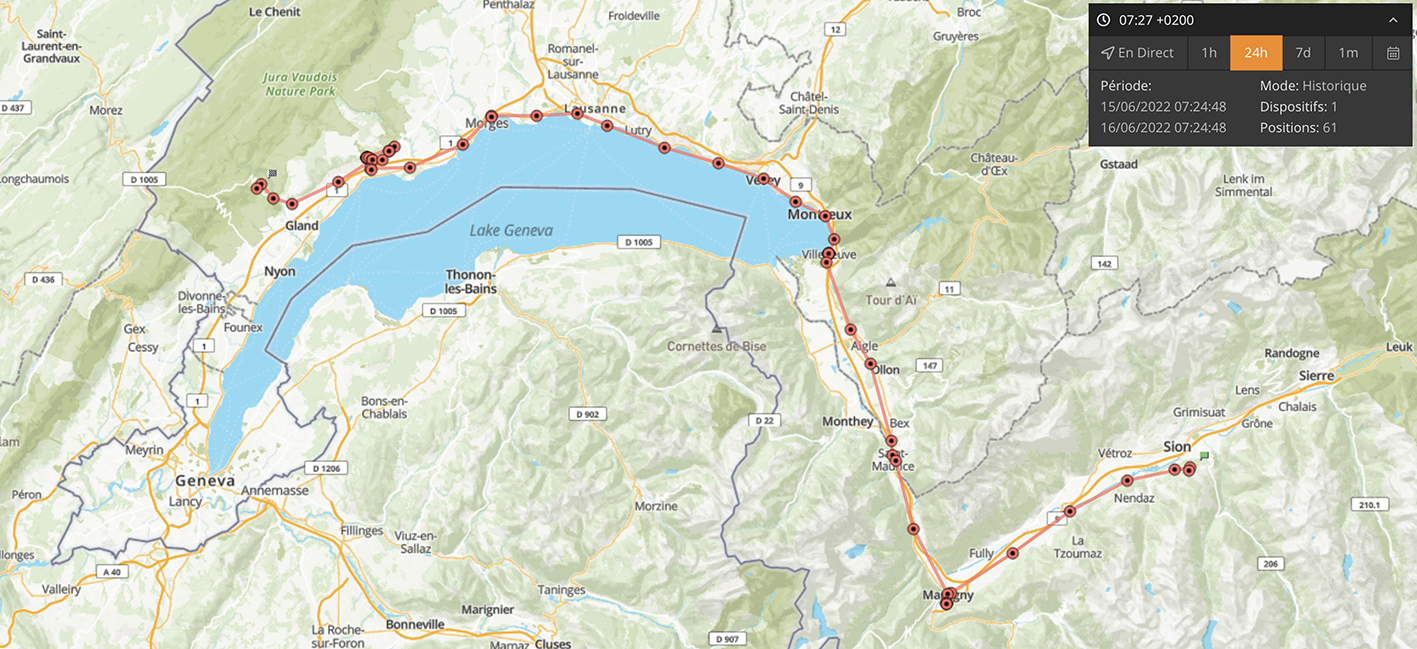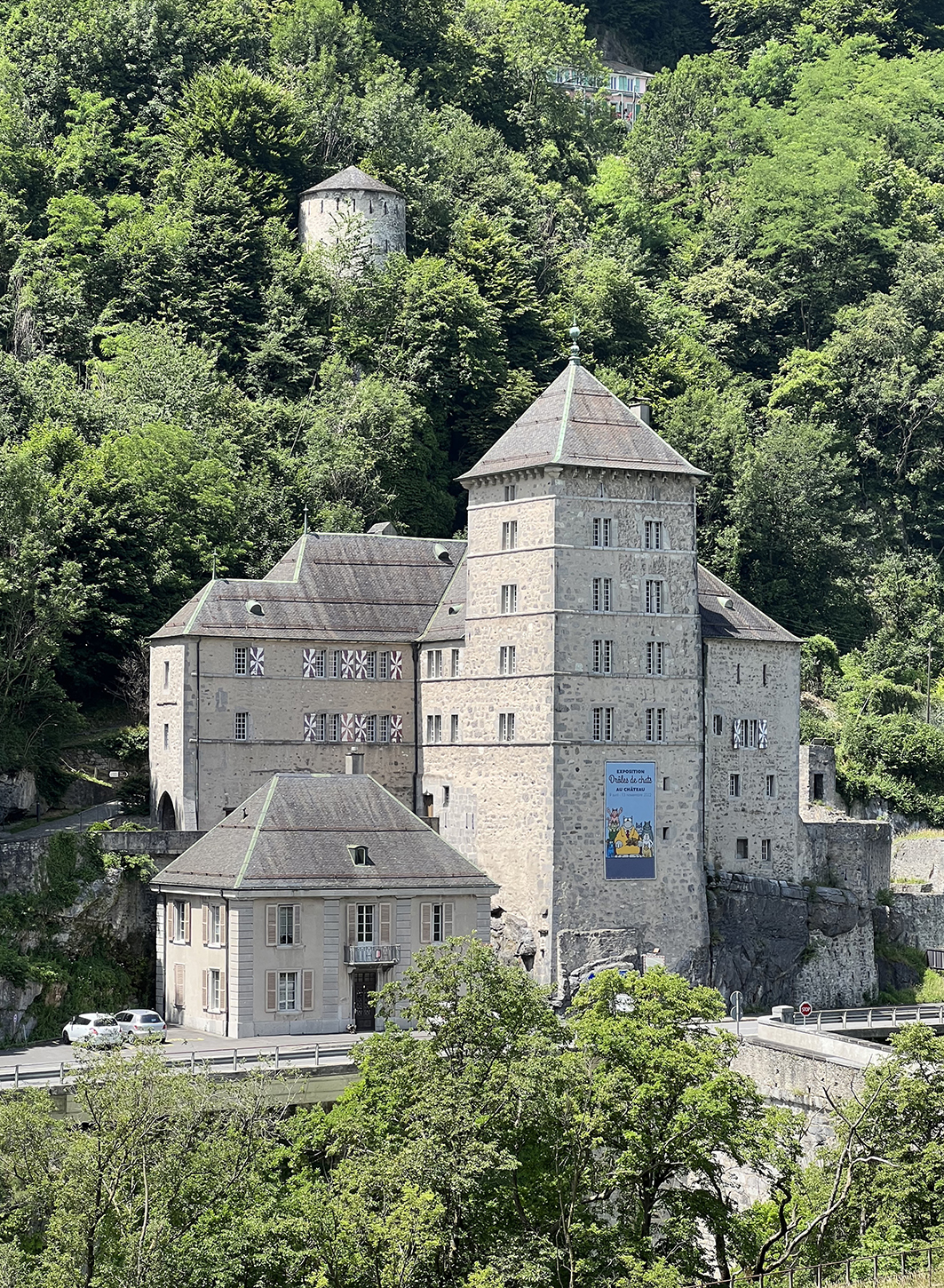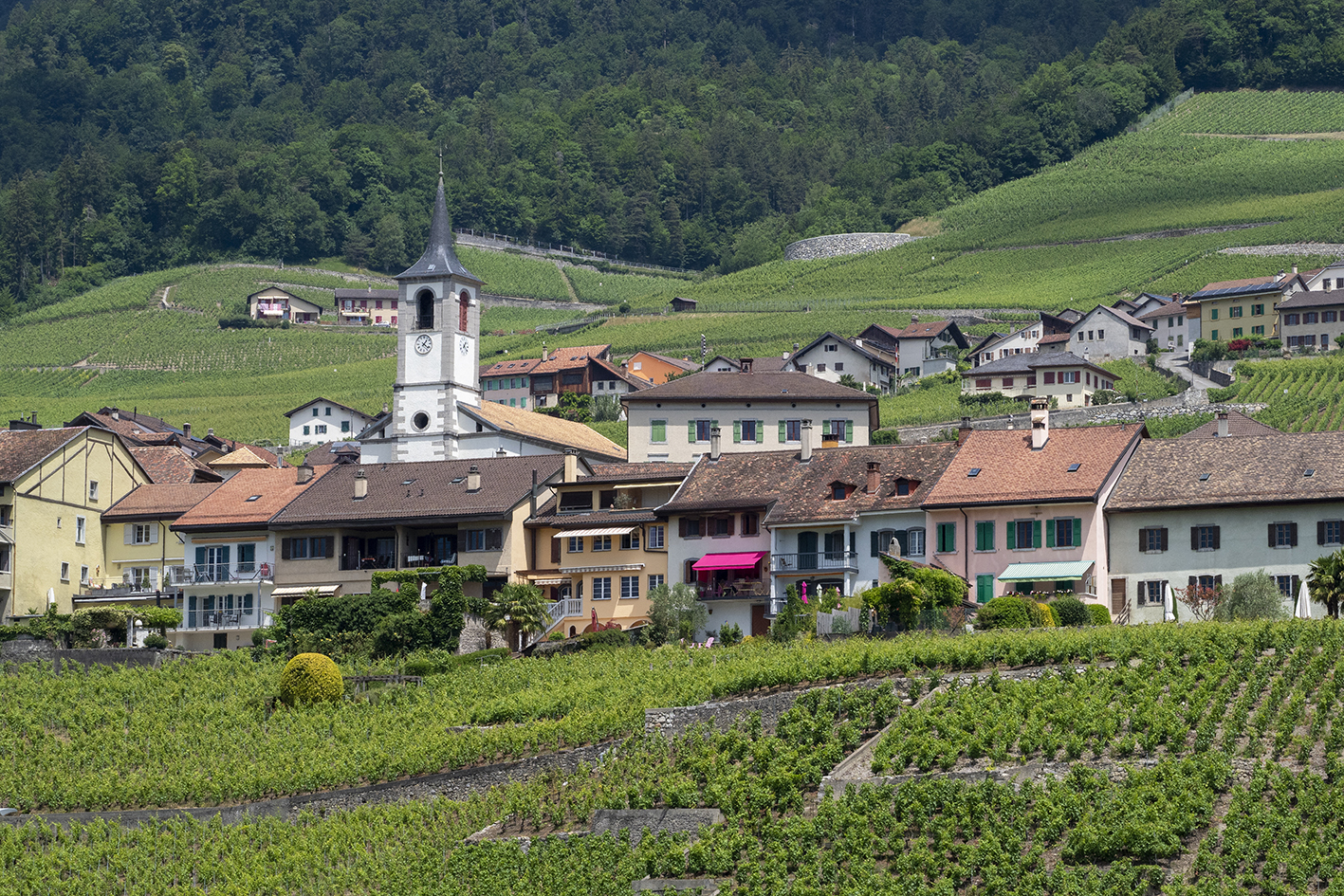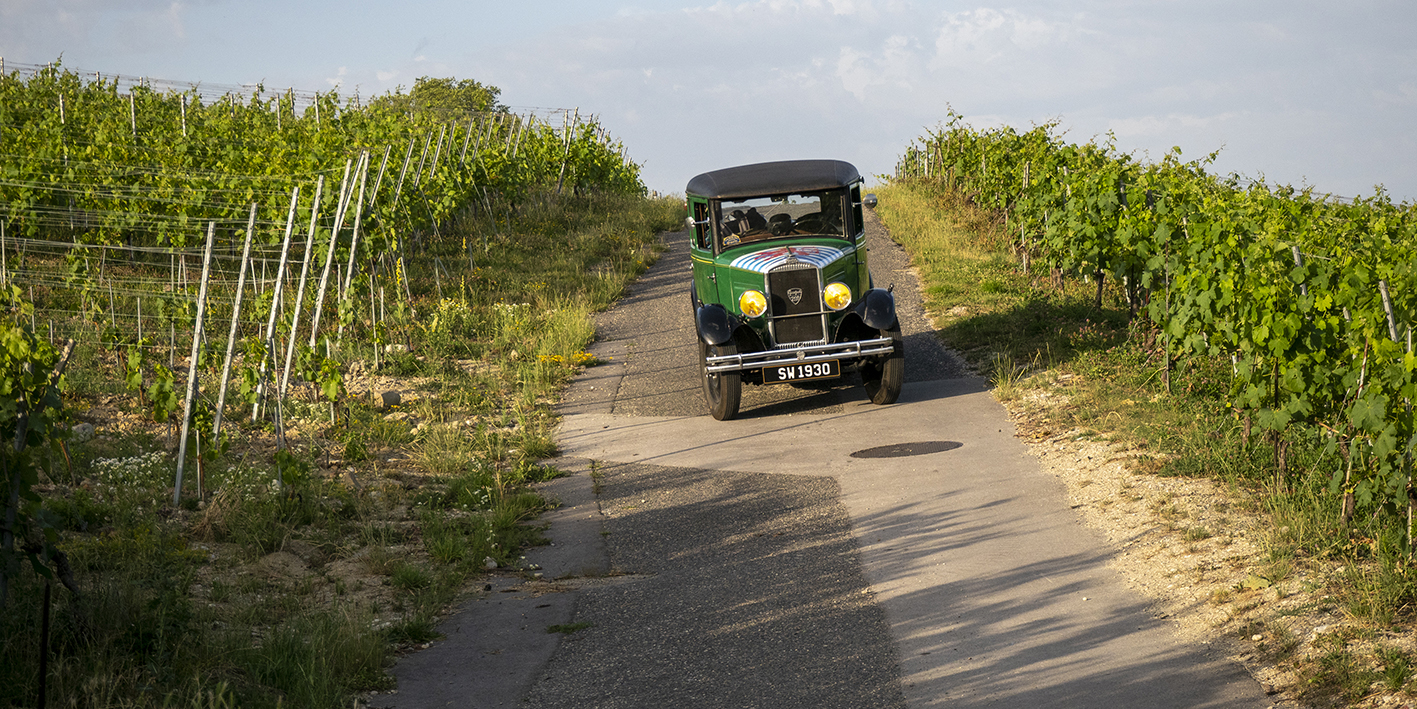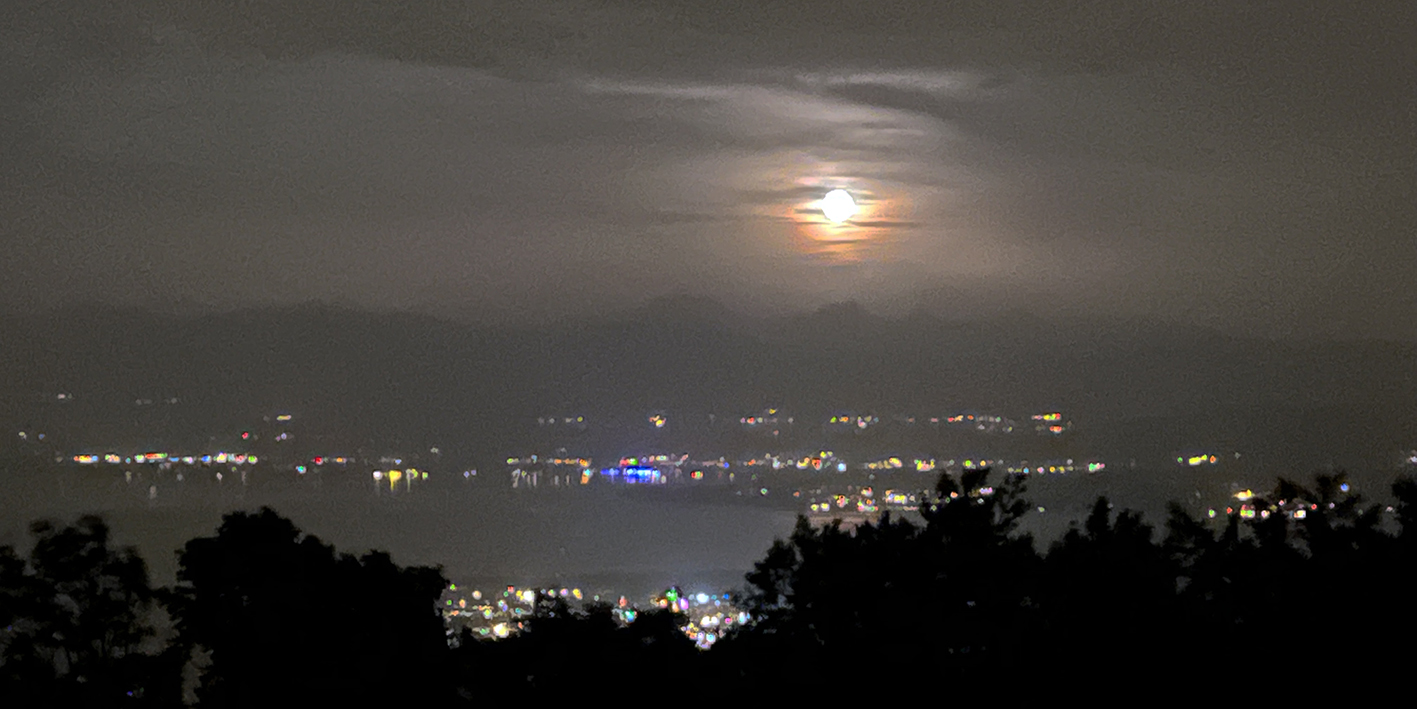POUR voir le début DU VOYAGE (2 mai – 14 JUIN) CLIQUEZ ICI / FOR THE beginning OF THE TRIP (May 2nd – june 14TH), CLICK HERE
POUR VOIR LA SUITE DU VOYAGE (à partir du 26 JUIN) CLIQUEz ICI / TO SEE the next part OF THE TRIP (from JUNE 26TH), CLICk HERE
24 juin 2022. Salin-de-Giraud – Lunel (149 km) / June 24, 2022. Salin-de-Giraud – Lunel (149 km)
Nous commençons par l’exploration des salines, avec les ‘camelles’, véritables montagnes de sel. / We start with the exploration of the saltworks, with the ‘camelles’, real mountains of salt.
Les eaux douces, saumâtres, salées et hypersalines, combinées à la vase, nous offrent une palette de couleurs, créées par les bactéries et les micro-algues qui y vivent. / The fresh, brackish, salty and hypersaline waters, combined with the mud, offer us a palette of colors, created by the bacteria and micro-algae that live there.
Empruntant la route de la mer, nous arrivons à la Plage de Piémanson, quasi déserte. À l’est, le Grand Rhône se jette dans la Méditerranée, à l’ouest c’est le Petit Rhône. / Taking the road to the sea, we arrive at the beach of Piémanson, almost deserted. To the east, the Grand Rhône flows into the Mediterranean, to the west is the Petit Rhône.
La plage naturiste n’attire pas les foules. Nous ne sommes pas intéressés non plus. Nous voulons voir un peu plus de la Camargue. / The naturist beach does not attract crowds. We’re not interested either. We want to see a bit more of the Camargue.
Dans le Grand Rhône, un panneau mystérieux indique le nord. C’est de là que nous sommes venus. C’est là qu’il nous faut désormais retourner ! / In the Grand Rhône, a mysterious sign indicates the north. That’s where we came from. This is where we must now return!
Le ciel se fait menaçant. Un orage se prépare. / The sky is threatening. A storm is brewing.
Pourtant, nous y échappons. Plus loin, nous tombons sur des flaques d’eau, témoins des trombes d’eau qui y sont tombées. Nous sommes en terrain connu : lors du rodage de « La Charmante », il y a deux ans, nous sommes déjà passés par ici (voir : http://www.weinberg.lu/rodage-moteuren-france-breaking-in-the-engine-in-france/) / Yet we escape it. Further on, we come across puddles of water, witnesses of the downpours that have fallen there. We are on familiar ground: during the break-in of « La Charmante », two years ago, we have already been here (see: http://www.weinberg.lu/rodage-acteuren-france-breaking-in- the-engine-in-france/)
Nous longeons le Petit Rhône près des Saintes-Maries-de-la-Mer. Un bateau à roues à aube promène des touristes. / We follow the Petit Rhône near Saintes-Maries-de-la-Mer. A paddle wheel boat takes tourists around.
Grâce au drone, on peut voir le Petit Rhône se jetant dans la Méditerranée. / Thanks to our drone, we can see the Petit Rhône flowing into the Mediterranean.
Nous empruntons le bac du Sauvage pour franchir le Petit Rhône et quitter définitivement la Camargue. / We take the Sauvage ferry to cross the Petit Rhône and leave the Camargue for good.
(Photo : Marie-Xavier Lassauzet)
(Photo : la dame du bac)
Un dernier stop à Aigues Mortes, puis nous continuons vers Lunel, chez notre amie plongeuse Sylvinne. Le Rhône est désormais derrière nous, dans deux jours nous nous attaquerons au dernier fleuve pour cette année : la Loire ! / A last stop in Aigues Mortes, then we continue towards Lunel, at our diver friend Sylvinne. The Rhône is now behind us, in two days we will tackle the last river for this year: the Loire!
23 juin 2022. Avignon – Salin-de-Giraud (104 km) / June 23, 2022. Avignon – Salin-de-Giraud (104 km)
Le matin, promenade dans Avignon. Le Palais des Papes est en travaux d’entretien. Entre 1309 et 1376, sept papes s’y succèdent : Clément V, Jean XXII, Benoît XII, Clément VI, Innocent VI, Urbain V et Grégoire XI. Ces années vont radicalement transformer la ville et la marquer d’une empreinte à laquelle elle doit encore sa renommée mondiale. / In the morning, we stroll through Avignon. The Palace of the Popes is undergoing maintenance. Between 1309 and 1376, seven popes succeeded one another here: Clement V, John XXII, Benedict XII, Clement VI, Innocent VI, Urban V and Gregory XI. These years will radically transform the city and mark it with its still worldwide fame.
Selon la légende, la construction du célèbre pont sur lequel on dansait ‘tous en rond’ d’après la chanson, aurait été initié en 1177, par un jeune berger appelé Bénézet qui se disait envoyé de Dieu. Moins de dix ans plus tard, le pont était utilisable. Mais en 1603, suite à de fortes crues du Rhône, une arche s’effondre, puis trois autres en 1605. Les travaux de réparation ne débutèrent qu’en 1628, interrompus par une épidémie de peste. Le pont ne sera réutilisable qu’en 1633.En 1669, une nouvelle crue du Rhône emporta plusieurs autres arches pour ne laisser que celles qu’on connaît de nos jours. / According to the legend, the construction of the famous bridge on which people danced “all in circles” was initiated in 1177, according to legend, by a young shepherd called Bénézet who said he was sent by God. Less than ten years later, the bridge was in use. But in 1603, following heavy flooding of the Rhône, an arch collapsed, then three others in 1605. Repair work did not begin until 1628, interrupted by a plague epidemic. The bridge will not be reused until 1633. In 1669, a new flood of the Rhône carried away several other arches to leave only those that we know today.
Nous nous rendons sur l’île de la Barthelasse, entourée par deux bras du Rhône. Photos de « La Charmante » devant le profil de la ville fortifiée et devant le célèbre pont – ou ce qui en reste… / We drive to the island of Barthelasse, surrounded by two arms of the Rhône and take some photos of « La Charmante » in front of the profile of the fortified town and in front of the famous bridge – or what remains of it.
Nous reprenons la route vers le sud. Pause dans un champ de tournesols. / We drive further south and take a break in a field of sunflowers.
À Arles, nous déjeunons avec nos amis Isabelle et Jean-Luc, venus à notre rencontre depuis Aix-en-Provence. J’aurais bien voulu faire poser la voiture dans les célèbres arènes d’Arles, amphithéâtre romain construit vers 80-90 apr. J.-C. Comme cela était impossible, nous nous contentons alors de la Tour Luma, œuvre de l’architecte Frank Gehry. / In Arles, we have lunch with our friends Isabelle and Jean-Luc, who have come from Aix-en-Provence to meet us. I would have liked to have the car parked in the famous arenas of Arles, a Roman amphitheater built around 80-90 AD. As this was impossible, we content ourselves with the Luma Tower, the work of architect Frank Gehry.
À Arles commence le delta du Rhône. Nous sommes tout près de la Camargue et de notre deuxième but : l’embouchure (les embouchures, plus exactement) du Rhône en Méditerranée. / In Arles begins the Rhône delta. We are very close to the Camargue and our second goal: the mouth (the mouths, more precisely) of the Rhône in the Mediterranean.
En fin d’après-midi, nous atteignons Port-Saint-Louis du Rhône. / At the end of the afternoon, we reach Port-Saint-Louis du Rhône.
« La Charmante » pose, toute fière, à l’embouchure du grand Rhône, le bras principal du fleuve. Nous jubilons : malgré les difficultés et les contretemps, nous avons réussi à parcourir deux fleuves et à rallier deux mers. Rhin, Rhône, mer du Nord et Méditerranée sont désormais ‘dans la boîte’ ! / “La Charmante” proudly poses at the mouth of the Grand Rhône, the main arm of the river. We are jubilant: despite the difficulties and setbacks, we have managed to follow two rivers and reach two seas. Rhine, Rhône, North Sea and Mediterranean are now ‘in the pocket’!
Nous traversons le Grand Rhône sur le bac de Barcarin, pour nous rendre à Salin-de-Giraud. / We cross the Grand Rhône on the Barcarin ferry to get to Salin-de-Giraud.
(Photo : Marie-Xavier Lassauzet)
Nous y passerons la nuit dans le charmant hôtel ‘Les Saladelles’, dont l’architecture et les marches d’escalier qui craquent évoquent un temps révolu. / We will spend the night there in the charming hotel ‘Les Saladelles’, whose architecture and creaking staircases evoke a bygone era.
Nous y sommes rejoints pour le dîner par Carol, Hajar et Sabine, nos ‘filles adoptives’, toutes trois plongeuses. Ce qui donne lieu à cet extraordinaire rassemblement de CINQ charmantes! / We are joined there for dinner by Carol, Hajar and Sabine, our ‘adopted daughters’, all three divers. Which gives rise to this extraordinary gathering of FIVE “charmantes”!
22 juin 2022. Valence-Avignon (157 km) / June 22, 2022. Valence-Avignon (157 km)
La routine quotidienne : caser les bagages, vérification du niveau d’huile, démarrage du moteur. Marie-Xavier s’installe à mes côtés, on se regarde dans les yeux, on se serre la main et on se dit à voix haute : « Païèkhali ! » (« Allons-y ! » en russe – le célèbre mot laconique de Youri Gagarine à bord sa capsule Vostok-1, juste avant la mise à feu de la fusée du premier cosmonaute, le 12 avril 1961). C’est mon ami Igor, lors du voyage Paris-Gobi avec «La Petite» (voir : http://www.weinberg.lu/paris-pekin-2007-2008-16-000-km-4cv/premiere-etape-ete-2007-de-paris-au-lac-baikal/), qui a instauré ce rituel quotidien. On reprend la route qui ne manque pas de charme(s) ! / The daily routine: packing the luggage, checking the oil level, starting the engine. Marie-Xavier sits next to me, we look each other in the eye, we shake hands and we say out loud: “Païèkhali!” (« Let’s go! » in Russian – Yuri Gagarin’s famous terse words aboard his Vostok-1 capsule, just before the first cosmonaut’s rocket was fired, on April 12, 1961). It’s my friend Igor, during the Paris-Gobi trip with « La Petite » (see: http://www.weinberg.lu/paris-pekin-2007-2008-16-000-km-4cv/premiere-etape -ete-2007-de-paris-au-lac-baikal/), which established this daily ritual. We take the road rich in charm(s)!
Nous suivons la rive droite du Rhône. Belle route bordée de platanes, et une scène digne du film « Duel » de Steven Spielberg… / We follow the right bank of the Rhône. A beautiful road lined with plane trees, and a scene worthy of Steven Spielberg’s film « Duel »…
(Photo : Marie-Xavier Lassauzet)
À Rochemaure, les bords du fleuve sont marécageux, avec une riche végétation. / In Rochemaure, the banks of the river are marshy, with a rich vegetation.
Près de Viviers, un vieux pont romain enjambe l’Escoutay, qui se jette dans le Rhône un peu plus loin. / Near Viviers, an old Roman bridge spans the Escoutay, which flows into the Rhône a little further.
Toujours à Viviers, nous sommes témoins d’un rassemblement de voitures, de camions, de chaises roulantes et d’un grand nombre de bateaux semi-rigides sur le Rhône. Il s’agit d’un évènement annuel, qui a lieu depuis trente ans, le ‘Handi-Raid Sapeurs-Pompiers’. / Still in Viviers, we witness a gathering of cars, trucks, wheelchairs and a large number of semi-rigid boats on the Rhône. This is an annual event, which has been taking place for thirty years, the ‘Handi-Raid Sapeurs-Pompiers’.
Partant de l’idée de « gommer les différences » et de faire de personnes lourdement handicapées des acteurs plutôt que des spectateurs, les organisateurs, tous bénévoles, offrent à ces personnes une randonnée sur le fleuve. Cette année, ils parcourent (comme nous !) le Rhône de Seyssel à Port-Saint-Louis en une semaine. / Based on the idea of « erasing the differences » and making people with severe disabilities actors rather than spectators, the organizers, all volunteers, offer these people a hike on the river. This year, they travel (like us!) the Rhône from Seyssel to Port-Saint-Louis in one week.
L’organisation est complexe. Il y a le pool nautique qui s’occupe de la navigation et de l’entretien des bateaux. Puis il y a l’équipe médicale, composée de médecins, personnels accompagnants et kinés qui se charge des soins au quotidien. L’équipe campement-logistique assure les montages et démontages des campements ainsi que le nettoyage. Elle à en charge également le transport du matériel (campement, bagages, chaises roulantes, remorques bateaux, etc…) ainsi que l’alimentation en eau et en électricité. Il y a les cuisines autonomes, les mécaniciens, et, surtout les accompagnant(e)s qui s’occupent des personnes qui leur sont confiées. / The organization is complex. There is the nautical pool which takes care of the navigation and maintenance of the boats. Then there is the medical team, made up of doctors, support staff and physiotherapists who are in charge of daily care. The camp-logistics team takes care of the assembly and dismantling of the camps as well as the cleaning. It is also responsible for the transport of equipment (camp, luggage, wheelchairs, boat trailers, etc.) as well as the water and electricity supply. There are autonomous kitchens, mechanics, and, above all, the accompanying persons who take care of the people entrusted to them.
J’assiste au transfert d’une des participantes depuis la terre ferme à l’embarcation. Lourde charge, au sens propre comme au sens figuré, pour les accompagnants. / I witness the transfer of one of the participants from the mainland to the boat. A heavy load, both literally and figuratively, for the accompanying persons.
Le moment-clé, émouvant, vient quand, une fois installée, son visage s’illumine de bonheur. Bravo à toute l’équipe d’offrir ces instants à celles et ceux qui n’auraient jamais pu rêver d’une telle aventure ! / The moving key moment comes when, once installed, her face lights up with happiness. Congratulations to the whole team for offering these moments to those who could never have dreamed of such an adventure!
C’est à l’équipe transport de récupérer la chaise roulante, restée sur la berge. / It is up to the transport team to recover the wheelchair, which has remained on the bank.
Nous avançons en Ardèche, la route flanquée de champs de lavande. / We advance in Ardèche, the road flanked by fields of lavender.
L’étape du jour s’arrête en Avignon, à l’Hôtel d’Angleterre, où nous sommes très bien accueillis et où « La Charmante » peut dormir tranquillement dans la cour fermée. / The day’s stage stops in Avignon, at the Hôtel d’Angleterre, where we are very well received and where « La Charmante » can sleep peacefully in the closed courtyard.
Nous nous promenons en ville et nous nous couchons après un dîner sympa. / We walk around town and go to bed after a nice dinner.
21 juin 2022. Bron-Valence (167 km) / June 21, 2022. Bron-Valence (167 km)
Pour se rendre de Bron à Tassin-la-Demi-Lune pendant l’heure de pointe et en évitant des montées trop raides, le GPS ne suffit pas. Cela demande une profonde connaissance du terrain. C’est Ghislaine qui monte dans sa voiture, avec Marie-Xavier comme passagère, pour me montrer le chemin. Lorsque nous arrivons à Tassin, j’annonce par téléphone portable qui nous sert de walkie-talkie, que je veux faire une photo de « La Charmante » près de la célèbre horloge monumentale datant de 1908. Ghislaine proteste : « Tu ne peux pas te garer là, c’est un rond-point ! » C’est mal me connaître… Pour certaines photos, je brave les interdits. J’avais d’ailleurs déjà fait une photo de « La Petite », ma 4CV, avec laquelle j’avais descendu la N7 en 2005. / To get from Bron to Tassin-la-Demi-Lune during rush hour and avoiding steep climbs, one cannot just trust one’s GPS. It requires a deep local knowledge. Ghislaine gets into her car, with Marie-Xavier as a passenger, to show me the way. When we arrive in Tassin, I announce by mobile phone, which serves as a walkie-talkie, that I want to take a photo of « La Charmante » near the famous monumental clock dating from 1908. Ghislaine protests: « You can’t park there, it’s a roundabout!” Proof that she doesn’t know me… In order to take some photos, I don’t care what is forbidden. I had already taken a photo of « La Petite », my 4CV, with which I had followed the N7 route in 2005.
Nous faisons nos adieux à Ghislaine, qui nous a si bien accueilli et si bien guidé à travers le dédale de la circulation lyonnaise. Nous nous rendons chez Alain, un des membres des ‘Amis des Peugeot 01’. Il possède lui-même une ‘301’, actuellement en restauration après un accident de la route. / We bid farewell to Ghislaine, who welcomed us so well and guided us so professionnally through the maze of Lyon traffic. We drive on to Alain, one of the members of the ‘Amis des Peugeot 01’. He himself owns a ‘301’, currently being restored after a road accident.
Un verre de pastis à la main, nous discutons mécanique, bien-entendu, et c’est dans le jardin, entouré de gallinacées dont un coq impressionnant, que nous dégustons viande du barbecue et salade préparée par Claude, l’épouse d’Alain. Au moment de partir, ce dernier me promet de m’envoyer un bon carburateur pour attaquer le Danube, l’an prochain. Au sein de l’amicale, l’entraide est la règle ! / A glass of pastis in hand, we discuss mechanics, of course, and it is in the garden, surrounded by fowl including an impressive rooster, that we taste meat from the barbecue and salad prepared by Claude, Alain’s wife. When we leave, the latter promises to send me a good carburetor to attack the Danube next year. Within the ‘Amis des Peugeot 01’ association, mutual aid is the rule!
Je voulais absolument faire des photos près du Musée des Confluences, sur la pointe sud de la presqu’île de Lyon, au confluent du Rhône et de la Saône. « La Charmante » paraît minuscule au pied du bâtiment moderne. / I absolutely wanted to take pictures near the Musée des Confluences, on the southern tip of the Lyon peninsula, at the confluence of the Rhône and the Saône. “La Charmante” seems tiny at the foot of the modern building.
Il y a une semaine, j’avais demandé par mail la permission d’entrer sur le terrain du musée pour faire quelques photos. Mail resté sans réponse (jusqu’à ce jour). Nous posons la même question à un agent de la sécurité du bâtiment. Il est désolé : « Adressez-vous à la Direction ! » Retour à la case zéro… Je fais quelques repérages autour du bâtiment, où je rencontre des oiseaux de plumages différents… / A week ago, I asked by email for permission to enter the museum premises to take some photos. A mail that remained unanswered (until today). We ask the same question of a building security officer. He is sorry: « You’ll have to ask the management! » Back to square zero… I do some scouting around the building, where I meet some strange birds…
De grosses pierre de taille empêchent les voitures de passer. Des voitures modernes, oui, mais pas une « Charmante » qui fait 1m35 de large… Je l’avais déjà fait avec la 4CV à l’Arc de Triomphe d’Orange, ou encore au Grand Théâtre d’Irkoutsk. Donc on passe ! Nous voilà en terrain interdit, mais contents de pouvoir réaliser le cliché dont je rêvais, même si c’est sous un ciel d’orage menaçant. / Large cut stones prevent cars from passing. Modern cars, that is, but not a « Charmante » which is 1m35 wide… I had already done it with the 4CV at the Arc de Triomphe in Orange, or even at the Grand Théâtre in Irkutsk. So we squeeze through! Here we are in forbidden territory, but happy to be able to achieve the shot I dreamed of, even if it is under a threatening stormy sky.
Voici « La Charmante », spectatrice clandestine de la jonction entre le Rhône (à g.) et la Saône, son principal affluent (à dr.). / Here is “La Charmante”, a clandestine spectator at the junction between the Rhône (left) and the Saône, its main tributary (right).
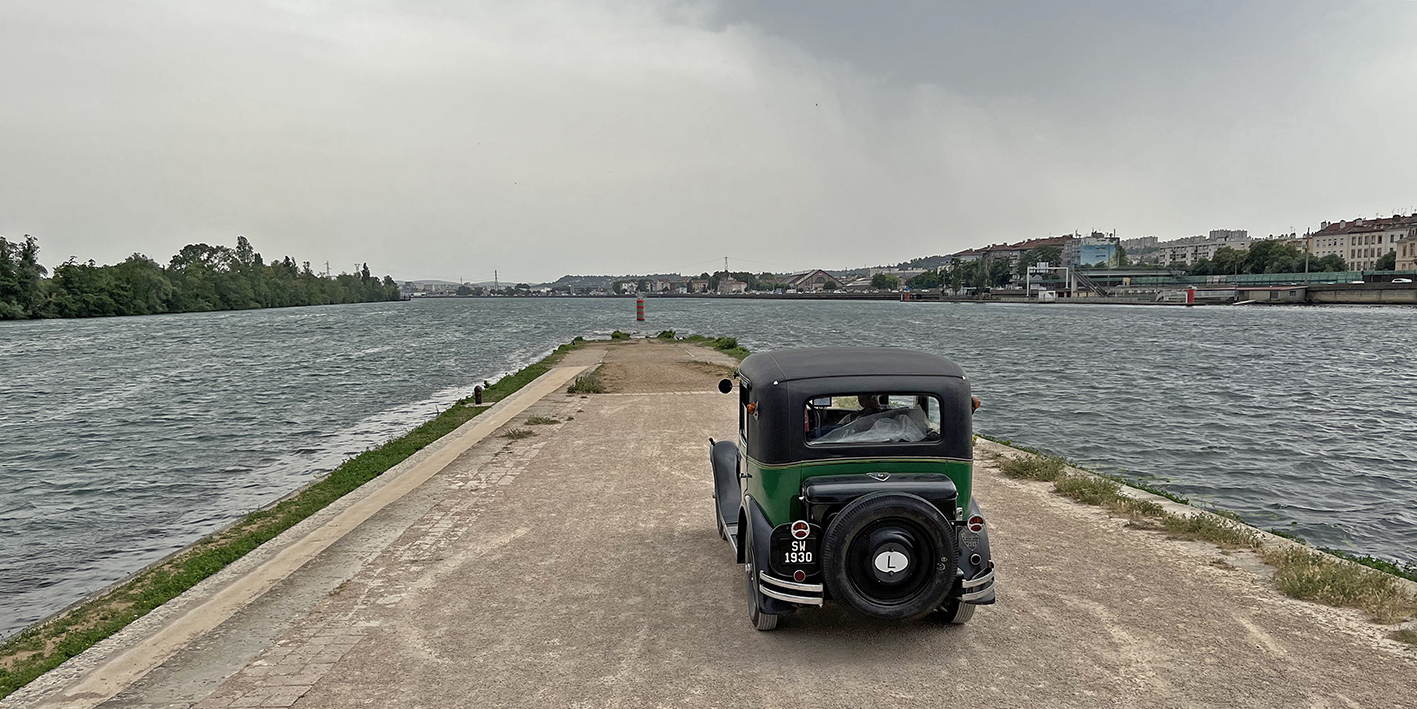 Nous reprenons notre route longeant le Rhône, vers le sud maintenant, direction Méditerranée. À intervalles réguliers, nous croisons les monumentaux ponts suspendus, comme ceux de Chasse (ou de Givors) et d’Andance, tous deux datant du début du 19ème siècle. / We resume our route along the Rhône, heading south now, towards the Mediterranean. At regular intervals, we cross the monumental suspension bridges, such as those of Chasse (or Givors) and Andance, both dating from the beginning of the 19th century.
Nous reprenons notre route longeant le Rhône, vers le sud maintenant, direction Méditerranée. À intervalles réguliers, nous croisons les monumentaux ponts suspendus, comme ceux de Chasse (ou de Givors) et d’Andance, tous deux datant du début du 19ème siècle. / We resume our route along the Rhône, heading south now, towards the Mediterranean. At regular intervals, we cross the monumental suspension bridges, such as those of Chasse (or Givors) and Andance, both dating from the beginning of the 19th century.
À Andance, également, une rue dédiée au couple Ethel et Julius Rosenberg attire mon regard. Je me souviens de leur histoire. Il s’agit d’un couple de new-yorkais communistes arrêtés pour espionnage au profit de l’URSS. Ils sont arrêtés pendant l’été de 1950, jugés coupables un an plus tard et exécutés sur la chaise électrique en juin 1953 dans la prison de Sing-Sing. Jusqu’à ce jour, il n’est pas clair s’il s’agissait d’une erreur judiciaire, mais il est certain qu’ils ont été victimes de la célèbre ‘chasse aux sorcières’ déclenchée par l’infâme sénateur Joseph McCarthy. Étonnant de trouver cet hommage sous forme de plaque de rue sur les bords du Rhône… / In Andance, too, a street dedicated to the couple Ethel and Julius Rosenberg gets my attention. I remember their story. They were a couple of communist New Yorkers arrested for spying for the USSR. They were arrested in the summer of 1950, found guilty a year later and executed by electric chair in June 1953 in Sing-Sing prison. To this day it is not clear if this was a miscarriage of justice, but it is certain that they were victims of the famous ‘witch hunt’ started by the infamous Senator Joseph McCarthy. Surprising to find this tribute in the form of a street sign on the banks of the Rhône…
Nous cherchons une chambre pour la nuit à Tournon-sur-Rhône. Tout est complet à cause de la Fête de la Musique. Sur l’autre rive, à Tain l’Hermitage, ce n’est pas mieux. Nous finissons par trouver quelque chose à Valence, 20 km plus loin. Quand on y arrive, on déchante : c’est en plein dans une sinistre zone industrielle ! Mais nous partageons l’hôtel avec 60 gendarmes : « La Charmante » et nous serons en toute sécurité ! Finalement, nous y passerons une excellente nuit. Demain est un autre jour. Jusqu’où arriverons-nous ? Je commence à avoir confiance : le Rhône est presque ‘dans la poche !’ / We are looking for a place to stay in Tournon-sur-Rhône. Everything is complete because of the Fête de la Musique. On the opposite bank, in Tain l’Hermitage, it is no better. We end up finding something in Valence, 20 km further downstream. When we get there, we are disappointed: it’s smack in the middle of in a sinister industrial area! But we share the hotel with 60 gendarmes: “La Charmante” and we will be safe! Finally, we spend an excellent night there. Tomorrow is another day. How far will we get this time? I’m regaining confidence: the Rhône is almost ‘in the pocket!’
20 juin 2022. Dorches-Bron (160 km) / June 20, 2022. Dorches-Bron (160 km)
Il est encore tôt le matin, lorsque je pars en promenade pour la cascade de la Dorche, dont Philippe m’avait vanté les mérites hier soir. Je passe par les ruines de l’ancien château fort de Dorches, datant du début du 12ème siècle. / It is still early in the morning when I go for a walk towards the Dorche waterfall, which Philippe had recommended to me last night. I pass by the ruins of the old fortified castle of Dorches, dating from the beginning of the 12th century.
La nature est luxuriante, je me croirais dans la forêt vierge ! / Nature is lush, I feel like being in a tropical rain forest!
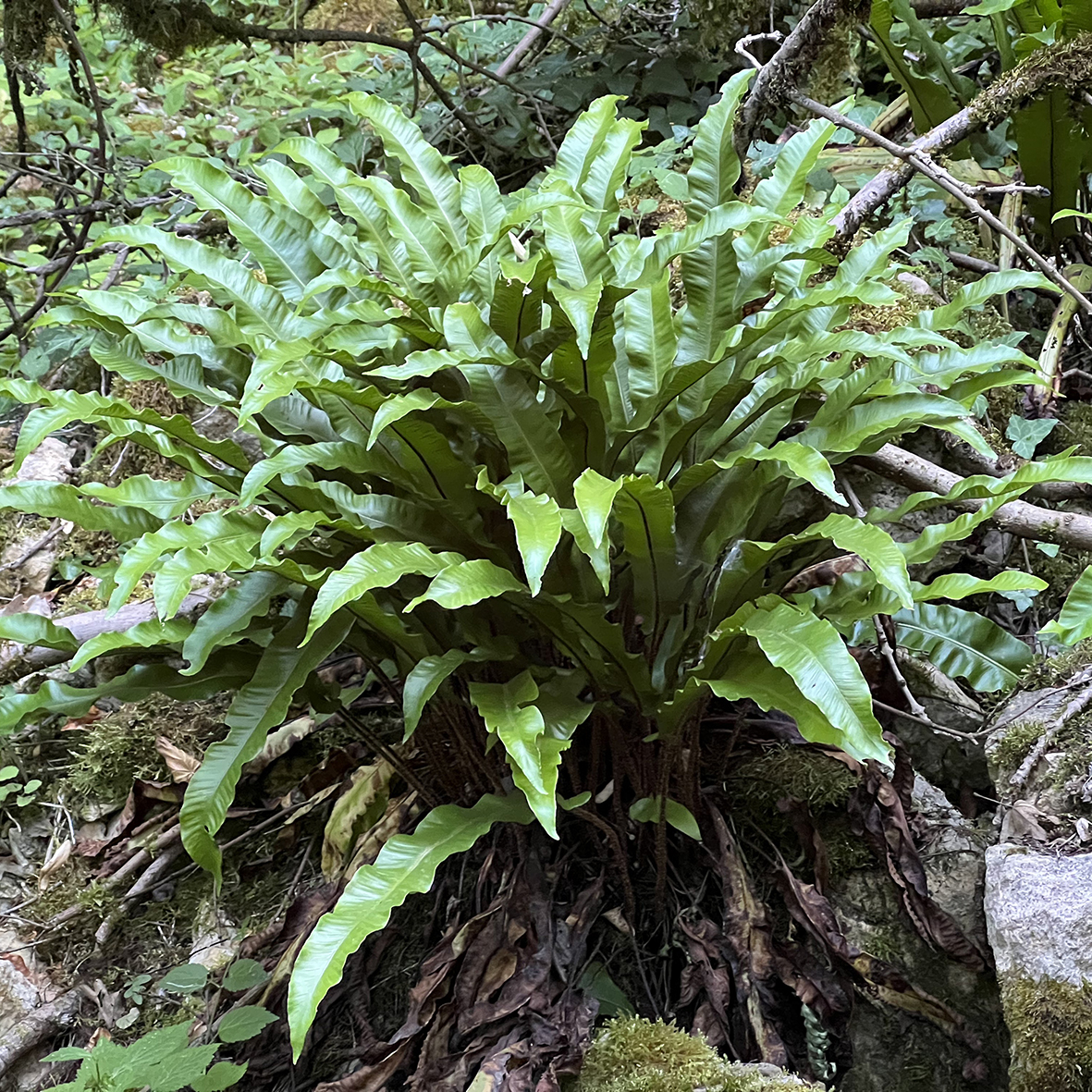 Philippe me rejoint. Heureusement, car je n’aurais jamais trouvé la cascade. La descente est raide et difficile (pour ne pas dire périlleuse), mais une fois sur place, quel enchantement ! / Philippe joins me. Fortunately, because I would never have found the waterfall on my own. The descent is steep and difficult (not to say perilous), but once there, what a delight!
Philippe me rejoint. Heureusement, car je n’aurais jamais trouvé la cascade. La descente est raide et difficile (pour ne pas dire périlleuse), mais une fois sur place, quel enchantement ! / Philippe joins me. Fortunately, because I would never have found the waterfall on my own. The descent is steep and difficult (not to say perilous), but once there, what a delight!
Nous remontons et Philippe m’emmène vers un point de vue qui domine le Rhône. / We climb back up and Philippe takes me to a viewpoint overlooking the Rhône.
Pour remonter de Dorches à la grande route, deux pentes raides que « La Charmante » n’arrive pas à gravir… À deux reprises donc, Marie-Xavier descend de voiture et cela fait juste la différence. Nous filons vers le sud. Aux alentours de Peyrieu, le Rhône coule devant d’impressionnantes falaises. / To go up from Dorches to the main road, we encounter two steep slopes that “La Charmante” cannot climb… Twice, therefore, Marie-Xavier gets out of the car and that just makes the difference. We head south. Around Peyrieu, the Rhône flows past impressive cliffs.
Mes deux charmantes posent pour la photo. Les premières cigales se font entendre : nous progressons vers le Midi ! / My two “charmantes” pose for the picture. The first cicadas make themselves heard: we are progressing towards the South!
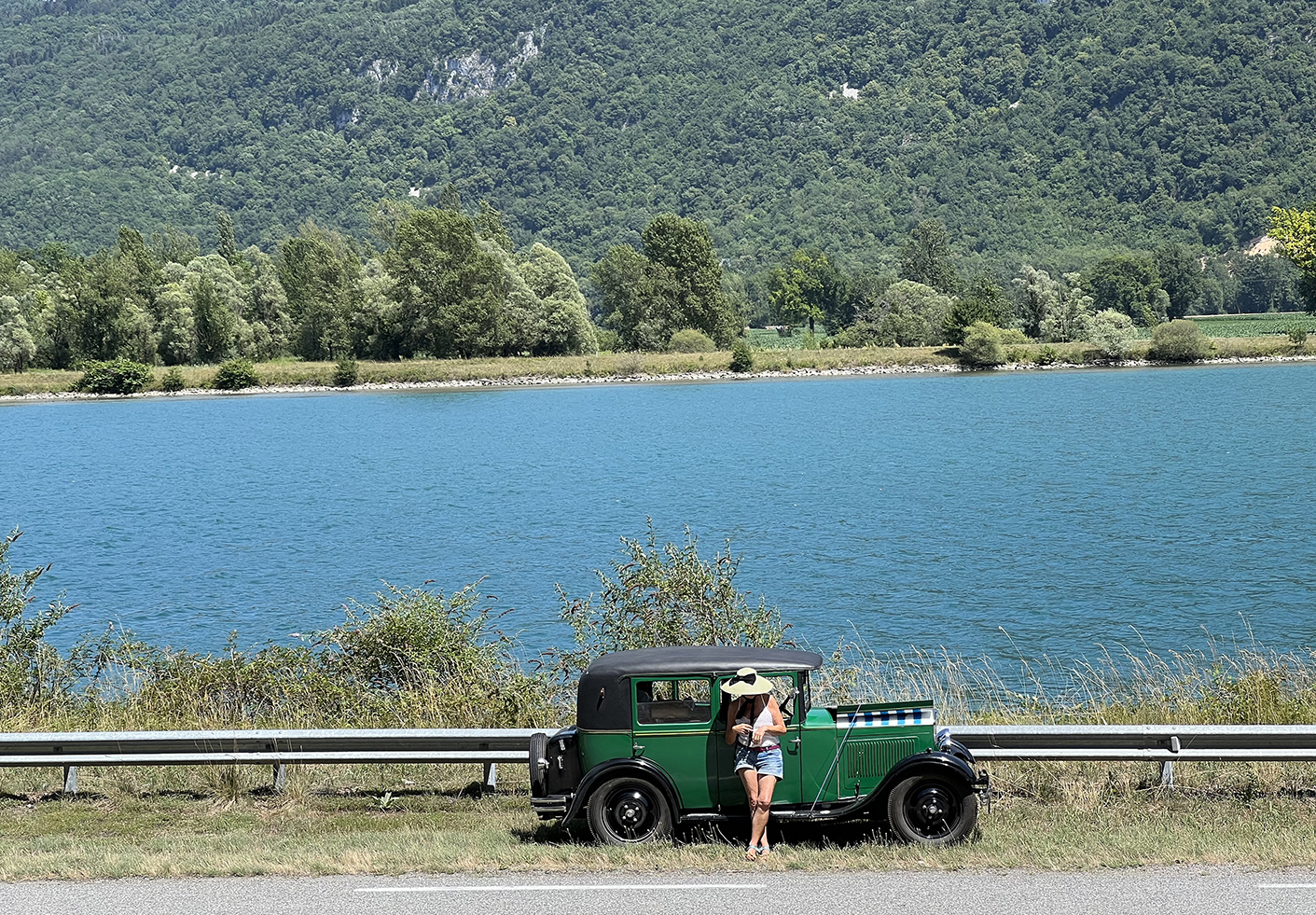
Nous faisons un crochet par ‘La Maison d’Izieu’. Le 6 avril 1944, premier jour des vacances scolaires de Pâques, les troupes de la Gestapo, sous le commandement de Klaus Barbie, y investissent la colonie de vacances et y arrêtent 44 enfants juifs d’origines différentes (Algérie, Allemagne, Autriche, Belgique, France et Pologne) et leurs sept encadrants adultes. La plupart mourront dans les chambres à gaz d’Auschwitz… / We make a detour to ‘La Maison d’Izieu’. On April 6, 1944, the first day of the Easter school holidays, Gestapo troops, under the command of Klaus Barbie, invaded the summer camp there and arrested 44 Jewish children of different origins (Algeria, Germany, Austria, Belgium, France and Poland) and their seven adult supervisors. Most were to die in the Auschwitz gas chambers…
La colonie était dirigée par un couple polonais, Sabine et Miron Zlatin, qui espèrent ainsi éloigner ces enfants juifs du risque d’être raflés. / The colony was run by a Polish couple, Sabine and Miron Zlatin, who hoped to keep these Jewish children out of harm’s way.
Ils seront malgré tout 44, âgés entre 5 et 18 ans, à être pris dans les filets de la Gestapo et périr gazés… / Despite everything, they will be 44, aged between 5 and 18, to be caught in the nets of the Gestapo and perish by gassing…
J’imagine… En voyant les escaliers, j’imagine ces enfants innocents, avant la rafle, monter à l’étage pour y dormir… / I imagine… Seeing the stairs, I imagine these innocent children, before the raid, going upstairs to sleep there…
En voyant le salle de cours, je les imagine, apprendre le français, dessiner, écrire des lettres à leurs parents qu’ils ne reverront jamais, qui ne les reverront jamais… / Seeing the classroom, I imagine them, learning French, drawing, writing letters to their parents who they will never see again, who will never see them again…
En voyant les fenêtres qui donnent sur la nature dehors, je les imagine, rêver du temps d’avant la peur, du temps de la paix à venir… / Seeing the windows that overlook nature outside, I imagine them, dreaming of the time before fear, of the time of peace to come…
En voyant le lavoir, j’imagine le rire des garçons faisant naviguer de petits bateaux confectionnés avec des morceaux de bois… / Seeing the basin, I imagine the laughter of the boys sailing small boats made with pieces of wood…
En regardant vers la vallée, comment ne pas imaginer ces gosses observant le Rhône, au loin, fleuve-espoir, fleuve-liberté, fleuve-paix… / Looking towards the valley, how not to imagine these kids observing the Rhône in the distance, river of hope, river of freedom, river of peace…
Juste en contrebas de la Maison d’Izieu, une ferme aux pignons en escalier typiques de la région. J’imagine que, peut-être, l’un ou l’autre des grands garçons, Théo, 17 ans, ou Arnold, 18 ans, s’y sont rendus pour chercher des œufs ou du lait pour la colonie… / Just below the Maison d’Izieu, a farmhouse with stepped gables typical of the region. I imagine that maybe one or the other of the big boys, Théo, 17, or Arnold, 18, went there to get eggs or milk for the colony…
J’imagine, j’essaie d’imaginer les derniers moments de bonheur de ces enfants. J’essaie, en vain, de ne pas imaginer leur désarroi, loin de leurs parents, leur peur, parce qu’ils savaient le danger. Des images s’imposent : les camions gris bâchés, les soldats armés, les chiens, Barbie surveillant l’opération rondement menée, le sourire en coin… / I imagine, I try to imagine the last moments of happiness of these children. I try, unsuccesfully, not to imagine their distress, far from their parents, their fear, because they knew the danger. Images in my mind: the gray covered trucks, the armed soldiers, the dogs, Barbie supervising the smoothly conducted operation, his crooked smile…
Nous quittons ce lieu de mémoire. Non loin, à Glandieu, une cascade lave un peu ma tristesse et ma colère. / We leave this place of memory. Not far away, in Glandieu, a waterfall somewhat washes away my sadness and my anger.
Sur notre route, qui suit la boucle du Rhône vers le nord-ouest, de petits trésors d’architecture traditionnelle. / On our route, which follows the loop of the Rhône to the northwest, small treasures of traditional architecture.
Parmi les multiples ponts suspendus qui traversent le Rhône, celui de Groslée, datant de 1912. / Among the many suspension bridges that cross the Rhône, that of Groslée, dating from 1912.
Capot ouvert, platanes bordant la route, falaises calcaires… Nous progressons vers l’ouest, direction Lyon. / Hood open, plane trees lining the road, limestone cliffs… We progress towards the west, towards Lyon.
« La Charmante » pose près de la centrale nucléaire du Bugey, mise en service en 1972 (il y a un demi-siècle !). Comme les autres centrales du couloir rhodanien (Saint-Alban, Cruas, Tricastin, Marcoule), elle se sert de l’eau du Rhône comme liquide de refroidissement. De l’énergie propre – pour autant que ça dure… – avec quelles conséquences à long terme ? / “La Charmante” poses near the Bugey nuclear power plant, commissioned in 1972 (half a century ago!). Like the other nuclear plants in the Rhône corridor (Saint-Alban, Cruas, Tricastin, Marcoule), it uses water from the Rhône as coolant. Clean energy – as long as it lasts… – with what long-term consequences?
Nous arrivons à Bron, chez Ghislaine et Marc, plongeurs ‘bio’ qui nous offrent le gite pour la nuit. Un couple chaleureux que nous ne connaissions pas auparavant. Pour une fois, la discussion ne tourne pas autour de notre périple, mais autour de notre amour partagé pour la vie marine… et d’autres sujets. Des inconnus, devenus de véritables amis en une seule soirée ! / We arrive in Bron, at Ghislaine and Marc, divers interested in biology, who offer us shelter for the night. A warm couple that we did not know before. For once, the discussion is not about our journey, but about our shared love for marine life… and other subjects. Strangers, who became real friends in just one evening!
19 juin 2022. Arzier-Dorches (140km) / June 19, 2022. Arzier-Dorches (140km)
Il est temps de poursuivre notre voyage à la découverte du Rhône. Après avoir lavé « La Charmante » des poussières des 3 semaines passées, j’entasse minutieusement nos bagages à l’arrière. / It is time to continue our journey of discovery of the Rhône. After washing « La Charmante » of the dust of the past 3 weeks, I carefully pile our luggage in the back.
(Photo : Julia Deville)
Nous faisons nos adieux à Julia et Michel, et qui nous ont permis de nous reposer pendant quelques jours. Et c’est parti ! Notre route, qui suit le Rhône au plus près, traverse la frontière Suisse-France ou France-Suisse à plusieurs reprises. C’est ainsi que nous passons tout près des laboratoires du CERN (Conseil européen pour la Recherche nucléaire), le plus grand centre de physique des particules du monde. Il dispose de plusieurs accélérateurs de particules, dont le plus grand, LHC, a un diamètre de 27 km et court quelque part sous ses champs de blé près de Ferney-Voltaire. C’est également ici, en dehors de découvertes physiques extraordinaires, que le concept d’Internet est né. / We bid farewell to Julia and Michel, who allowed us to rest for a few days. Off we are! Our route, which follows the Rhône as closely as possible, crosses the Swiss-France or France-Swiss border several times. We pass very close to the laboratories of CERN (European Council for Nuclear Research), the largest particle physics center in the world. It has several particle accelerators, the largest of which, LHC, is 27 km in diameter and runs somewhere under these wheat fields near Ferney-Voltaire. It is also here, apart from extraordinary physical discoveries, that the concept of the Internet was born.
De temps à autre, des rivières se jettent dans le Rhône, comme ici la Laire, près de Chancy. / From time to time, rivers flow into the Rhône, like the Laire here, near Chancy.
Nous traversons le Rhône à plusieurs reprises. / We cross the Rhône several times.
La température grimpe en flèche et atteint les 36°C. Dans notre habitacle, s’y ajoute la chaleur du moteur, ce qui rend le voyage assez pénible. Nous roulons vitres baissées, et capot ouvert pour soulager le moteur. / The temperature soars and reaches 36°C. In our cabin, the heat of the engine is added to it, which makes the trip quite painful. We drive with the windows down and the hood open to relieve the engine.
Nous arrivons au Fort l’Écluse près de Léaz, ouvrage militaire fortifié des 16ème et 17ème siècles, construit à flanc de montagne sur les vestiges de l’ancien château fort des sires de Gex fondé entre 1225 et 1277, connu sous le nom de château de la Cluse de Gex. Modifié profondément vers 1830, son rôle sera de contrôler le défilé de l’Écluse, passage du Rhône en sortie ouest du bassin genevois en France. Des plots rendent impossible l’accès aux voitures, mais ni « La Charmante » ni son chauffeur ne manquent d’imagination ou de culot… / We arrive at Fort l’Écluse near Léaz, a fortified military structure from the 16th and 17th centuries, built on the mountainside on the remains of the old fortified castle of the lords of Gex founded between 1225 and 1277, known as the castle of the Cluse de Gex. Deeply modified around 1830, its role was to control the passage of the Rhône at the western exit of the Geneva basin in France. It is impossible for cars to enter the fort, but neither « La Charmante » nor its driver lack imagination or nerve…
La vue sur le Rhône depuis le fort est imprenable. / The view of the Rhône from the fort is breathtaking.
Quelques kilomètres plus loin et sous la chaleur étouffante, je grimpe au belvédère de Léaz, éperon rocheux culminant à 547 m, avec la statue de la Vierge de Léaz. / A few kilometers further and under the stifling heat, I climb to the belvedere of Léaz, a rocky outcrop culminating at 547 m, with the statue of the Virgin of Léaz.
La magnifique vue vers le Rhône et le Fort l’Écluse (en arrière-plan) valait bien l’effort ! / The magnificent view towards the Rhône and Fort l’Écluse (in the background) was well worth the effort!
Nous descendons vers le barrage-centrale de Génissiat. Créé et géré par la Compagnie nationale du Rhône (CNR), au moment de son inauguration en 1948, le barrage hydroélectrique était le plus important ouvrage d’Europe. / We descend towards the Genissiat power station dam. Created and managed by the Compagnie Nationale du Rhône (CNR), at the time of its inauguration in 1948, the hydroelectric dam was the largest structure in Europe.
La production s’élève à 1,7 milliard de kWh. La retenue s’étend sur 23 km, jusqu’à la frontière suisse, et représente 18 millions de m3 d’eau. Le barrage fournit 11,3 % de la production électrique de la CNR. / Production amounts to 1.7 billion kWh. The reservoir extends over 23 km, up to the Swiss border, and represents 18 million m3 of water. The dam produces 11.3% of CNR’s electricity.
Nous poursuivons notre route. La chaleur est insupportable et nous décidons assez tôt de nous arrêter pour la nuit. Je gare la voiture sur le bas-côté de la route pour nous permettre de chercher un gite via Internet. Une voiture immatriculée à Genève s’arrête alors, avec à son bord un jeune couple. « Vous avez un problème ? On peut vous aider ? » Nous les rassurons. La jeune femme au volant, tignasse blonde de lionne, rajoute : « Vous venez du Luxembourg – moi, j’y suis née ! » Une conversation animée s’engage alors, que nous décidons de poursuivre à Seyssel, en contrebas, autour d’une bière. Voici « La Charmante » sur le pont de la Vierge noire, pont suspendu franchissant le Rhône entre les communes de Seyssel (Ain) et de Seyssel (Haute-Savoie). / We continue our journey. The heat is unbearable and we decide quite early to stop for the night. I park the car on the side of the road to allow us to look for a B&B or hotel via Internet. A car registered in Geneva then stops, with a young couple on board. « You have a problem? Can we help you?” We reassure them. The young woman behind the wheel, with a mop of curly hair, adds: “You come from Luxembourg – I was born there!” A lively conversation then ensued, which we decided to continue in Seyssel, below in the valley, over a beer. Here is “La Charmante” on the Black Virgin Bridge, a suspension bridge crossing the Rhône between the municipalities of Seyssel (Ain) and Seyssel (Haute-Savoie).
Une corneille se repose sur la statue de la Vierge Noire, qui couronne le pilier central du pont. / A crow rests on the statue of the Black Virgin, which crowns the central pillar of the bridge.
Mais à Seyssel, par ce dimanche après-midi de canicule, tout est fermé. Pas de café, pas d’hôtel… Le couple nous propose alors de passer la nuit chez eux, dans le minuscule village de Dorches. Leur maison se situe juste à côté d’un ancien moulin à eau qui utilisait la force de la Dorche, rivière qui a donné son nom au village. / But in Seyssel, on this hot Sunday afternoon, everything is closed. No cafe, no hotel… The couple then suggested that we spend the night at their place, in the tiny village of Dorches. Their house is located right next to an old water mill which used the power of the Dorche, the river which gave its name to the village.
Nous passons la soirée en discutant avec nos hôtes, Héloïse et Philippe. Surprise : Héloïse était élève de l’École européenne du Luxembourg, où j’ai été prof pendant près de trente ans. Plusieurs de ses anciens camarades de classe ont été mes élèves et certains sont devenus mes amis. On appelle en visioconférence Thomas, Stéphane et Laura. Le monde est vraiment petit parfois ! Nous nous endormons, bercés par le murmure du ruisseau, juste sous nos fenêtres. / We spend the evening chatting with our hosts, Héloïse and Philippe. Surprise: Héloïse was a student at the European School of Luxembourg, where I was a teacher for almost thirty years. Several of her former classmates were my students and some have become my friends. We call Thomas, Stéphane and Laura by videoconference. It’s really a small world sometimes! We fall asleep, lulled by the murmur of the stream, just below our windows.
16-18 juin 2022. Arzier-Genève. / June 16-18, 2022. Arzier-Geneva.
Trois jours de repos bien mérité chez nos amis Julia et Michel. / Three days of well-deserved rest with our friends Julia and Michel.
Leur magnifique maison est située à Arzier, dans les hauteurs jurassiennes au-dessus de Nyon. / Their magnificent house is located in Arzier, in the Jura heights above Nyon.
De notre chambre, nous apercevons le lac Léman et au-delà les Alpes, avec le massif su Mont Blanc. / From our room, we see Lake Geneva and beyond the Alps, with the Mont Blanc massif.
Nous profitons de ce séjour pour effectuer une vidange et remplacer le toc de la pompe à eau, qui commençait à faire un bruit désagréable. / We take advantage of this stay to carry out an oil change and replace the toc of the water pump, which was starting to make an unpleasant noise.
Le dernier jour, nous nous rendons à Genève, où le Rhône ressort du lac. Un peu à l’ouest de la ville, à l’endroit appelé ‘La Jonction’, l’Arve, venue de France, se jette dans le Rhône. Alors que les eaux du Rhône, décantées dans le lac, sont cristallines comme celles d’une mer tropicale, celles de l’Arve descendent directement du glacier de la mer de glace à Chamonix et sont très chargées en sédiment. Les eaux du Rhône, réchauffées par leur long séjour à la surface du Léman, contrastent aussi thermiquement avec celles de l’Arve qui ont encore gardé la fraîcheur alpine. / On our last day, we travel to Geneva, where the Rhone emerges from the lake. A little to the west of the city, at a place called ‘La Jonction’, the Arve, coming from France, flows into the Rhône. While the waters of the Rhône, decanted into the lake, are crystalline like those of a tropical sea, those of the Arve descend directly from the Mer de Glace glacier in Chamonix and are heavily loaded with sediment. The waters of the Rhône, warmed by their long stay on the surface of Lake Geneva, also contrast thermally with those of the Arve which have still retained their alpine freshness
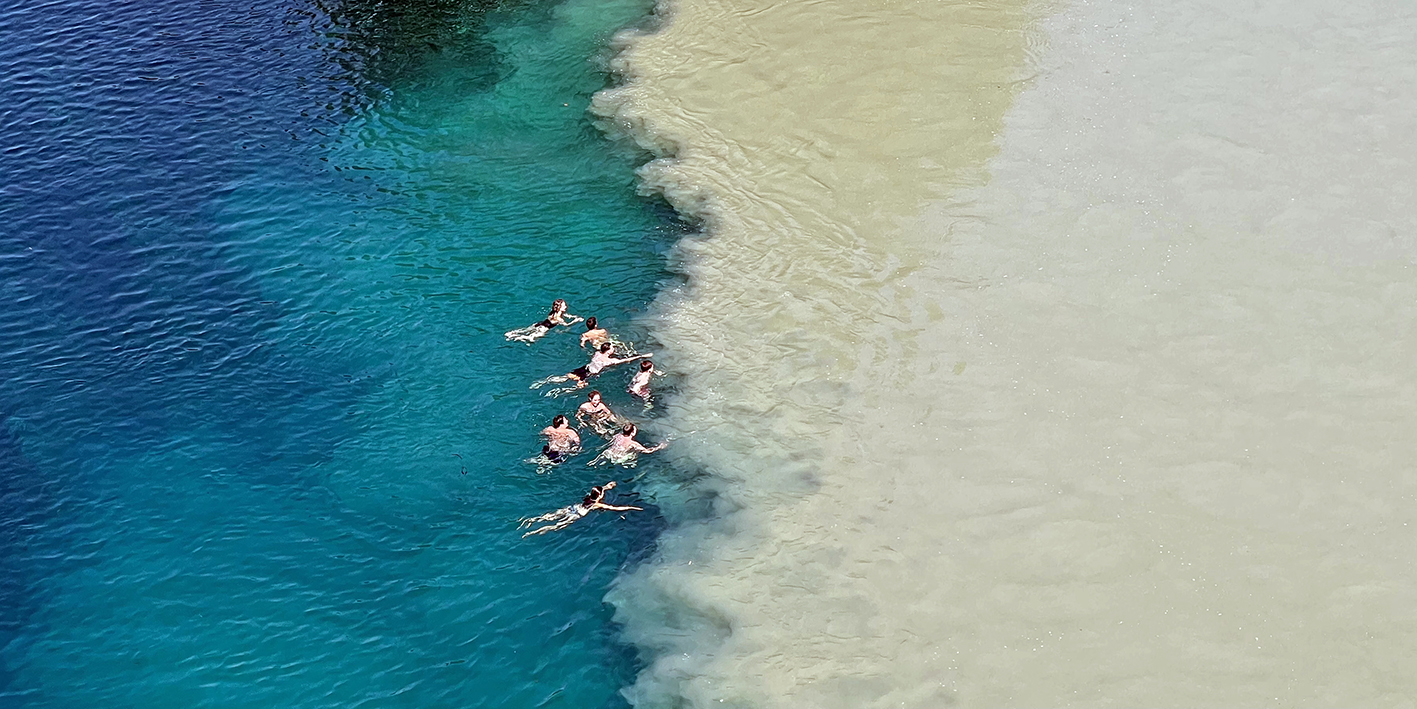 Suite à la Première Guerre Mondiale, après la fondation de la Société des Nations (SDN) en 1920, Genève fut choisie comme siège de l’organisation en raison des traditions diplomatiques propres à la ville. Nous passons devant le Palais des Nations, qui hébergea la SDN jusqu’en 1946, puis, après sa dissolution, l’Organisation des Nations unies. En 1966, le palais devient le siège européen des Nations unies, le second plus important de l’organisation après le siège de l’ONU à New York. Chaque année, le quartier général genevois des Nations unies accueille environ 8 000 réunions dont près de 600 grandes conférences. / Following the First World War, after the founding of the League of Nations (SDN) in 1920, Geneva was chosen as the headquarters of the organization because of the city’s diplomatic traditions. We pass in front of the Palais des Nations, which housed the League of Nations until 1946, then, after its dissolution, the United Nations. In 1966, the palace became the European headquarters of the United Nations, the second most important of the organization after the UN headquarters in New York. Each year, the Geneva headquarters of the United Nations hosts approximately 8,000 meetings, including some 600 major conferences.
Suite à la Première Guerre Mondiale, après la fondation de la Société des Nations (SDN) en 1920, Genève fut choisie comme siège de l’organisation en raison des traditions diplomatiques propres à la ville. Nous passons devant le Palais des Nations, qui hébergea la SDN jusqu’en 1946, puis, après sa dissolution, l’Organisation des Nations unies. En 1966, le palais devient le siège européen des Nations unies, le second plus important de l’organisation après le siège de l’ONU à New York. Chaque année, le quartier général genevois des Nations unies accueille environ 8 000 réunions dont près de 600 grandes conférences. / Following the First World War, after the founding of the League of Nations (SDN) in 1920, Geneva was chosen as the headquarters of the organization because of the city’s diplomatic traditions. We pass in front of the Palais des Nations, which housed the League of Nations until 1946, then, after its dissolution, the United Nations. In 1966, the palace became the European headquarters of the United Nations, the second most important of the organization after the UN headquarters in New York. Each year, the Geneva headquarters of the United Nations hosts approximately 8,000 meetings, including some 600 major conferences.
Juste devant le Palais se dresse une sculpture en bois représentant une chaise géante (12 m de haut) avec un pied arraché. ‘Broken Chair’, œuvre de l’artiste Daniel Berset. Propriété de ‘Handicap International’, elle a pour but d’interpeler les diplomates du monde entier, ainsi que le grand public, sur le problèmes des mines antipersonnel et des armes à sous-munitions. / Just in front of the Palace stands a wooden sculpture representing a giant chair (12 m high) with a torn off leg. ‘Broken Chair’, work by artist Daniel Berset. Owned by ‘Handicap International’, it aims to challenge diplomats around the world, as well as the general public, on the problems of anti-personnel mines and cluster munitions.
Ensuite nous nous rendons au Léman, où le Rhône renait de son long séjour dans le lac. Malgré la chaleur écrasante, je continue ma documentation le long du fleuve. / Then we go to Lake Geneva, where the Rhône is reborn after its long stay in the lake. Despite the crushing heat, I continue my documentation along the river.
(Photo : Julia Deville)
Un pianiste joue du boogie-woogie, avec en arrière-plan le célèbre jet d’eau de Genève. Cette attraction touristique a une longue histoire. Au 19ème siècle, la ville de Genève décide de construire une usine hydraulique, mise en service le 17 mai 1886. Elle a pour mission de distribuer la force motrice du Rhône aux artisans genevois. Le soir, quand ces artisans arrêtent leurs machines, il se produit des surpressions. On met alors en œuvre une vanne de sécurité, qui permet de contrôler la pression en laissant s’échapper vers le ciel l’eau en surpression. De nos jours, il s’agit uniquement d’un jet d’eau ‘pour faire joli’, qui lance l’eau du Rhône à 130 m de haut. / A pianist plays boogie-woogie, with Geneva’s famous Jet d’Eau in the background. This tourist attraction has a long history. In the 19th century, the city of Geneva decided to build a hydraulic plant, commissioned on May 17, 1886. Its mission was to distribute the driving force of the Rhône to Geneva craftsmen. In the evening, when these craftsmen stopped their machines, overpressure occurred. A safety valve was then implemented, which made it possible to control the pressure by letting the overpressured water escape towards the sky. Nowadays, it is only an ornamental water jet, which launches water from the Rhône at a height of 130 m.
Partout sur la surface du lac des oiseaux aquatiques : cygnes, canards colvert et canards à bec rouge, grèbes, cormorans, foulques… / Waterfowl everywhere on the surface of the lake: swans, mallards and red-billed ducks, grebes, cormorants, coots…
Le Rhône écoule paisiblement ses eaux cristallines au pied d’anciens immeubles. / The Rhône peacefully flows its crystalline waters at the foot of old buildings.
Au Pont de la Machine, où jadis on se servait de la force du Rhône pour pomper l’eau vers les fontaines, subsistent encore des engrenages impressionnants. C’est de l’horlogerie suisse, taille XXL ! / At the Pont de la Machine, where once the force of the Rhône was used to pump water to the fountains, there are still impressive gears. It’s Swiss watchmaking, king size!
Julia et Marie-Xavier apportent une touche bleue à la vieille ville. / Julia and Marie-Xavier bring a blue touch to the old town.
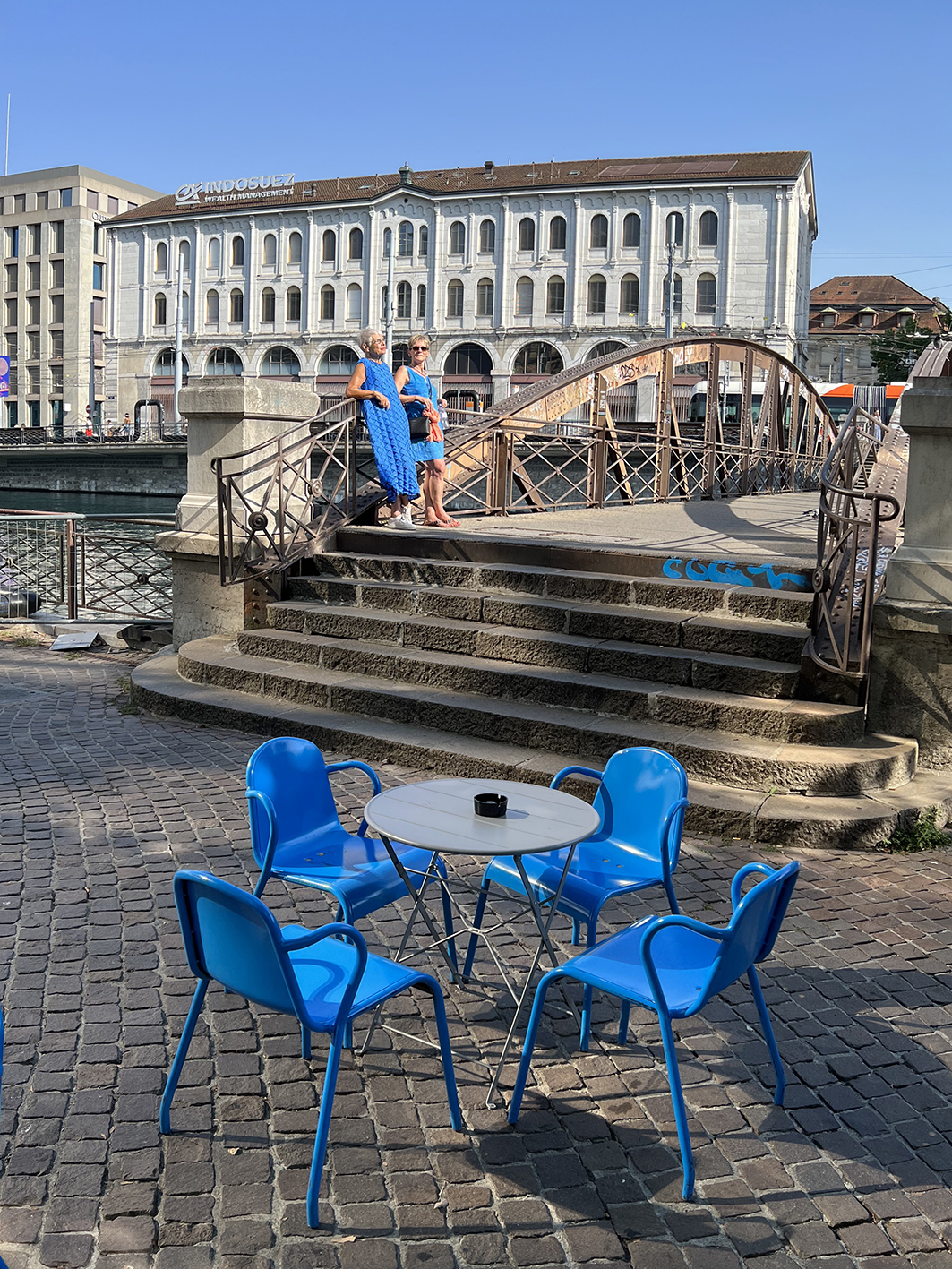 Pour clôturer cette journée, nous embarquons sur le ‘Savoie’, l’un des bateaux à vapeur de la belle époque, entretenue par la CGN (officiellement ‘Compagnie générale de navigation sur le lac Léman’). Nous sommes accueillis par son capitaine. / To end this day, we embark on the ‘Savoie’, one of the steamboats of the Belle Epoque, maintained by the CGN (officially ‘Compagnie générale de navigation sur le lac Léman’). We are welcomed by its captain.
Pour clôturer cette journée, nous embarquons sur le ‘Savoie’, l’un des bateaux à vapeur de la belle époque, entretenue par la CGN (officiellement ‘Compagnie générale de navigation sur le lac Léman’). Nous sommes accueillis par son capitaine. / To end this day, we embark on the ‘Savoie’, one of the steamboats of the Belle Epoque, maintained by the CGN (officially ‘Compagnie générale de navigation sur le lac Léman’). We are welcomed by its captain.
Nous sortons du port de Genève en longeant le phare au bout de la jetée. / We leave the port of Geneva along the lighthouse at the end of the pier.
Une barque du Léman typique passe devant le jet d’eau. / A typical Lake Geneva boat passes in front of the water jet.
La coque des bateaux à roue à aube a des lignes caractéristiques. / The hull of paddle wheel boats has characteristic lines.
À l’intérieur toute la décoration est restée inchangée (ou a été restaurée) depuis la belle époque. / Inside, all the decoration has remained unchanged (or has been restored) since the Belle Époque.
Le plus fascinant, pour moi, est la machine à vapeur deux cylindres, qui fonctionne encore comme une horloge (suisse !) après plus d’un siècle de service. Les bielles et l’arbre à cames sont gigantesques. / Most fascinating, for me, is the two-cylinder steam engine, which still runs like a (Swiss!) clock after more than a century of service. The connecting rods and the camshaft are gigantic.
On ne se rend compte de leurs dimensions que lorsque les mécaniciens font leur travail. / One only realizes their dimensions when the mechanics do their job.
Le métal de toute la machinerie et des commandes est rutilant : acier, bronze, laiton, cuivre, comme au premier jour. / The metal of all the machinery and controls is gleaming steel, bronze, brass, copper, as on the first day.
Il y a des écrous géants qui doivent peser plusieurs kilos ! There are giant nuts that must weigh several pounds!
Je tire mon chapeau à ceux qui assurent la maintenance ! / I take my hat off to those who provide maintenance!
Entretemps, notre bateau a glissé du côté français du lac. Voici le château d’Yvoire. / In the meantime, our boat slipped on the French side of the lake. Here is the castle of Yvoire.
Au beau milieu du lac, nous croisons un autre bateau à vapeur de la flotte, le ‘Rhône’, symbole de la deuxième partie de notre grand voyage. / Right in the middle of the lake, we pass another steamer of the fleet, the ‘Rhône’, symbol of the second part of our great voyage.
À chaque escale, des jeunes attendent le départ du bateau pour pouvoir sauter dans les eaux bouillonnantes de notre sillage. / At each stopover, young people await the departure of the boat so that they can jump into the boiling waters in our wake.
Le soir tombe sur les rives du lac lors de notre retour vers Genève. / Evening falls on the shores of the lake on our return to Geneva.
À bord, les passagers admirent la vue ou discutent. Certains commandent un dernier verre de vin valaisan. / On board, passengers admire the view or have a chat. Some order a last glass of Valais wine.
Une longue, chaude et belle journée s’achève. / The end of a long, hot and beautiful day.
15 juin 2022. Les Agettes-Arzier (184 km) / June 15th, 2022. Les Agettes-Arzier (184 km)
Nous redescendons dans la vallée du Rhône, et pendant un bon moment nous roulons bien au-dessus des avions qui décollent ou atterrissent à l’aéroport de Sion, où se côtoient les vols civils et les vols militaires. À Martigny, nous nous rendons à la Fondation Pierre Gianadda, où se tient une merveilleuse exposition de l’un des plus grands photographes de tous les temps : Henri Cartier-Bresson. / We descend into the Rhone Valley, and for a good while we drive well above the planes taking off or landing at Sion airport, where civilian flights and military flights rub shoulders. In Martigny, we go to the Pierre Gianadda Foundation, where a wonderful exhibition of one of the greatest photographers of all time is being held: Henri Cartier-Bresson.
Outre ses photos, des citations du photographe ornent les murs. Je souscris à toutes, mais particulièrement à celle-ci : / Besides his photos, quotes from the photographer adorn the walls. I agree with all of them, but especially this one:
Le musée contient également une belle collection d’automobiles anciennes rares, dont beaucoup de marques suisses aujourd’hui disparues. / The museum also contains a fine collection of rare vintage automobiles, many of which are now extinct Swiss brands.
À Martigny, le Rhône, qui coulait vers le sud-ouest, change de direction pour prendre une direction nord-ouest. À Saint-Maurice, en face du château éponyme datant du 15ème siècle, des ponts d’autoroute enjambent le fleuve. / At Martigny, the Rhône, which was flowing southwest, changes direction to take a northwesterly direction. In Saint-Maurice, opposite the eponymous castle dating from the 15th century, motorway bridges span the river.
Nous perdons de vue le Rhône, qui se jette dans le lac Léman (aussi appelé lac de Genève). Avec ses 580 km2 (73 km de long sur 14 km de large) et sa profondeur maximale de 310 m, c’est l’un des plus grands lacs d’Europe. Il est alimenté à 75% par le Rhône, que nous ne reverrons pourtant qu’à partir de Genève, qui est encore loin. Les rives du lac sont presque entièrement occupées par l’activité humaine, dont les vignobles sur les coteaux, comme ici à Villeneuve. / We lose sight of the Rhône, which flows into Lake Geneva. With its 580 km2 (73 km long by 14 km wide) and its maximum depth of 310 m, it is one of the largest lakes in Europe. It is for 75% fed by the Rhône, which we will only see again from Geneva, which is still far away. The shores of the lake are almost entirely occupied by human activity, including vineyards on the hillsides, as here in Villeneuve.
C’est à Villeneuve également que nous déjeunons au bord du lac, survolés par des parapentistes qui se prennent pour des oiseaux, alors qu’à nos pieds des oiseaux se prennent pour des bateaux. / It is also in Villeneuve that we have lunch by the lake, overflown by paragliders who think they are birds, while at our feet birds think they are boats.
Il y a de vrais bateaux également, dont le célèbre « Italie » de la Compagnie générale de Navigation sur le lac Léman (CGN). C’est un bateau à vapeur à roues à aubes, mis en service le 1er juin 1908, et classé monument historique. / There are also real boats, including the famous “Italie” of the Compagnie Générale de Navigation sur le lac Léman (CGN). It is a steamer with paddle wheels, put into service on June 1, 1908, and classified as a historical monument.
Afin de trouver un endroit pour photographier le château de Chillon vieux de plus de mille ans, « La Charmante » emprunte un chemin escarpé. / In order to find a place to photograph the castle of Chillon, which is more than a thousand years old, “La Charmante” has to climb a steep street.
Autoroute et chemin de fer ne permettent pas de garer la voiture près du château. Je fais un arrêt furtif sur le parking des trolleys, qui déversent des flots de touristes. / Motorway and railway do not allow to park the car near the castle. I make a quick stop in the parking lot of the trolleys, which are pouring out crowds of tourists.
Montreux, Vevey, Lausanne… une succession de feux rouges, de ronds-points, de passages piétons. On s’arrête et on redémarre mille fois, sous une chaleur accablante. On regrette déjà les Alpes ! À Morges, « La Charmante » pose au bord de l’eau. Elle me fait penser à Ursula Andress dans le premier film de James Bond, « Dr. No » ! Pas étonnant : après tout, Ursula était Suissesse… / Montreux, Vevey, Lausanne… a succession of red lights, roundabouts, pedestrian crossings. We stop and restart a thousand times, in overwhelming heat. We already miss the Alps! In Morges, “La Charmante” poses at the water’s edge. She reminds me of Ursula Andress in the first James Bond movie, « Dr. No »! No wonder: after all, Ursula was Swiss…
Nous voulons prendre le thé chez nos amis François et Simone (ma copilote de Moscou à Saint-Pétersbourg avec « La Petite » en 2011 et à Saint-Marin avec « Mini » en 2015), qui habitent dans les vignobles à Bougy-Villars. Un pont, très abrupte, permet de passer au-dessus de l’autoroute. Dans la petite montée très raide, soudain, dans un hoquet, « La Charmante » rend l’âme… Je redescends en roue libre en arrière, me gare comme je peux, et ouvre le capot. Une voiture s’arrête. Son conducteur, émerveillé, n’arrête pas de faire des photos de nous trois. Il propose, cependant, de nous montrer un chemin avec moins de montées raides pour nous conduire chez nos amis. Entretemps, notre « Capricieuse » a bien voulu redémarrer. Que s’est-il passé ? Une petite saleté dans le carburateur ? Nous repartons derrière la voiture d’Olivier. Et là, juste après un virage : plouf ! elle s’arrête net à nouveau. Les voitures surgissent à une vitesse ahurissante. Je place un triangle de signalisation sur la route pour prévenir les automobilistes, qui est aussitôt percuté par un scooter et cassé en morceaux, sans que le conducteur s’arrête. Merci ! Je suis persuadé qu’il s’agit d’un problème d’alimentation. Sur le bord de la route, je démonte le carburateur, sans voir ce qui pourrait clocher. Entretemps, Simone et François, avertis par téléphone, nous rejoignent. « La Charmante » redémarre et nous arrivons enfin chez nos amis. Quand nous repartons de chez eux, nous passons par une rue dont le nom nous fait frémir : Chemin de la Fin… Est-ce que ce nouveau caprice de notre vieille voiture annonce en effet la fin de l’aventure là où on ne l’attendait plus ? / We want to have tea with our friends François and Simone (my co-pilot from Moscow to Saint Petersburg with “La Petite” in 2011 and in San Marino with “Mini” in 2015), who live in the vineyards of Bougy-Villars. A very steep bridge leads over the highway. In the short, very steep climb, suddenly, in a hiccup, “La Charmante” gives up… I roll down backwards in freewheel, park as swell as I can, and open the hood. A car stops. Its driver, amazed, keeps taking pictures of the three of us. He offers, however, to show us a path with fewer steep climbs to lead us to our friends. In the meantime, our « Charmante » was kind enough to restart. What happened? A little dirt in the carburetor? We leave behind Olivier’s car. And there, just after a bend: blam! it stops dead again. Cars are speeding by at a bewildering speed. I place a warning triangle on the road to warn motorists, which is immediately hit by a scooter and broken into pieces, without the driver stopping. Thanks! I’m sure our problem a power supply issue. On the side of the road, I disassemble the carburetor, without seeing what could be wrong. Meanwhile, Simone and François, warned by telephone, join us. “La Charmante” restarts and we finally arrive at our friend’s place. When we leave their home, we pass by a street whose name makes us shudder: Chemin de la Fin (Path of the End)… Does this new whim of our old car indeed announce the end of the adventure where we didn’t expect it anymore?
Nous passons par les vignes pour nous rendre chez un autre couple d’amis, où nous comptons passer la nuit. / We drive through the vineyards to go to another couple of friends, where we plan to spend the night.
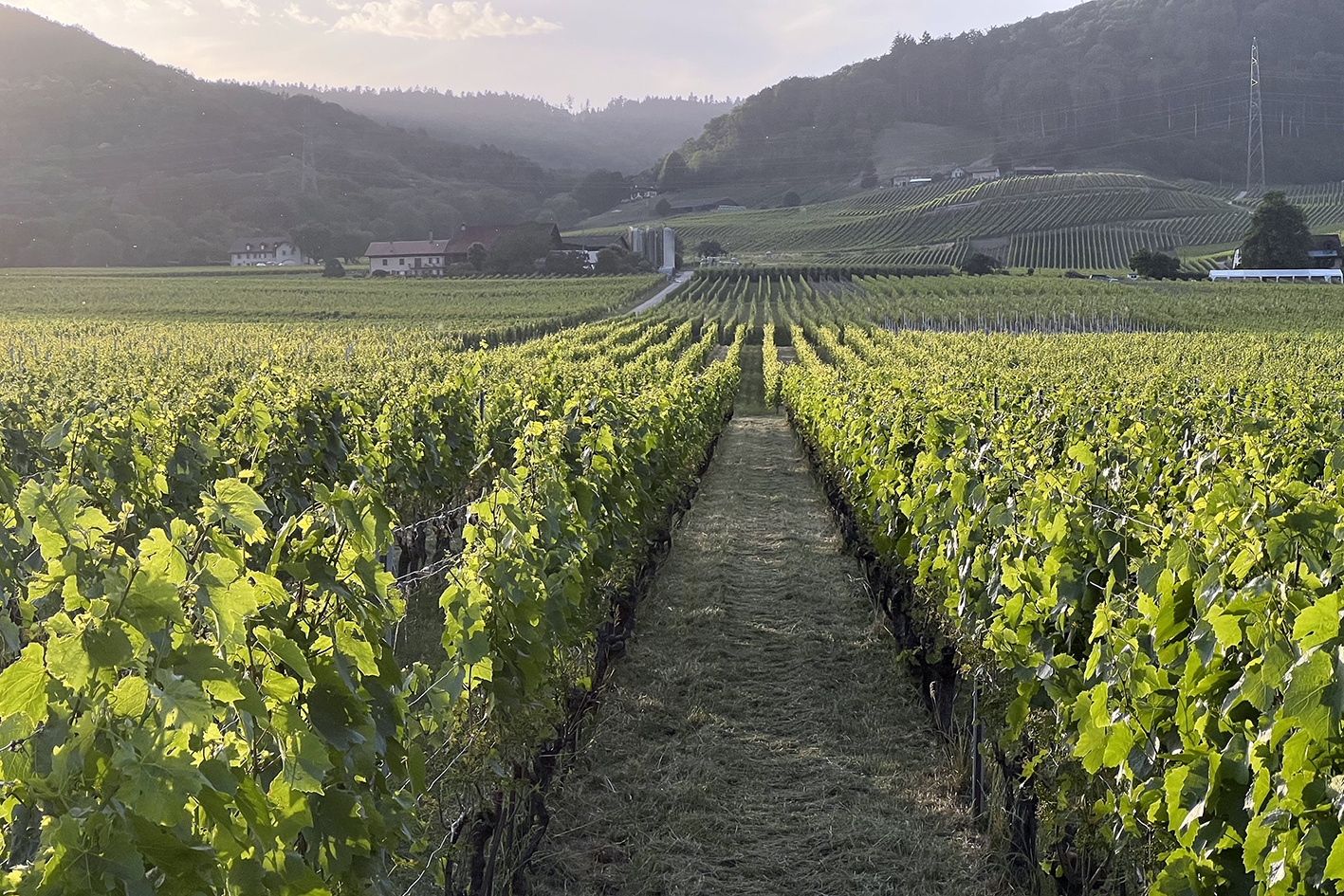 Julia et Michel habitent une superbe maison dans les contreforts du Jura, surplombant le lac Léman, avec vue sur le Mont Blanc (par beau temps). Mais profiter de cette vue, ça se mérite : la pente qui mène au village d’Arzier-Le Muids est extrême. Première vitesse et capot ouvert obligatoires, et malgré cela, à cause du canicule, nous devons faire plusieurs arrêts pour permettre au moteur de refroidir. La dernière montée, juste devant la maison, est encore plus escarpée que la route, et… « La Charmante » cale une fois de plus. Mais qu’est-ce qu’elle a donc ? Retrouvailles chaleureuses avec nos amis. Lorsque nous nous couchons, la pleine lune s’est levée sur le lac. / Julia and Michel live in a superb house in the foothills of the Jura, overlooking Lake Geneva, with a view of Mont Blanc (weather permitting). But enjoying this view comes at a price: the slope leading to the village of Arzier-Le Muids is extreme. First gear and open bonnet are compulsory, and despite this, because of the heat wave, we have to make several stops to allow the engine to cool down. The last climb, just in front of the house, is even steeper than the road, and… “La Charmante” stalls once again. But what does she have? It is good to see our friends again. When we go to bed, the full moon has risen over the lake.
Julia et Michel habitent une superbe maison dans les contreforts du Jura, surplombant le lac Léman, avec vue sur le Mont Blanc (par beau temps). Mais profiter de cette vue, ça se mérite : la pente qui mène au village d’Arzier-Le Muids est extrême. Première vitesse et capot ouvert obligatoires, et malgré cela, à cause du canicule, nous devons faire plusieurs arrêts pour permettre au moteur de refroidir. La dernière montée, juste devant la maison, est encore plus escarpée que la route, et… « La Charmante » cale une fois de plus. Mais qu’est-ce qu’elle a donc ? Retrouvailles chaleureuses avec nos amis. Lorsque nous nous couchons, la pleine lune s’est levée sur le lac. / Julia and Michel live in a superb house in the foothills of the Jura, overlooking Lake Geneva, with a view of Mont Blanc (weather permitting). But enjoying this view comes at a price: the slope leading to the village of Arzier-Le Muids is extreme. First gear and open bonnet are compulsory, and despite this, because of the heat wave, we have to make several stops to allow the engine to cool down. The last climb, just in front of the house, is even steeper than the road, and… “La Charmante” stalls once again. But what does she have? It is good to see our friends again. When we go to bed, the full moon has risen over the lake.
Au beau milieu de la nuit, je trouve la cause probable de nos pannes récentes : le réservoir n’est pas assez plein. Dans le plat, l’essence arrive encore au carburateur, mais trop incliné, il doit y avoir de l’air qui passe dans le tuyau, ce qui cause nos pannes sèches. Si c ‘est le cas, il me suffira de refaire un plein et d’éviter de trop attendre avant de faire le suivant. Nous le saurons bientôt. / In the middle of the night, I find the probable cause of our recent breakdowns: the tank is not full enough. In the flat, the gasoline still reaches the carburetor, but too tilted, there must be air passing through the pipe, which causes the engine to stall. If this is the case, I will just have to fill her up again and avoid waiting too long before filling up again. We will find out soon.

